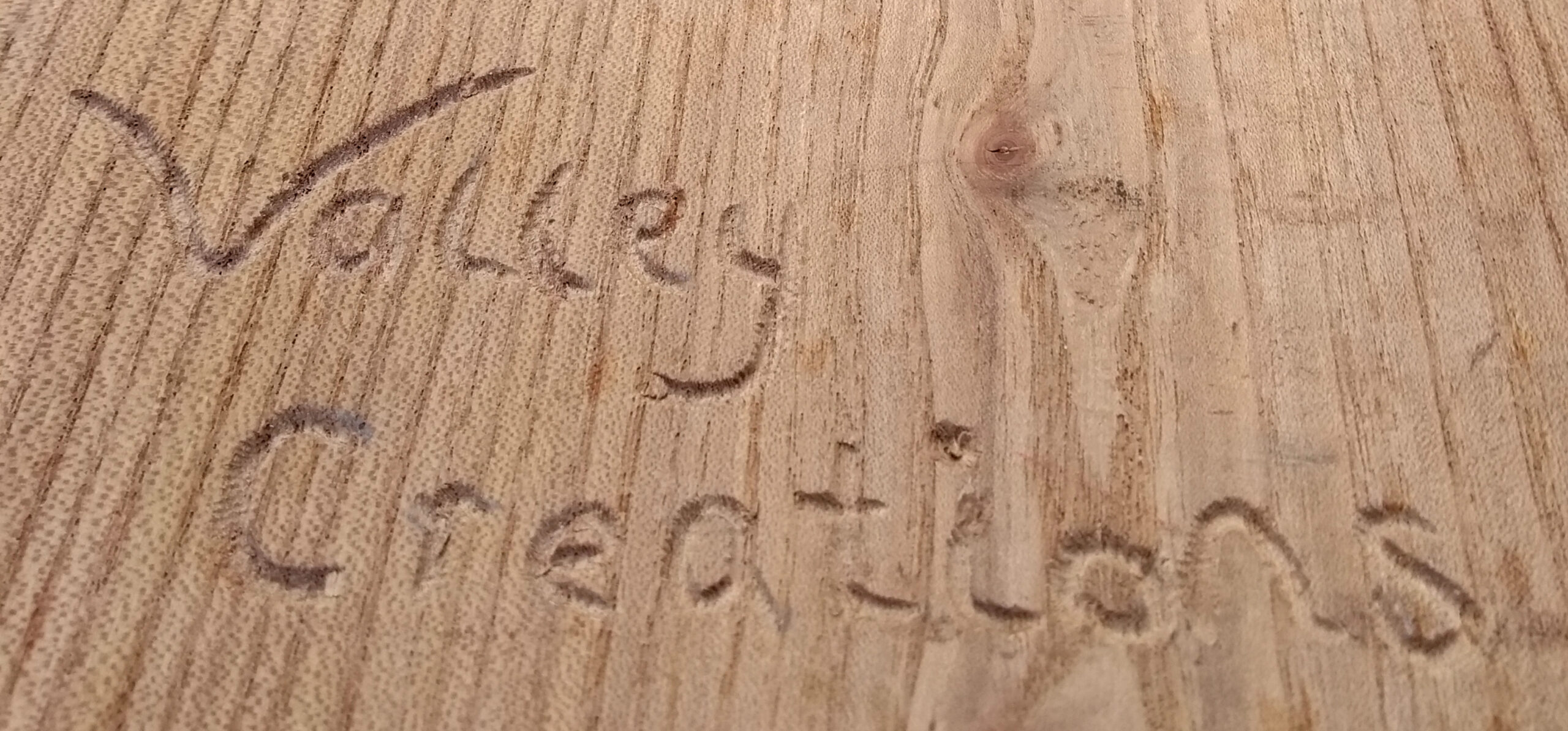- Acrylic as Watercolour
Last night we had a session at Shelley Art Group with Anthony Barrow.
He was very inspiring but threw a lot of information at us while painting rapidly. I work fast and free mostly but had to stop trying to take in every word to concentrate on transferring the ideas to the work. I thought I’d write what I learned and combine it with my own experiences to help others gain more from the possibilities in the techniques.
Thanks Anthony and also Sally for arranging the session.
This is what he produced as he talked, from a very small photo of the Langdale Pikes :
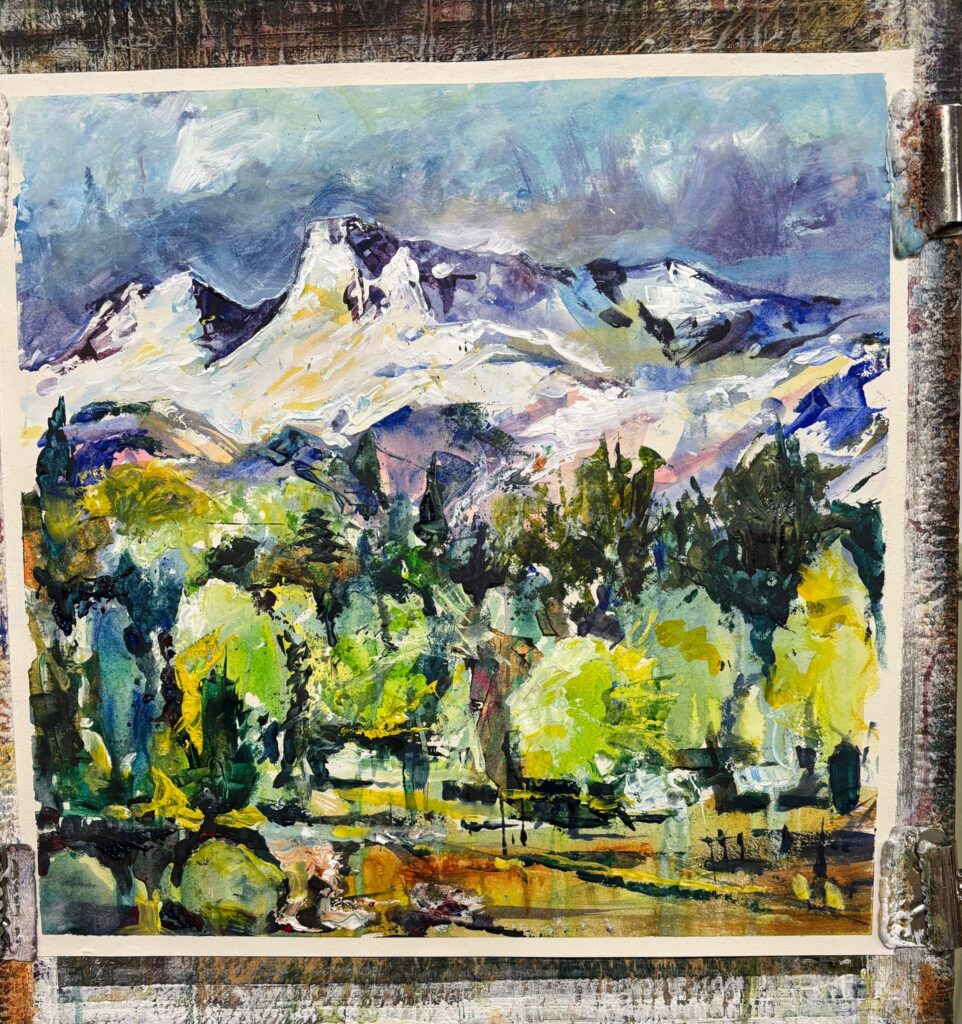
Let’s start with what we were painting on. Like Anthony I used 1400 grade lining paper taped to a board to reduce the curl as it got wet. You could stretch the paper beforehand by taping it down when wet. This would help the surface stay flat through the painting process. Mine still buckled a bit but is straight this morning. One advantage of the lining paper is that it is not brilliant white. So while the paper colour shows through with the wet on wet technique he used, it already has a warmer feel to it. Using acrylic you can then add white later if needed, either as as a wet in wet mix or a less transparent layer when dry. He also specified a reasonably large piece of paper. This is important to stop yourself getting trapped in detail and it also reduces the risk factor of over watering in wet on wet. You can scale down once you’ve become happier with the skills.
Next came sketching in the key shapes that are more important to get right. Using a colour that is part of the mix you want to end up with works well as many sketching mediums can interfere a bit, especially with wet on wet. When Heather Burton was doing the palette knife session she sketched the basic colour areas rather than detailed shapes, as she was using the paint in a different, undiluted, way. She knew that she could add detail later as the paint dried. Incidently Heather still uses thin layer with some transparency even with the palette knife, keeping the surface smooth to help adding upper layers. Because of the thicker paint and faster drying, it is also possible for her to scrape off areas of the upper layer to reveal more of the lower one.
What about that wet on wet technique? It’s scary isn’t it? It is easy to feel out of control but it tends to create smoother colour transitions. You also end up with nice thin transparent layers that you can then add on top of later. It is even possible to do that with water colour. Just make sure you have cloths or paper towels ready to dab off the worst mistakes and remember that with acrylic you can completely paint over the top later.
I’m not going to talk much about colour. Anthony was repeating for us the lesson of Jo’s session a couple of weeks ago. You can achieve a whole rich array of possibilities from a limited range of tubes or pots. Like all trained artists he obviously knows and indeed feels what different tubes can do in terms of warmth and transparency. It is hard to build up that knowledge, but starting with a limited range and experimenting helps. You can then add extras as you realise that a particular tube just adds something you want. Greens are particularly tricky.
Another little snippet Anthony said to me was that most people have trouble with foregrounds. It is not completely true, but in landscapes the foreground is often there just to look past. Unless it has something that you particularly want to come out in detail, a relaxed and sketchy approach to the foreground often works. Of course, unless you are way more naturally talented than I am, getting sketchy to still look true takes practice.
This is what I produced on the night. I’m a fairly literal person sometimes and like to respect the landscape I’m painting. From the photograph I was confused about the area in the middle, below the highest peak. As Wayne and I have climbed in that area, this niggled. Back home I found another picture and realised it was actually the area of rock on which we’d climbed, so that had to change. Next I realised that I had produced a misshapen version of the rocky middle right. One of the advantages of acrylic is that it is often easier to overpaint, if you haven’t gone overboard on texture. That bit got adjusted too. I decided that the picture we had been given was actually an amazing evening light, rather than a snow covering, so I adjusted accordingly. I also hardened up the mountain tops, that had been left blurred by the wet on wet. a few other little corrections and then finally I went back to that foreground. I decided to introduce a hint of another landscape layer nearer the viewer to add further depth and to balance the colours with the mountain shadows. I’m happier and have given it a single coat of varnish to bring out the colours. I’m finished now…. perhaps.
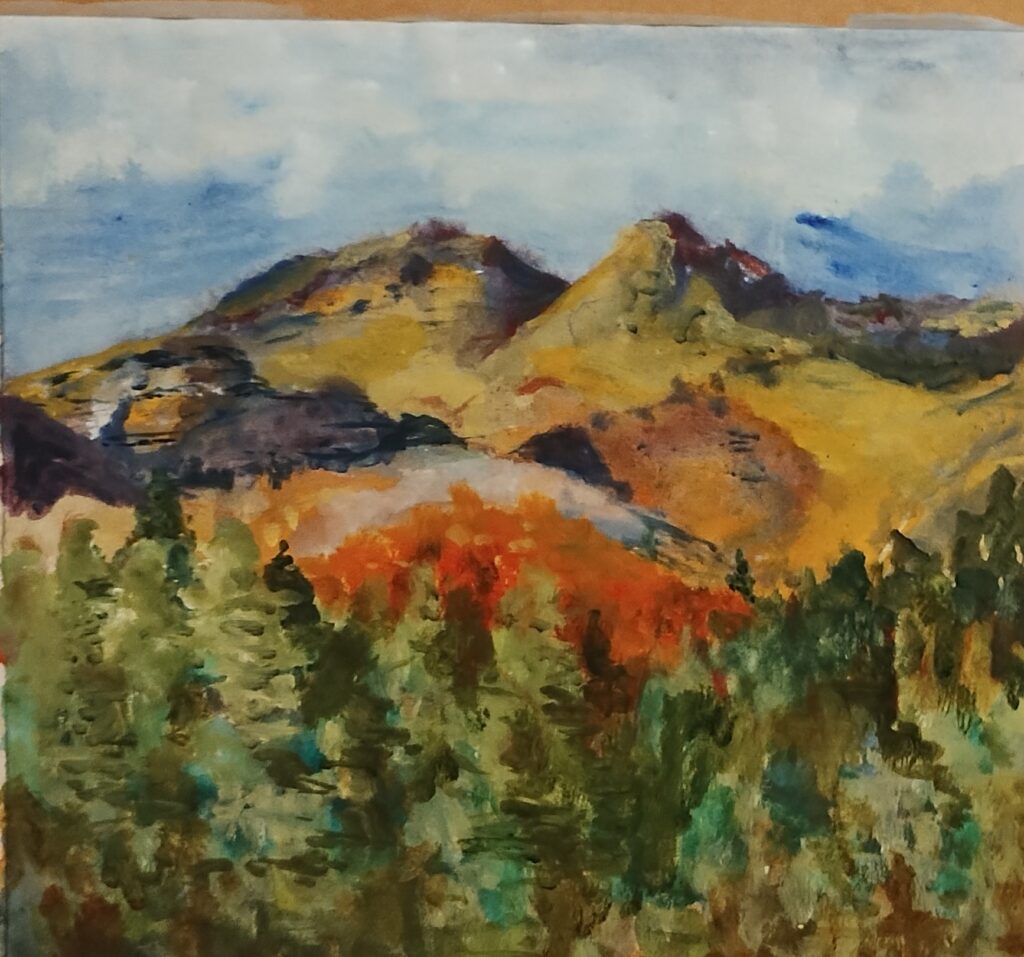
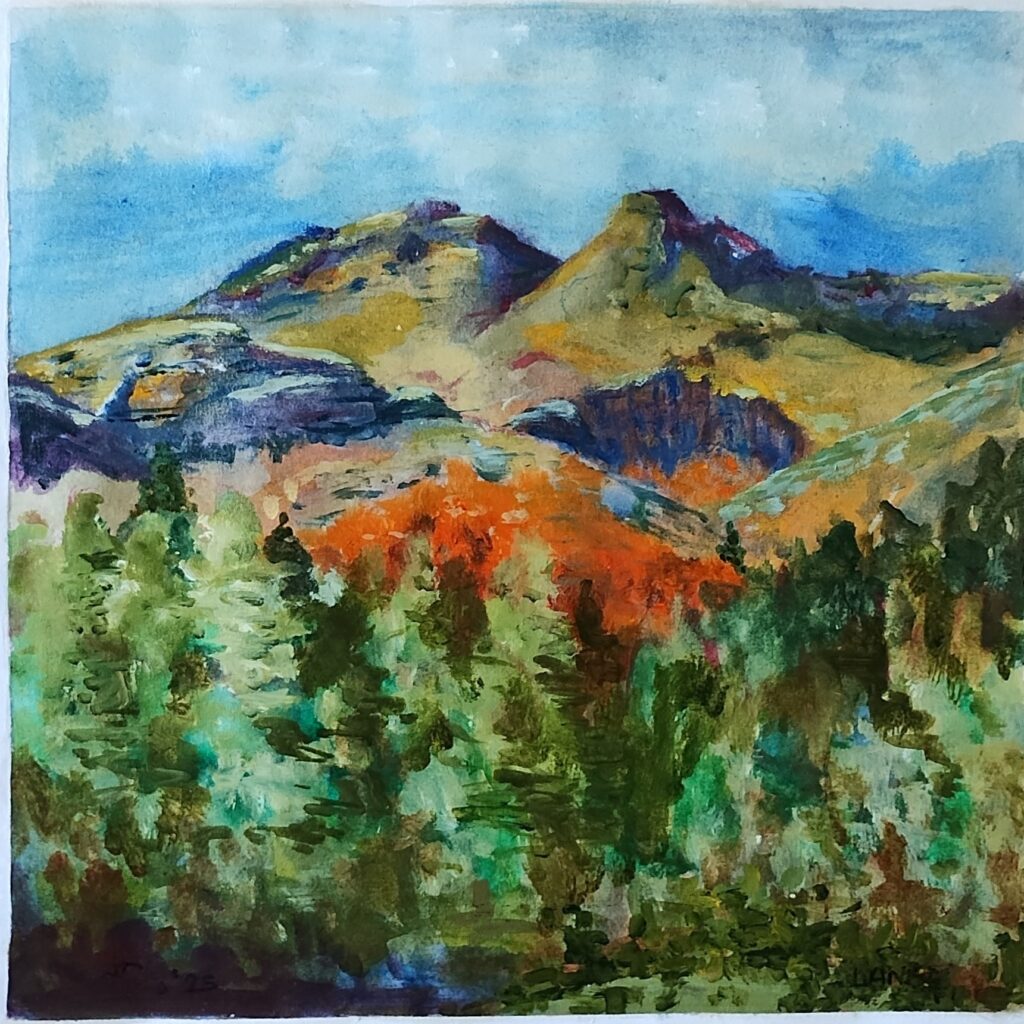
I hope that is helpful to anyone reading it. I certainly will be seeing if I can improve what I did last night and will think abut it all as an addition to my options in saying what I want to say.
- Sculpture Weekend
I’ve been to the Sculpture lounge before to make sculptures with Mick Kirkby Geddes and David Mayne but this last weekend highlighted just how good they are as guides through this creative process.
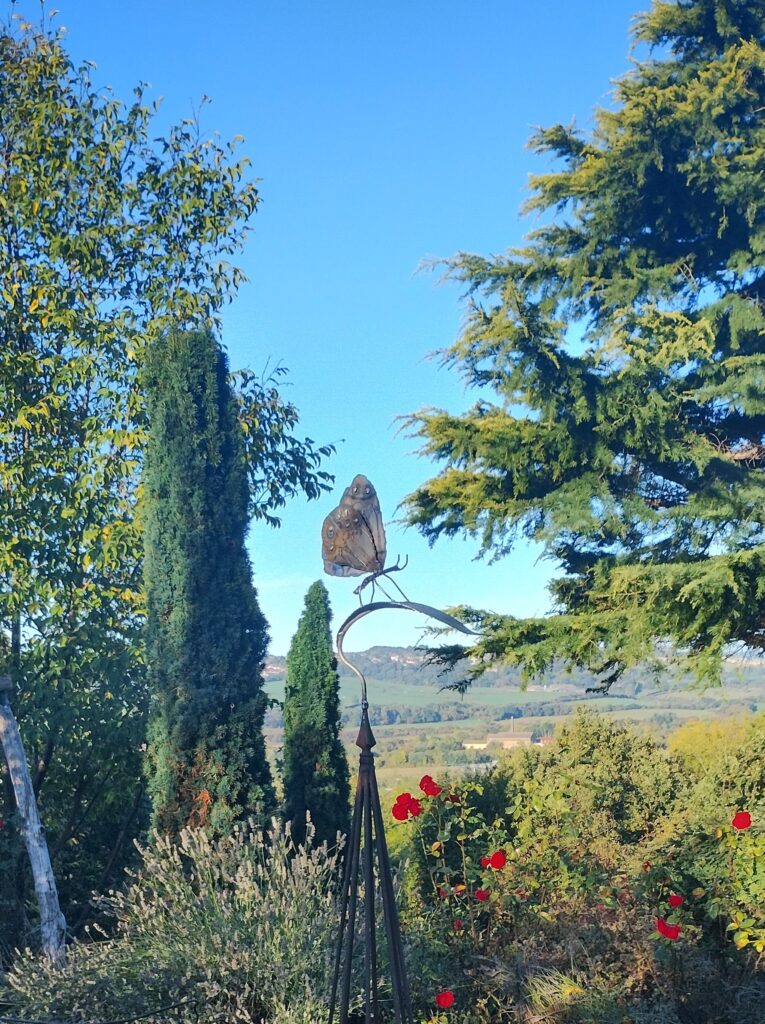
Four people with different levels of experience and all of us guided through the choices very capably and skilfully. On the second day I was having a particularly trying day and making mistakes. Even though I don’t usually require large amounts of help, their joint radar was working all the time and gentle advice would appear at the right time.
I was making a design change to a previous mobile piece, then moving on to a butterfly on a garden obelisk for a friend. Both of these went well and were finished by the end of the first day. Ruth loved the butterfly and asked for on to go on top of one of our obelisks. Next day I got busy, but was tired and kept making mistakes. Cue David and Mick spotting my slips and digging me out of them.
The one above is the one in our garden. I’ve added a transparent layer of green oil paint to the leaf since I first put it up, to tone it down a bit in bright light.

Below is my friend’s
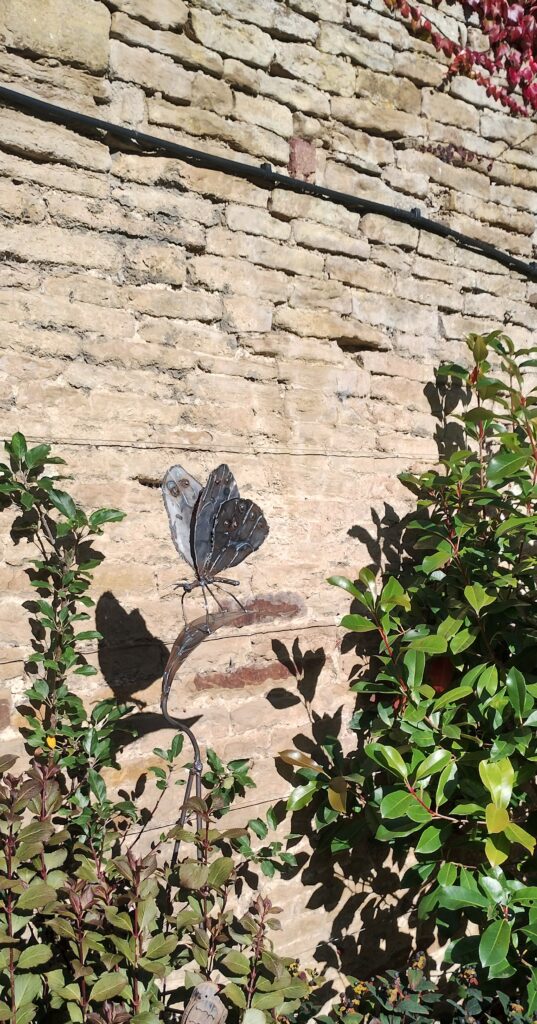
I’d recommend it to anyone.
- Abundant Apples
After a complete absence last year all the apples and pears have swung into full production this year. A pity that I no longer make alcohol and neither of us like crab apple jelly and that’s just one tree.
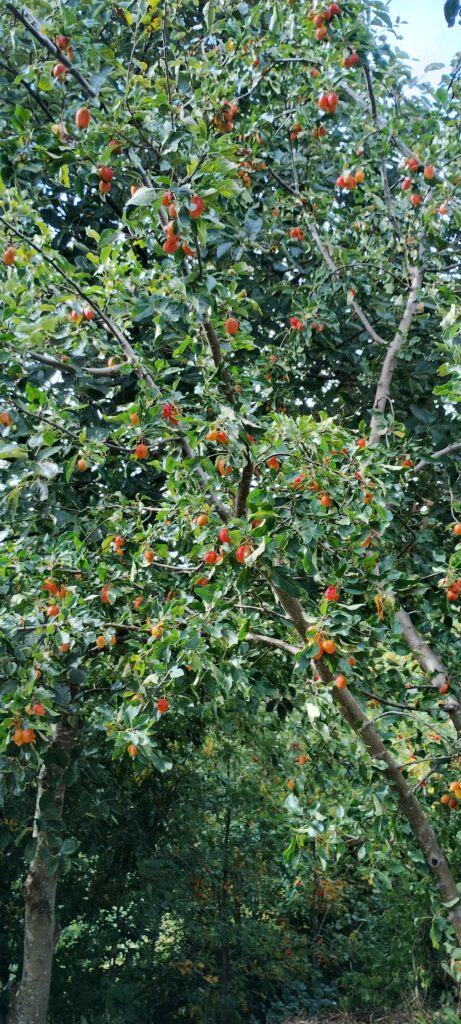
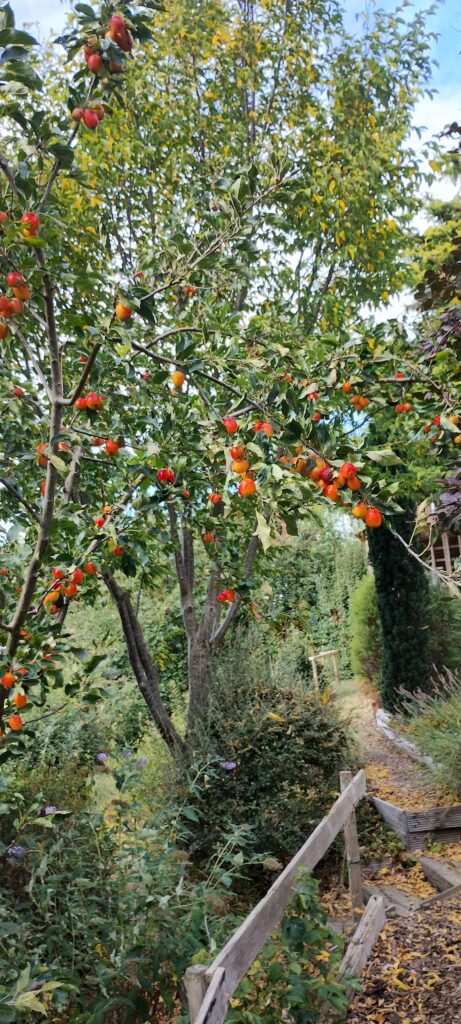
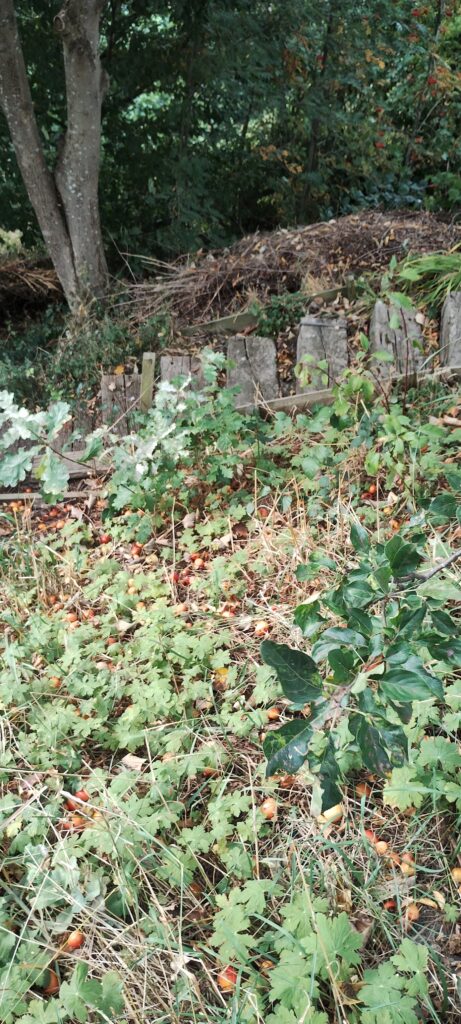
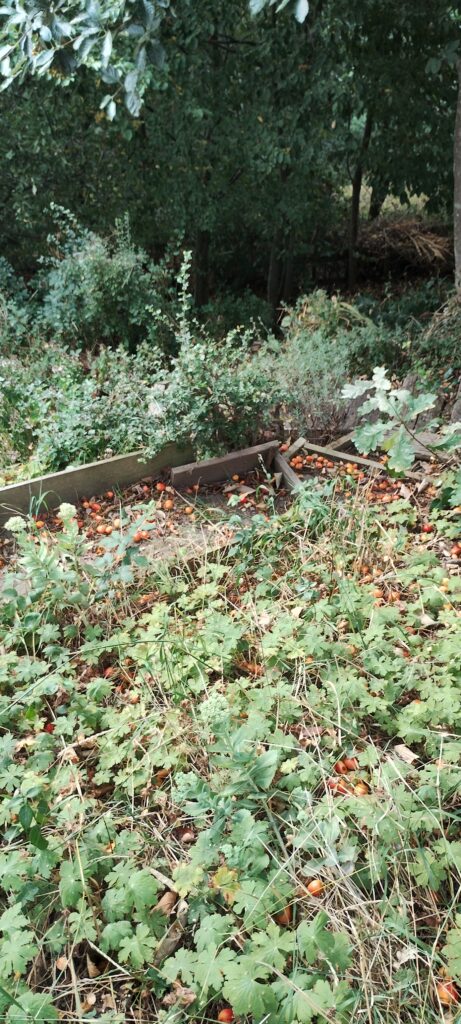
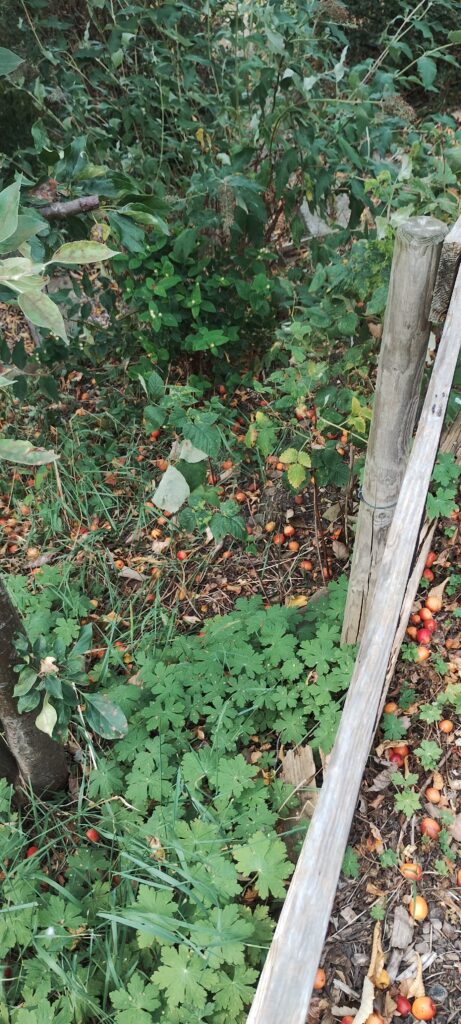
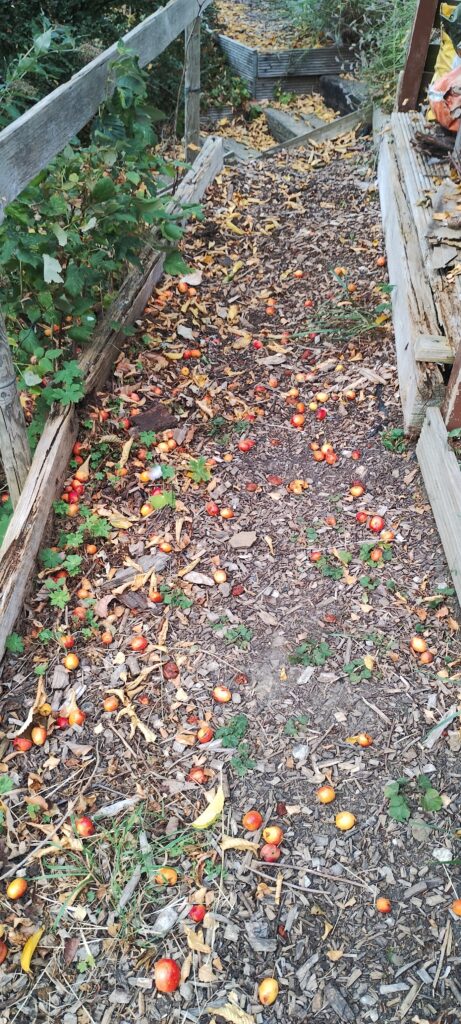
- Goodbye Cherry Tree – Hello Toad
Sadly one of our cherry trees had become dangerously likely to split because of bark inclusion. It generated a lot of wood of one sort or another and a pile of wood chip for the garden paths. In amongst that I’m managing to find a toad and lily pads inside the tree remains. To be continued, as the wood dries.
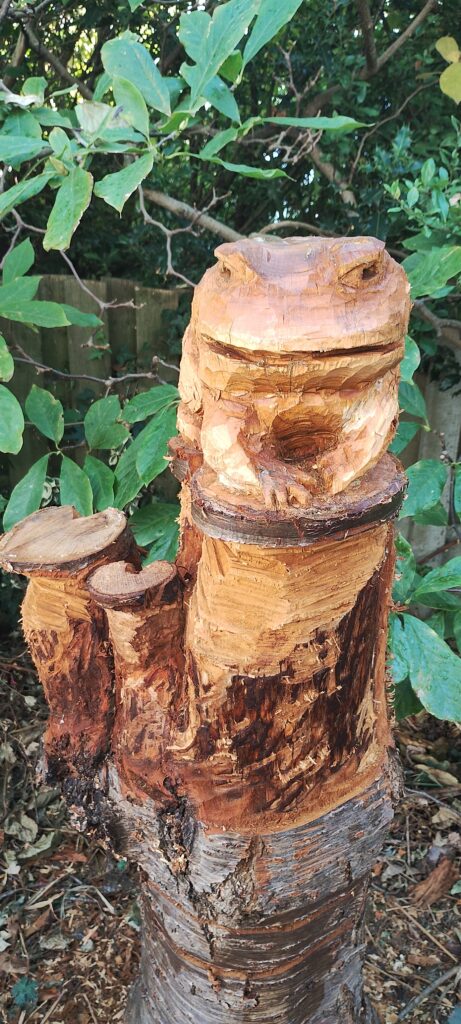
- Kintsugi Table
After a family e-reminisce about the Old Bear stories, I got a small request about the possibility of extending the life of Old Table, who had served the Gray/Scott side of the family in London and Bristol, in different houses, through many family and friends gatherings and finally out in the garden when a young pretender entered the dining room.
Restoring and renewing are deeply ingrained in my brain, alongside creating from scratch, so a trip down country was arranged. Below gives an idea of what I found. The legs were also rotten at the bottom and different lengths.
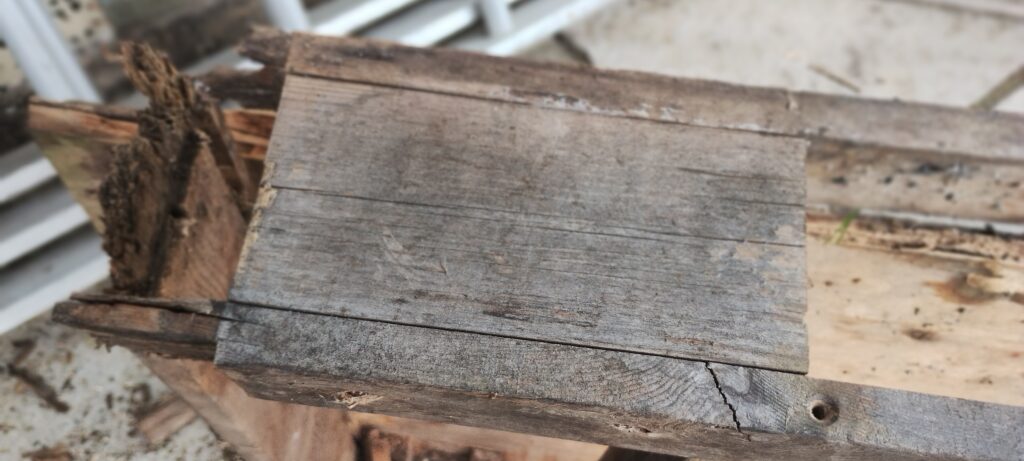
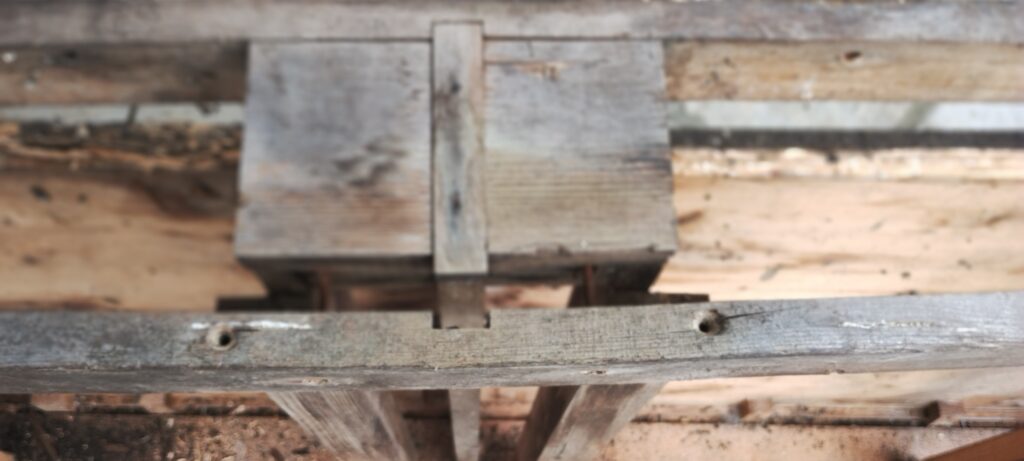
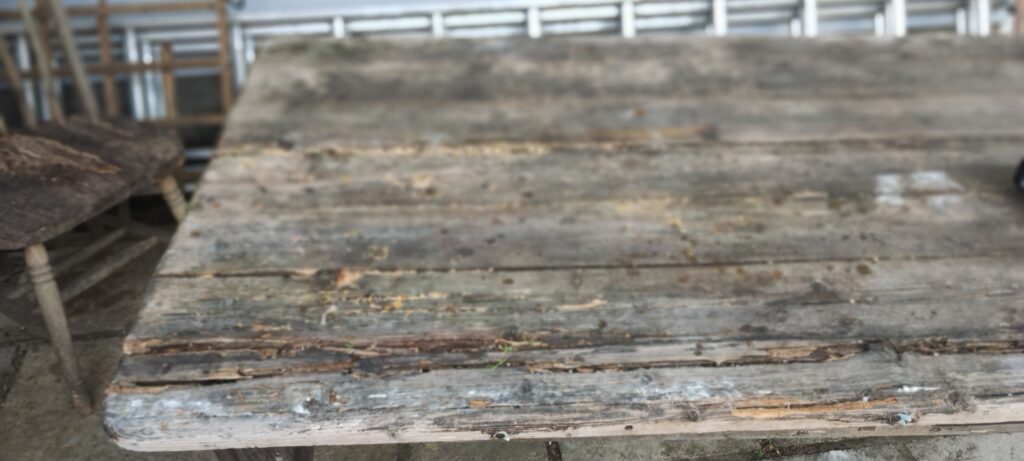
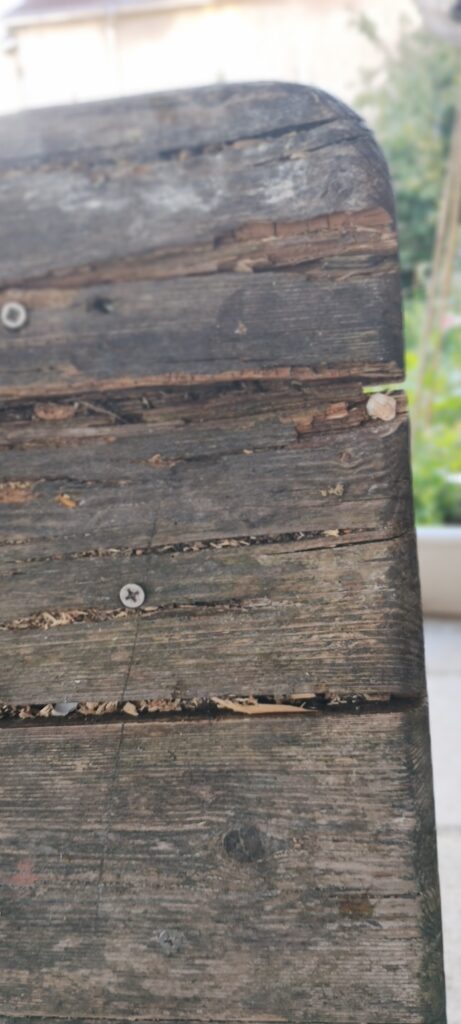
There was obviously no instant fix here, so I had the adventure of trying to take it apart, doing as little extra damage as possible.
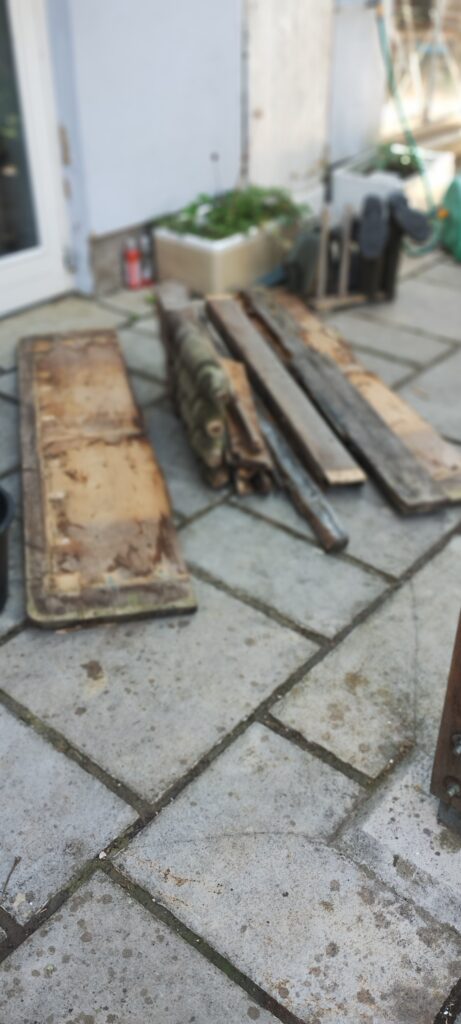
Back in Wakefield, I set about the business of staring at the pile, abandoning bits and slowly repairing, replacing and reassembling. The idea was to leave it as a flat-pack that I could fit in the car and reassemble the whole back in Bristol. When I completed the drawer surround front, I sent a picture. I proposed leaving the colour different so old and new were obvious. Rob mentioned Kintsugi and I realised I had used that idea before on split pieces of wood I was proposing to make into chairs. Building on conversations I’d heard at several of the those family/friends gatherings, I decided to incorporate a Bling Strip, though Rob has decided it is a go faster stripe. The result, ready for more good times.
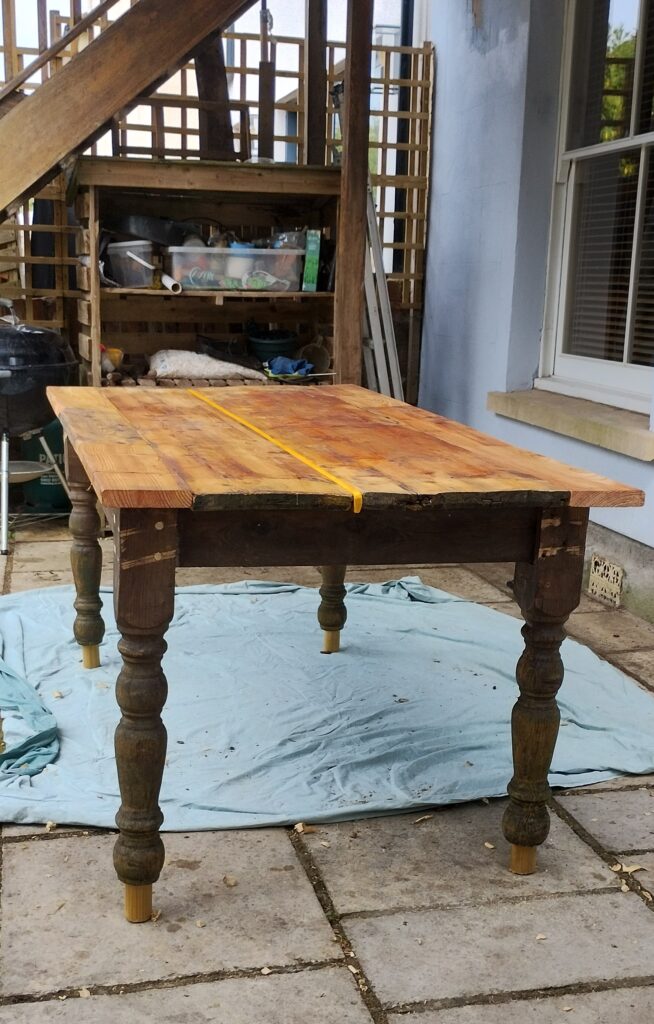
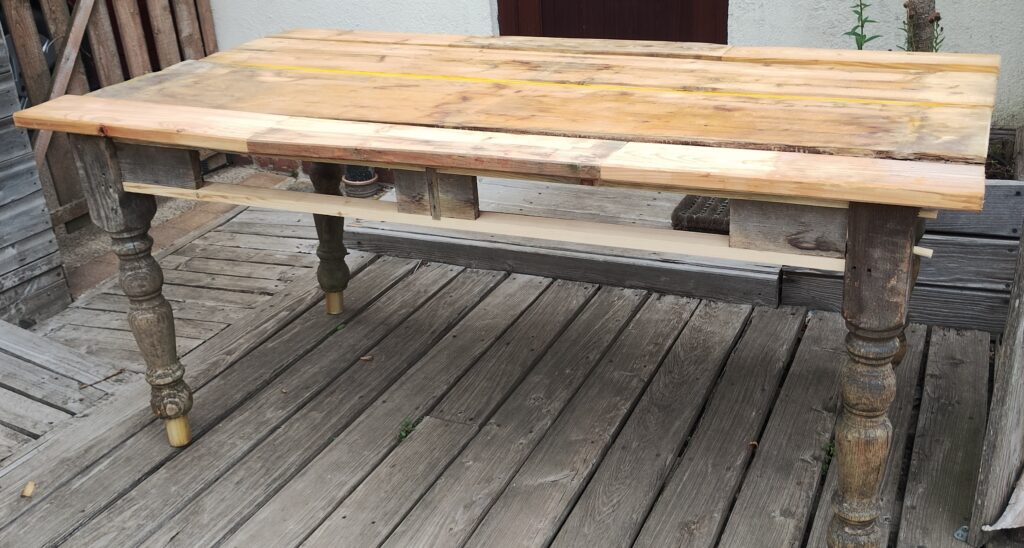
Thank you Jo for keeping me occupied with another opportunity to make people smile.
- Tricks of the (art) Trade
All my life I have admired people who can make marks on paper that capture your imagination in some way. I watched carefully and tried to work out how it was done. That has widened to include other forms of design, like furniture, pottery, sculpture, fabric design, even knitting. I’ve never stopped trying to learn and develop.

All these activities mean acquiring skills but also learning what are essentially tricks. I’ve often told people about my dad saying ‘let the saw do the work’ and it taking me another 20 years to realise what he meant (don’t over work it, establish a smooth rhythm). If you know the trick, then the skill often becomes easier to achieve. About 45 years after my dad first said that, someone watching me make stage sets remarked on the sheer speed of my sawing and I gave a little inward smile.
Last week I mentioned to Shelley Art Group the old watercolour sky trick. Skies often have deeper colour at the top of your view than at the bottom. If you are using watercolour the liquid tends to run downwards, taking the pigment with it. If you are painting on the flat, then it tends to run to any low areas, often the edges or centre of the area you are painting. If you are painting a sky, then turning the paper upside down makes the pigment run to the top of the sky. which is usually what you want. If it is a blue sky with white clouds you can dab the clouds out using an edge of cloth or tissue.
Knowing the trick doesn’t guarantee a result but it usually means that you are not working against the materials. This in turn allows you to concentrate on developing the skills to make the best use of that trick. As with my sawing, you suddenly develop more freedom and control in what you are doing. In watercolour that often means that you can use wetter applications of paint that flow, rather than drawing and colouring in.
In one group of people I painted with, one of them had been an art teacher and went to the Slade Art School. I watched him working on a scene with figures. This is a hard thing to do if you are composing the picture youself. He did the background and then sketched the figures on separate pieces of paper and cut them out. He moved them about the painting till he was satisfied, changing figure size if necessary, then marked them in place and set to painting. I’ve never forgotten that trick and I now use it in digital sketches for painted works. The painting at the top of this piece is one I was asked for, of a kestrel sculpture I made that is down in Bristol. I had a couple of photos and I played with layouts, using a mixture of bits cut from photos, that I resized in Gimp and moved about and changed the angles of in Art Rage with digital paint for the sky. When I was happy with it, I painted the sky on the board/canvass first, using a mixture of palette knife and brush, then added the house roofs (palette knife). Finally I cut out the kestrel, moved it about, changed size and shape slightly again then marked it in place and painted it on. I moved the rod, that holds it up and allows it to be seen from different angles as well as possible, so that it was there but worked best with this painting angle.
One of the simplest tricks people often forget about is to keep standing back to look at what you are doing from further away. Find some way of standing it up and look from the other side of the room. Do it often. If you are making a sculptural object, put it somewhere that you can walk round it and peer at it from different angles. You don’t have to develop a skill for this one, just remember the trick. If you are working digitally keep zooming out to get the same effect. Because I tend to work flat nowadays because of slight tremors, I often have a simple lightweight stand to put the picture on to look at. Incidently working on a flat surface and standing above it also means you spend less time with your nose next to the surface too.
So there you are your trick starters.
- Capturing the Spirit
Dedicated to the dreamer/doers such as David Mayne, Mick Kirkby Geddes and Helaina Sharpley. This post was also inspired by my sister-in-law Jo asking me to do a painting of one of my sculptures. It has a free idea for any of the above artists to use.
About 67 years ago when I was around 7, I was wandering through the hectic school playground and one lad was sat on the hard ground, next to the wall with railings on the top, sketching a Cowboys and Indians scene. I never quite understood the fascination with the topic but the picture of the sense of movement and activity has stayed with me ever since. I now realise that I’ve been trying to capture some of that all my life. All those attempts over all those years have only ever felt partially successful but I keep trying. Other people have more attention to detail, a better inner vision and less shaky hands. I do often look back and think that something is better than I originally thought and people often say they like what I’ve produced. I try hard to ignore the look of those just don’t get it or see only the rough edges.
This is a recent painting of mine. I hope you can see the similarity to what I’ve described.
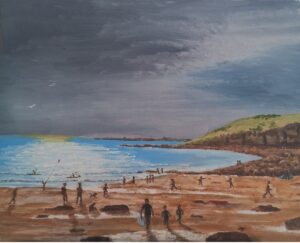
This is a sculpture I did first for our garden. This one, that Jo wants me to paint, is down in their garden in Bristol.

It was as I thought about how best to capture it in a painting that the clarity of the sketch/movement theme came to mind. Added to that is light. Below are a couple of David Mayne’s sculptures, which we have instinctively put against the light. Excuse the cobwebs. David plays with both light and movement.
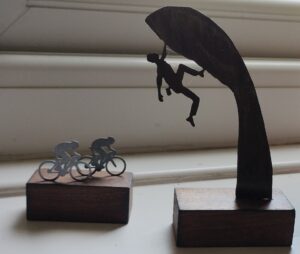
Helaina describes her sculpture as drawing with wire and she attempts to capture the everyday using just wire. She also plays with light by putting the result in a white box. A theme of Helaina’s is also the delight in the everyday. I’ll let you look at here website but here are some that I did at a workshop she ran.

I hope you are picking up the threads here. My paintings have also been likened to Stanley Spencer and Lowry. Not in quality I hasten to add.
So what is the idea? Well the kite sculpture is against a sunset, as is the Dunraven painting. I recently did one of Morris dancers dancing up the dawn as well. So I’ll go back to trying to work out how best to paint the kite and I leave it for David and Helaina. or anyone else, to produce moving, living sculptures of the everyday by backlighting them with a subtle sky line and light. If you can capture for me skylarks and their noise as you walk across the moors then even better.
- Shaping a Six Year Old Brain
When I was young, in north London, there were extended family gatherings at Xmas. A regular one was at my aunt’s house in Harlesden. All Barrow-in-Furness expats would gather along with strays gathered in London, such as the actor Peter Swanwick and my older cousins boyfriends. The house was a long thin maisonette with a dog legged corridor leading to a back dining parlour and small kitchen. A lot of people could squeeze into that space, chatting, drinking and talking to other Barrow expats on long distance calls.
One Boxing Day all this was going on while I played on the front step with my four year-old brother. He fell and hurt himself and I ran down the long corridor to tell mum. As I got to the door into the back room I trod on a mat that slipped backwards and went flying forward, putting my hand through the glass door. I suspect that event has shaped my life in surprising ways and retracing the sequence of events helps understand that.
The first thing is that I suddenly became the centre of attention and the shocked, mainly passive, focus of other people’s actions. I also became an observer of all those actions. That may be the first effect on my life. Over the next few years there was a lot of attention and observation going on.
My mum was a very practical and bright person and a nurse and midwife. She took control. I was carried to the front room, while someone was despatched to phone an ambulance. Mum assessed the damage and realised I had severed and artery, amongst other things. She told my uncle to get something to use as a tourniquet and, when he came back with a scraggy piece of cheesecloth, sent him in no uncertain terms to get something stronger. Effect number two, pay attention to mum, she is boss.
I don’t know whether people know about tourniquets any more (we used to practice them in the Scouts), but they are very effective if applied correctly. I watched fascinated as she used the tourniquet to control and lessen the blood loss. Lesson three, my body has an inside and my mum knows how it works. That red stuff is important.
Soon after this the ambulance arrived, at the same time as my startled dad, who I think had been at work. He was dispatched to go with me, while the scene of the crime was cleared up and mum took car of my brother. To be fair to dad, he arrived shocked and late, had instructions shouted at him and had to sit as a passive watcher and waiter, while other competent people did things to me over the next long hours. Neither my dad or my uncle seemed to be people who controlled much.
I hope you are not squeamish, but the next thing I remember was people holding me down and picking at the inside of my arm with tweezers, to remove pieces of glass and inspect the damage in detail, to formulate a plan for complicated surgery. I had severed blood vessels, nerves and tendons in my wrist, sending the tendons back up into my arm, so I am so very grateful to all the people who saved my hand and possibly my life that day and over the next few years. Subsequently, I have realised that I also probably owe much to the surgical advances made in the Second World War. The kind of micro surgery involved in the reconstruction was very new then.
I will not go into a boring, blow by blow, account of all the things that happened afterwards but they had a wide range of effects because I had become an observer. People put electric currents through my hand to try to stimulate the nerves. They put my hand in hot liquid wax that gave a warm glove to stimulate blood circulation and tissue growth. The wrapped my arm and hand in plaster coated bandages to support it while it healed. I still managed to put a ruler down inside to stop the itching, which I don’t think helped with the scars.
They also devised a special metal spring device to keep my hand straightened out and to build up power when I tried to use the hand. The kids at school called it a knuckle duster, so I had to find out what one of those was. I watched and tried to understand what was going on. I realised how useful practical skills were.
Next they started getting me to do practical things. One was weaving and I have always understood how cloth was made ever since. I was bought plasticine and pipe cleaners to make models to increase my dexterity. I have never stopped making things since. A woman teacher called me a chatterbox and made an origami dinosaur head and put it on my desk. I have been able to make those and other origami figures ever since. I once organised an entire university drama course year making origami swans for a project.
The hand that was worst damaged is still not very skilled. but I have learnt ways to accommodate. At least it is not really suffering from osteoarthritis like the left one, because that one has done a lot of hard work. The hand is not the point though. The effect on my life has been wide ranging. It made me intent on learning how to do things. When I spotted someone who could draw well, I copied them and practised until I became reasonably able. It made me a better observer and gave me a wider understanding of all sorts of thing from bodies to mechanicals. It gave me an awareness that if you can’t do something one way, then try to find another way. I think it made me more creative.
So thanks again to all those who helped me along the way.
- Digital Art
I have been aware of digital art most of my adult life, i.e. since the early 70’s. I’ve made static images, animations, games, manipulated videos and sound. The tools that are available now are astonishing. That said, alongside a phone to quickly capture some aspects of a scene, below is what I use mostly when sketching:
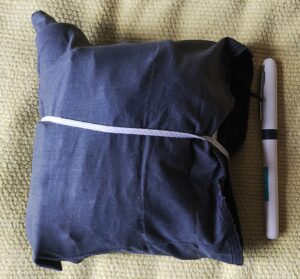
It has in it mechanical pencils with soft drawing leads, short very soft pencils, a mini paint box, water filled brushes, rags, two tiny sketchbooks…… It also isn’t affected by awkward light reflections and doesn’t run out of power. The image below is in that bundle still.
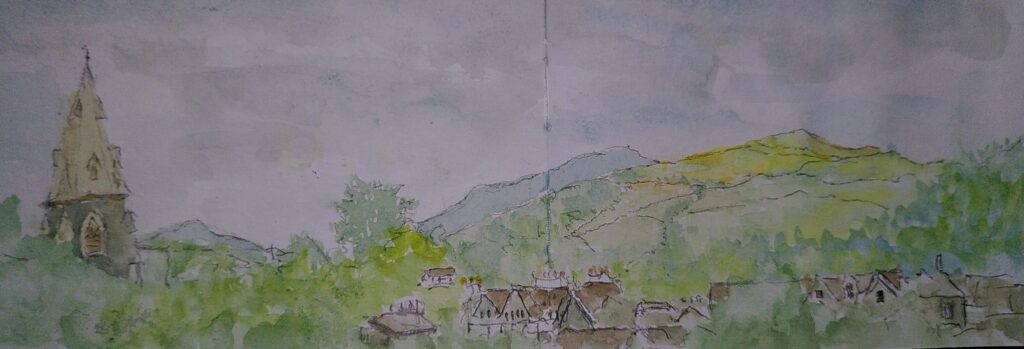
On my Android phone I have a copy of Art Rage, which works on all the main computers. This one used just my finger as a pointer/pen/pencil. Waiting for a tram in Soler on Mallorca, I could draw this quickly without getting out and balancing, pad,water, paints and pencils.
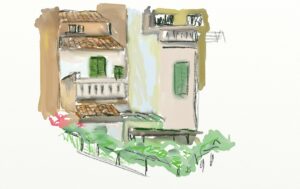
The first thing to remember about digital art packages is that media rules don’t apply. While you can appear to be painting with oil and a stiff brush, you are just applying dots of colour. If you use a pencil effect, you can expand the the size of the lead to huge proportions, add colour and get that grainy effect of a soft pencil on grainy paper over whatever area you want. You can change the settings of the tool, for instance to make the pencil or charcoal softer or more grainy. If the tool doesn’t give you the effect you want try another one. This lack of rules applies whatever the App you are using.
While you are just applying dots when you work, the apps and devices are very sophisticated nowadays and can often detect pressure and speed to recognise gestures. In this way they try to reproduce what you would get when using a brush, pencil or other tool on paper or canvass. To get the best out of this, the ‘pen’ device and App may need to match. Procreate on Apple is matched to the Apple Pencil and even different models are better matched than others. Don’t forget my finger drawing though.
The final thing I’ll say for the moment is that there are three tools on all Apps that you can use. First, Undo, which usually allows you to go back several times to pretend you didn’t just do what you did. Second a variable size Eraser that will magically rub out paint too. Third is the ability to change the Settings for each tool, for instance to add more thinners or paint. There is also the opportunity to save what you have done so far and start adding to it in another version (left swipe the file on Apple).
I’ll keep adding to this post with more detail later. See below.
Good luck.
What are you trying to draw/paint?
Here are a couple of finger doodles on the phone:
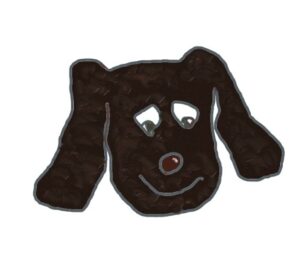
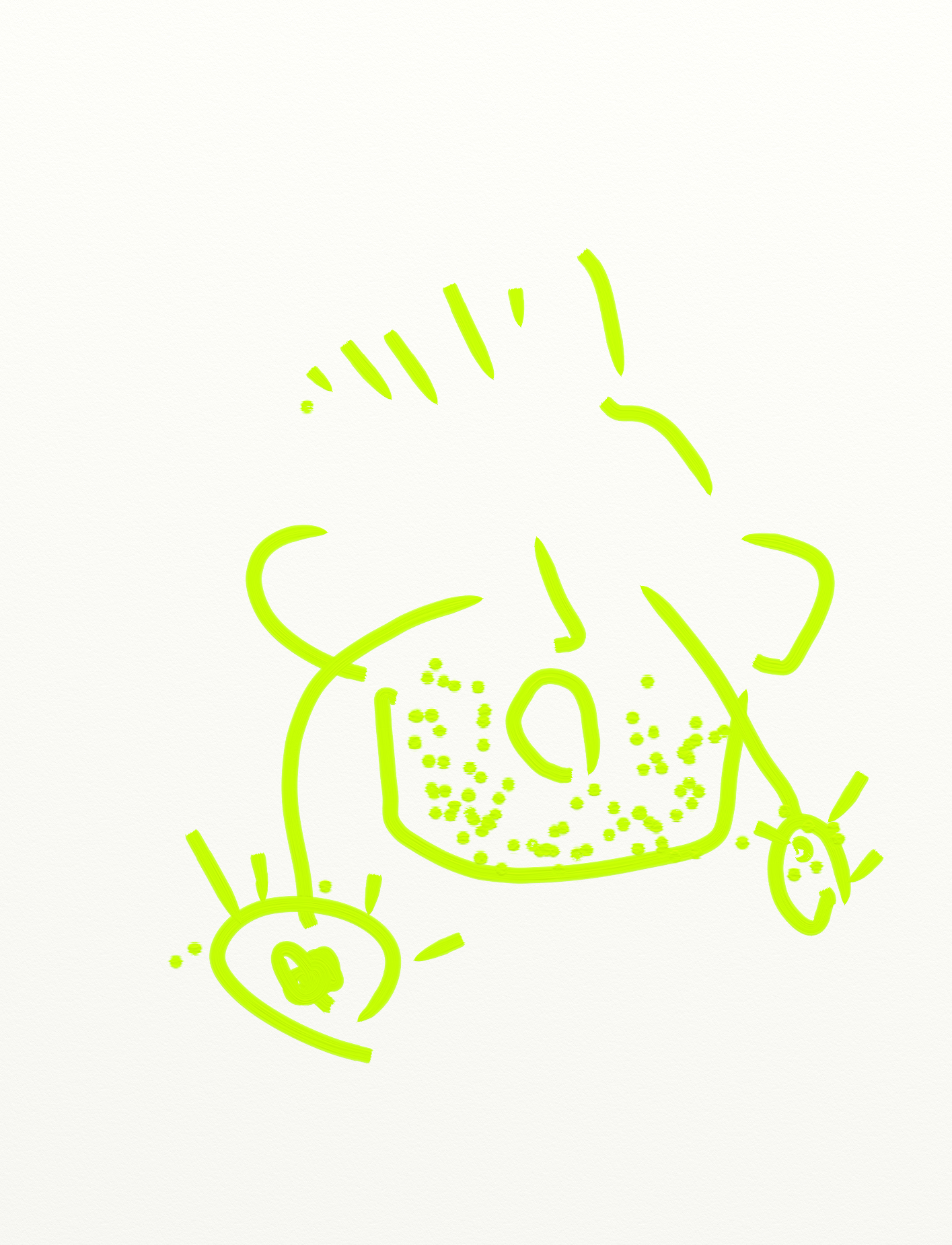
These were done very quickly to send via WhatsApp. The second one was during a FaceTime with Ruth’s grandchildren, when they were laughing at my eyes popping out. I sometimes play ‘swap the doodle’ with my grandchildren or send quick visual jokes and birthday wishes to them. The digital art apps are great for that but if you are thinking of a digital version of a paper image then it gets a little more complicated. As with any medium, it is easier if you create images that fit with the medium. All we need to know for the moment is that it helps to have an idea of what you are aiming for. If you are aiming for a particular size of printed image, then try to start with an image of that size.
Cutting and Pasting
I am now going to half contradict that statement above and introduce another tool. The image below is one I was working on, using techniques I had never used before, which are much akin to collage. It served to reassure me that I was getting somewhere but I didn’t like the colours of the feet at the bottom and the cars needed more variety. So I made a new copy of the image and started altering it. I simply rubbed out the feet and started again, having worked out better ways of doing that bit of it.

The result was this one:
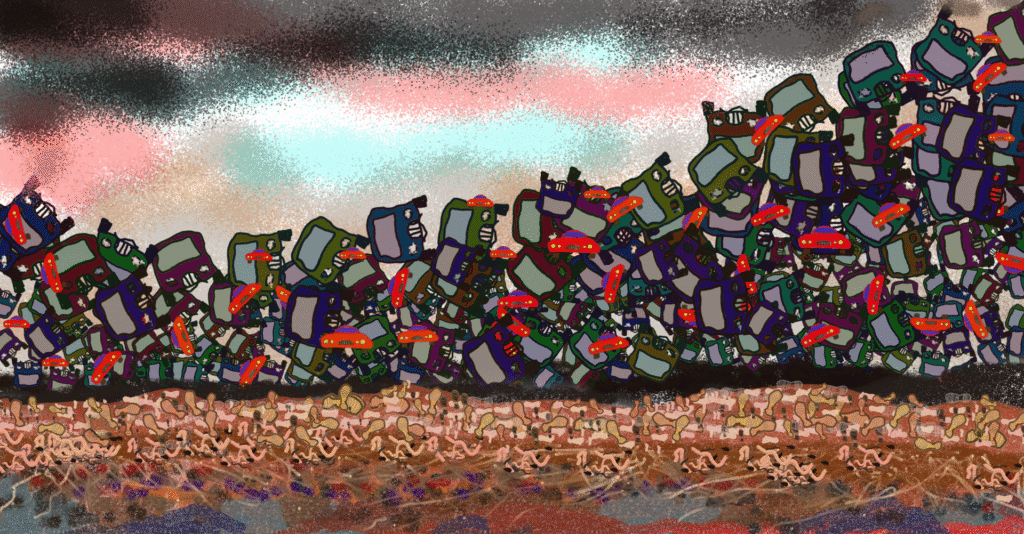
You can see that the feet are completely different, I’ve added soil and subsoil layer and also creatures. There is extra colour and variation in the cars too. At this point I realised I had made the wrong shape decision at the start, so I was able to set up a new blank canvas and select a portion of the old one and copy it in.
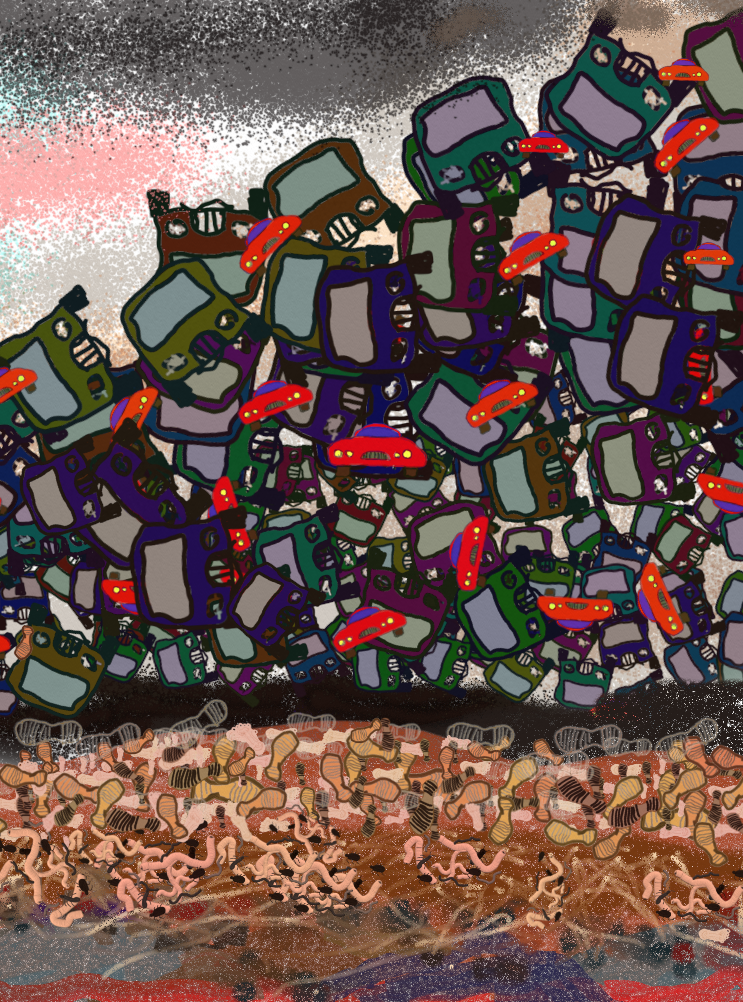
I was much happier with that, so I added a few subtle changes and settled on the finished image (for now…). So don’t give up.
Importing an Image
Last week I was at a workshop on using palette knives, which I am not very practised at. I kept at it afterwards and produced the image below:
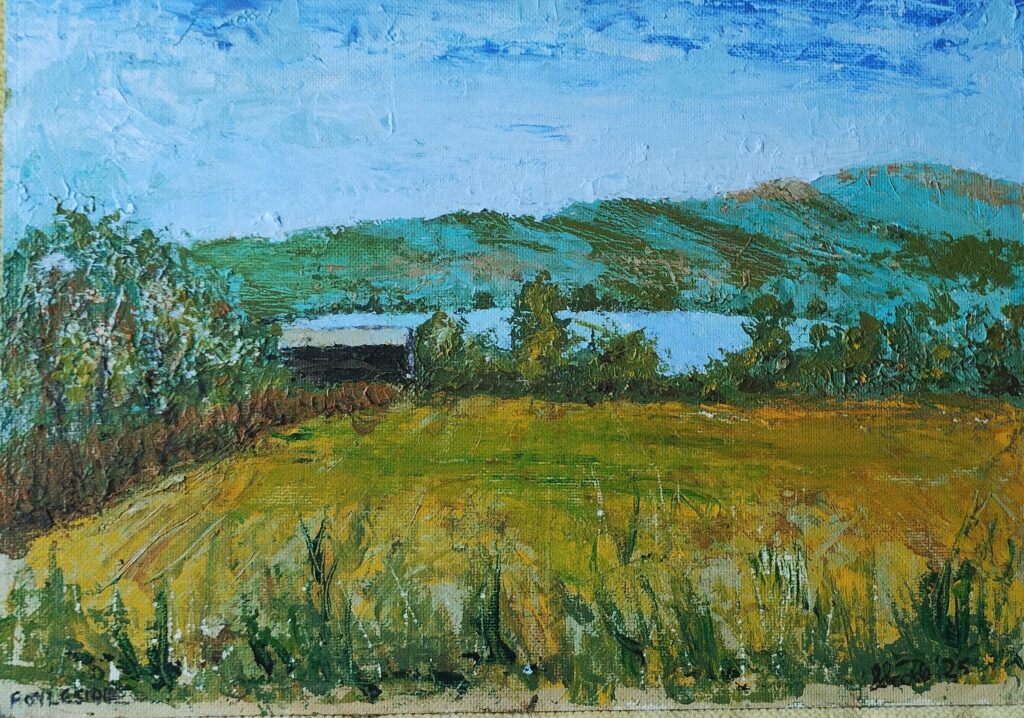
As an experiment I imported that image into the art app I was playing with and added a transparent layer on top (thank you Linda for the idea). In that layer it took around 1 minute to carelessly add some snow. Here is the result:
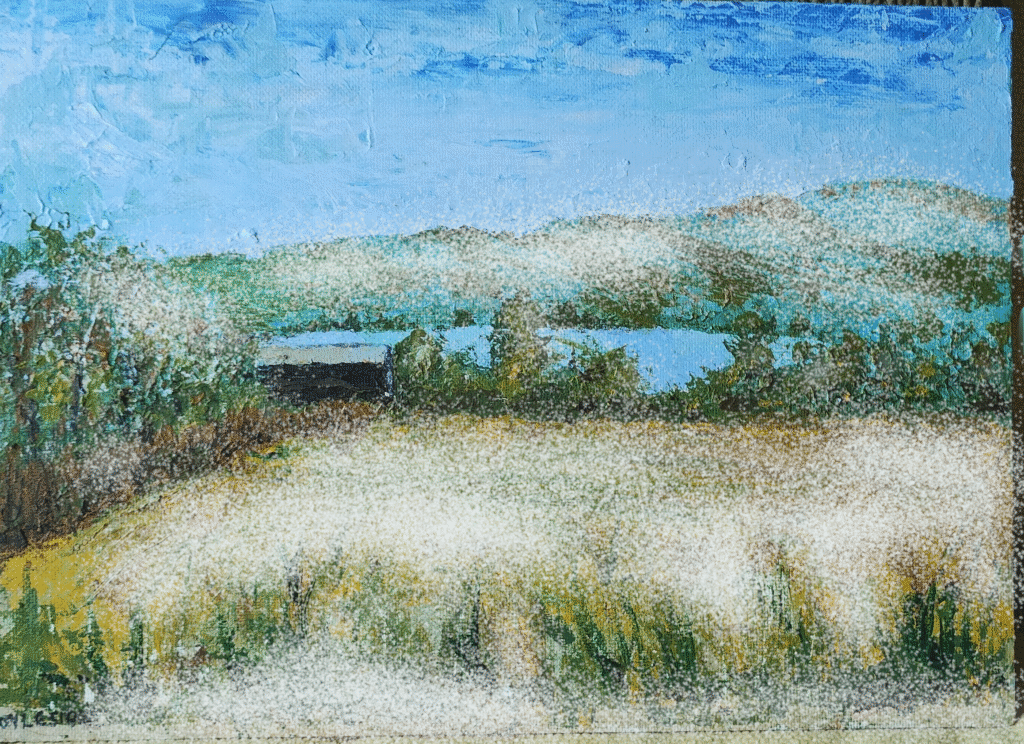
I use this technique to make things like Christmas cards.
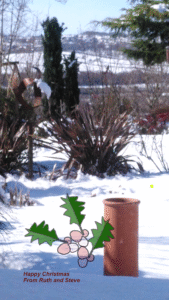
While the landscape images above are here, we might as well look at a quick paint app version, done in a bit over an hour, using my finger as a pointer on an Ipad. I think it is not as good and would have to work hard to make it match.
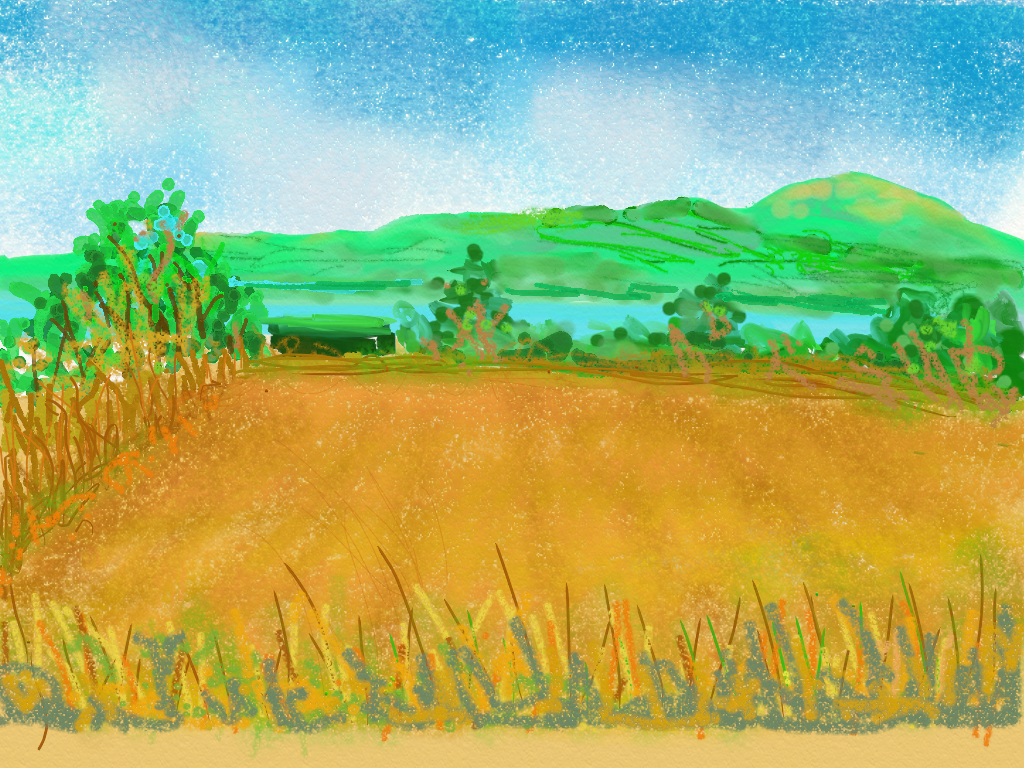
Here is a version done on my phone:
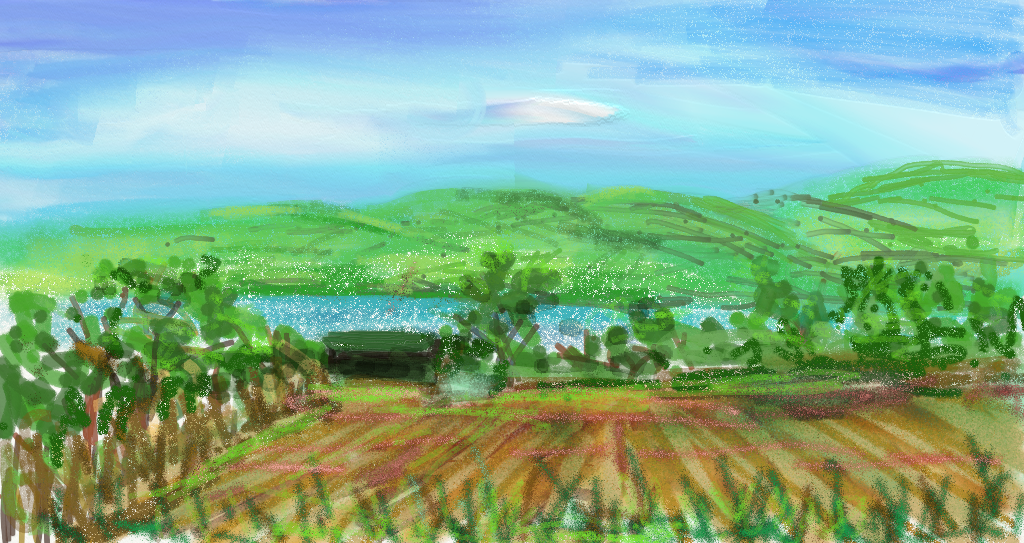
In both of those images I tried to use the tools available to get a bit closer to the hard copy original. In the ArtRage package there is even a palette knife tool, but I couldn’t get that physical feel. A quick play with Procreate was even less satisfactory, but I am less experienced with that.
I’ll finish this particular post by repeating earlier advice. Treat the digital art Apps as a different medium. Play with them to see what works for you. Discover how they work best. So far I have discovered that ArtRage seems to work better than Procreate at reproducing different media while still being flexible in use. If you paint or draw detailed and smooth images, rather than textured, then the Apps might make a better job of reproducing what you do. Here’s one about us travelling through the world, that was digital from start to finish:
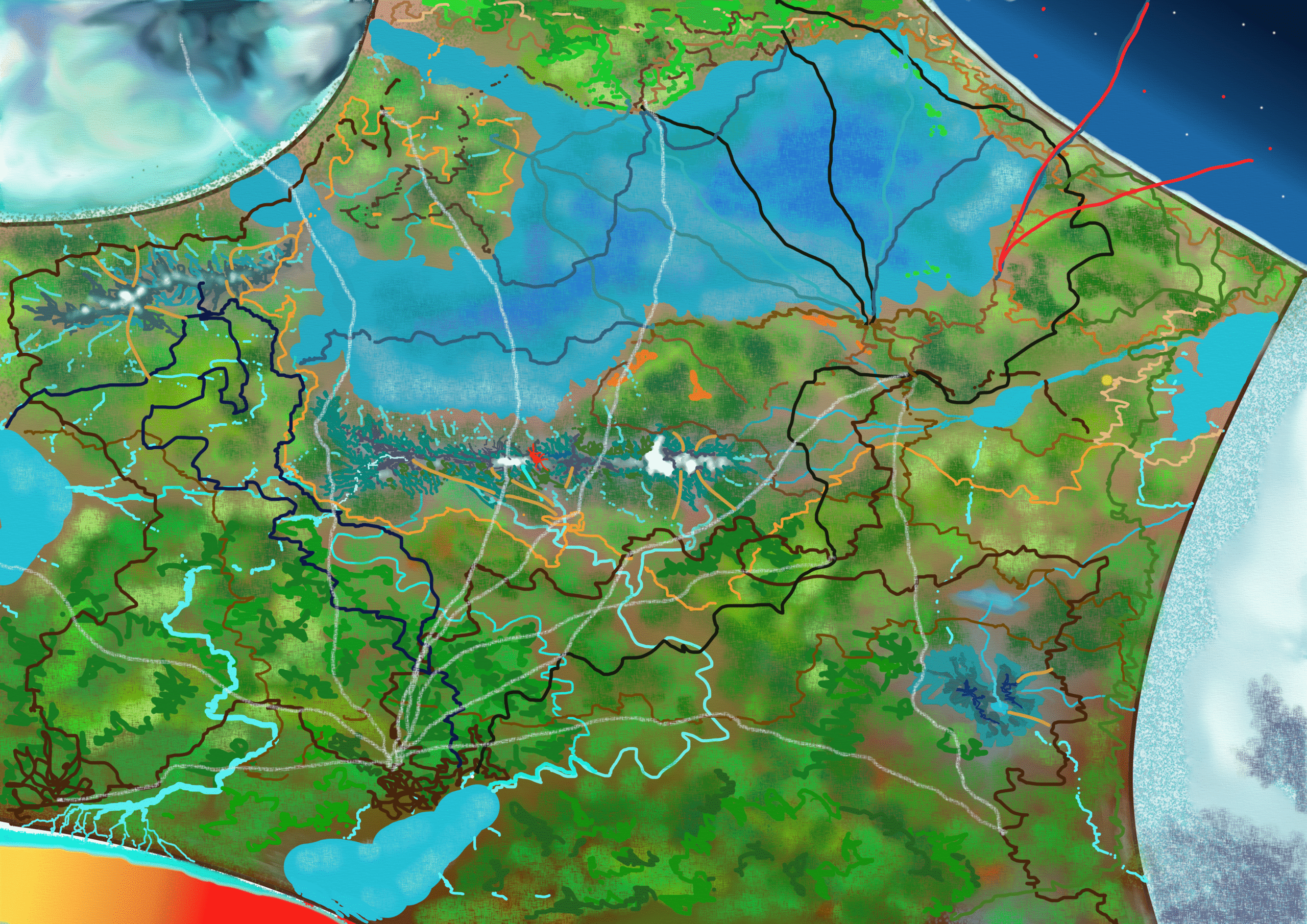
Here is one, called Dancing up the Dawn, that I’m working on. It uses all the techniques covered above:
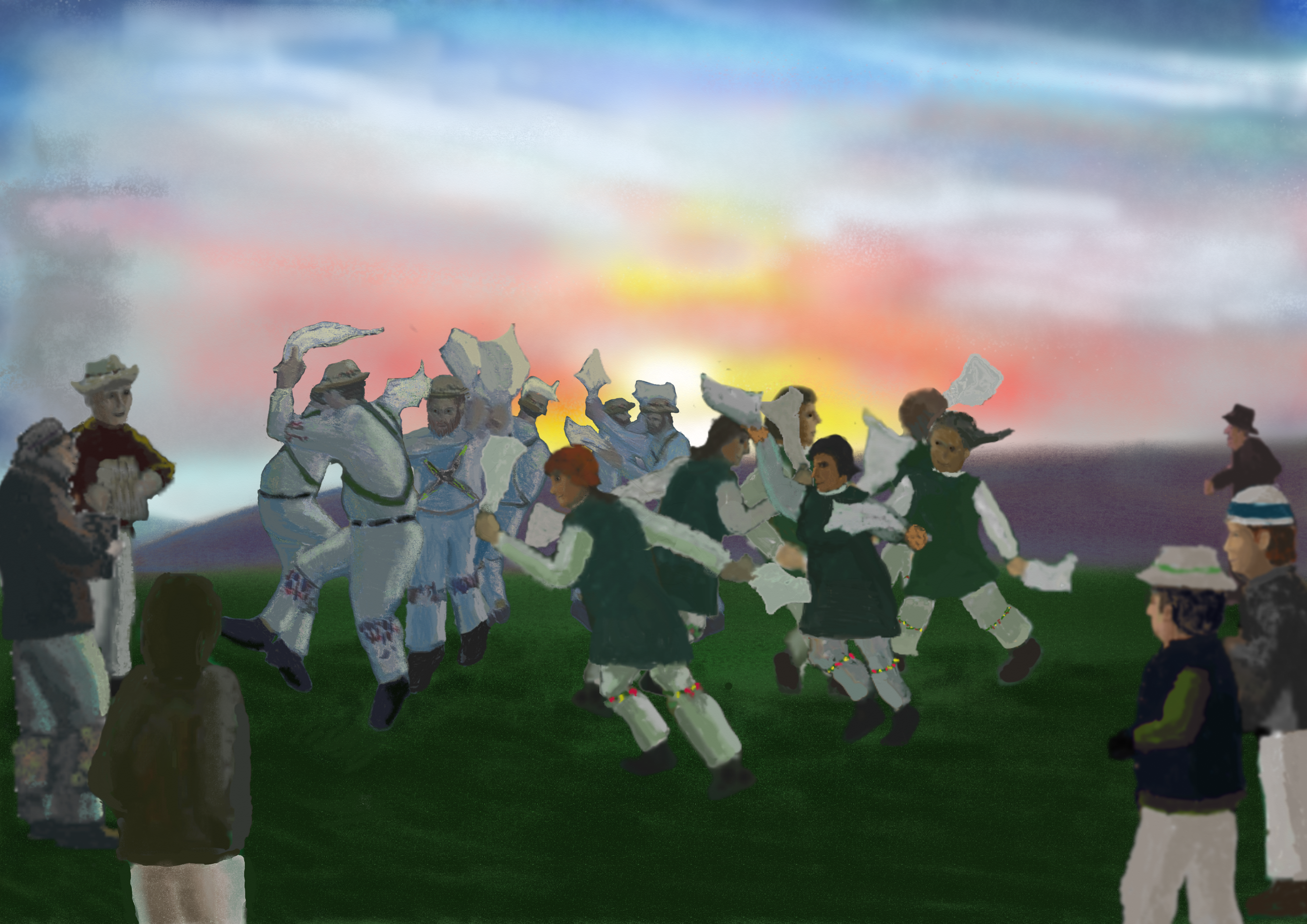
This is much more complicated and there are basic figures that I have taken from previous work and then altered for this picture. I have used multiple layers to play with the arrangements. If you put a piece of the image in a higher layer, then it will cover the lower layer, so you can play with different overlaps. Even with the background I use two layers to try out different effects, once I had the basic layout and sky. I later went back to the top one of those two layers to play with the shadow effects. You can merge layers when you are happy to make it all a bit simpler to remember and make them temporarily invisible when you are having difficulty working out which layer is which.
Finally on Layers, the canvas is also a layer. You can choose between different canvases. The texture of the canvas will have an effect on what the paint does. All the layers, including the canvas, can normally have varying levels of transparency, so the can either cover up lower layers, where there is drawing in this one, or merge in. This is generally true of the canvas as well, to that the canvas disappears when the marks are printed. This is important if you are sending it to some one to print on a T-shirt or other object.
This image was taken by starting with a watercolour sketch I’d one, adding to it an altered cut and paste from a photograph and then playing with it all in the art package to get an idea of layout. This was then worked up into an acrylic painting.
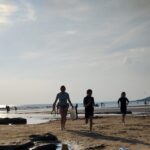
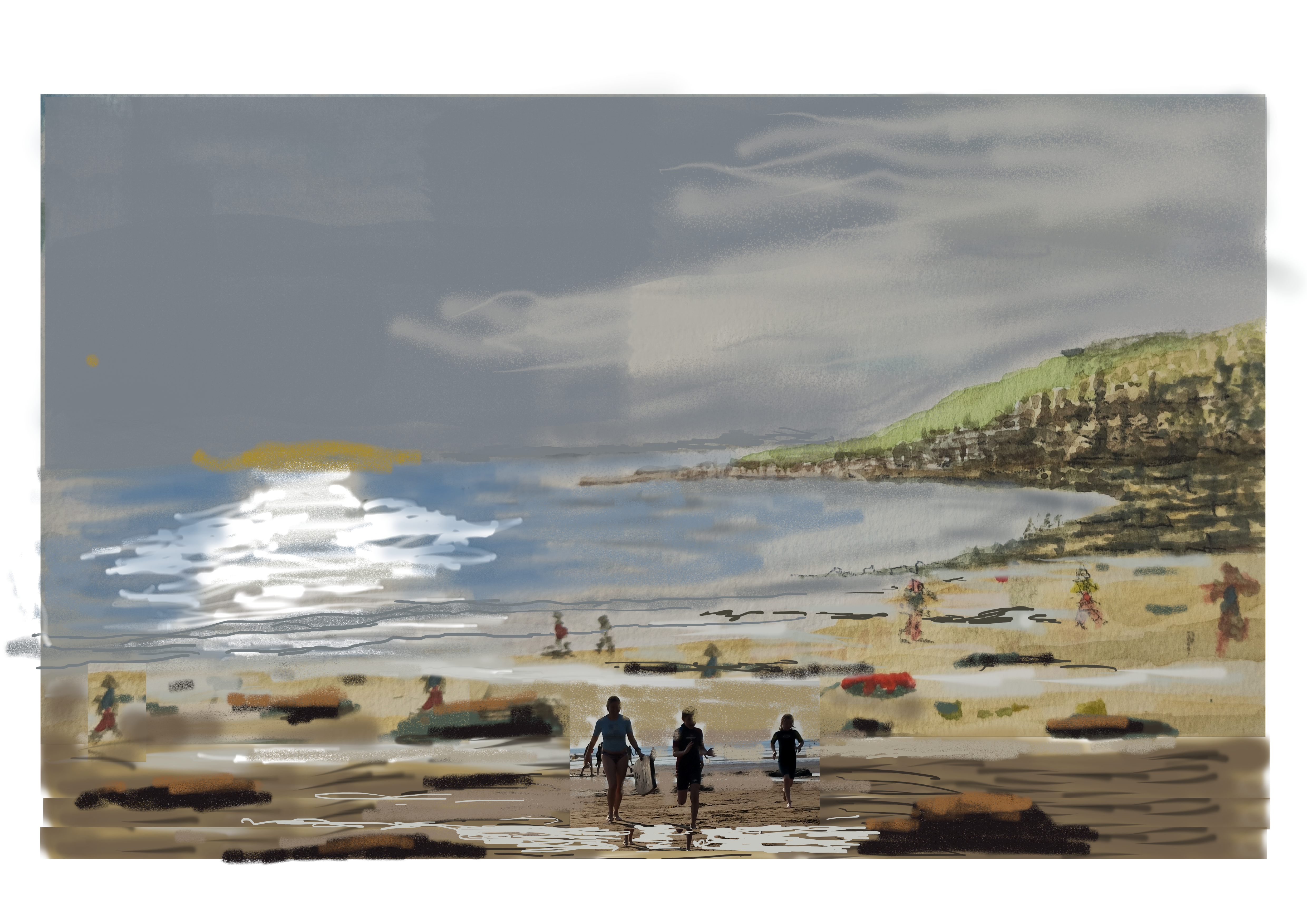
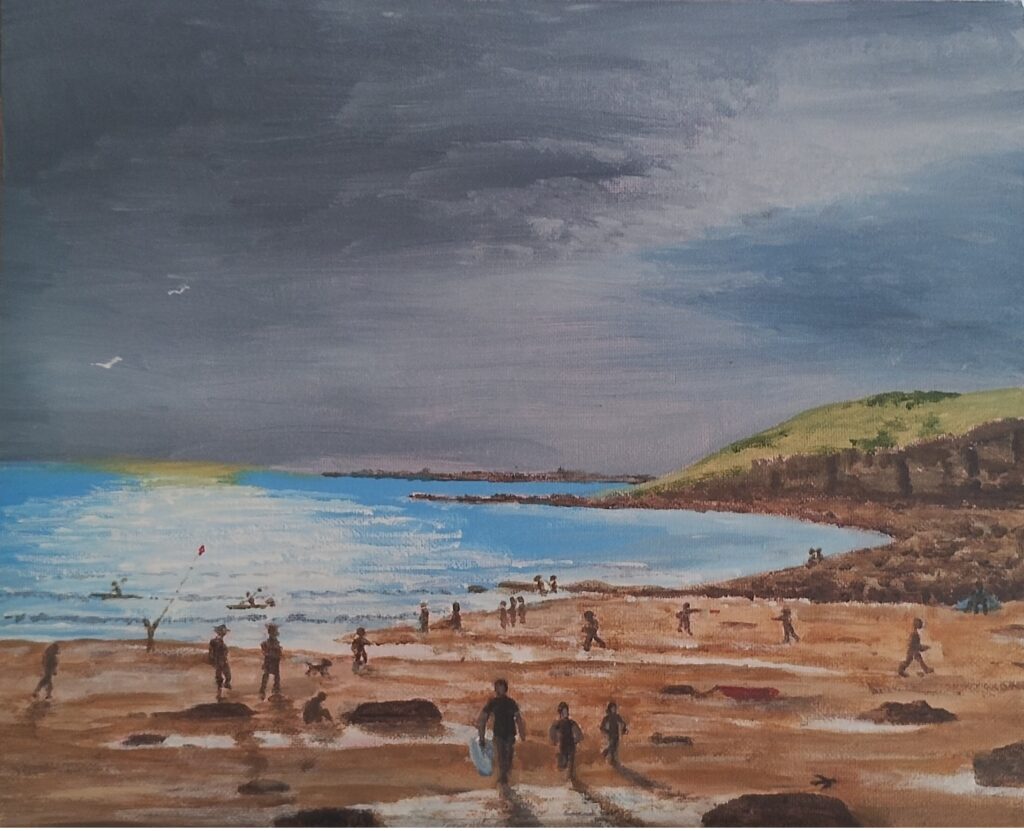
I’ll just finish by saying a bit about the apps that you can use. There are loads of them and there are similarities but also many differences. I have found that there is no one app that is good for all purposes. They all have quirks. It also depends on the type of computer you use. Apologies that this starts to use jargon but at some point you have to understand different file types, print sizes and other such technicalities to get the best of what you are doing.
First remember photo manipulation apps such as Photoshop or Lightroom and free equivalents, like Gimp. They often have tools that are useful for image manipulation. It may be quicker to export your image, adjust it and then import it again. Next there are simple art apps on most devices that can be a less daunting starting point and a more icon led and more intuitive than apps catering to constant users. Finally there are alternatives to the obvious contenders such as ArtRage that I now use and RealWorldPaint.
Once again, Good Luck.
- Look What You Started
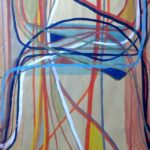
When I was sixteen I painted this image of the patterns made by cars and people at a Zebra Crossing. I’ve always been a bit obsessed by patterns of movement and the paths made through the world.
When Shelley Art Group set a fungi challenge, I had a picture in my head but realised I would find it hard to realise in paint, so I tried with an app called ArtRage and was pleased with the result, as were others.
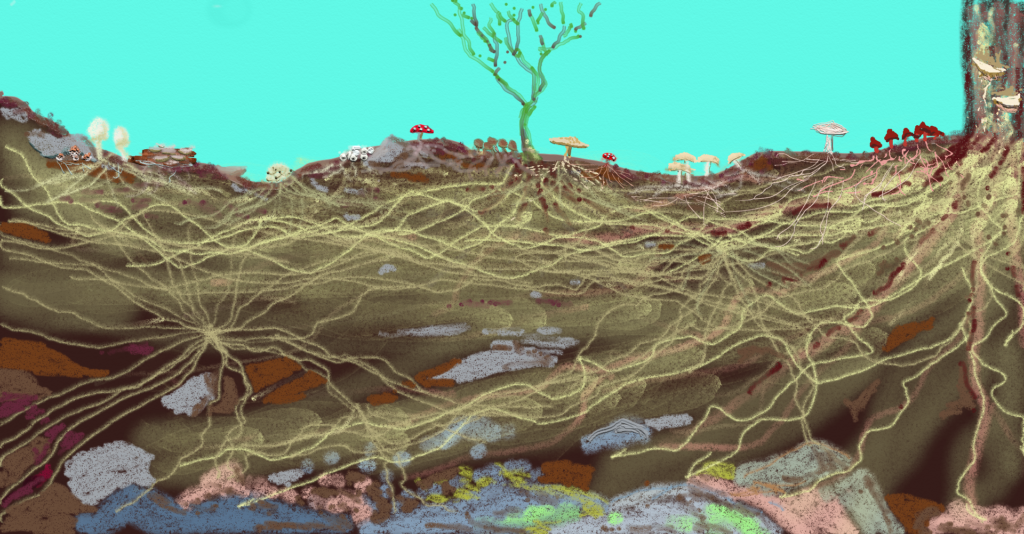
I now have an obsession to realise some of those ideas I have never managed before. Meanwhile my other obsession with Schumpeter and Appropriate Technology has sent me on a slight sidetrack involving creating lots of digital images to incorporate in other pieces.
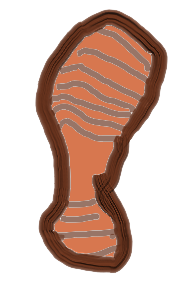
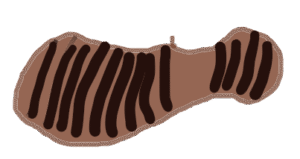
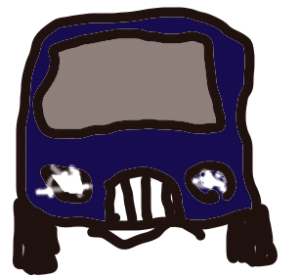
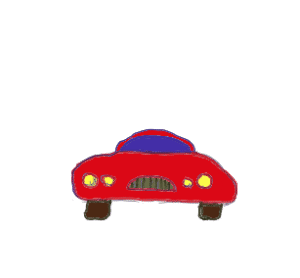
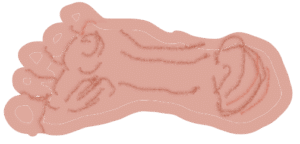
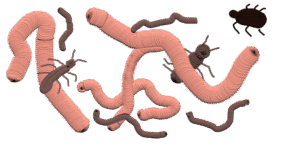
And larger piece in development

- Creature Sculpture Trail
A sidetrack for visitors, find the creature sculptures around the garden and buildings.
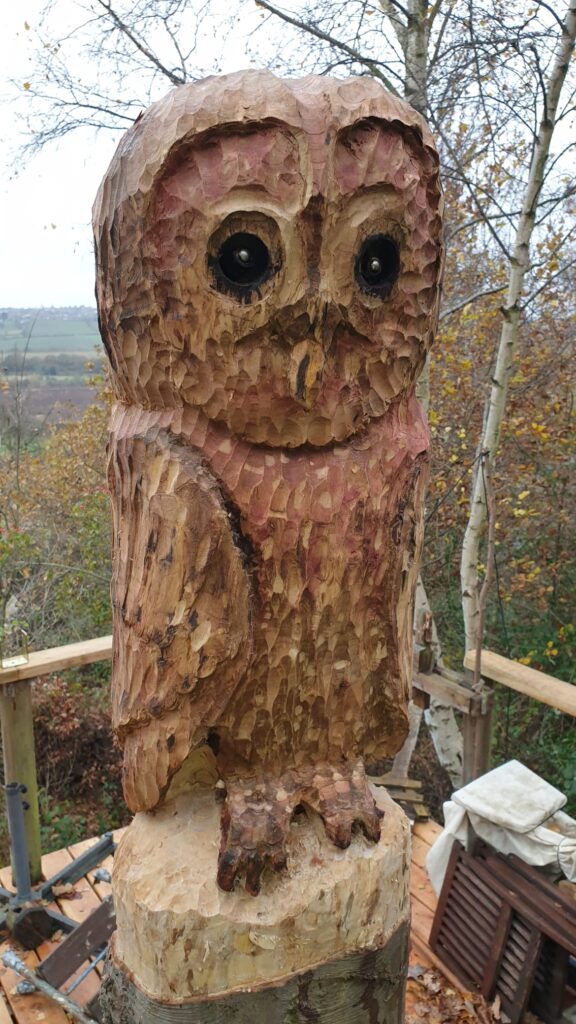
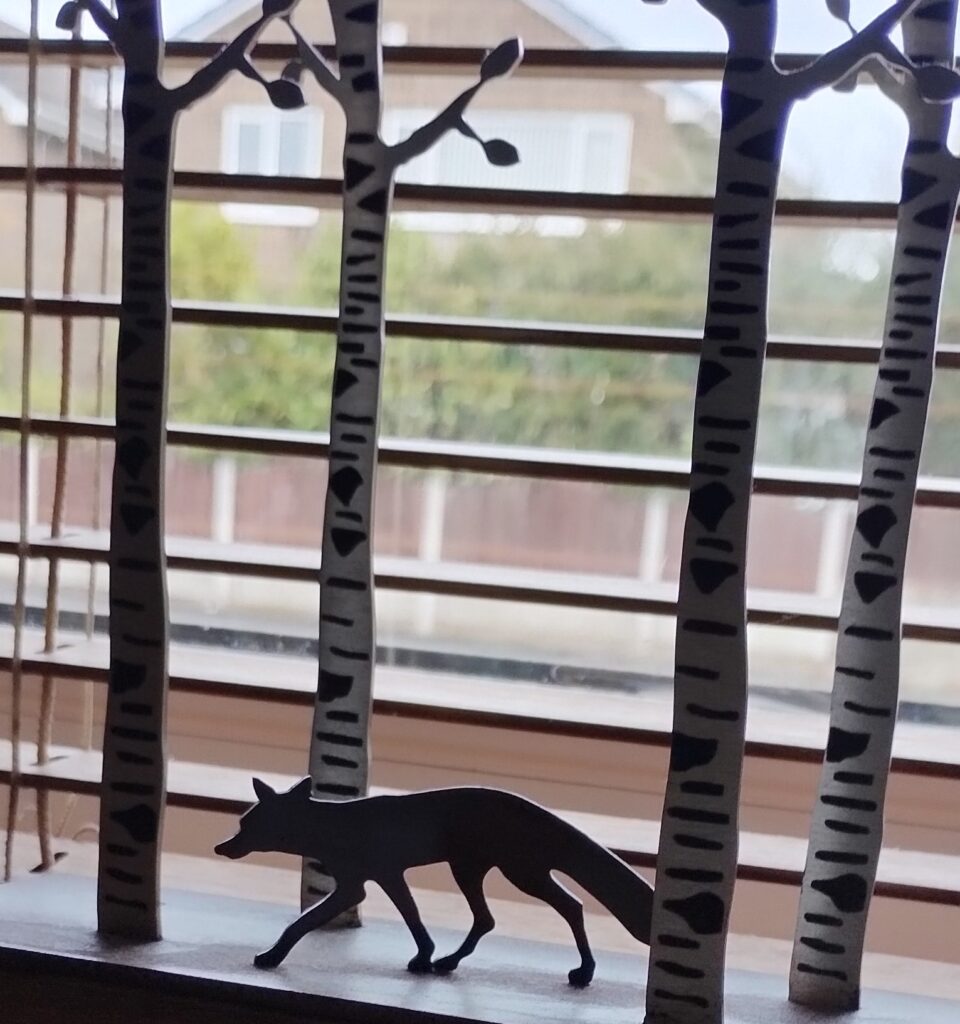
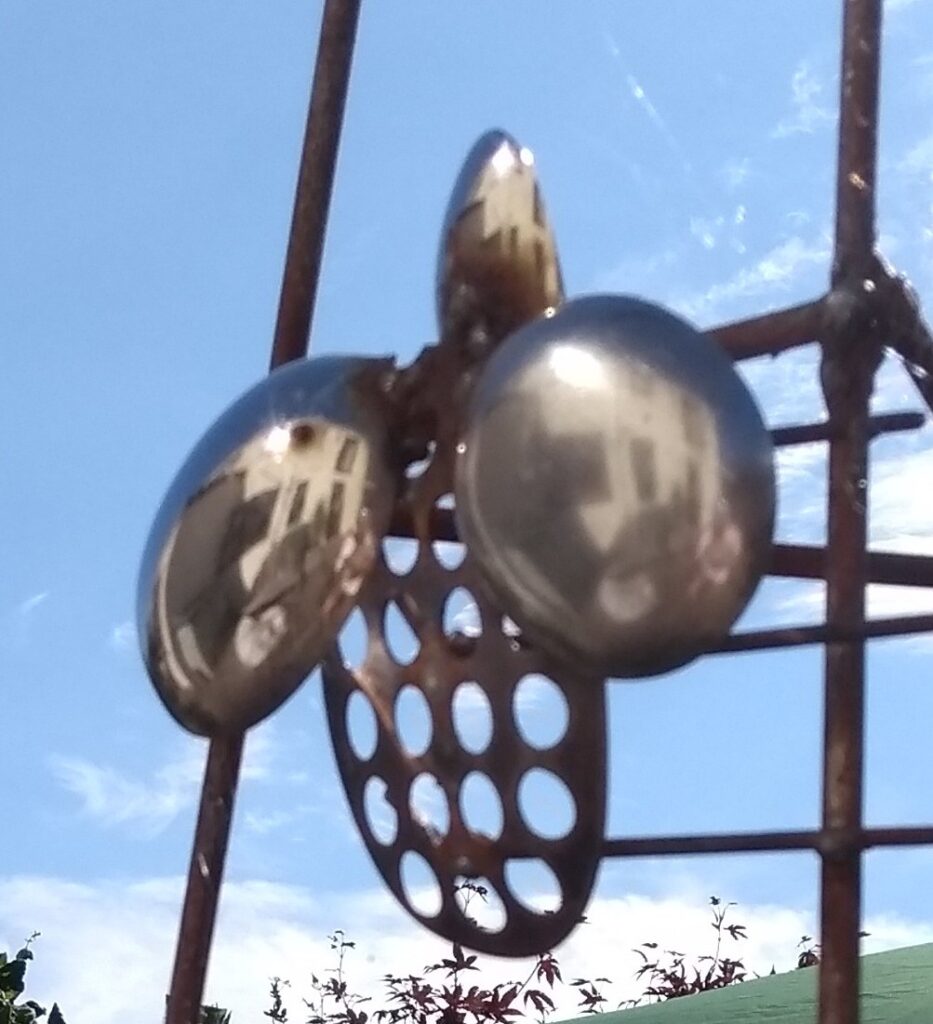

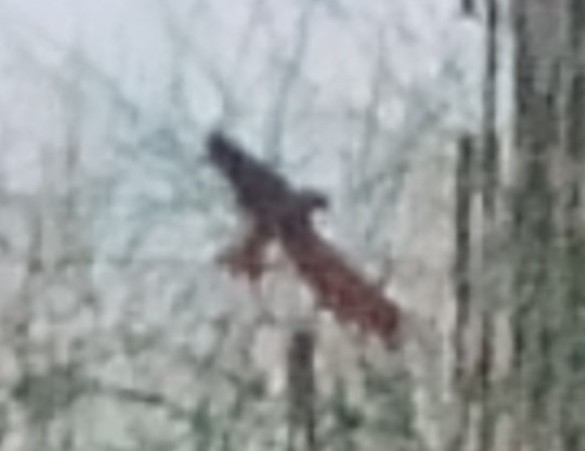



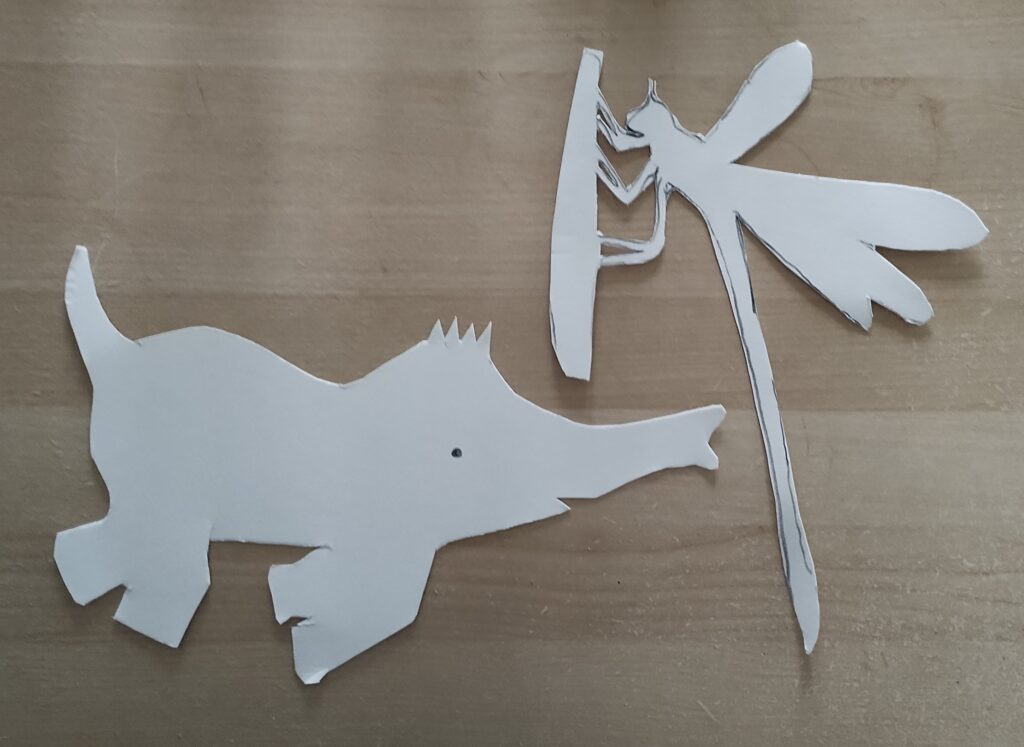
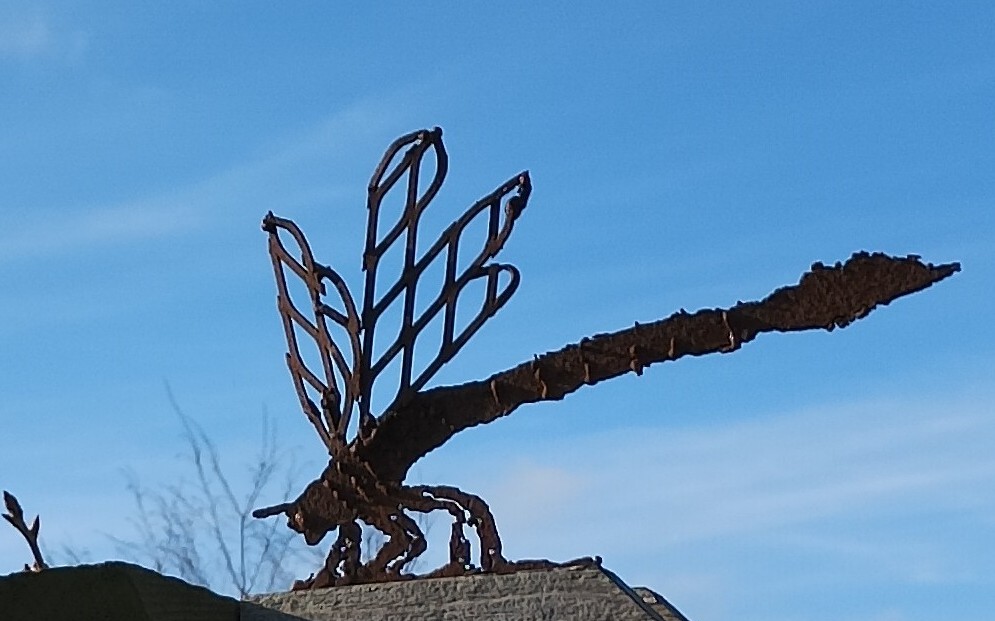
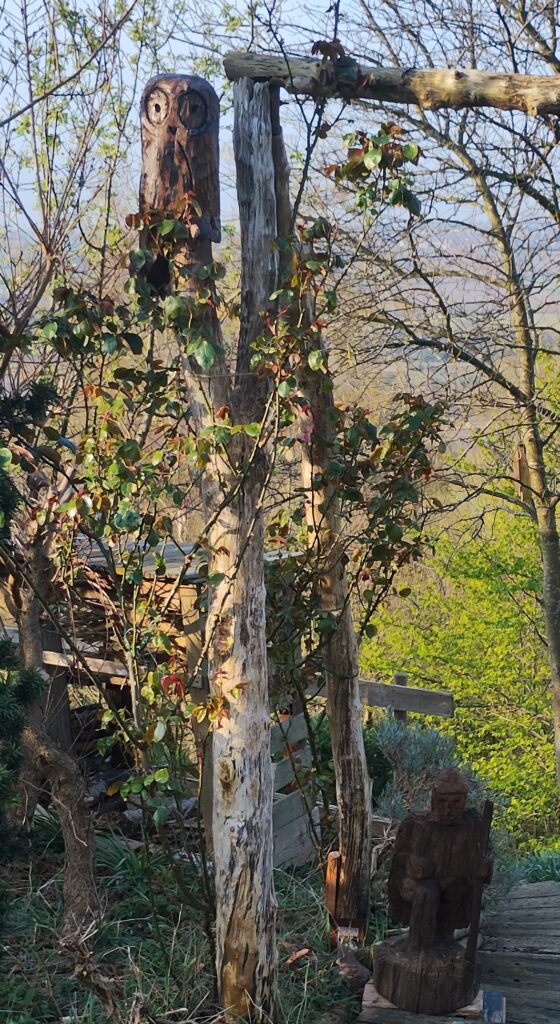
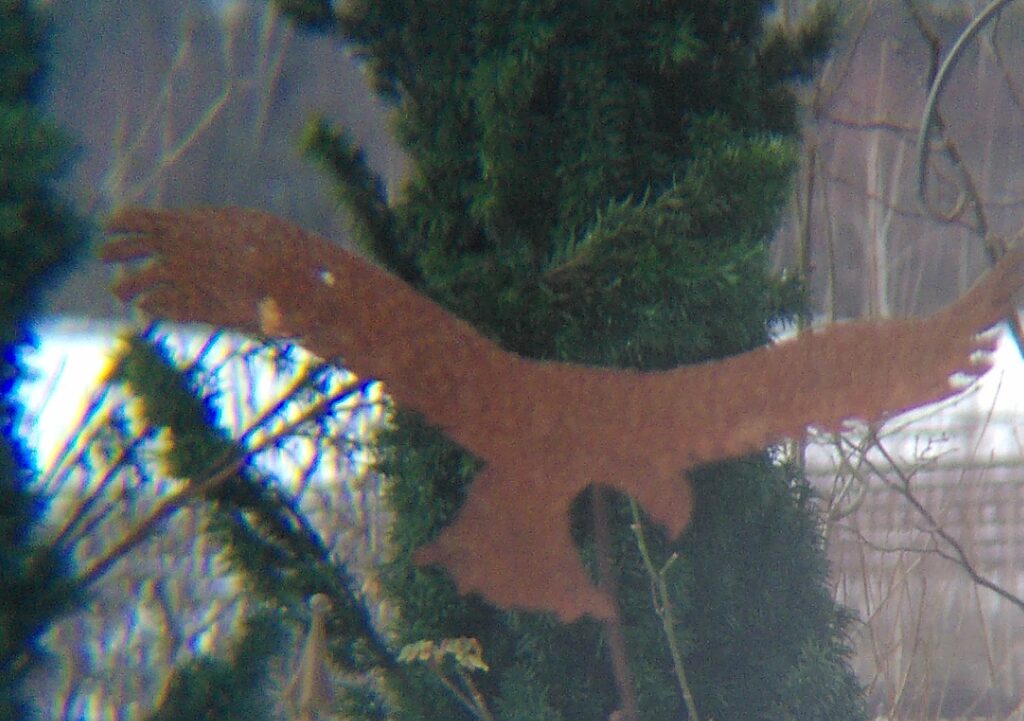
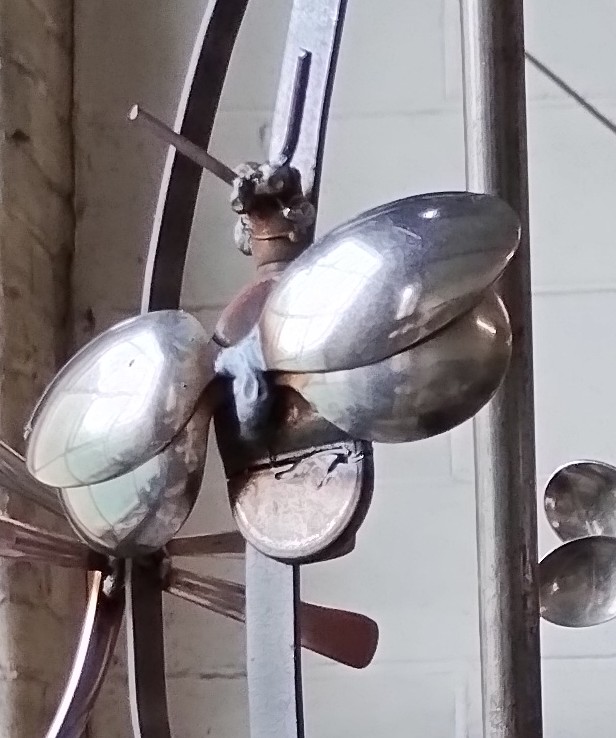

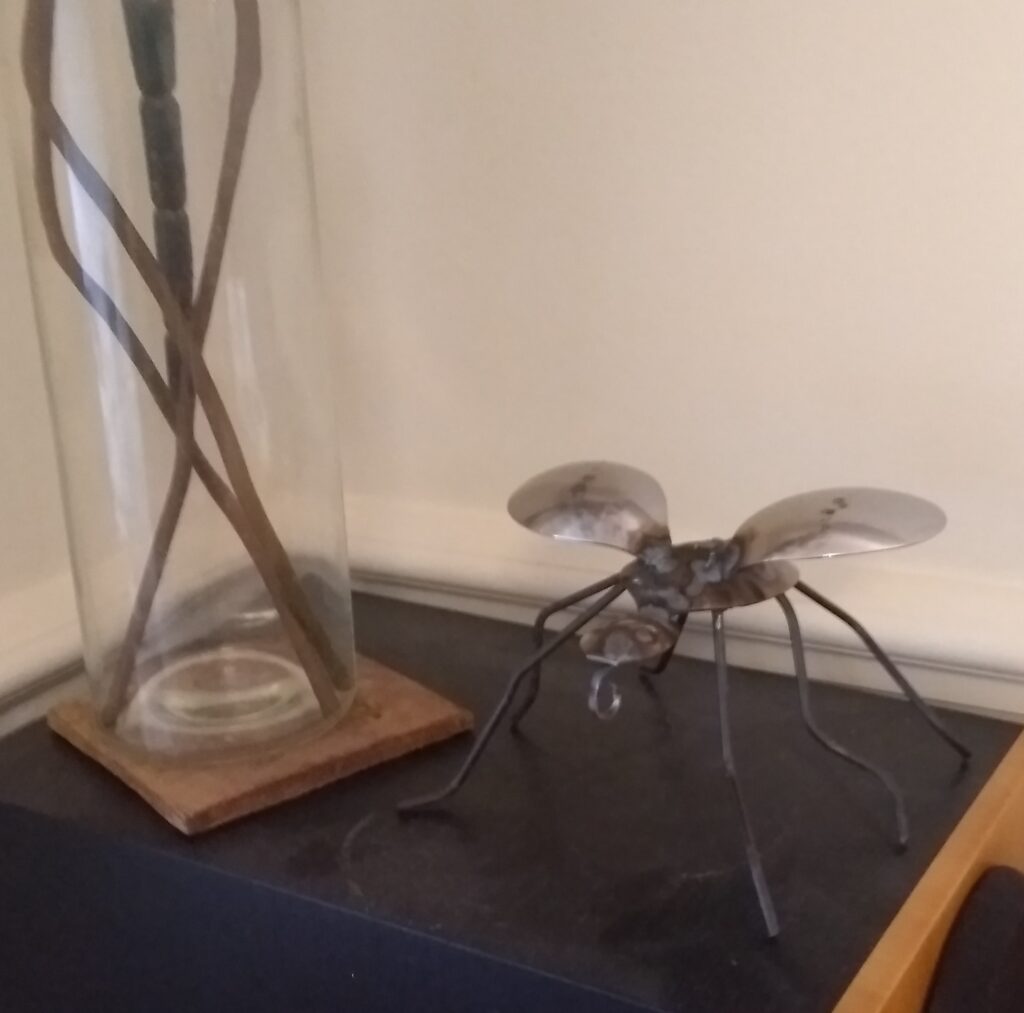
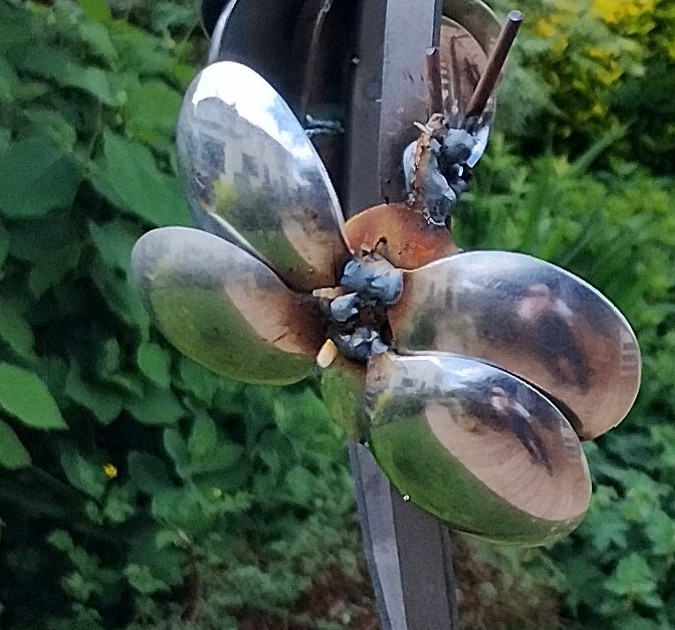
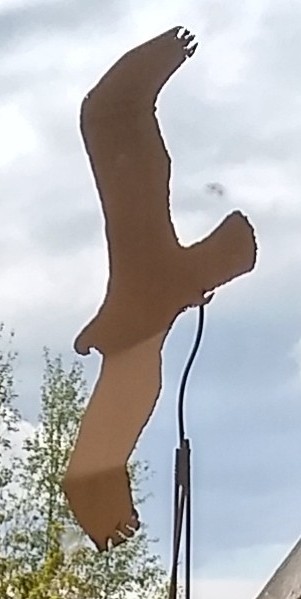
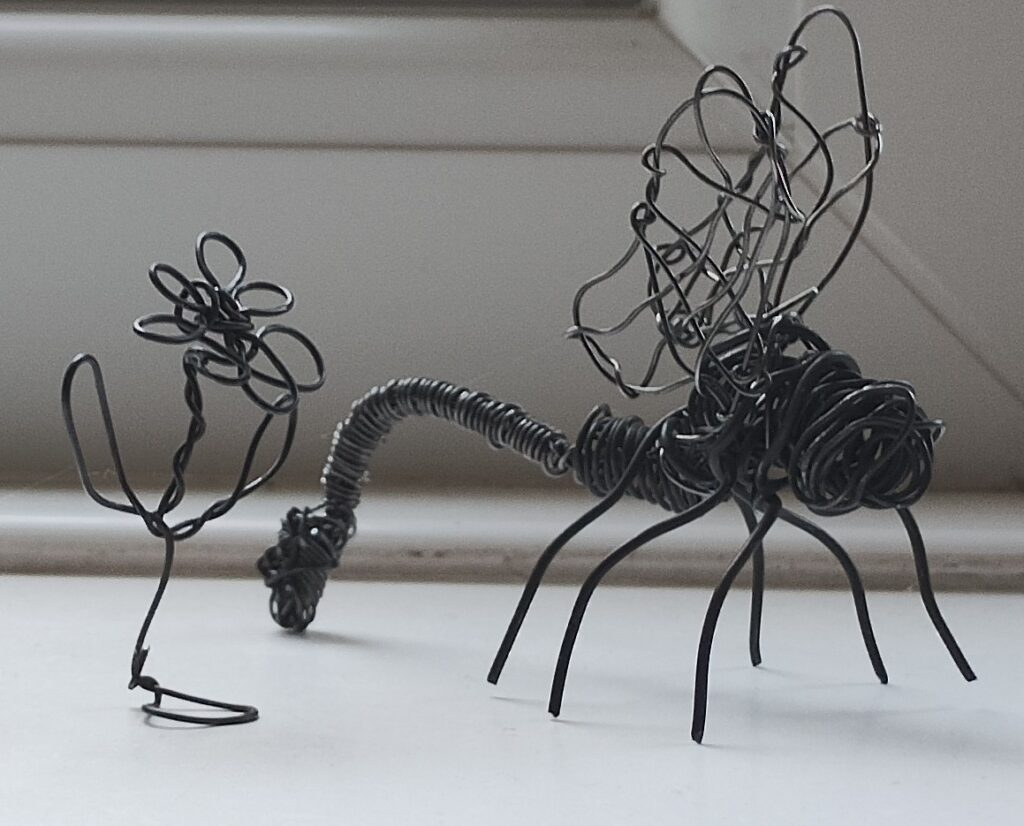
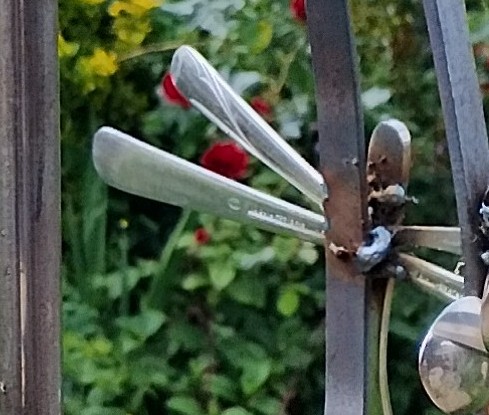
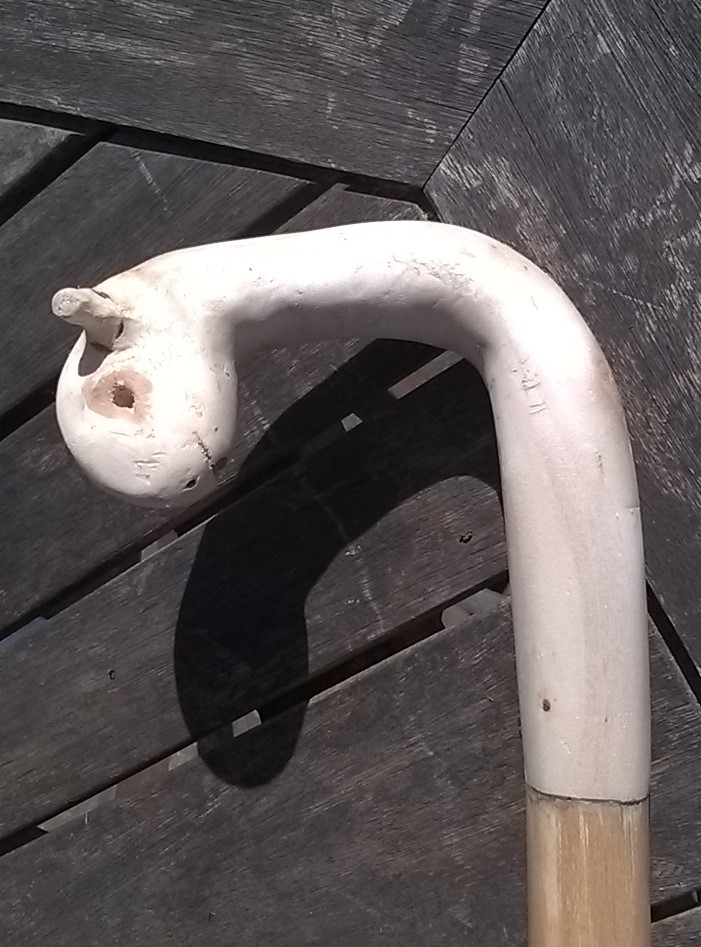
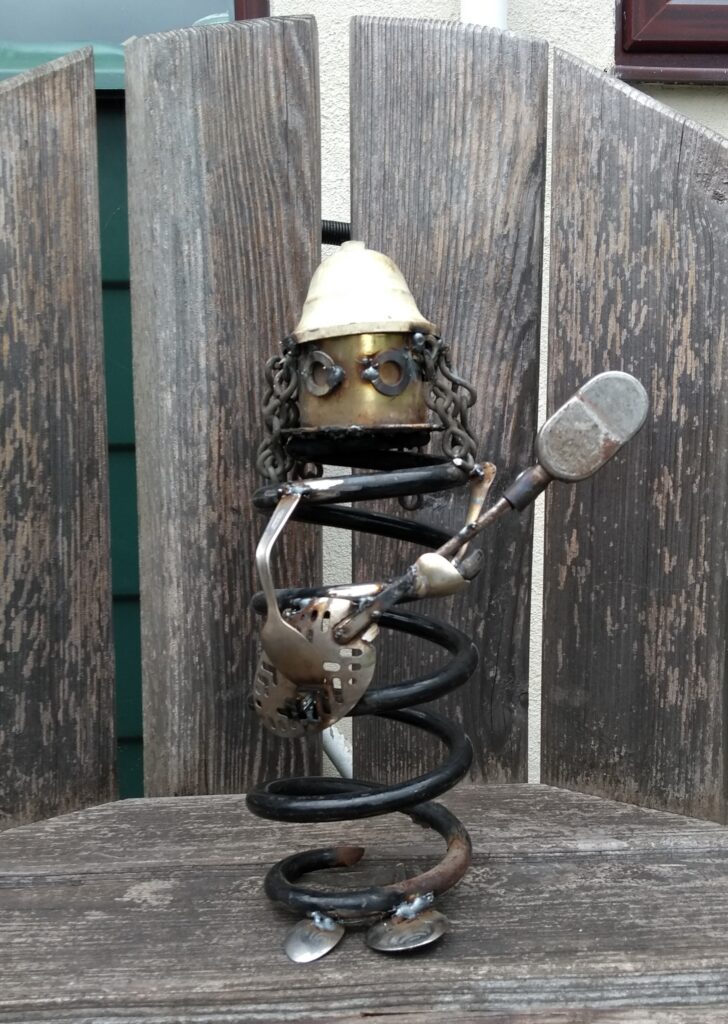
- Renewed Creativity and an Ending
After several years of problems with Arthritis, I’ve been having to reassess some of my creative activities. I’ve given up chair-making, I’m less physical in the garden and sculpture may tail off from now on. I’ve been concentrating on painting but until I joined https://www.shelleyartgroup.com/ I’d been a drifting a bit. Here’s one on Fungi that has been well received:

Here’s one on our obsession with cars that is still ongoing:

I’ve also come to a decision about my involvement with Yorkshire Sculpture Park. I’ve been talking to people about creativity informally at YSP for around 40 years, but around 15 years ago I started taking tours round there, doing the same. Apart from hip replacements I have been doing that ever since till last year. I have tried other roles there but have not been comfortable with them. You have to know your own limitations. So farewell and thanks to all the people who have helped me at YSP over the years. You may see me wandering around chatting to random people or sitting sketching. I still have my own series on trees to fill up and and my very rapid sketch of the herons could do with more care and attention. Sayonara.
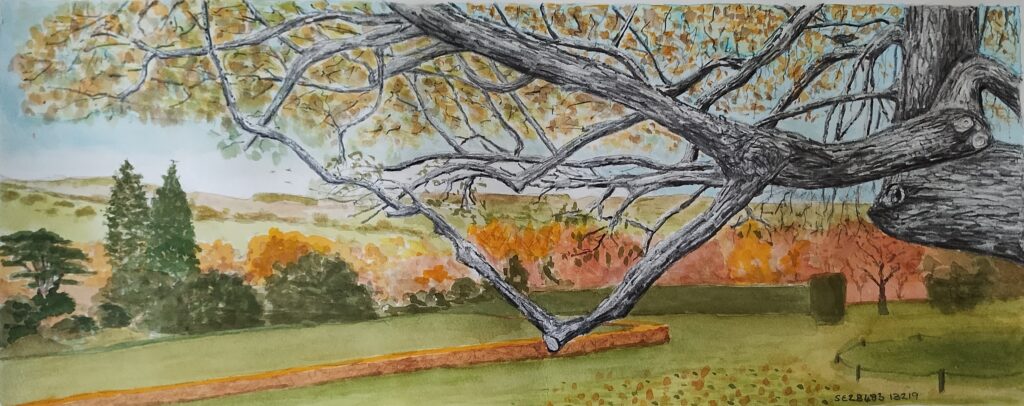

- Accidental Time-Lapse
A clumsy fingered mistake edited to remove some gaps in activity.
- Spring and flowers and old friends come back to life
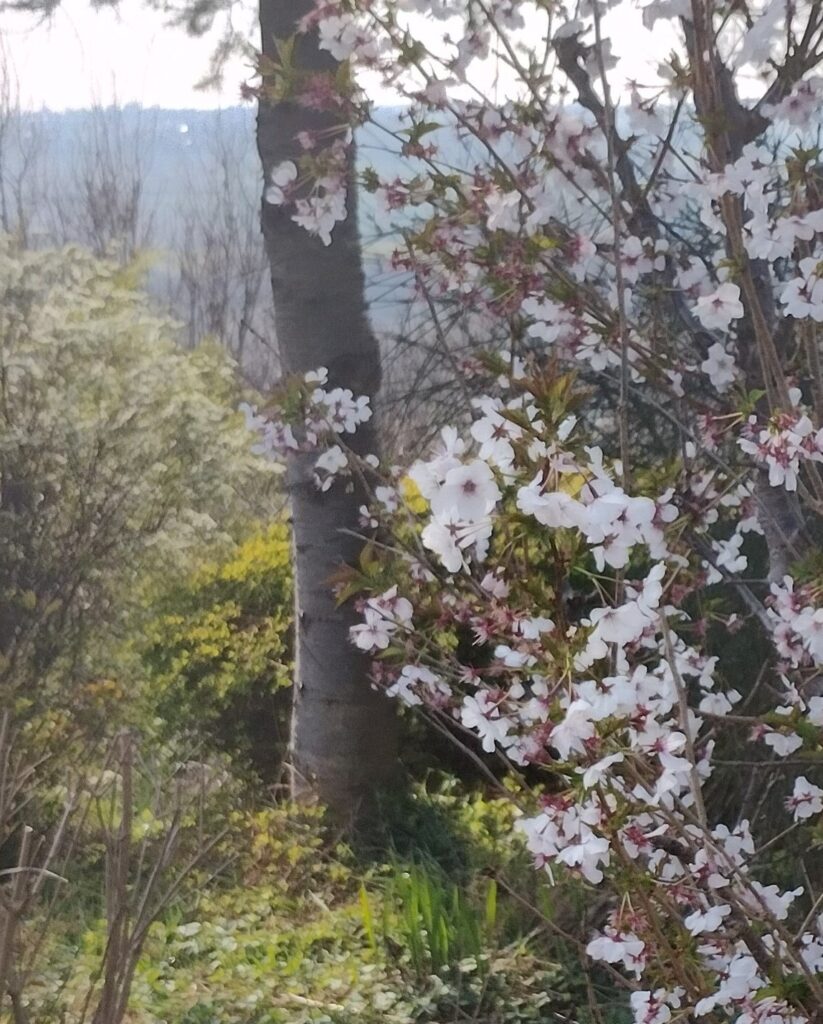
Flaky Bark Cherry 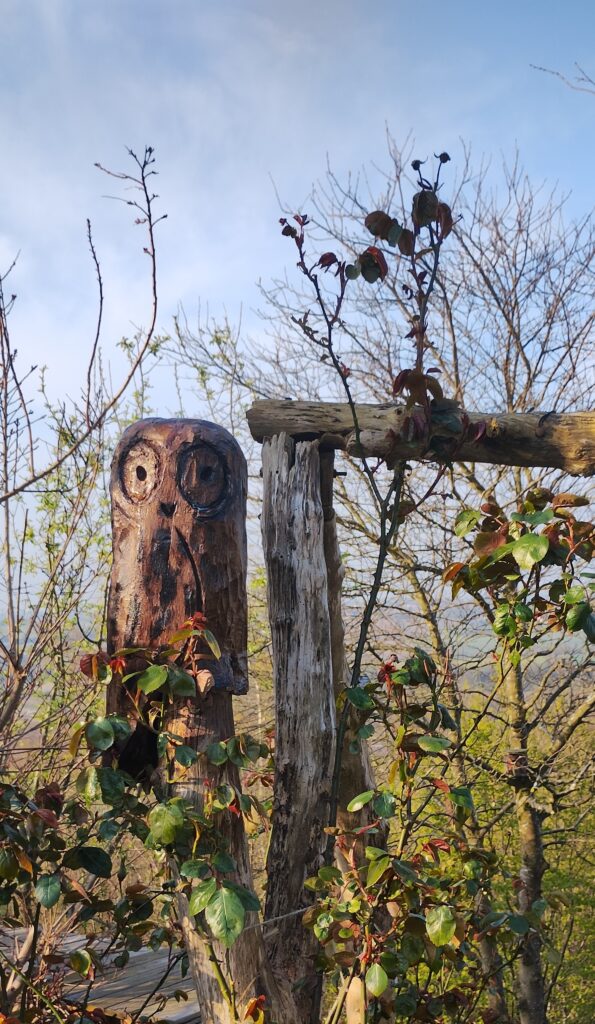
Restored Owl 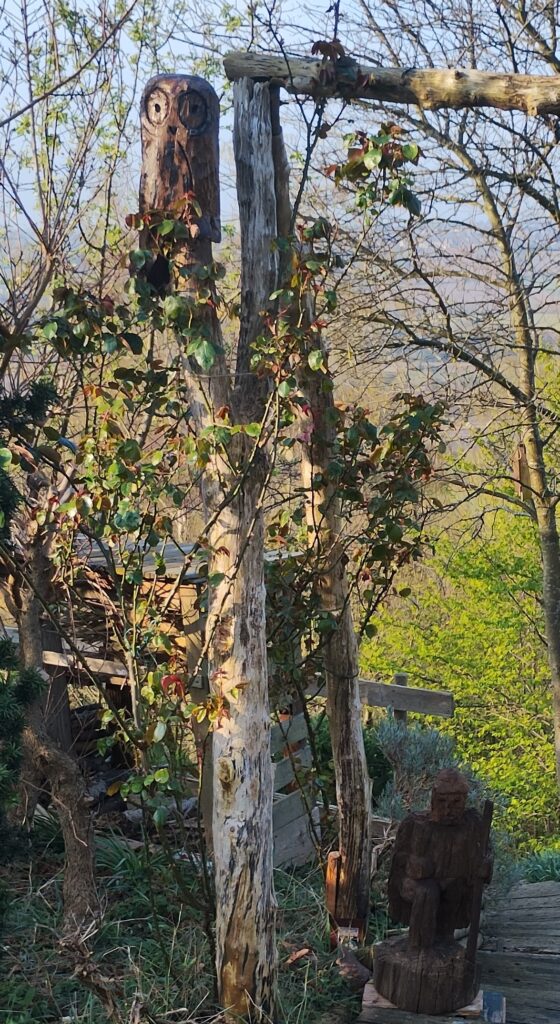
Owl and Garden Guardian - We are up in Nether Wasdale
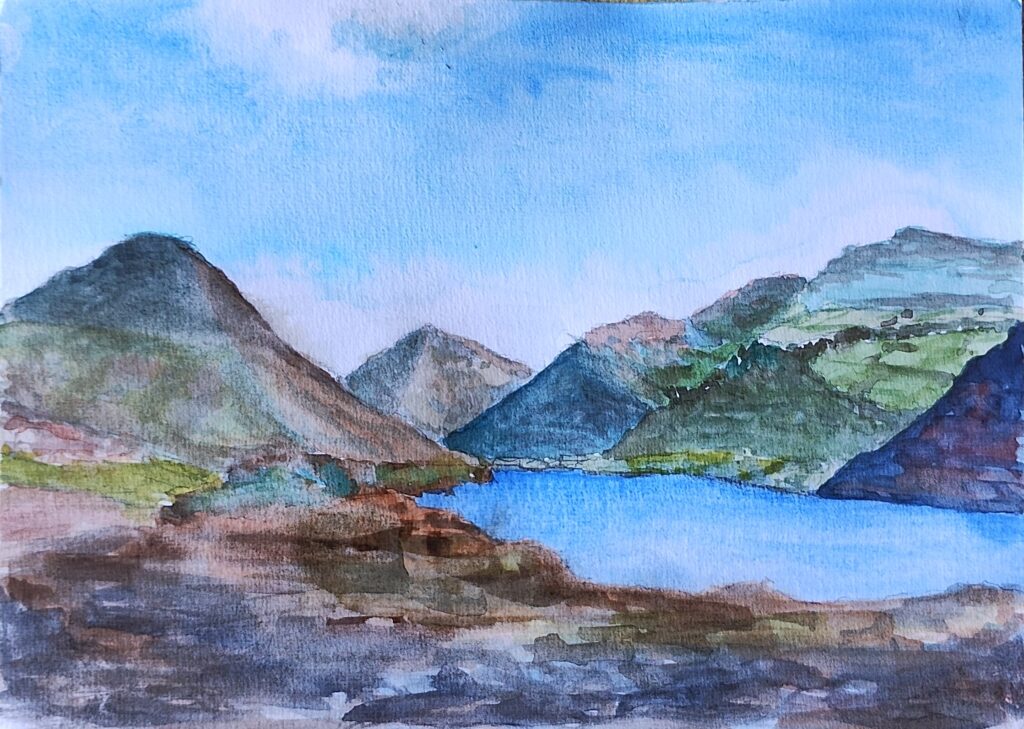
Ruth climbed Scafell Crags today. I painted the scene from below. 
Later we went for a walk lower down and Ruth left me to paint. The kind people at Wasdale Hall Youth Hostel gave us a warm welcome for a cup of tea. 
Another day Ruth went on a horseshoe walk round Pillar. I painted the Wasdale Infinity Pool and later Scafell over the trees from the Wasdale Head car park. 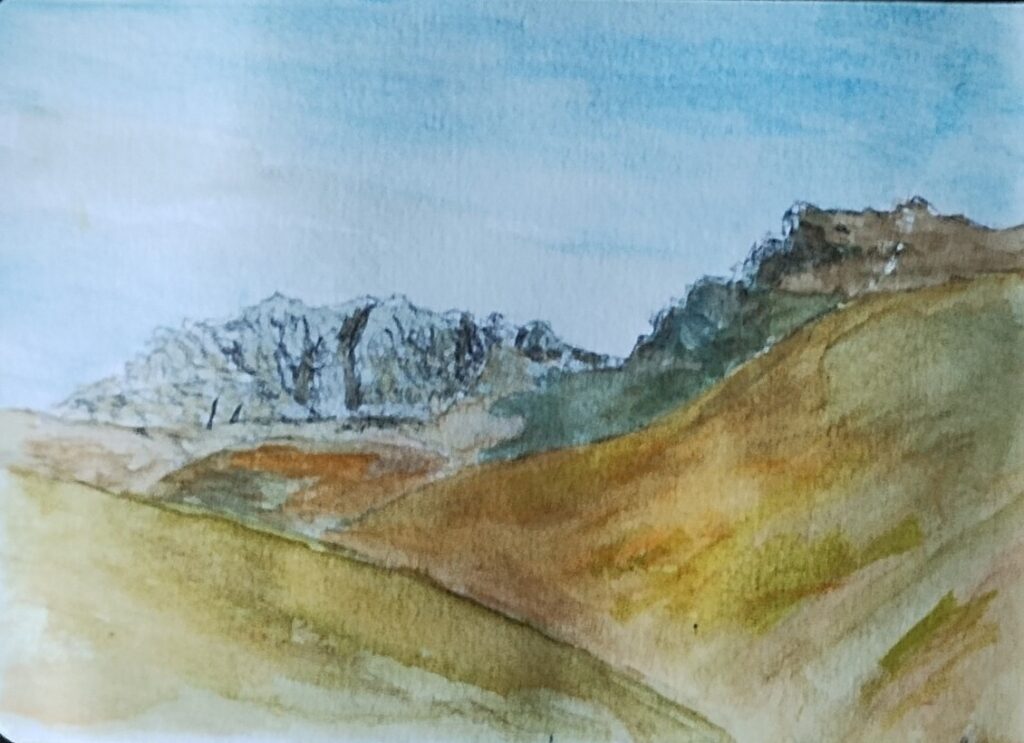
- Early March 2025
Some flowers on the edge of going over, some here, some on the way. Time for planting out the more hardy, tidying up paths and edges and sitting enjoying the shapes and colours.
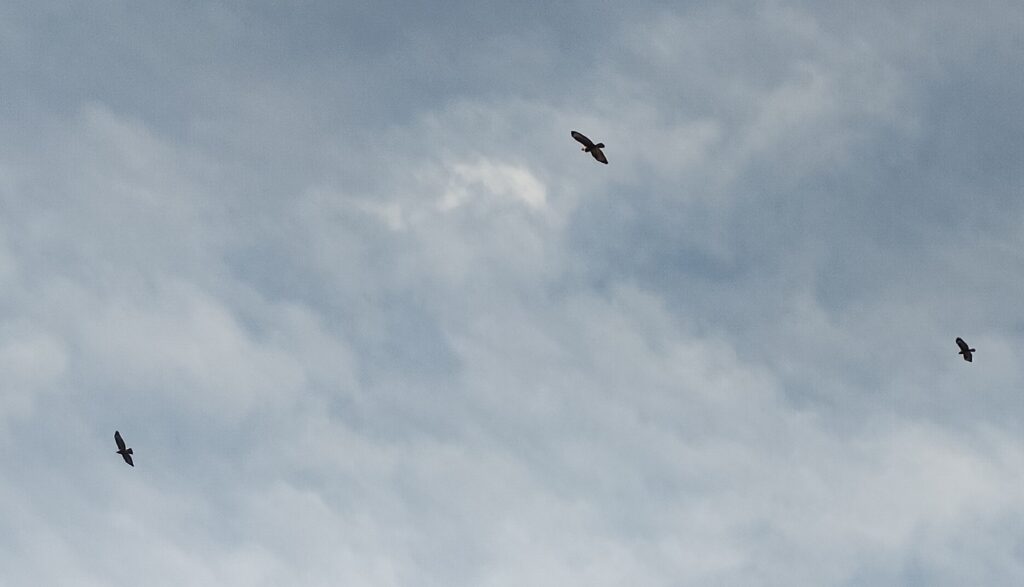
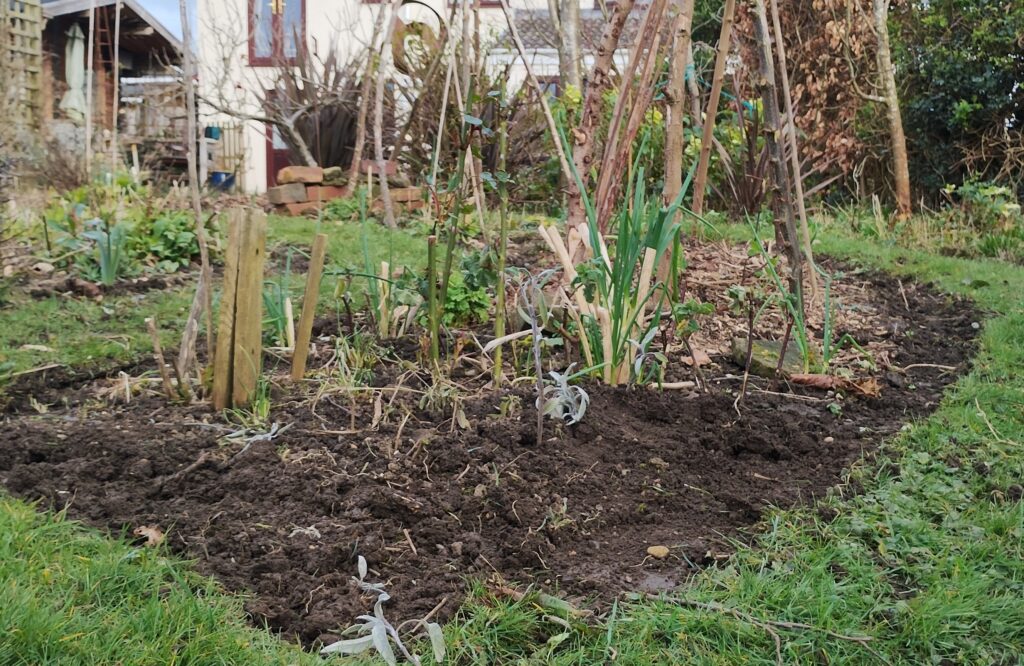
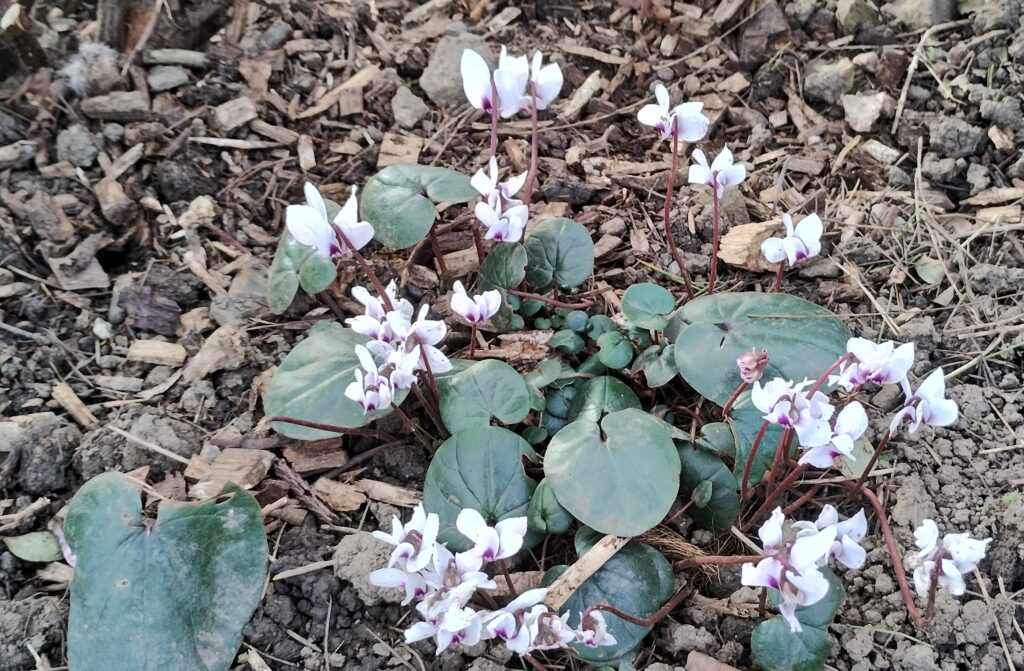
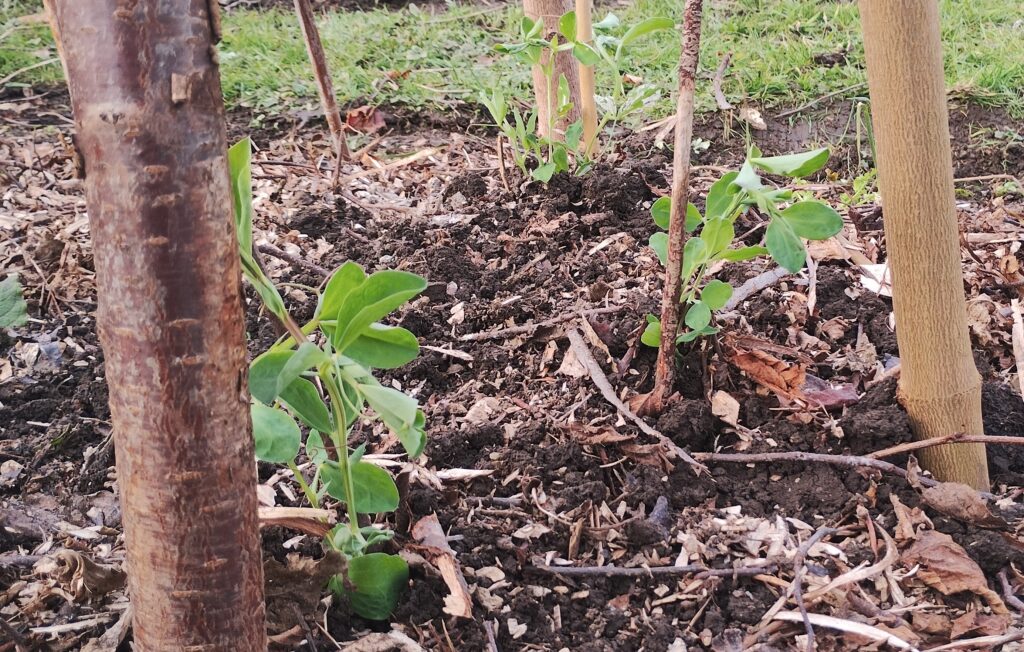
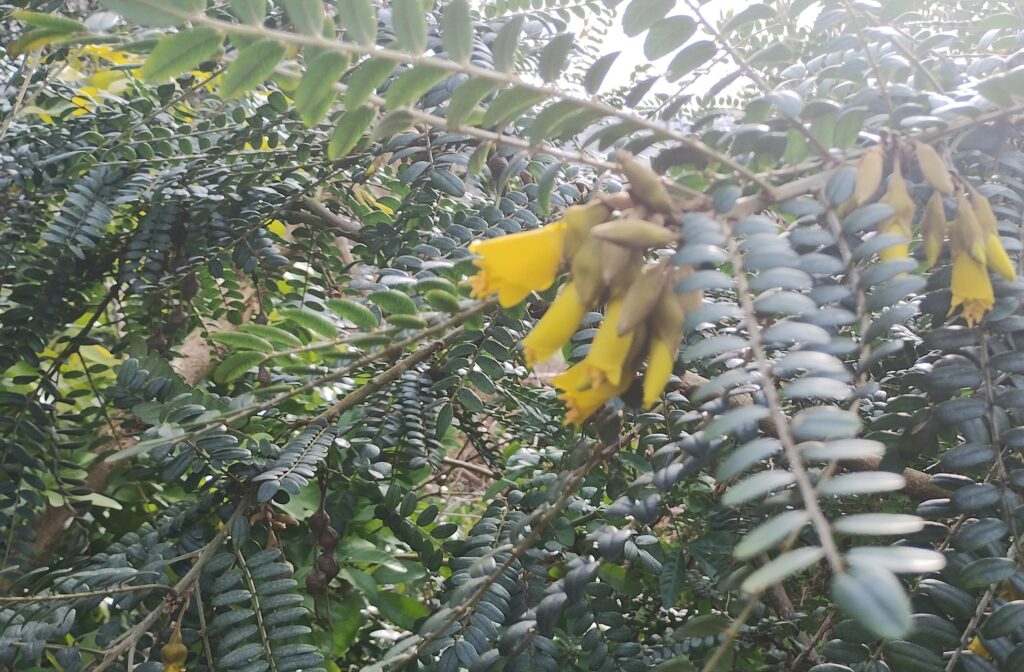
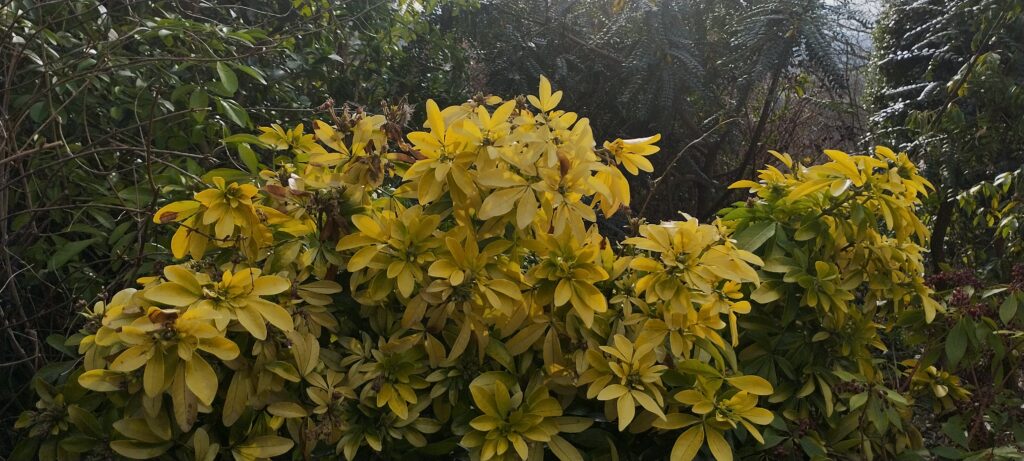
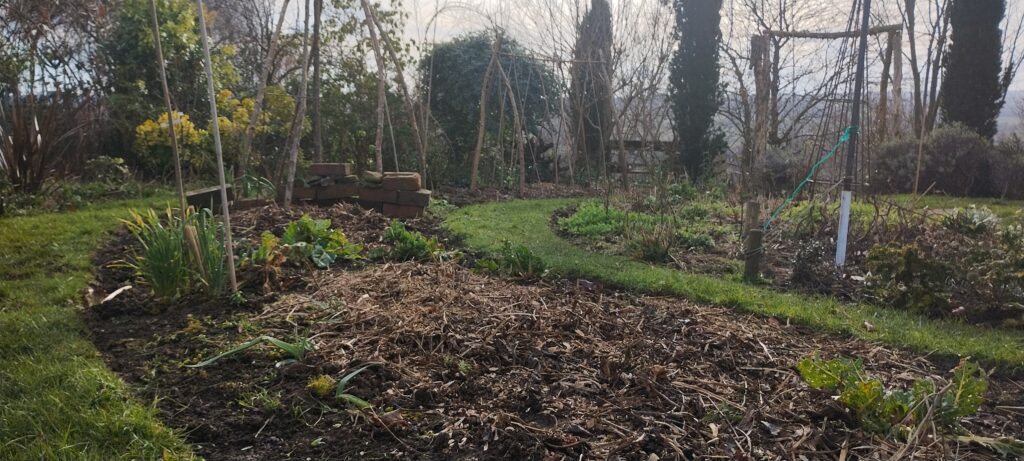

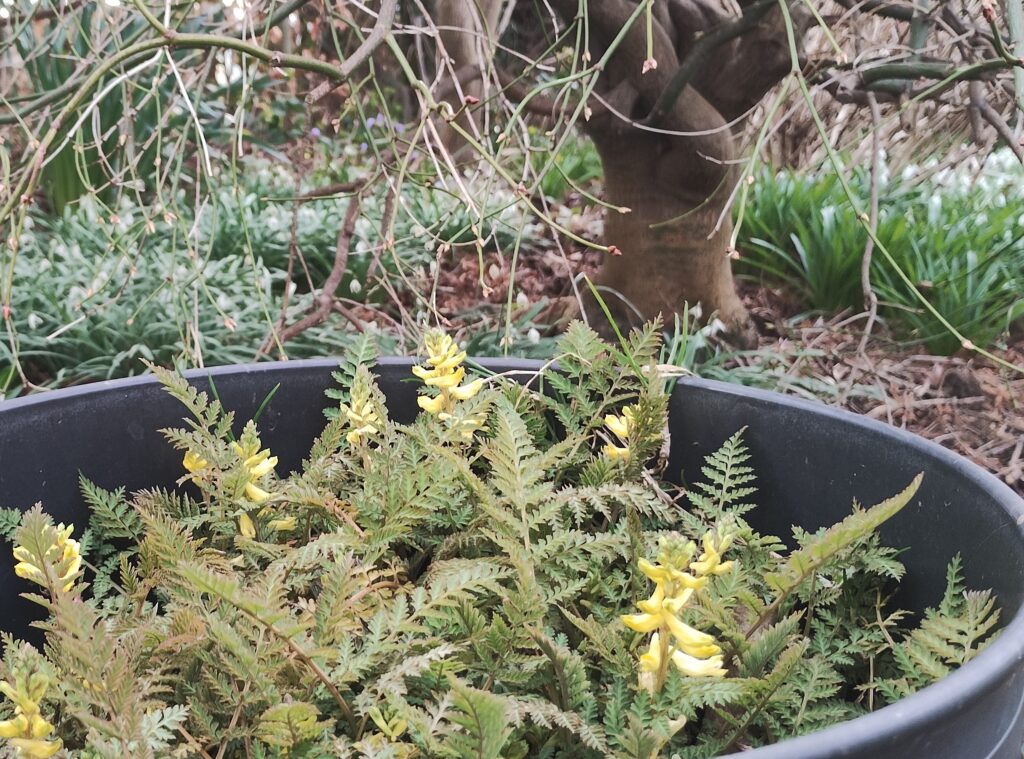
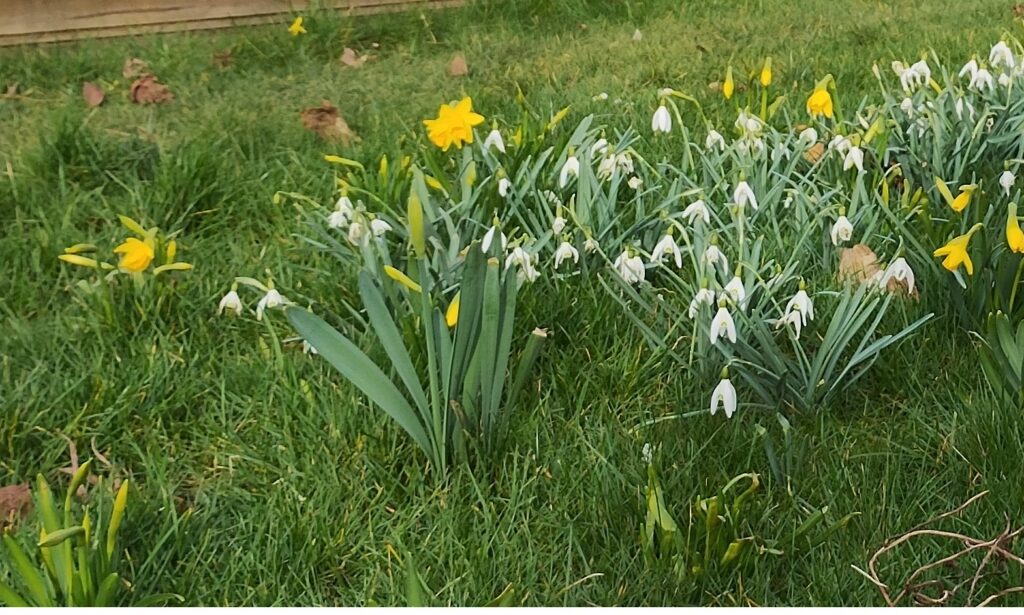

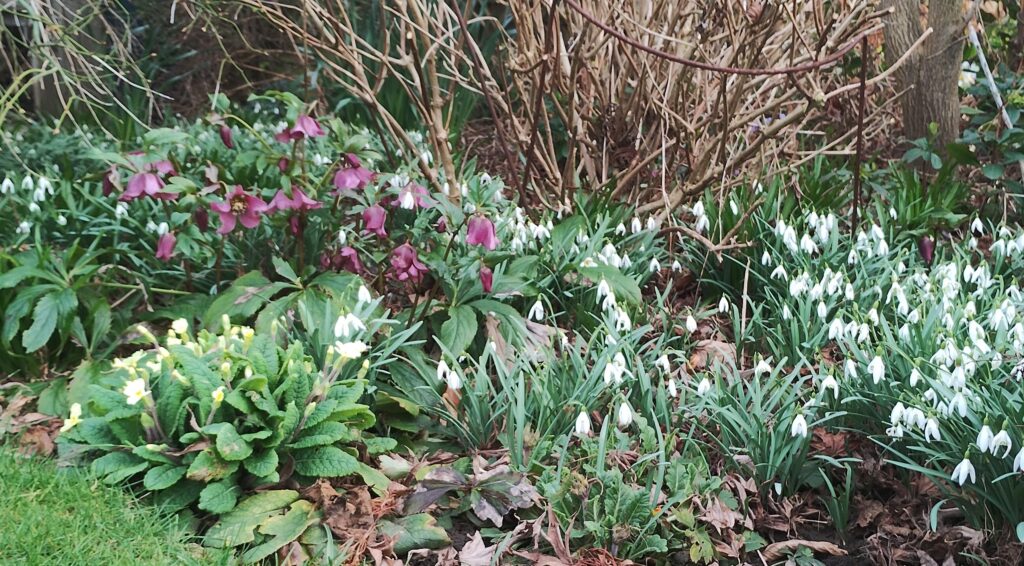
- Garden Fungi
A collection of what has been found in our garden over the years. Ruth is always there somewhere.
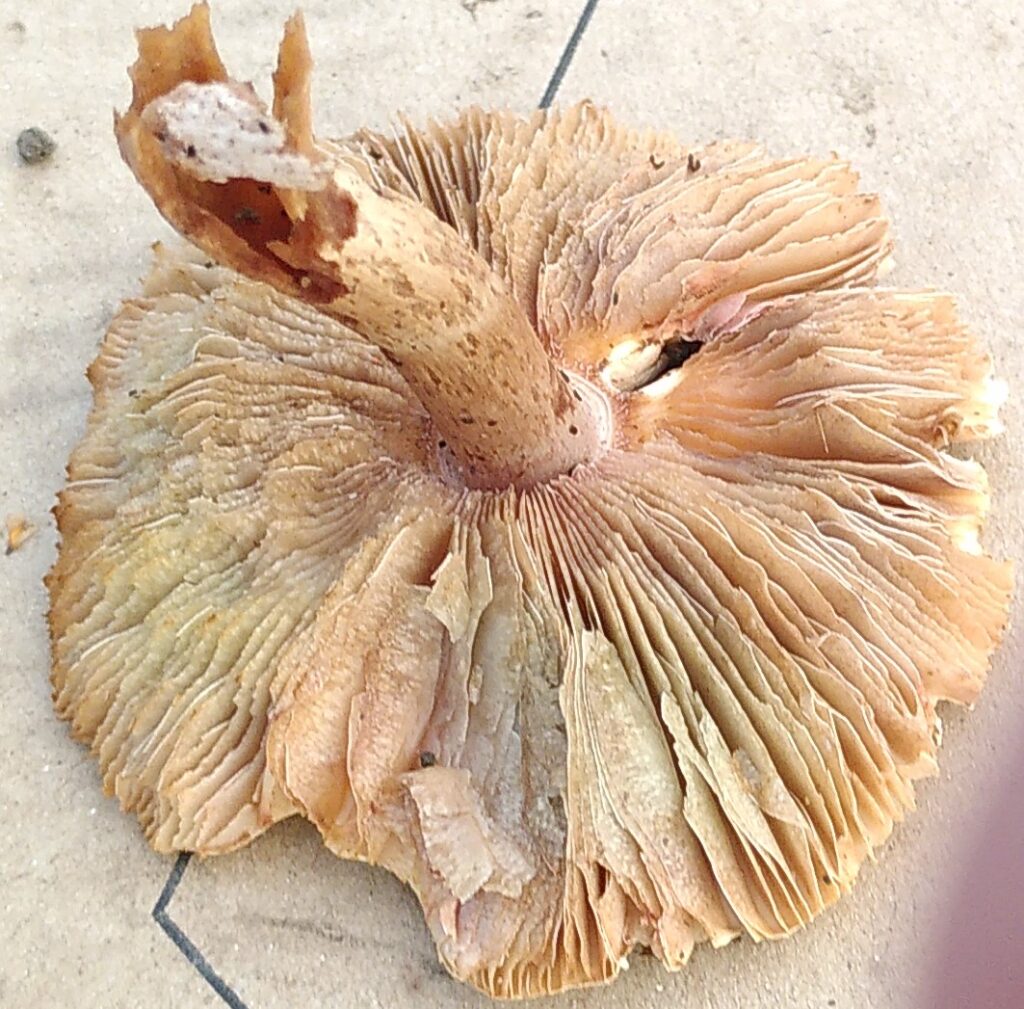
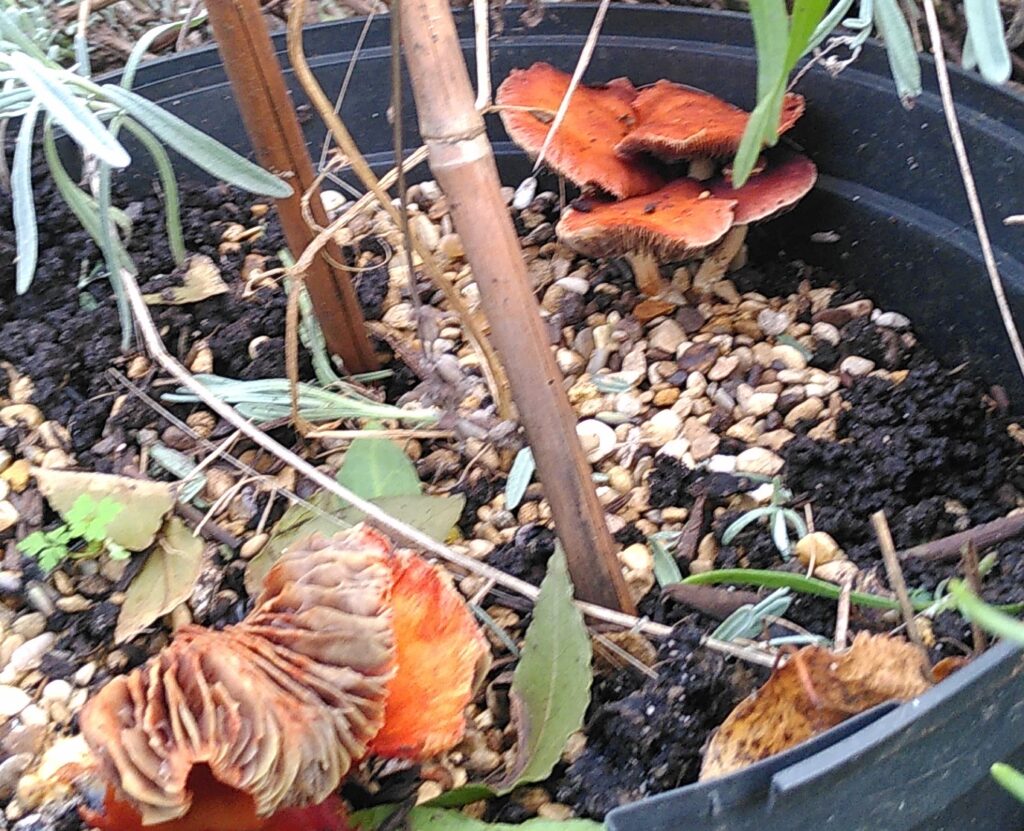
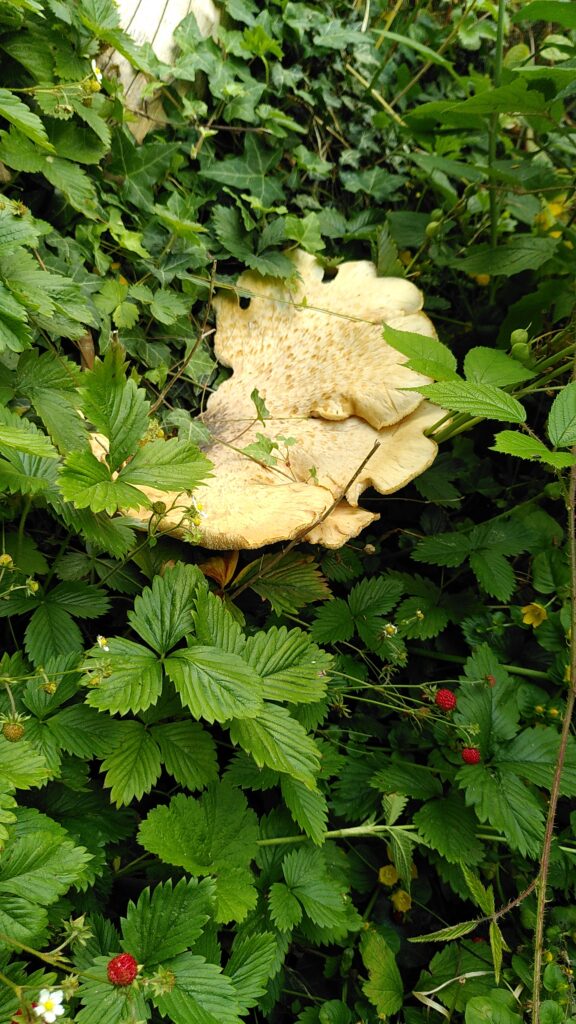





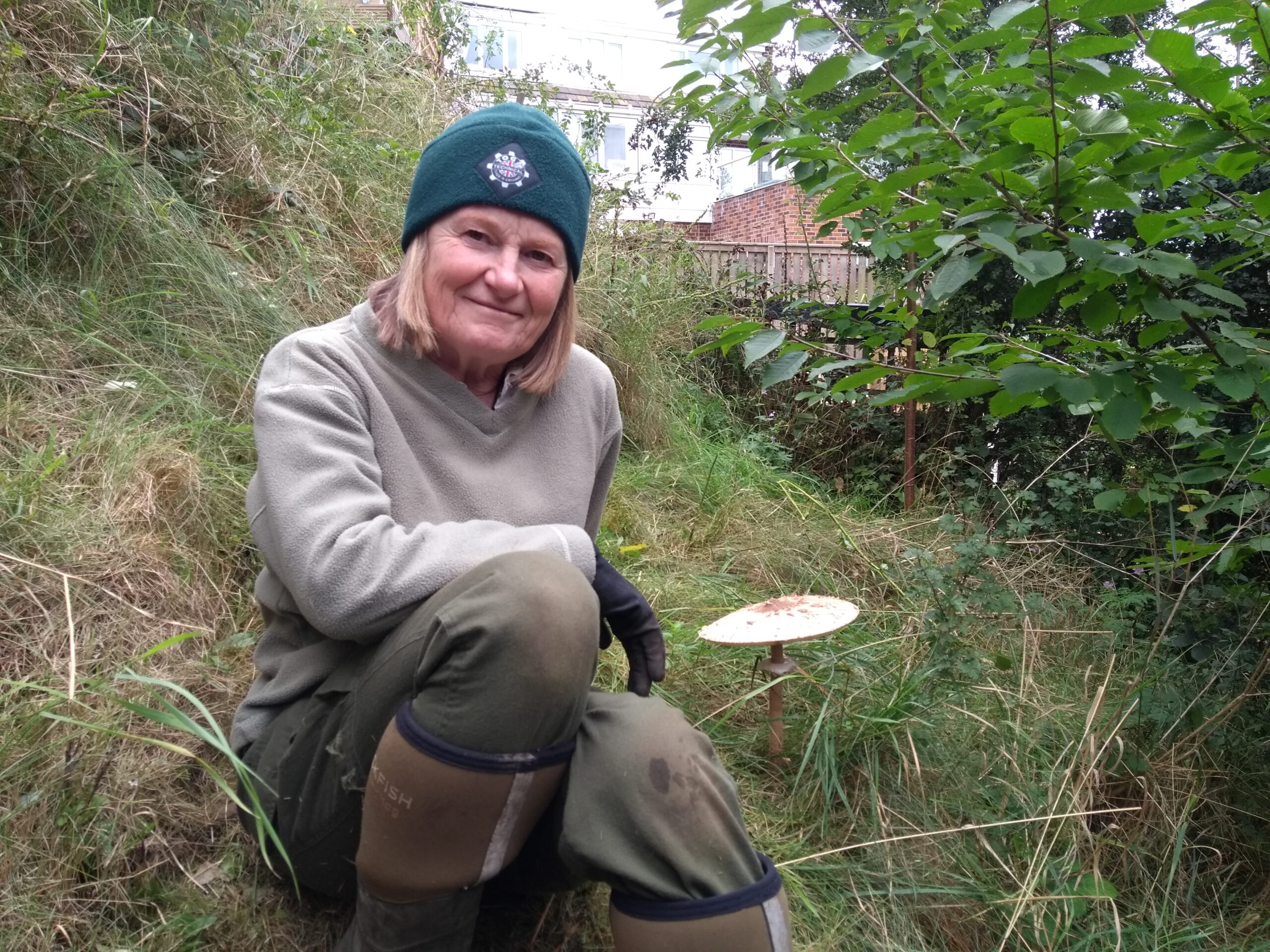
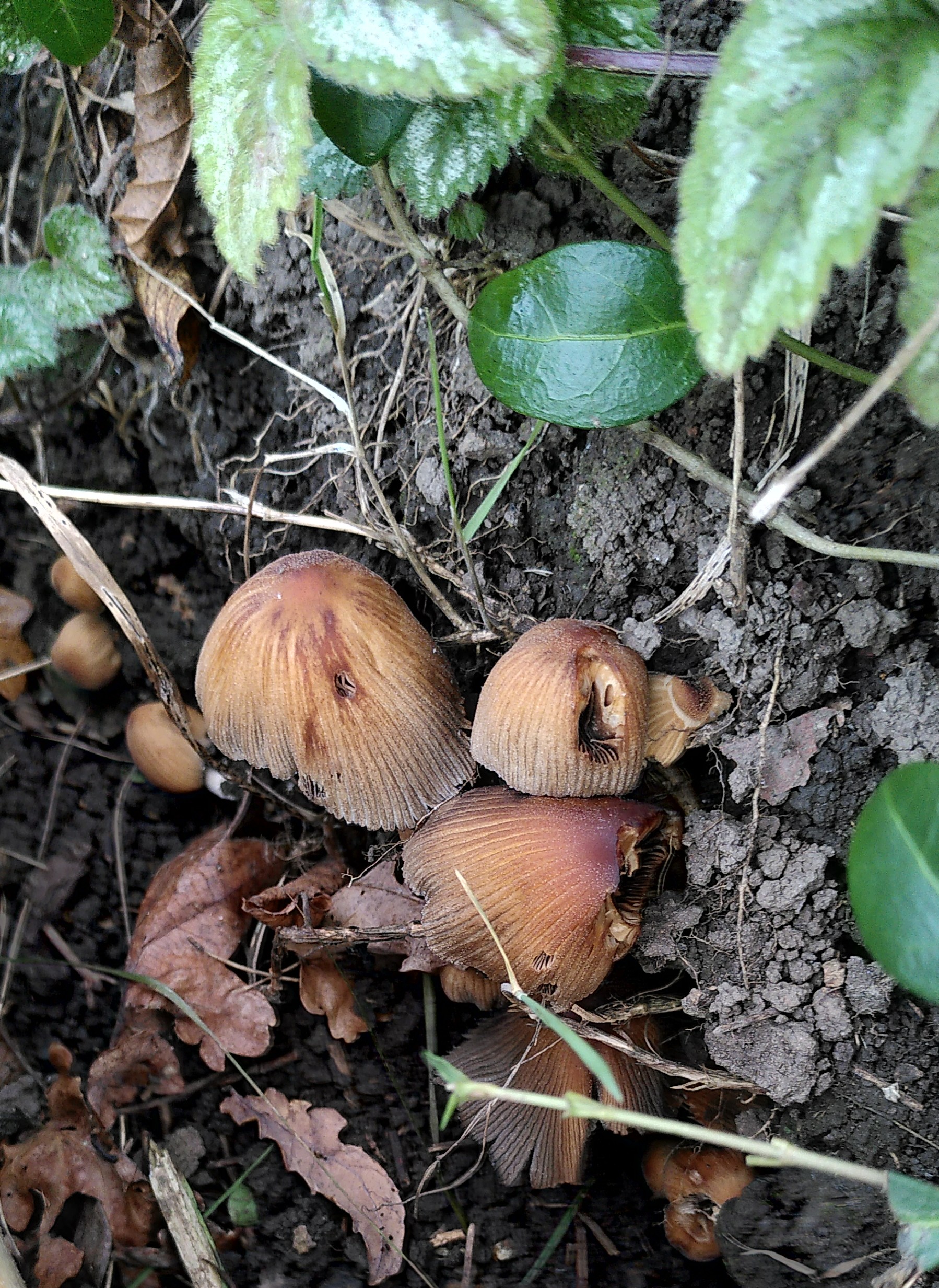
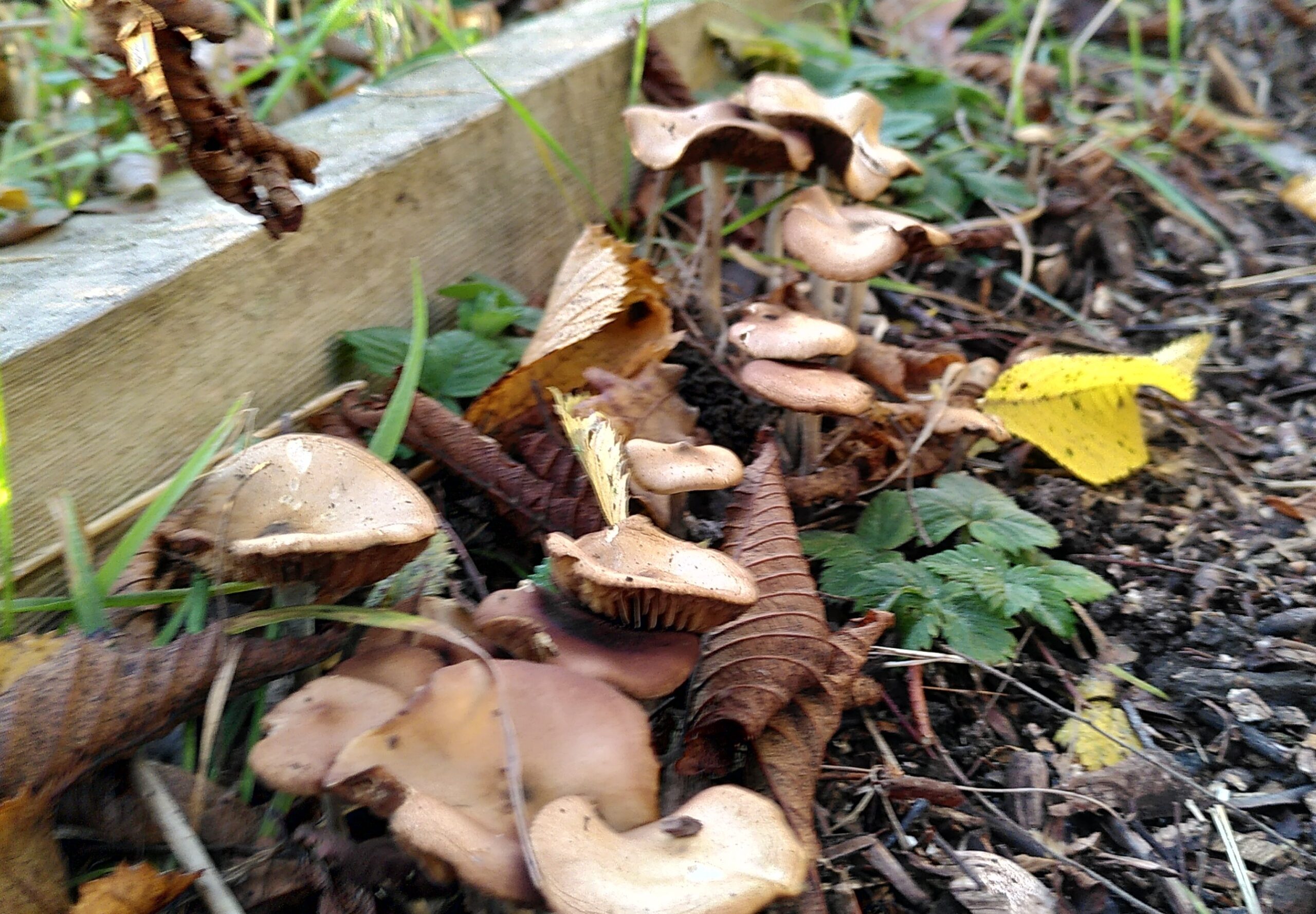

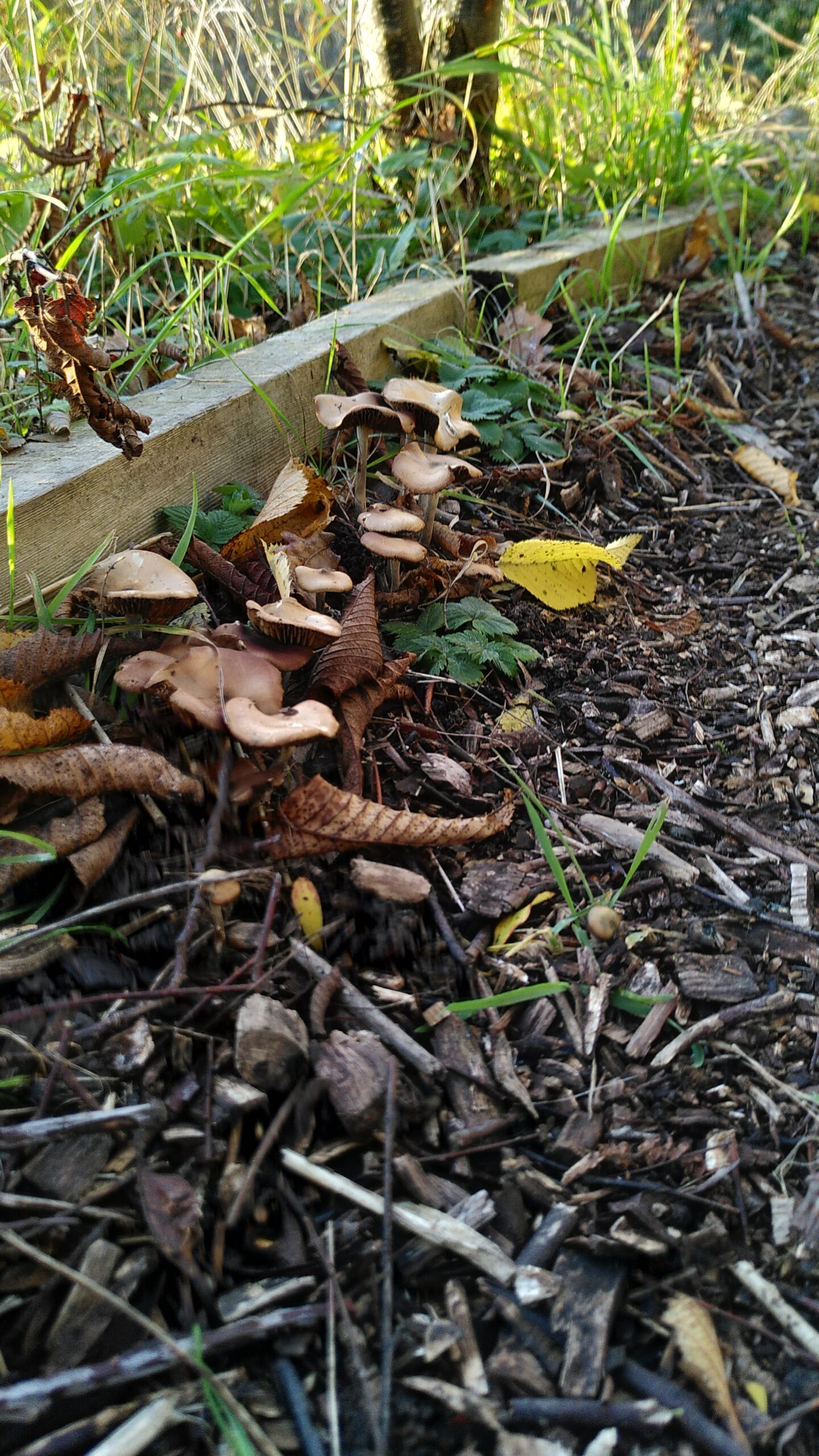
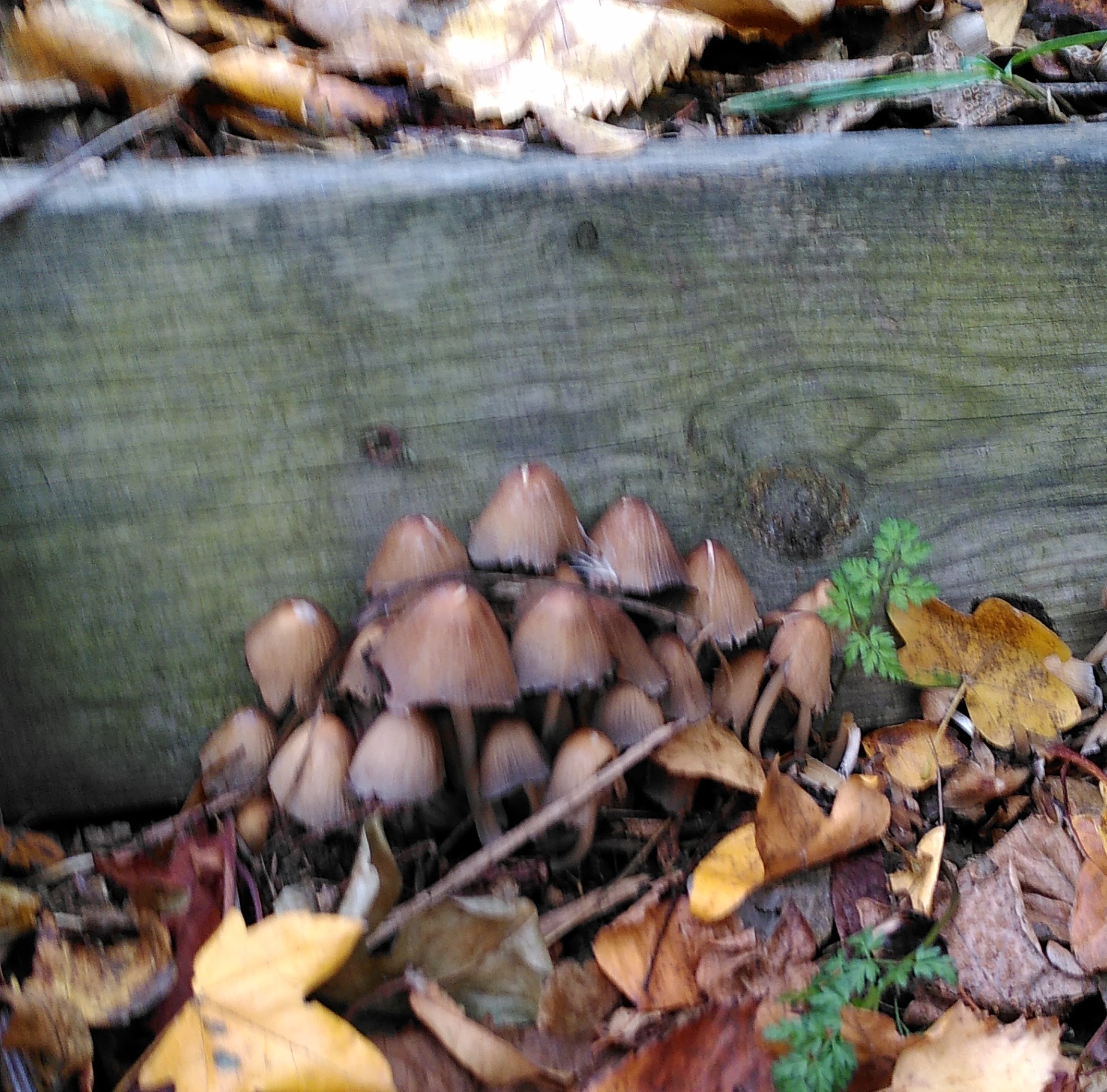
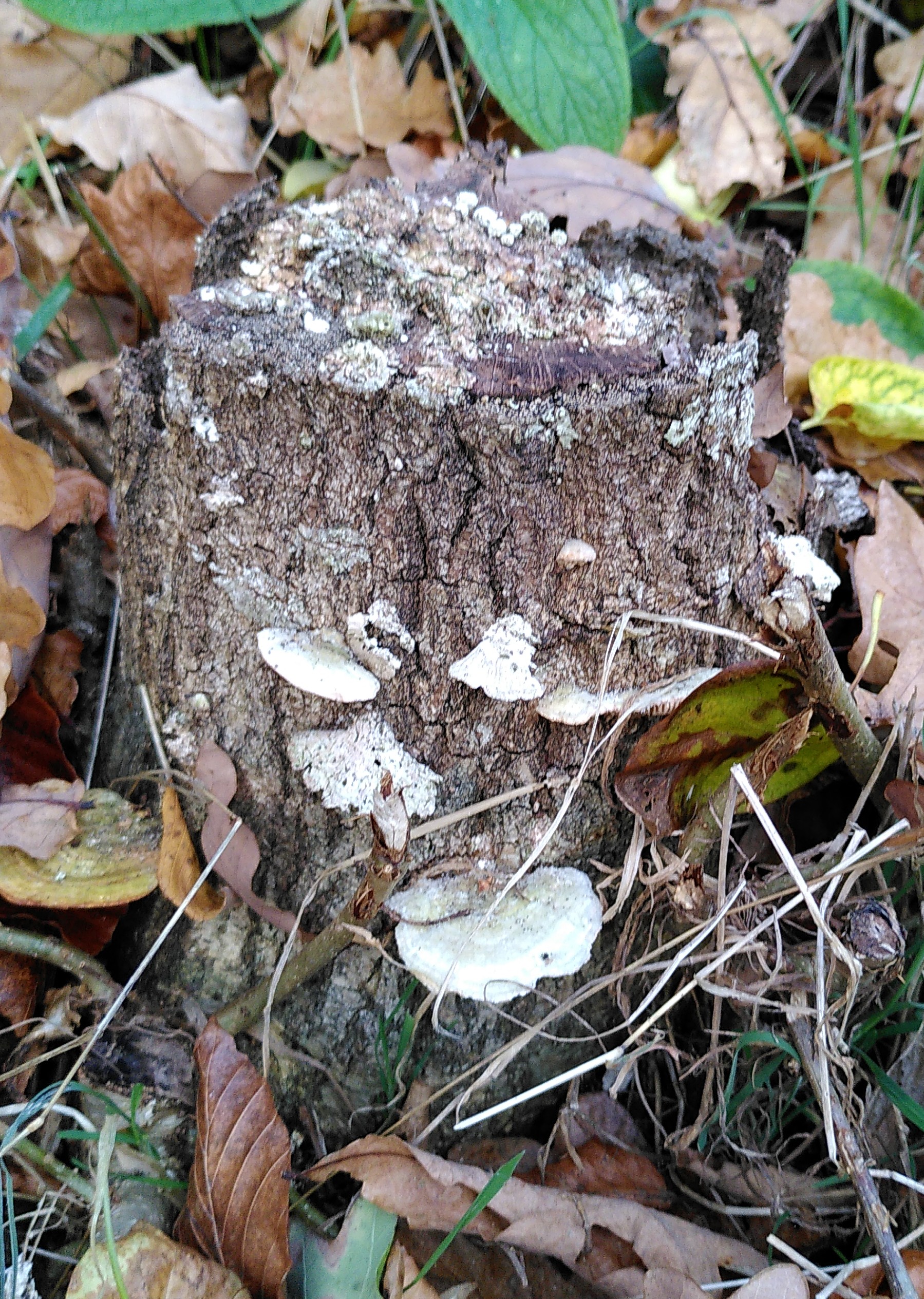
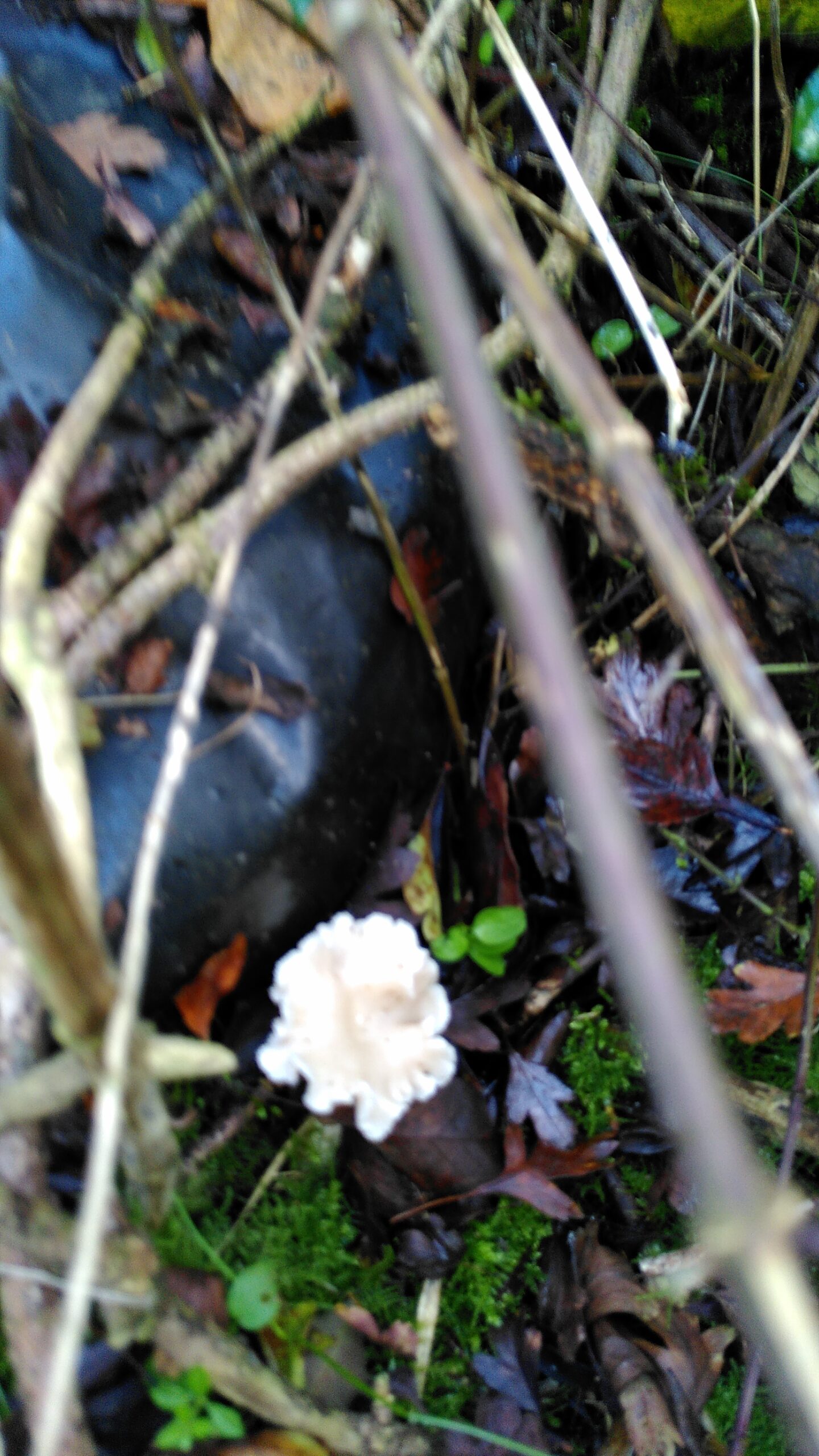
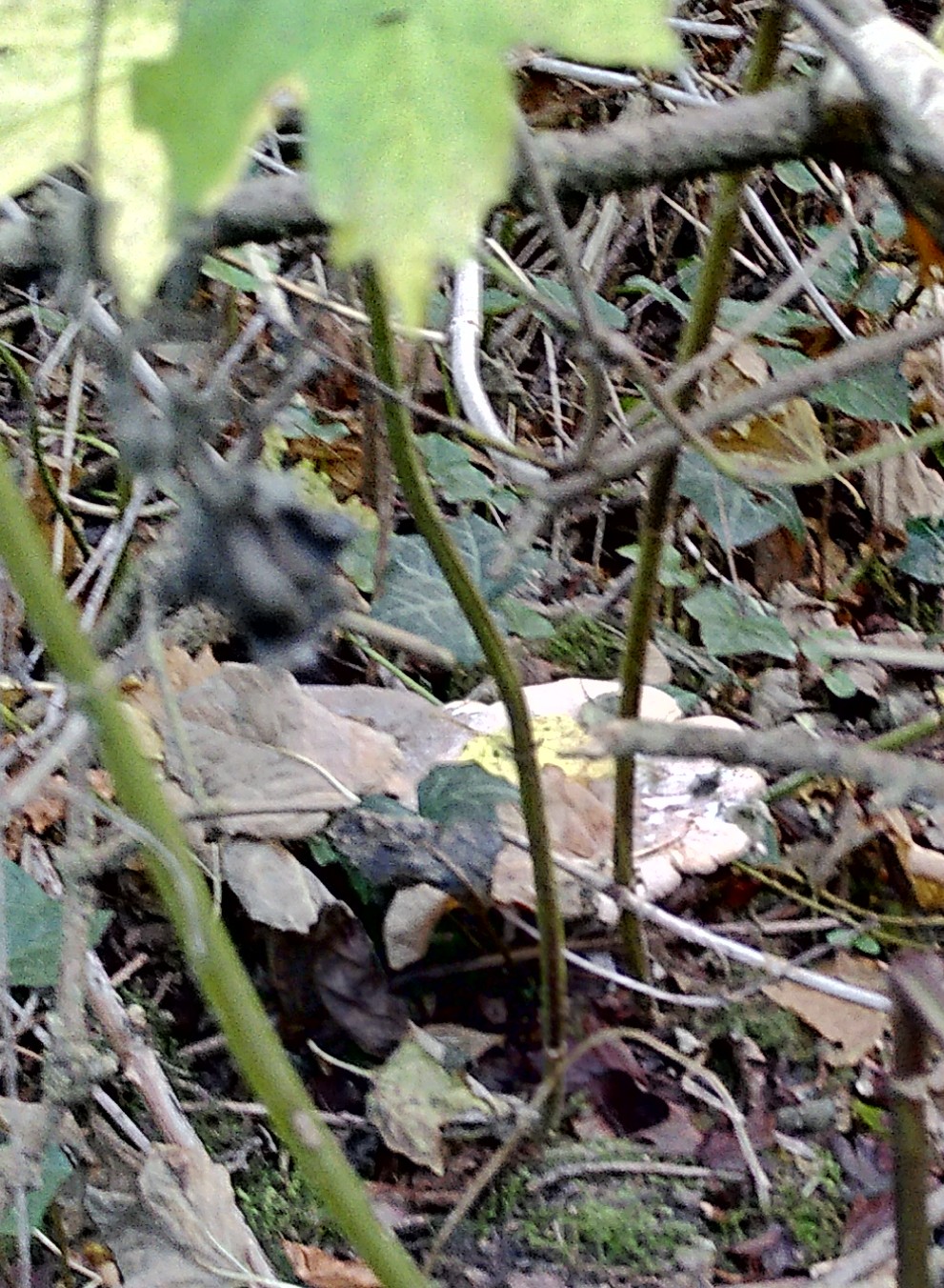

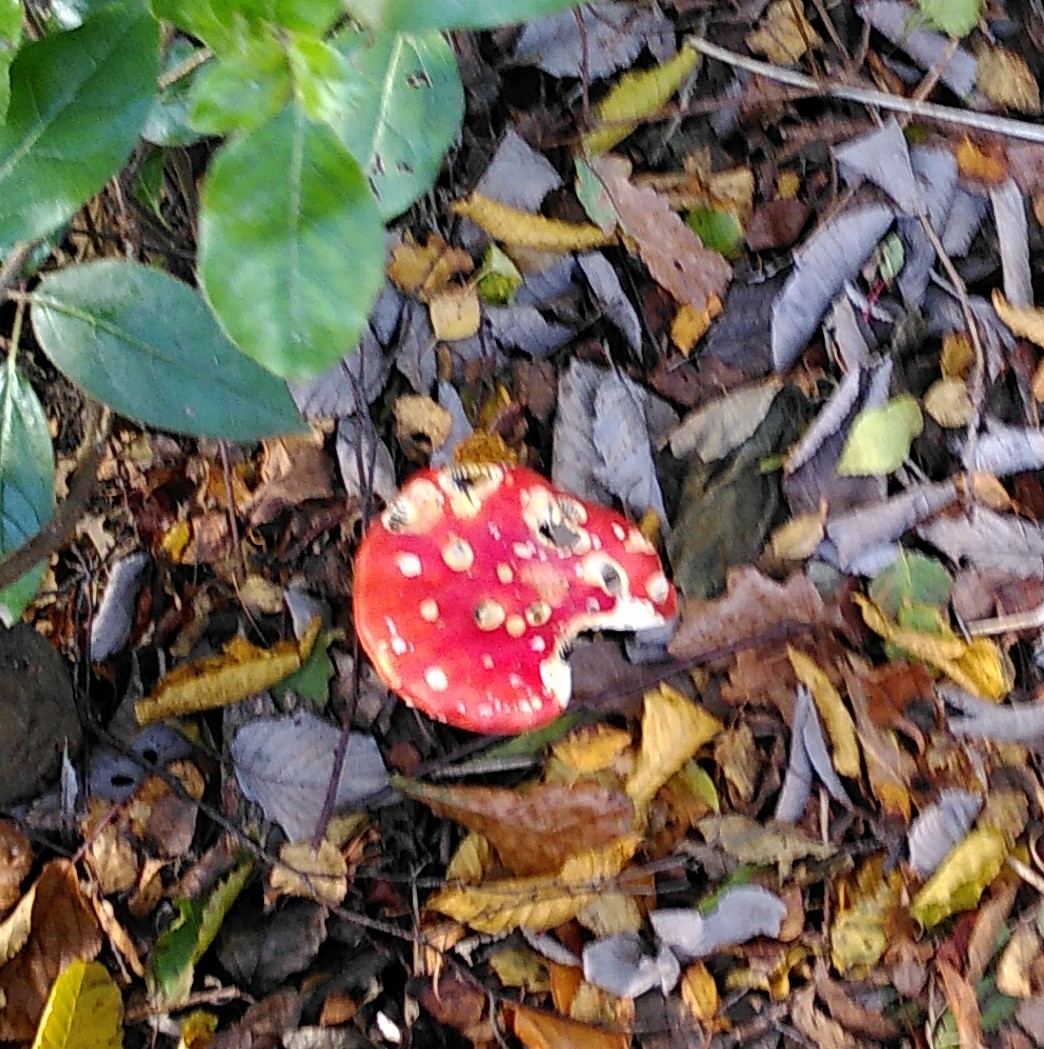
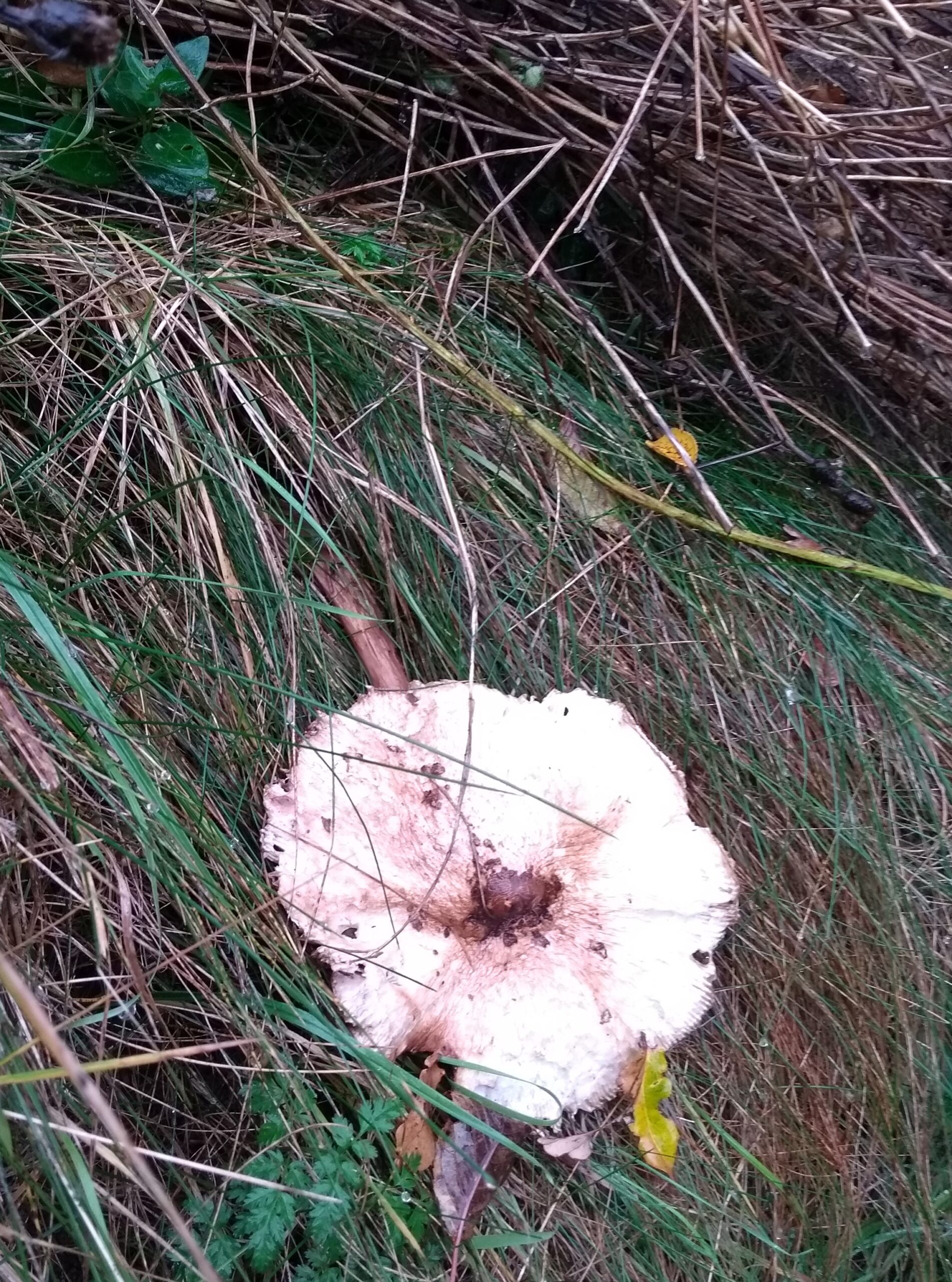
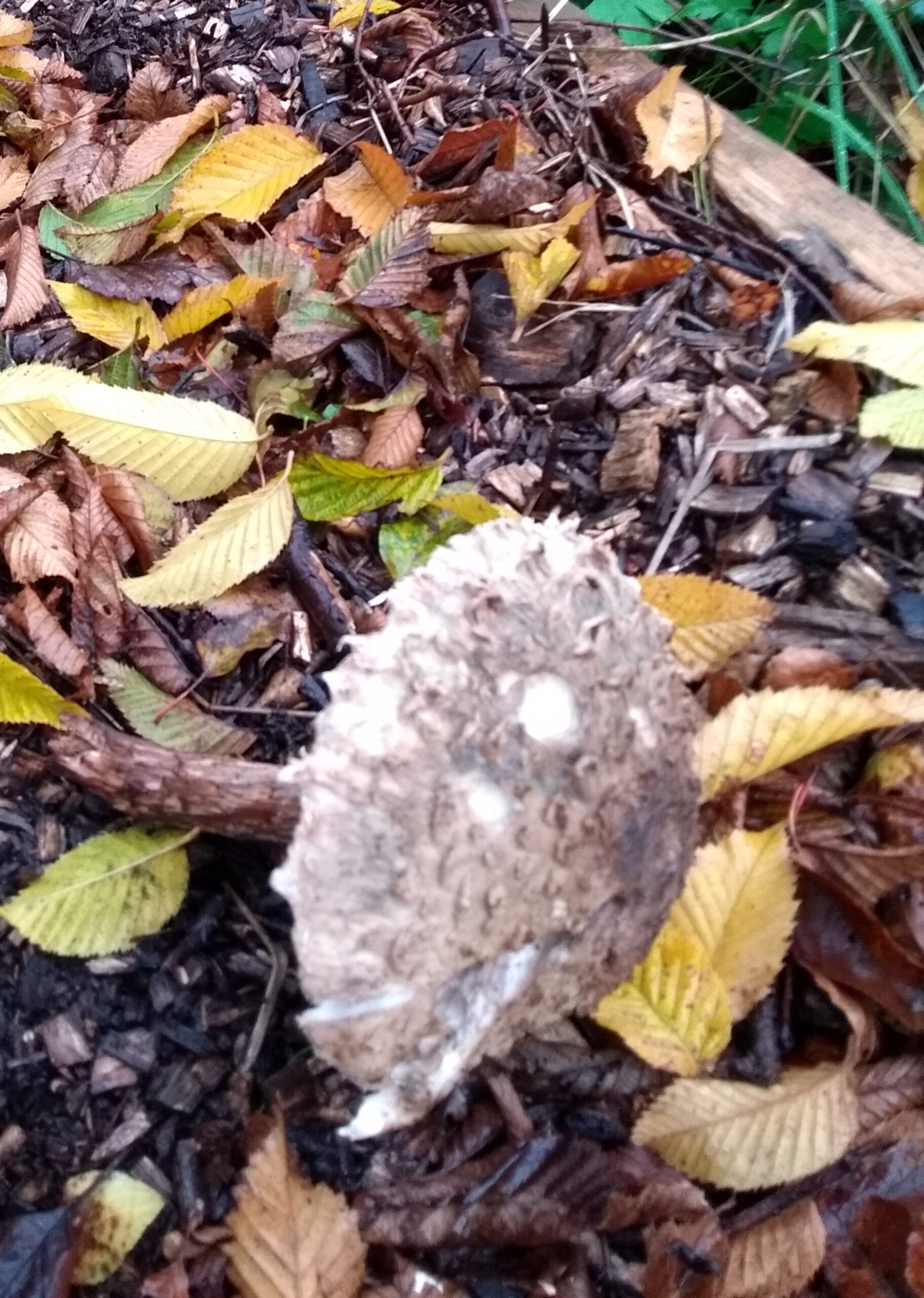
- Bird stills
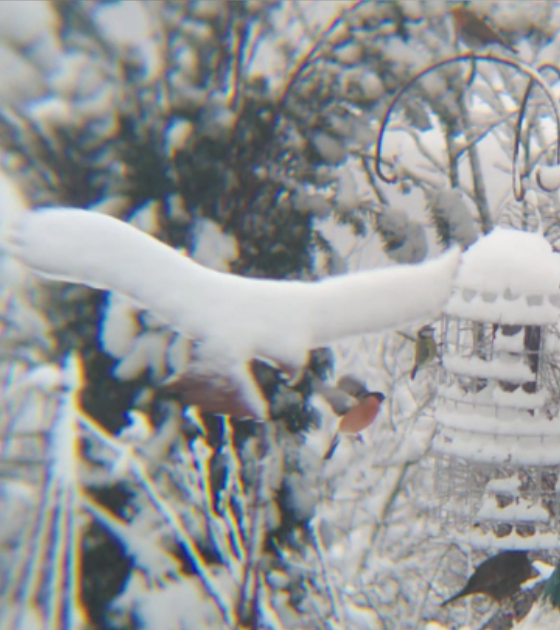
Four Bird Snow 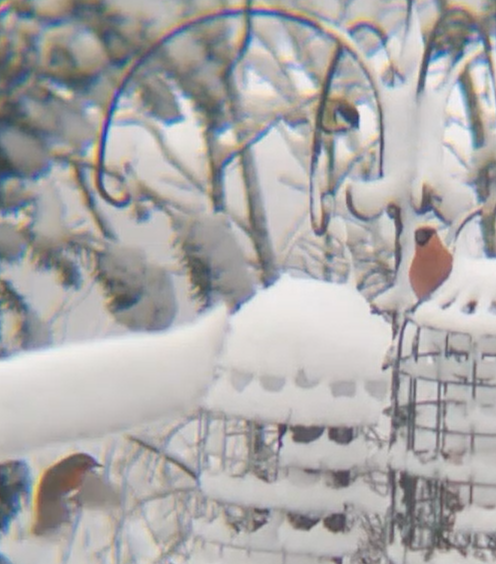
Three Bird Snow 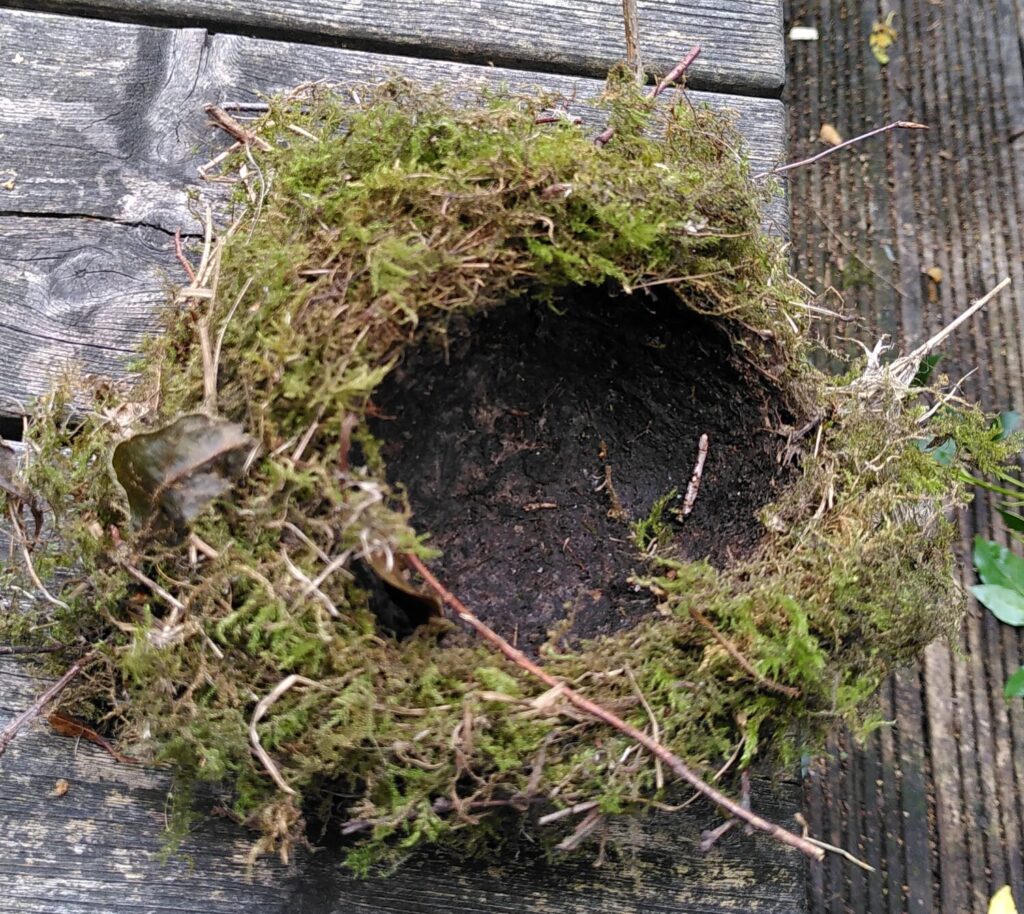
Last Season’s Nest - Warm Calder Morning Light
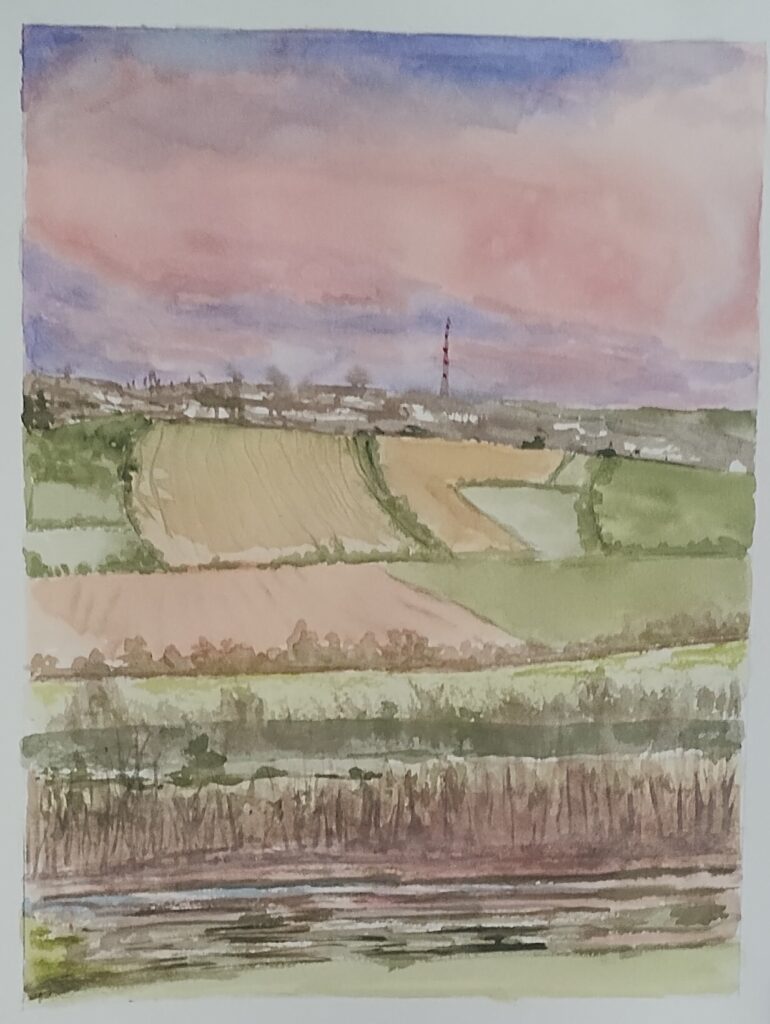
A view over the old Healey shunting yard that is currently being given a second life. - Drypoint Printing Fun
Shelley Art Group had a session with Cath Brooke yesterday evening and I had a go at making a copy of an etching I did nearly 60 years ago. Everyone produced some interesting work.
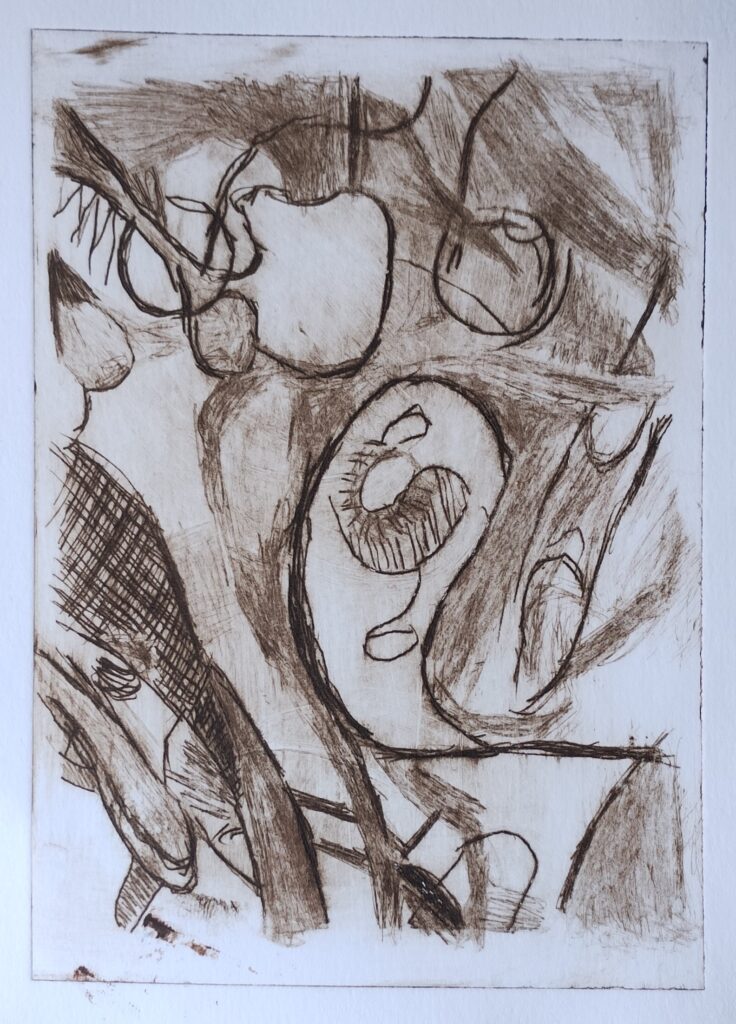
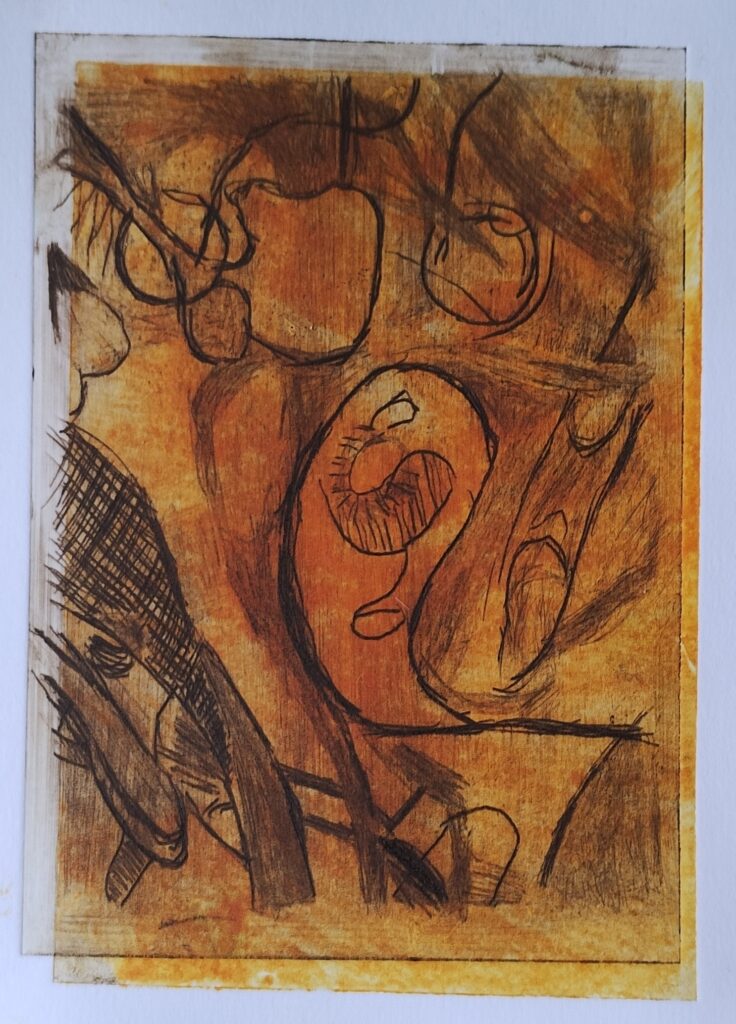
- Art and Vision
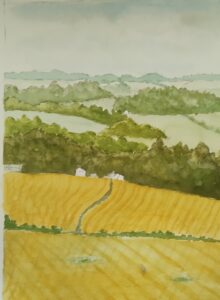
Thornhil, Dewsbury When people are taught to paint landscapes, they will often be told to make things further away tend towards lighter and bluer. Unfortunately sometimes people tend see this as a rule, rather than a painting trick to emulate the effects of distance and atmosphere on colour saturation. There are lots of similar guidelines that can become a hindrance if taken too literally.
If you read about the painter John Constable, you will almost certainly come across the tale of him and Joshua Reynolds, where constable puts a violin on the grass to demonstrate that they are not the same colour, after Reynolds objected to the colours in Constable’s paintings.
When photography came along it changed the way we see things and motion photography even allowed us to see how things actually move for the first time. At the same time photography took away visual art’s dominant role in capturing a likeness for posterity. This in turn allowed artists to investigate other roles for their art. Increasing awareness of science, particularly relating to colour and vision, also gave artists new ideas about how to do their job. There have been many debates in art history about how to do things and some of these relate to vision and how we see and remember the world around us.

Nether Wasdale View If you ever stand in front of a wide open landscape and enjoy looking at it, a temptation is to take a photograph. I’d be pretty surprised if you weren’t often disappointed with the result. All the magnificent detail and sweep of light you see will have been largely lost. Even a sophisticated camera has limitations of focus, whereas we can focus near and far repeatedly and rapidly without really noticing that we are doing it. Most of the time it doesn’t even make us dizzy. The vision we have in our head is then a combination of what we have seen and felt, with special emphasis on all the things we have been most interested in.
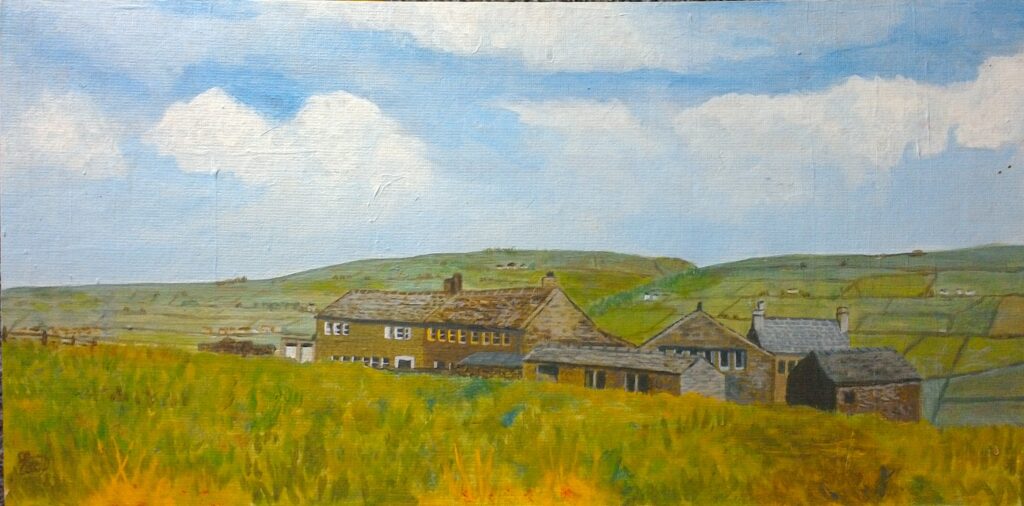
Farms above the Colne Valley, Slaithwaite The next element of perception that is important to highlight separately is memory. While our memories are unreliable, they are still ours. We are capable of holding a lot of detail about a scene, as well as host of related generalisations and also feelings. I know of painters who repeat the same scene repeatedly from memory. Each version is different but also alike. Whether intensionally or not, each painting will often be recognisably by the same person.

View Down the Cone Valley, Linthwaite That last bit about repeating a scene painting also relates to our ability to produce and recognise schematics of things. Every child does it very quickly in their development and even animals are able to do it. Those Captcha tests that have popped up over the last few years, designed to demonstrate your humanity, would be within the capability of a pigeon or crow, as long as they had been taught to associate the schematic with food.
In the pencil sketch below the are no colour hints about what we are seeing and little difference in tone between near and far. In fact the mast at Emley Moor has more definition than it might have in a photograph, representing what we would see by changing our focus temporarily. Within the picture there are plenty of hints about scale and perspective from the lines and objects. The effect is strong enough for us to recognise that the field in the distance is just a different shape, rather than badly drawn.

View across the Valley 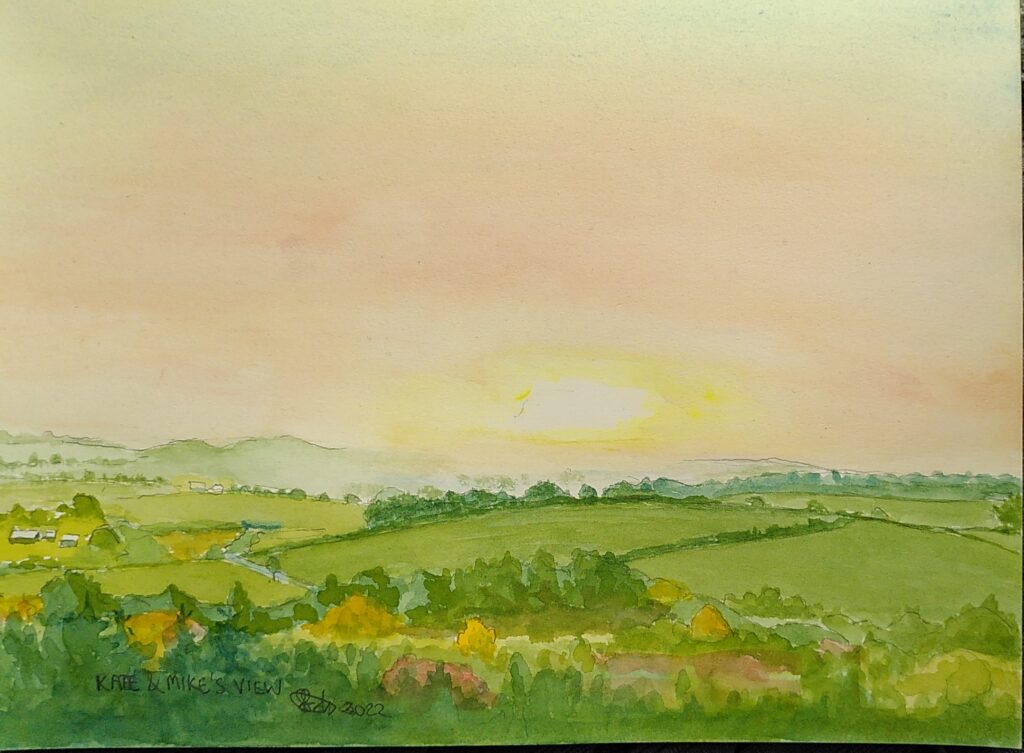
Battyeford View So if you do want to paint a scene, reasonably realistically, for someone, based on a photograph, don’t be afraid to paint it as they might see or remember it. Equally don’t be afraid to represent what you want to represent without being a slave to the myth of realism.
- Why Art, What Art

In one way or another, I’ve been studying and doing art and craft for more than sixty years. I’ve also been involved with performance of various kinds, crossing art boundaries. For more than a decade I’ve taken people round the Yorkshire Sculpture Park, on the historic West Bretton Estate and talked to every sort of person, from different parts of the world, about art and history. One of the things I stress to people about YSP is that the park itself is a giant sculpture.

Talking to people has made some things particularly clear to me and below are some key points I have learned.
Art is both subconscious and conscious. Most animals, including us, seem to have a sense of shape and form and also sound. Some of us animals use those senses for display and communication purposes. This means that art can have multiple levels of appeal.
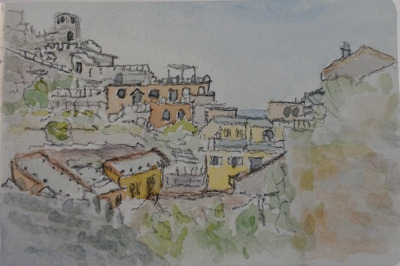
Because art has been around as long as we have it is plain that it is important to us in some way.
Art has never had one particular way of doing things, though there have been plenty of attempts to enforce a particular way.
The separation of art from craft is not really helpful.

Even the best artists never fully achieve what they want, let alone satisfy all the people all the time.
Human competitiveness means that arts are often used to show off and to demonstrate superiority and thus other people’s inferiority. You should never let that last tendency put you off trying out your artistic skills, if you, and even someone else, might get enjoyment from the attempt.

Some people can just control themselves better and practice doesn’t make perfect in such complicated skills. Equally, even with control and practice people can still produce neat, colourful but not very interesting art.
We all borrow ideas from others. It can’t be helped. Children’s art is already full of borrowed ideas and styles but can still have a personal impact without complicated skills. We all have to make a compromise to achieve whatever we want to achieve.

Art can look like something but it doesn’t have to copy that thing completely.
Art can be abstract but that doesn’t mean it can’t also represent something or some idea or emotion.
When you produce any form of art you are representing a subject, an idea. On top of that, what you produce is influenced by all the things and people you have encountered. Those two things should influence the tools you use to produce the art and those tools should influence the art itself.
Art doesn’t have to be pretty. All forms of art can be used to highlight unpleasant things. There are all sorts of messages in art and the art reflects that.
If your art has a particularly strong emphasis on message then it is of little use if only a small number of the already converted pick that message up.
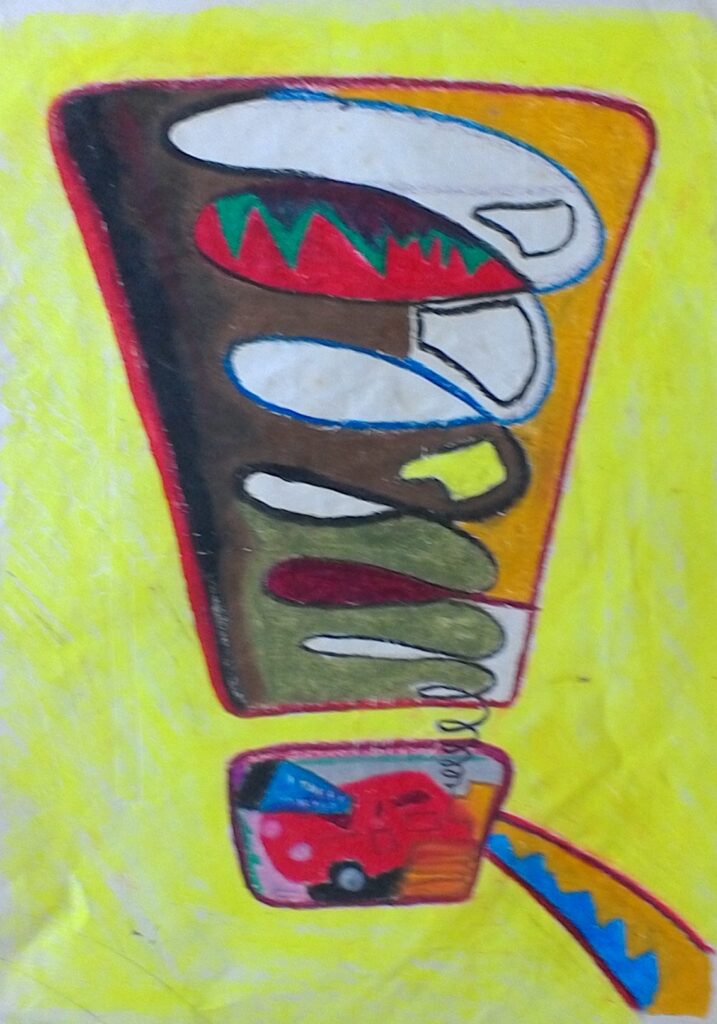
The, never displayed, work above was called ‘Modern Gods and Heroes’. It is a visual rant about cars, overcrowding, shallow celebrity and eco-failure from around forty years ago. The fact that I’m explaining it speaks of its relative failure. That doesn’t mean that art shouldn’t have a title or explanation.
You are right to question the value of art and the need for public funding but think of all the other things that command higher prices than they perhaps deserve.
Keep looking, thinking, enjoying and trying.
- Winter winds and rails return
We’ve had snow, sun, storms and the surprise appearance of new rails in what was the shunting yard. Firstly storm Darragh versus Ellie the wind vane a tenacious trunk tale.
They have been slowly removing more remains from the yard for years, then trees grew up, then they were cut down and the last rolling stock and rails removed. Now they are apparently preparing for electrification and repair and storage area.
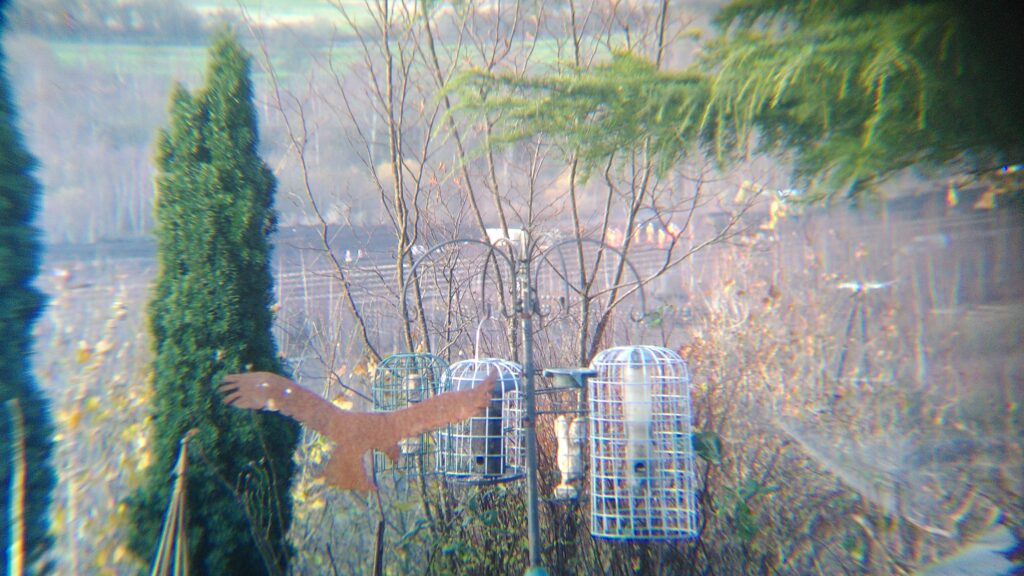
Beavering away in the rail yard - December 2024
Ruth is visiting her Grandchildren and I am pootling as usual. A few flowers are still hanging on and the Winter Jasmine is coming into its own. We didn’t get round to picking the apples on the slippery hillside tree, so we are getting near the end of this year’s store.
We had a few visitors late on today.
There is tons of work going on in the former shunting yard below. It seems they are putting new rails in, perhaps as part of the upcoming electrification of the line and also to provide a storage area and workshop for rolling stock.
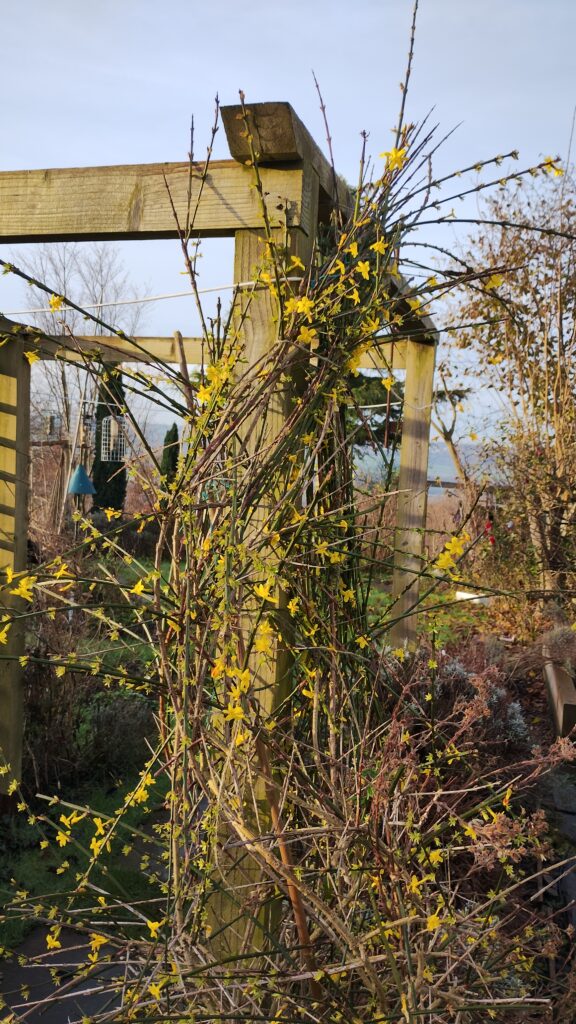
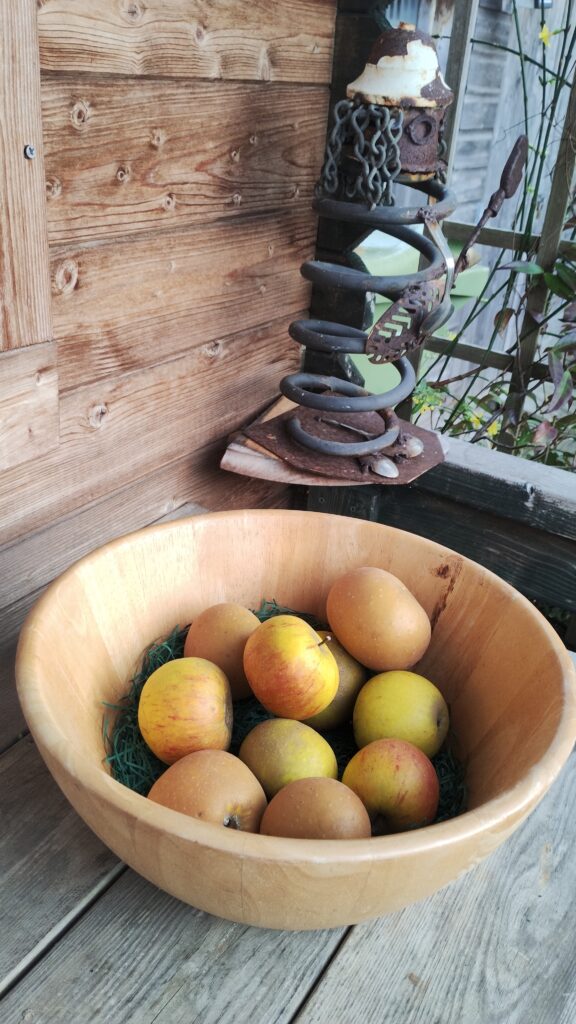
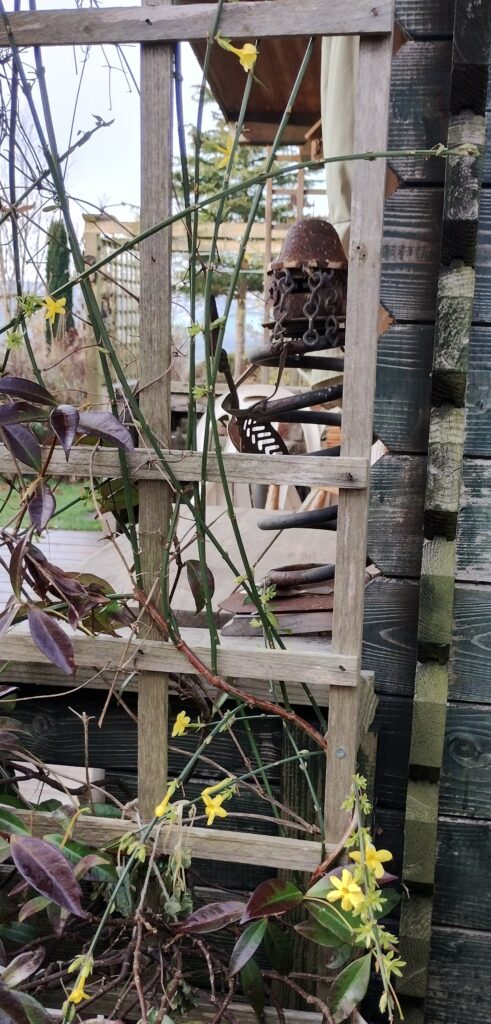
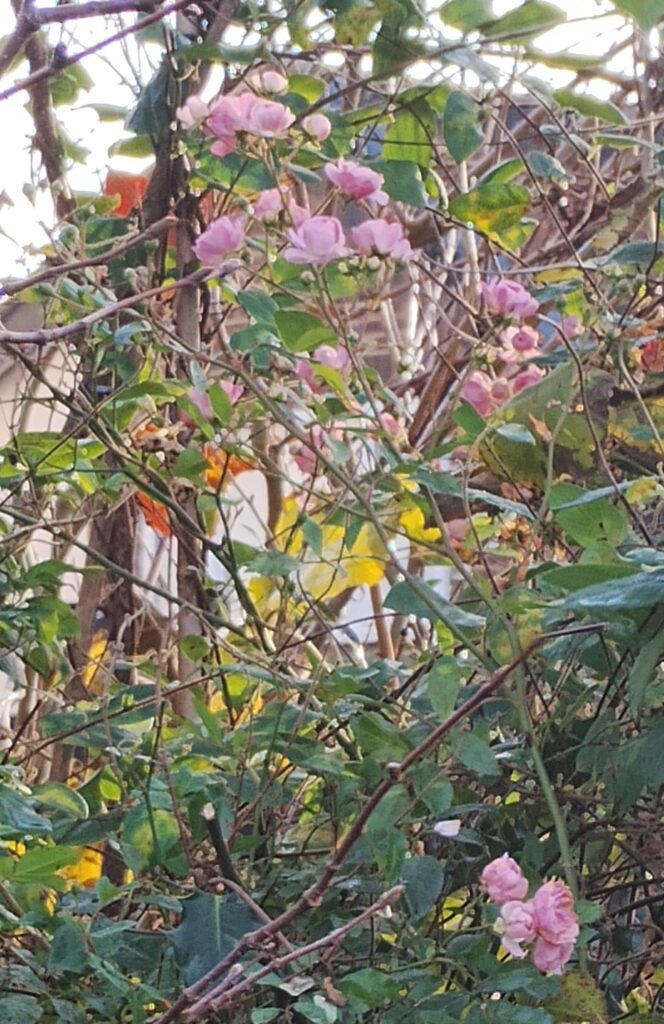
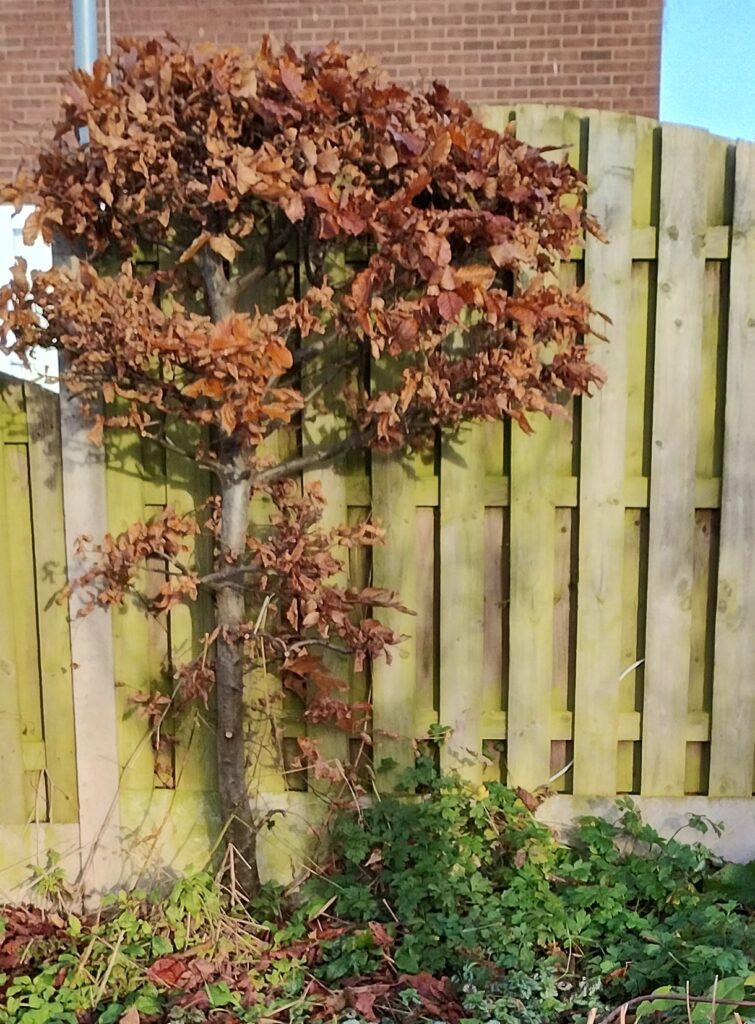
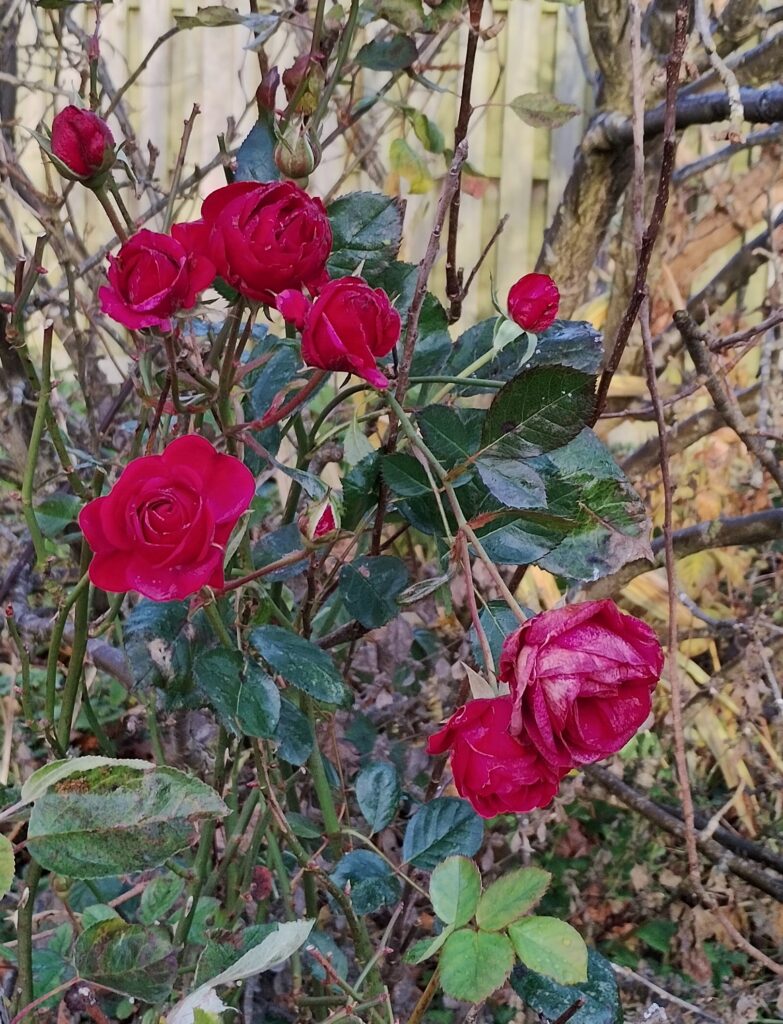
- Woodpecker, Autumn and a shunting yard without rails
This is quite a shock when the woodpecker arrives alongside the little birds.

This Acer is always spectacular and changes quickly. Some of the trees have lost all their leaves and the Maple and Hazel in the background are still changing. At the same time there are still flowers.

Elsewhere there are various paintings and images containing snatches of what I think was formerly one of the largest shunting yards in Europe. Currently a new life is obviously planned for it. There is frantic work clearing and levelling going on. It is sometimes as noisy when the yard operated, but he lights are more localised and so less bright. Who knows what out view will contain next?
- What a difference the light makes

Morning Alliums and Roses 
The light pops round the house 
Late afternoon shadows 
The early Autumn sun on the way down - Arran 2024 Day 3

Holy Island from Lamlash, Morning clod and mist clearing - Arran Day 2
My first short stay on this wonderful island (helped by glorious weather). Day 2 and we’ve walked and cycled loads already. Ruth has been up Goat Fell, while I walked round Brodick Castle grounds and the local area. We’ve been to see the Stone Circles at Machrie and Ruth walked to the Kings Cave, while I sketched below the basalt columns of Drumadoon Point.
The result so far.

Blackwaterfoot 
Drumadoon Point 
View from Cladach - Garden Birds
For a lot of people part of the joy of a garden is wildlife. Ours is certainly built to attract it, though the birds always seem to ignore the bird boxes in favour of the scruffy hedgerows.
We also have bird feeders. The arguments for and against are difficult to balance, but we have them. Considerable time has been spent stopping grey squirrels getting at them and making sure that large birds don’t dominate too much.
Recently I have been filming from the house using a little telephoto attachment on an old smart phone. Below are a couple of mixes from the filming. Warning – the first contains a sparrowhawk. The second is a medley of clips with bird sounds recorded in the garden.
- Cleveland Way, Whitby

- Painting the Highlands
A short trip round some Scottish favourites, with time for some sketching.

Ullapool 
Portree 
Fort Augustus - Early May 2024
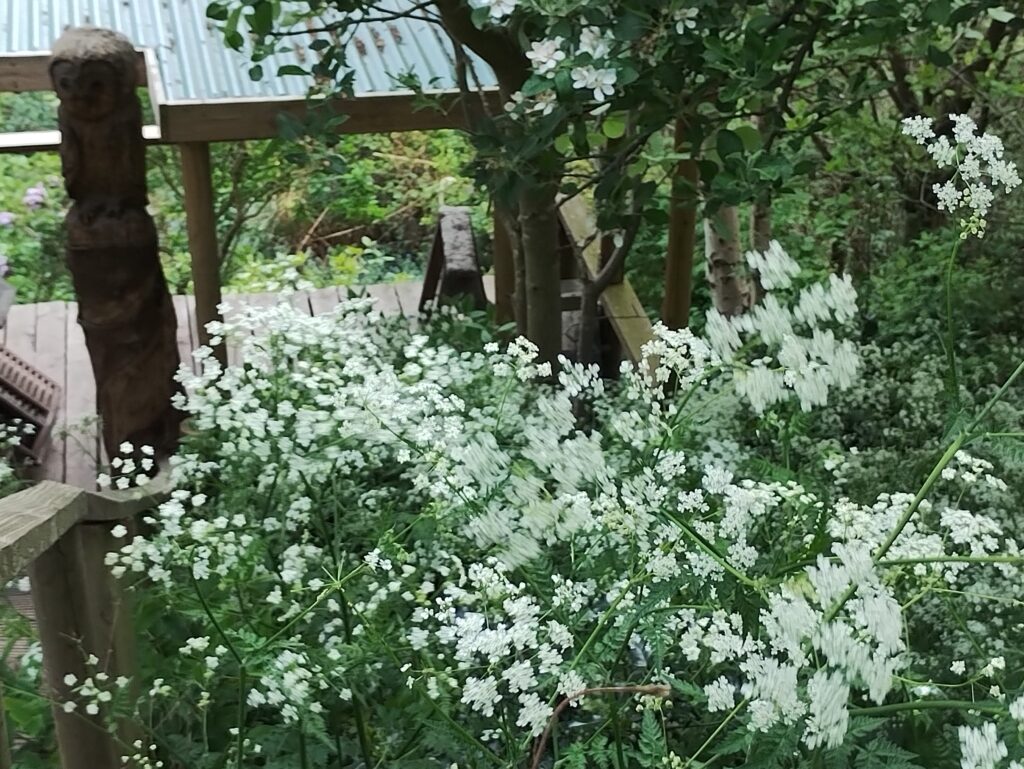
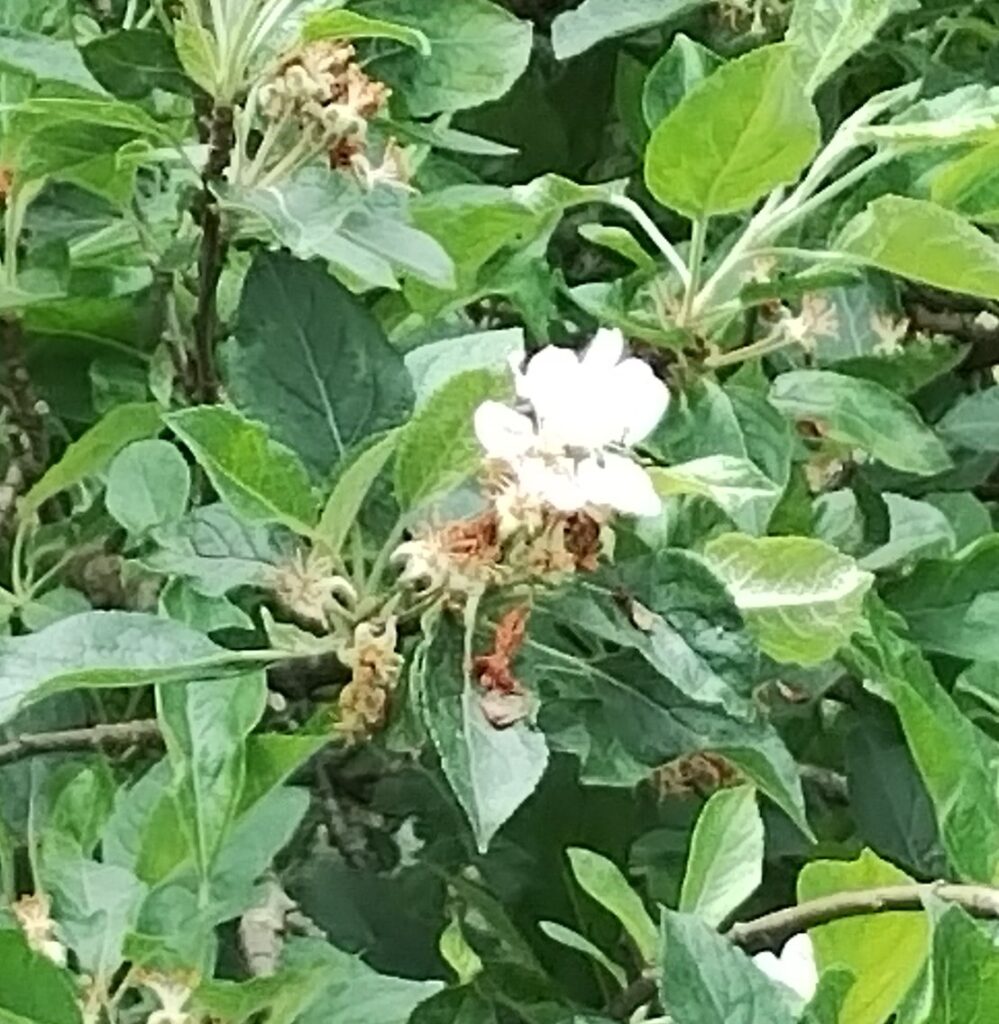
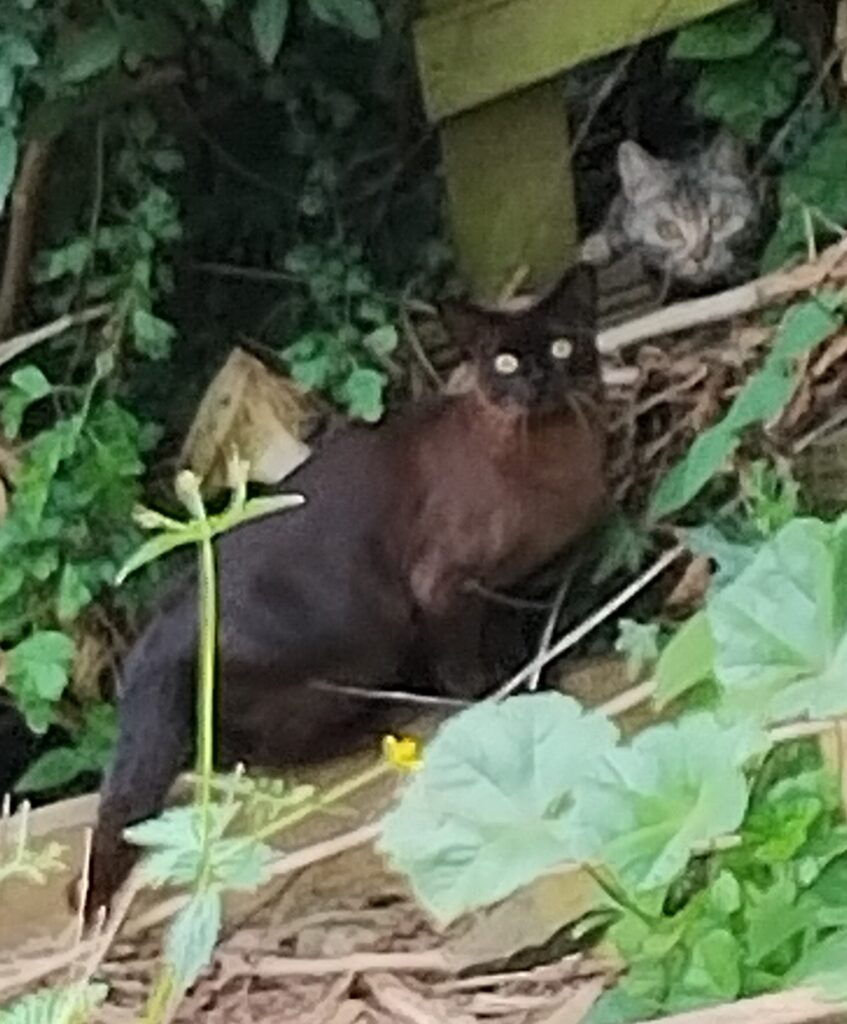
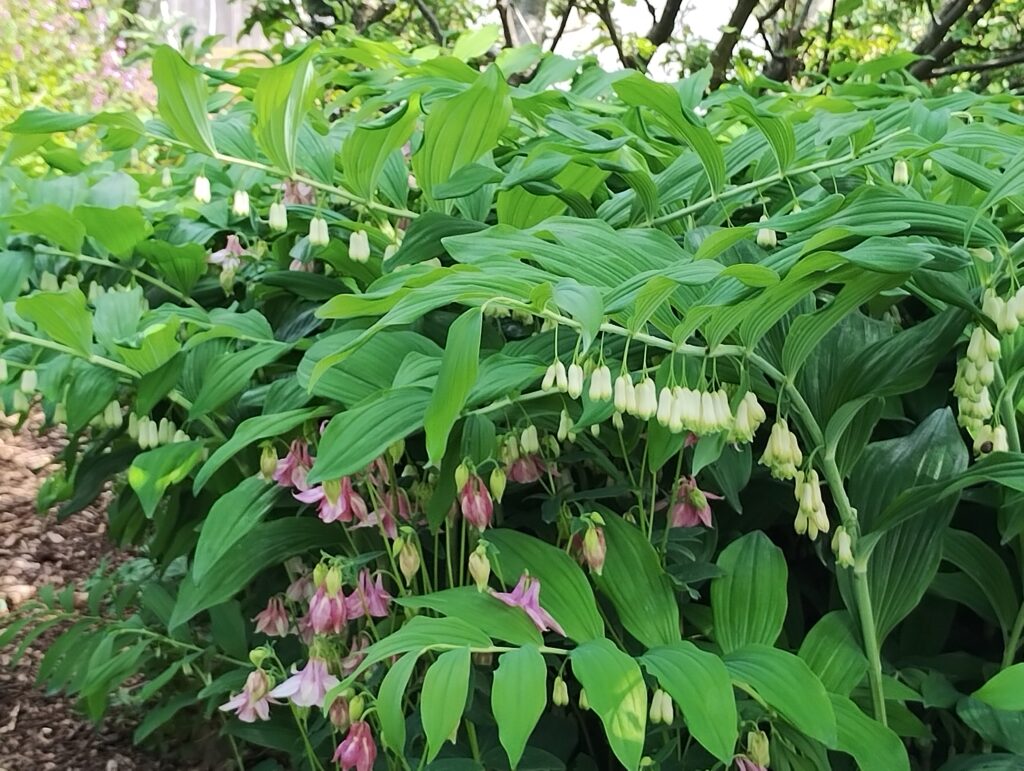
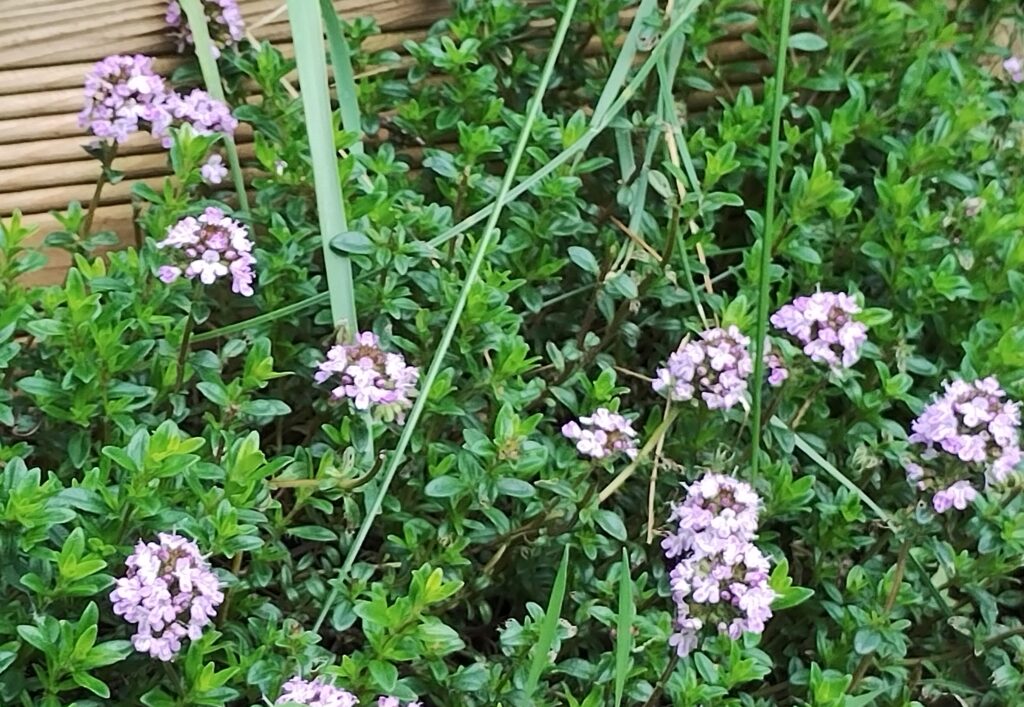
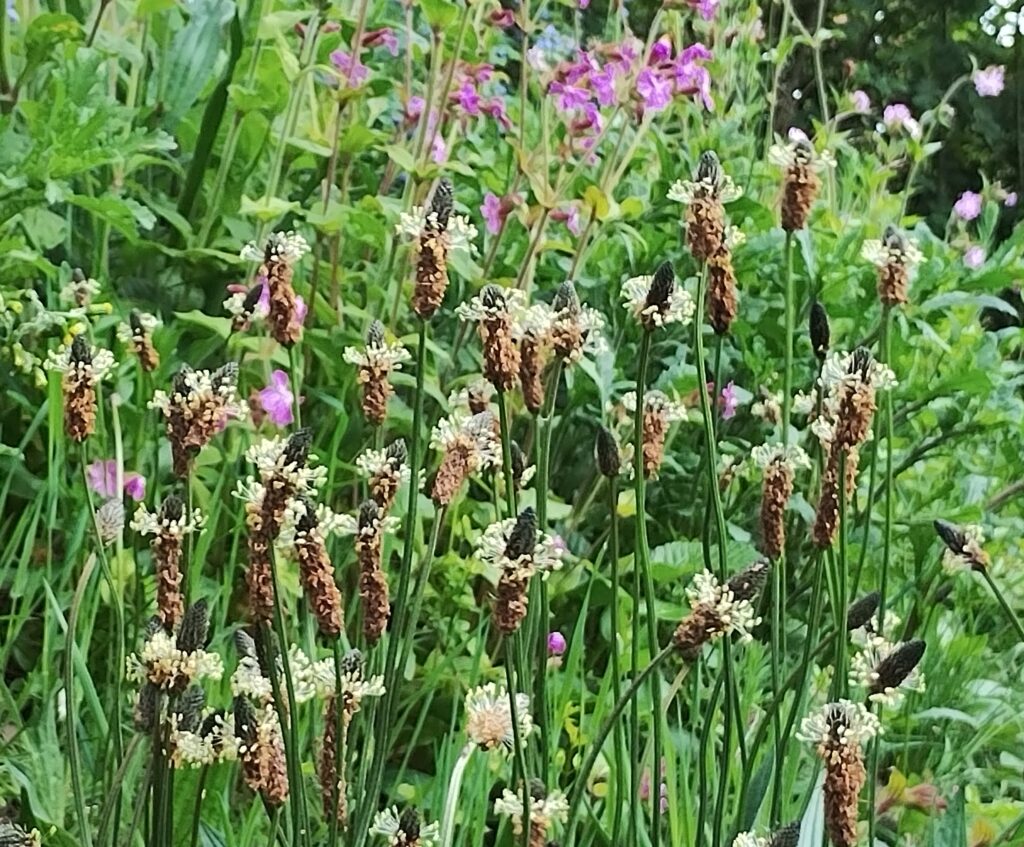
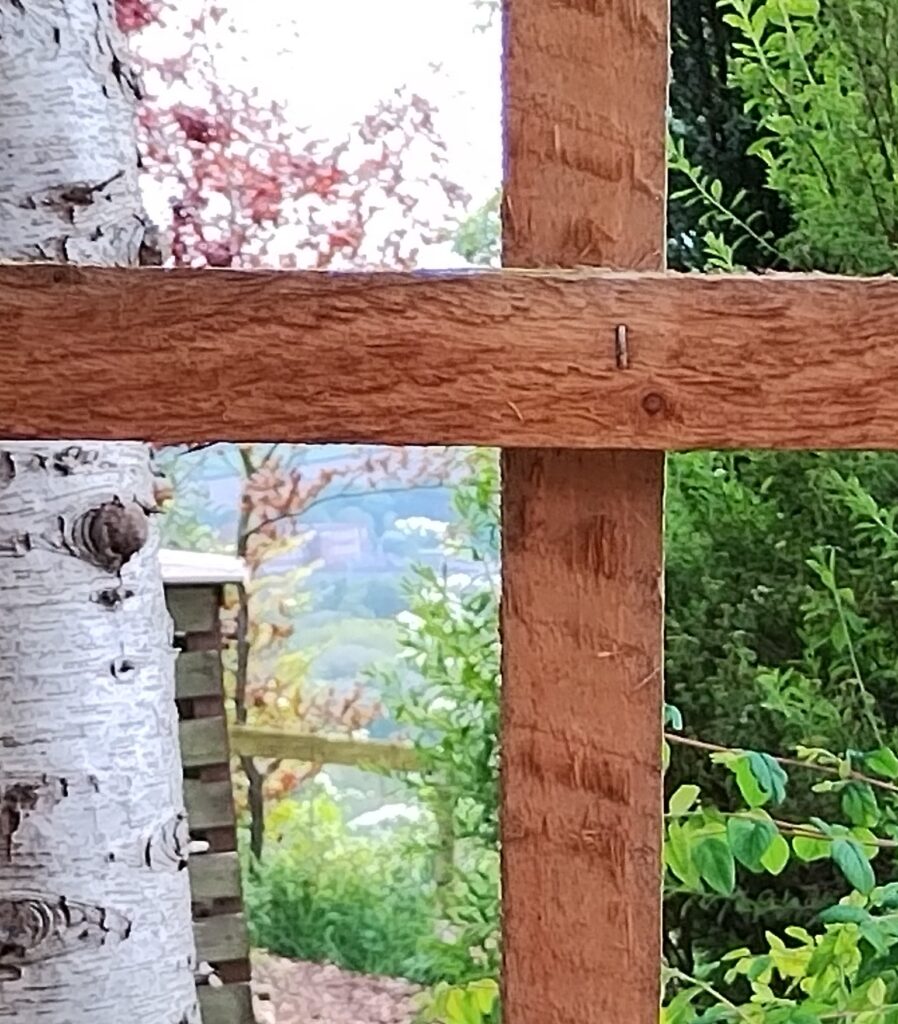
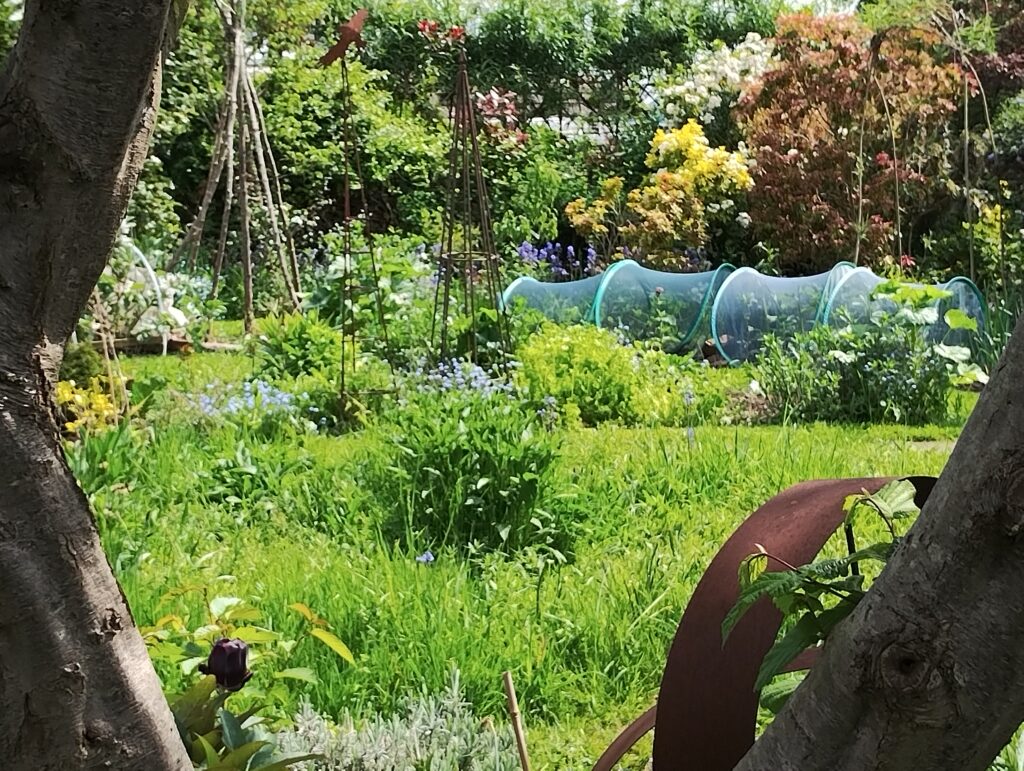
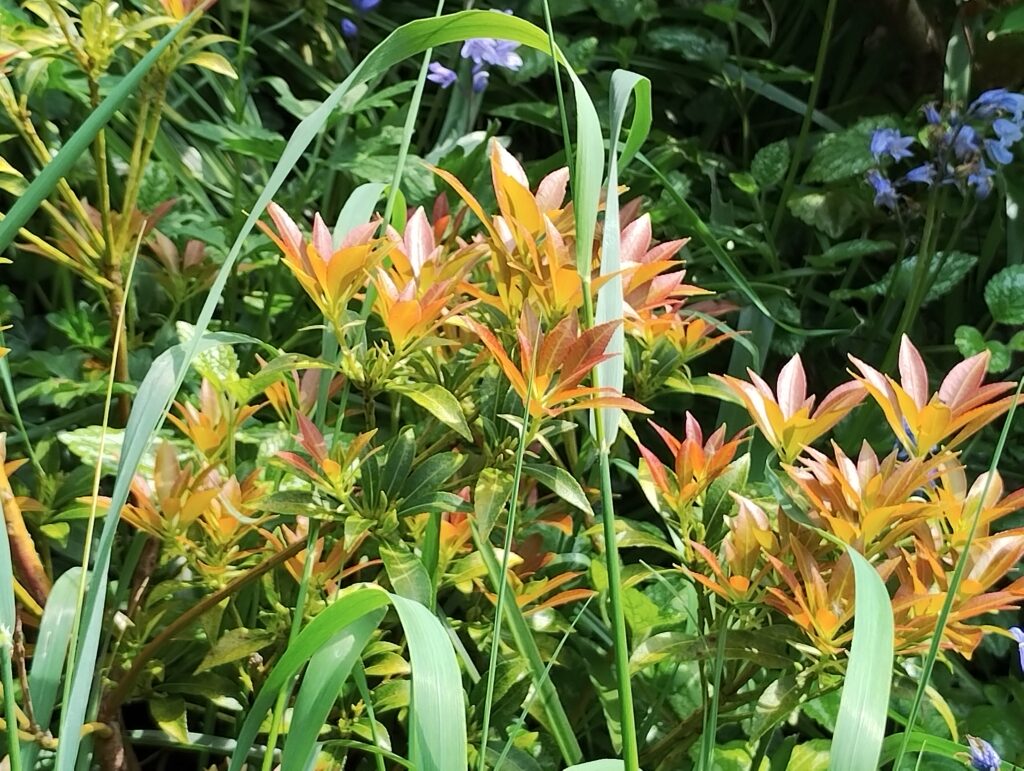

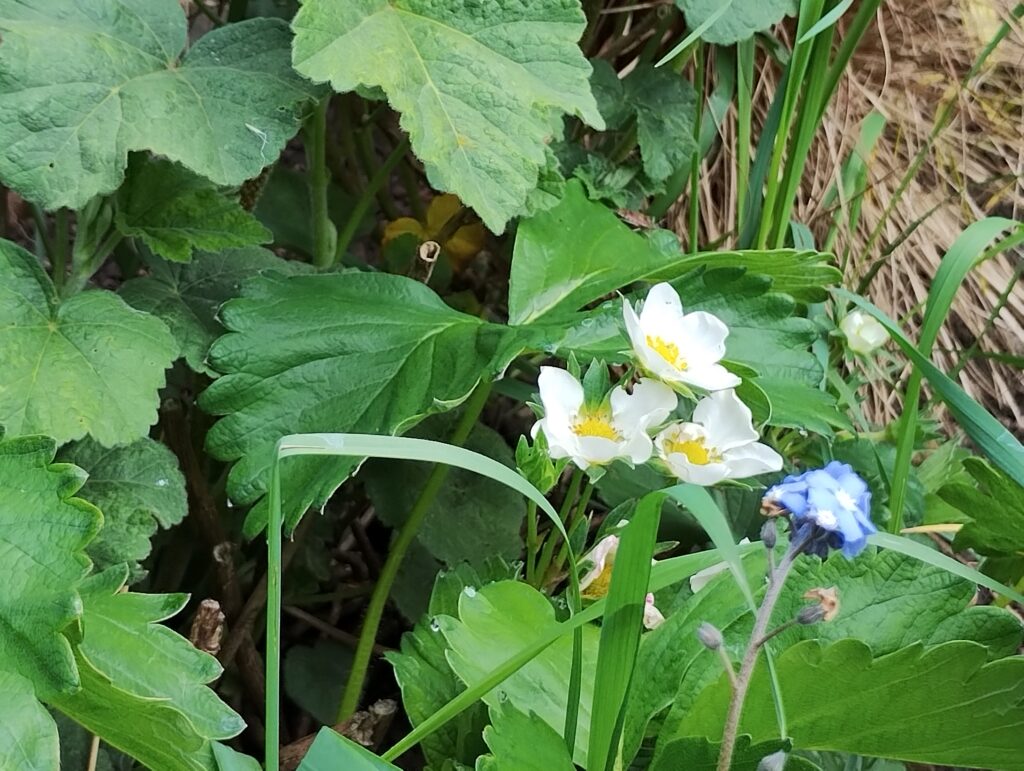
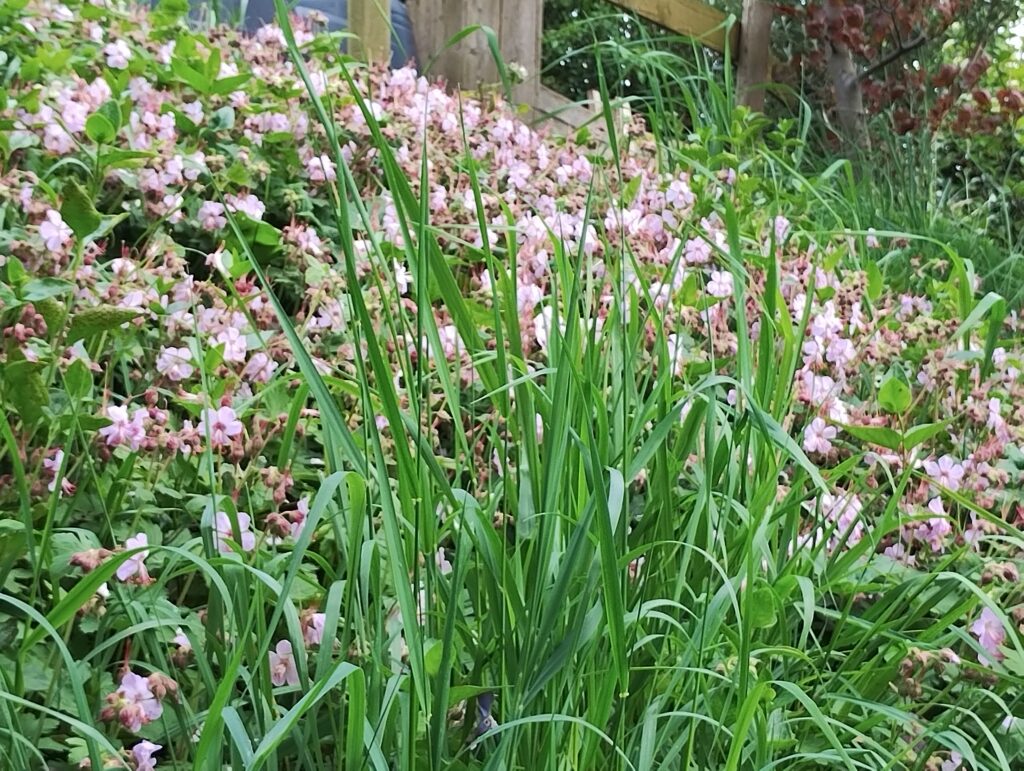
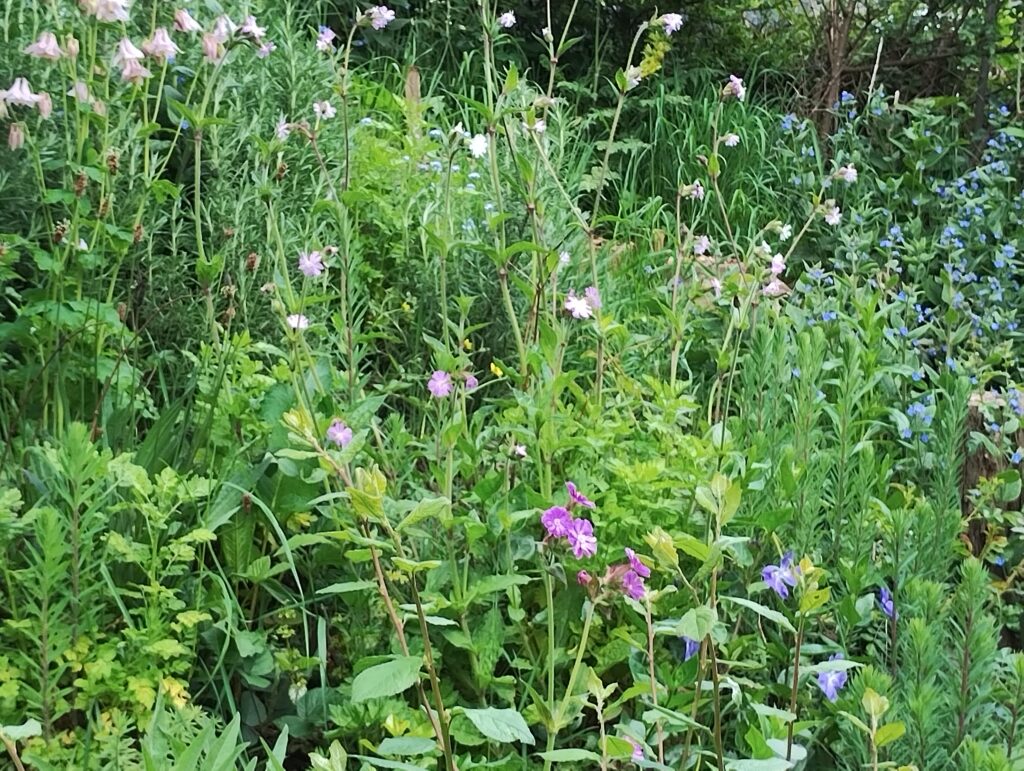
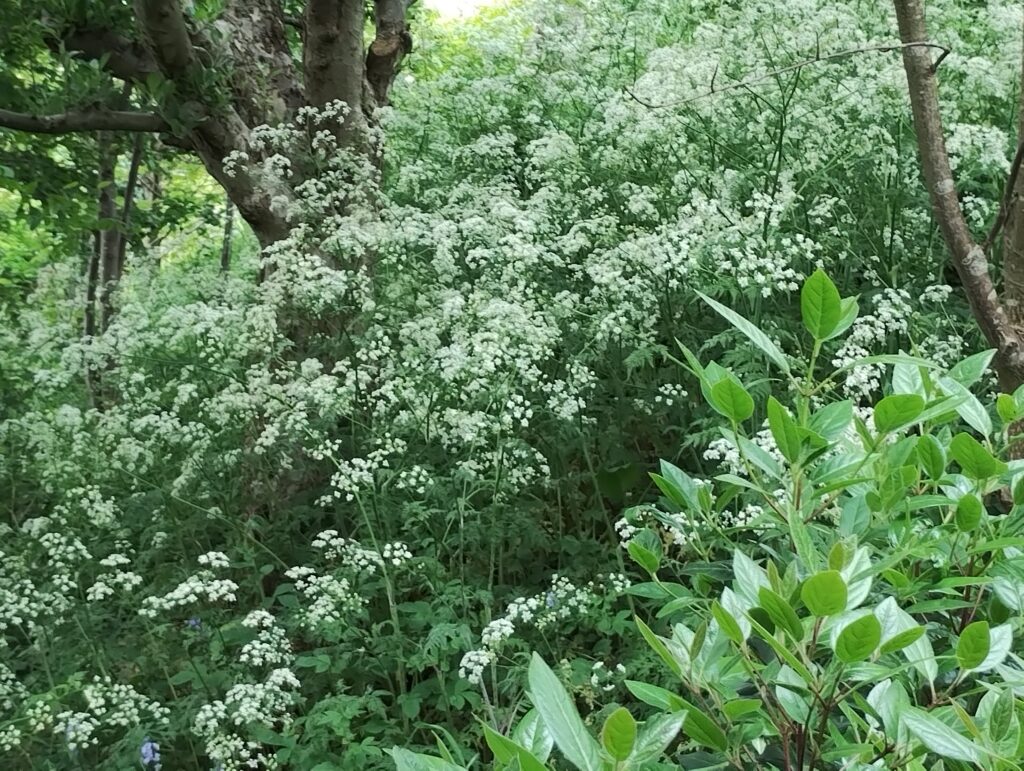
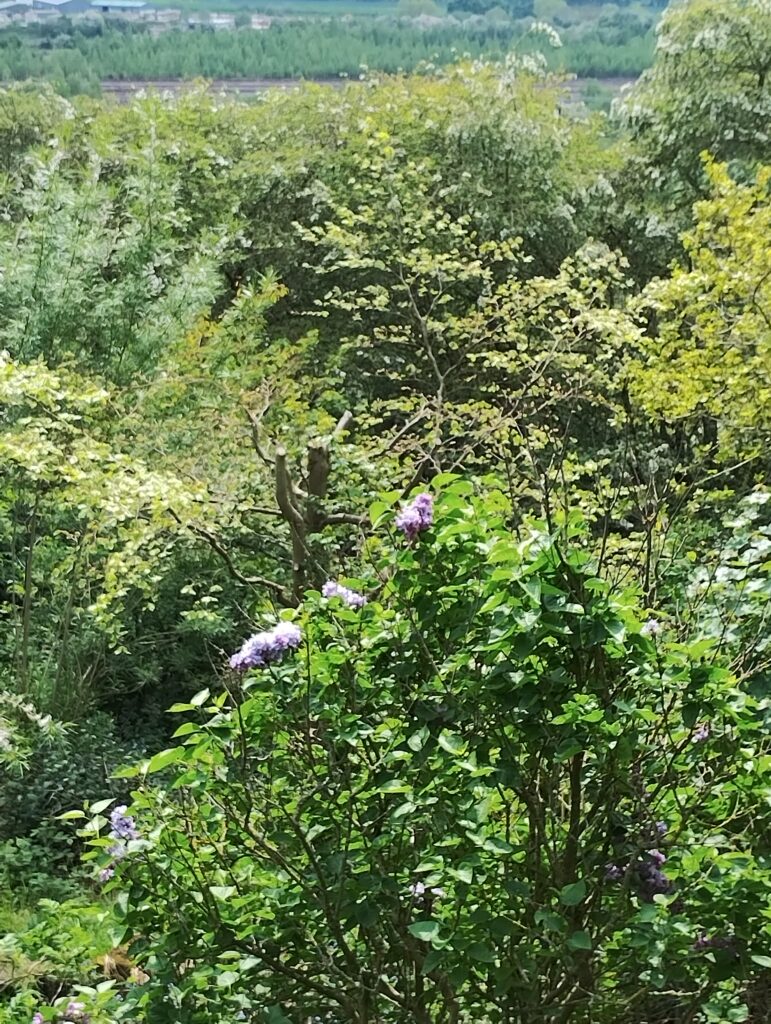
- The rain stayed away
November 2023 and it has been wet, but today it looked good. Ruth, Simon and I set to. First off was reducing the lawn yet again and planting some grasses, kindly donated by some friends. The other two are currently planting spring bulbs in the middle of that lawn.
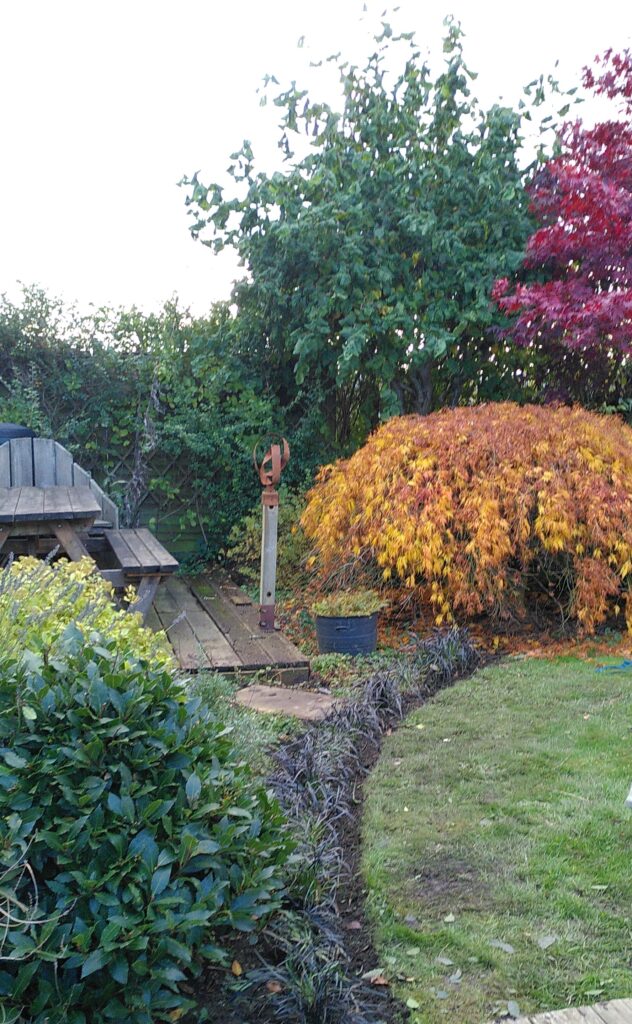
Next up was to re-fix a rail along the top cross path and plant some similarly donated raspberry canes.
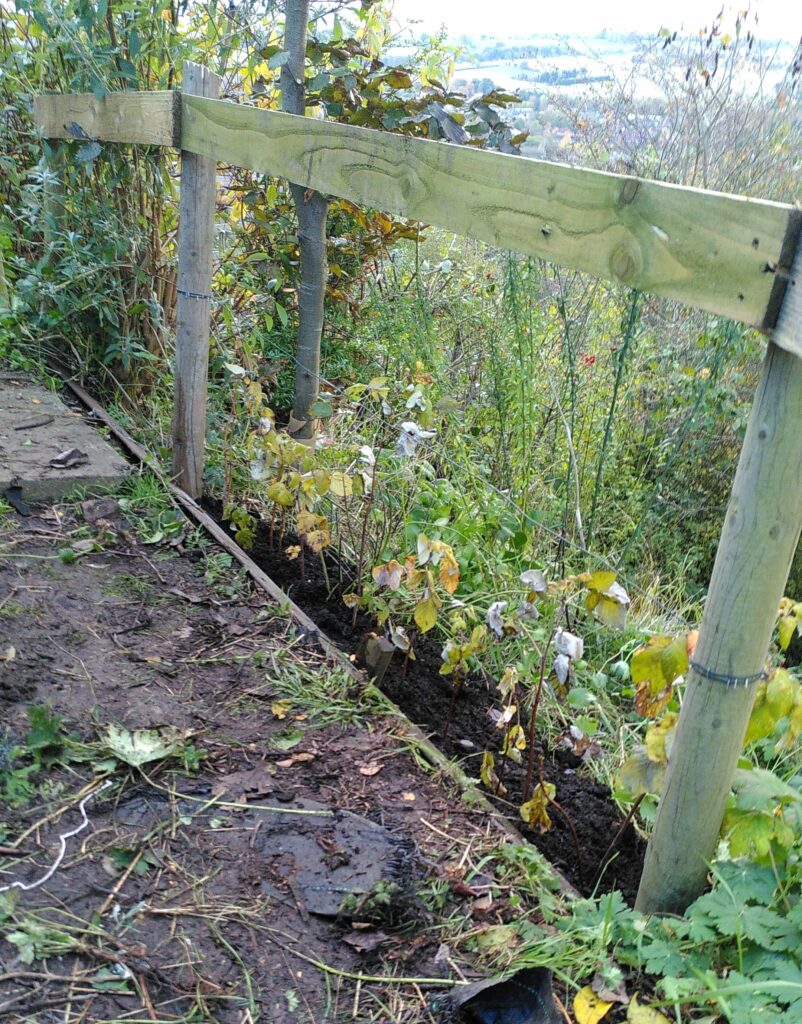

Finally, I had already halved the size of one of the benches, but it was a bit high for shorter legs than mine, so I adjusted that and then put some steps in next to it to start another access path through that bit of shrubbery. I put in a willow arch to highlight the entrance at the other end.
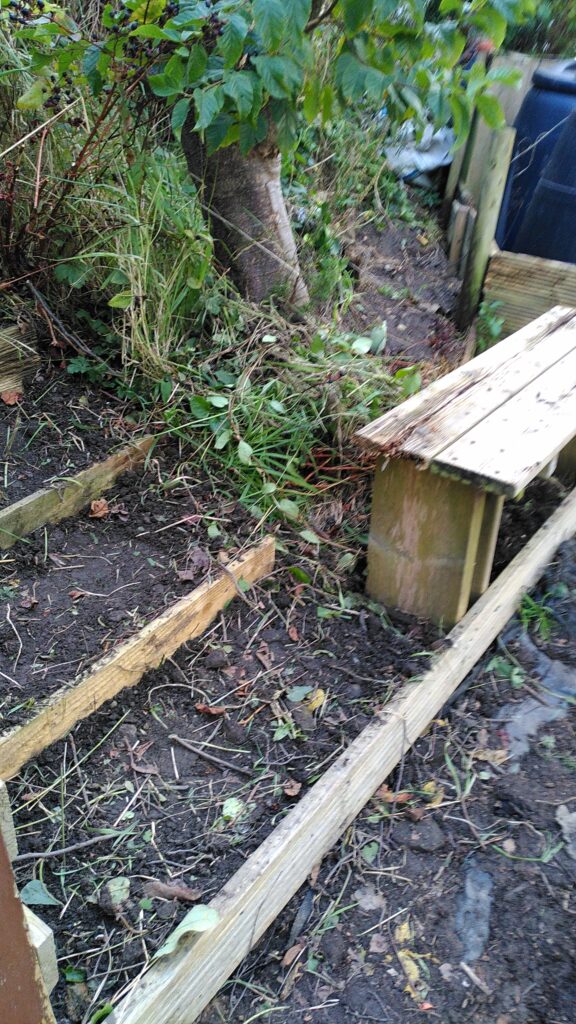
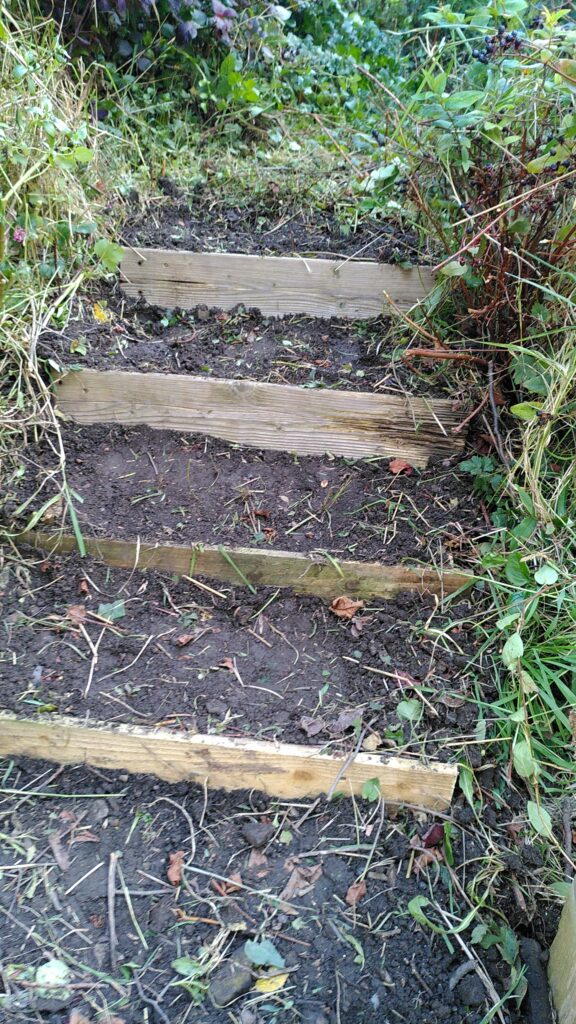
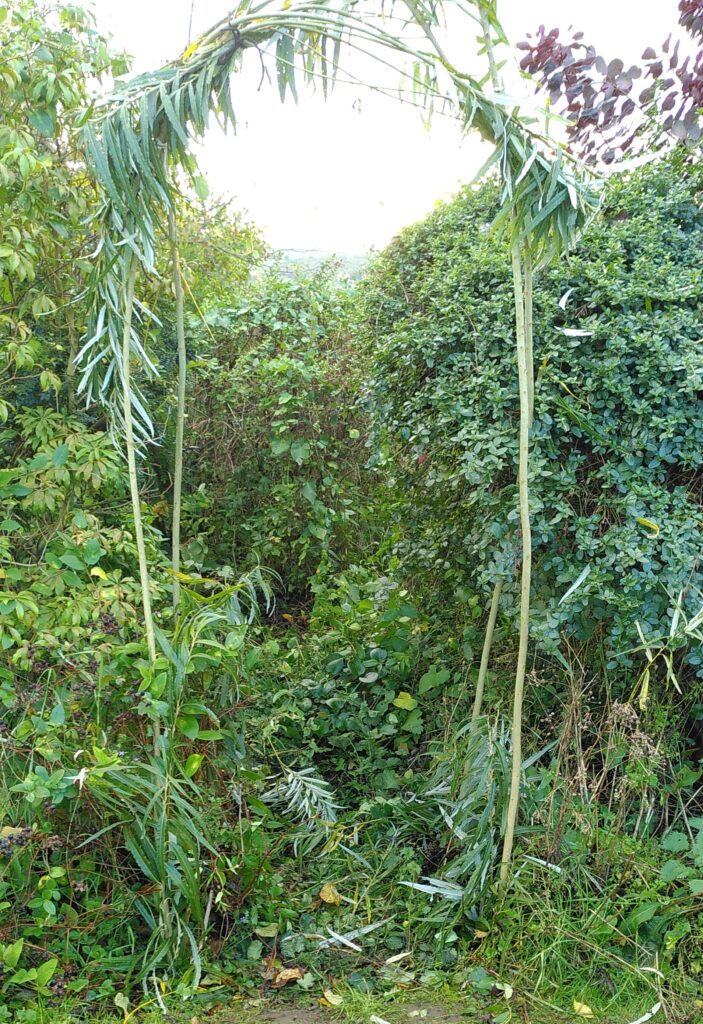
Over a couple of sessions before today, Ruth had also been clearing and planting grasses in a section of the hillside below the shelter, which are also looking good.

???????? 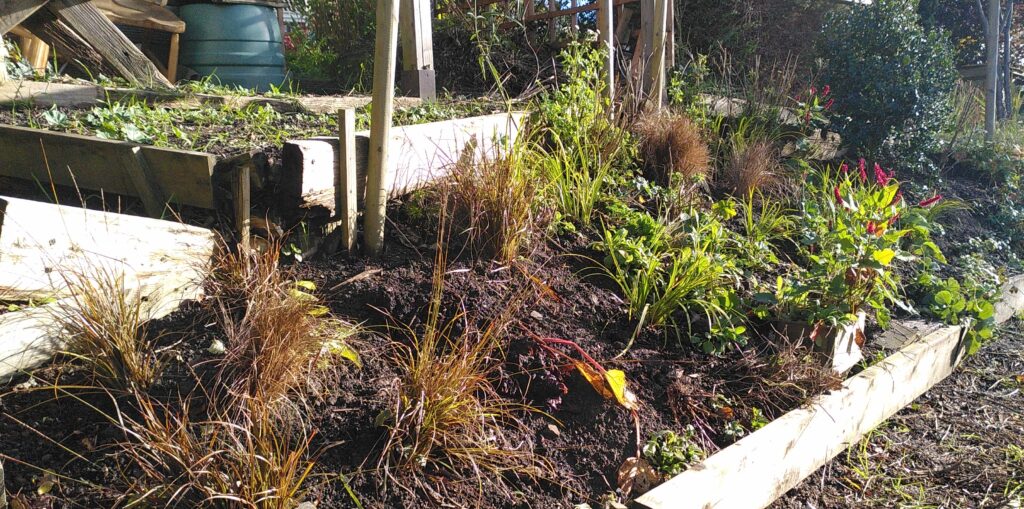
???????? Time for a sit on the adjusted bench and look at the view.
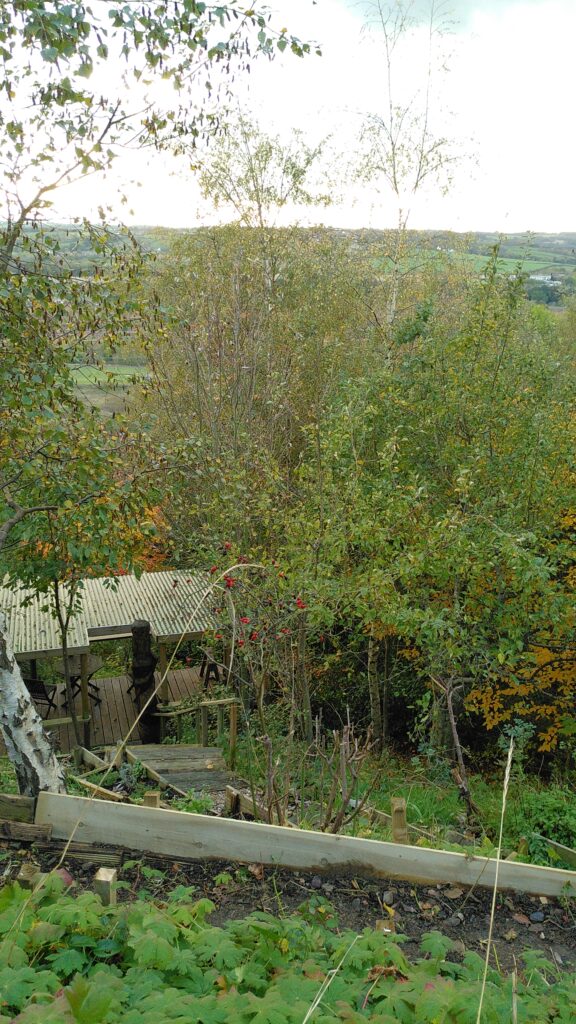
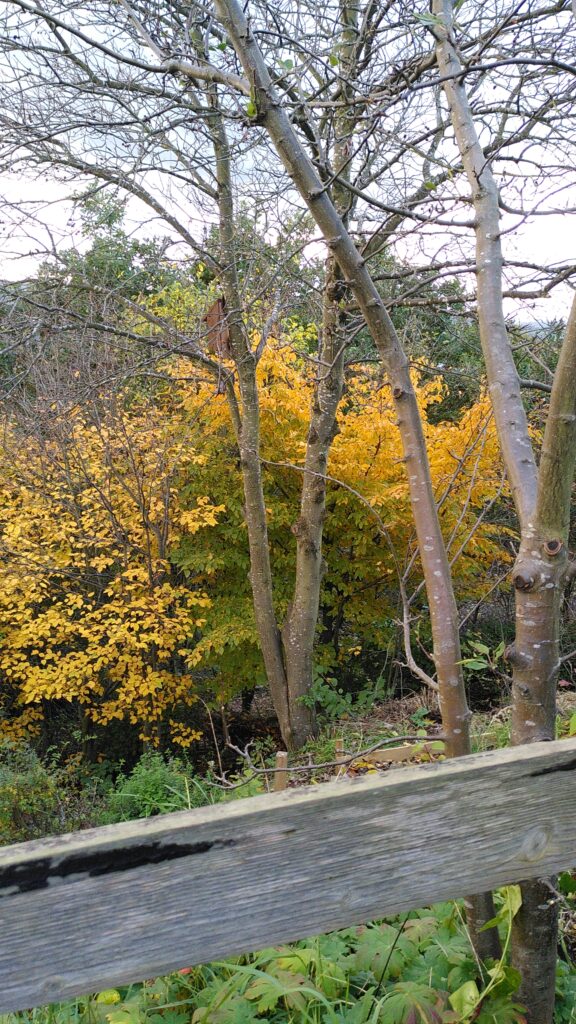
- Autumn Harvest
Amidst a chaos of building work, a day of path clearing, pruning and bed sorting alongside a harvest that was edible and one that spreads plants to other gardens.
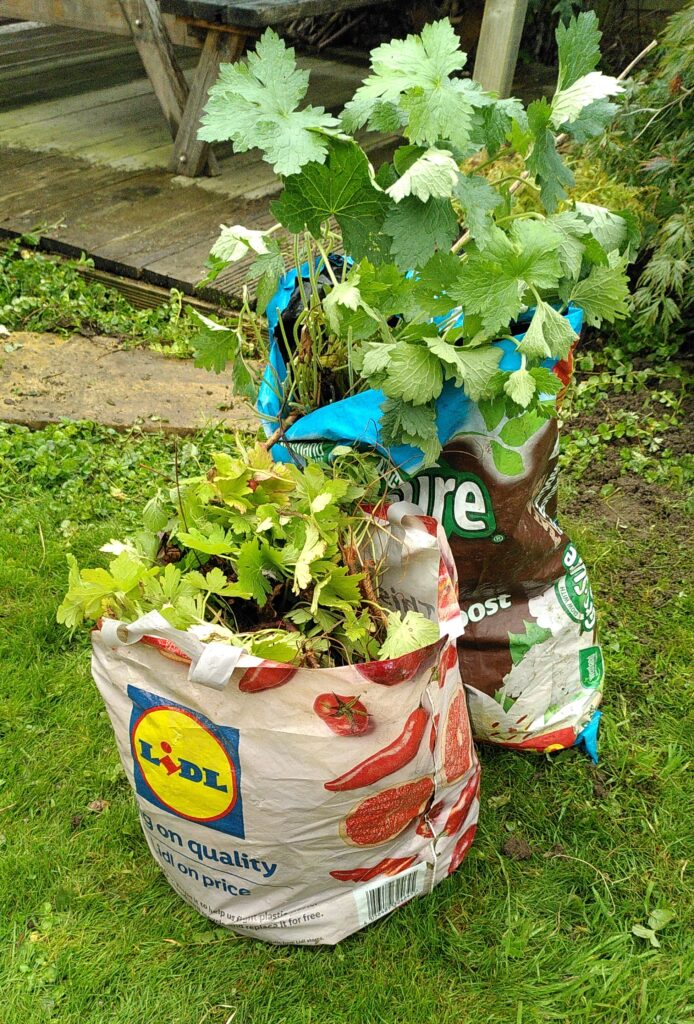
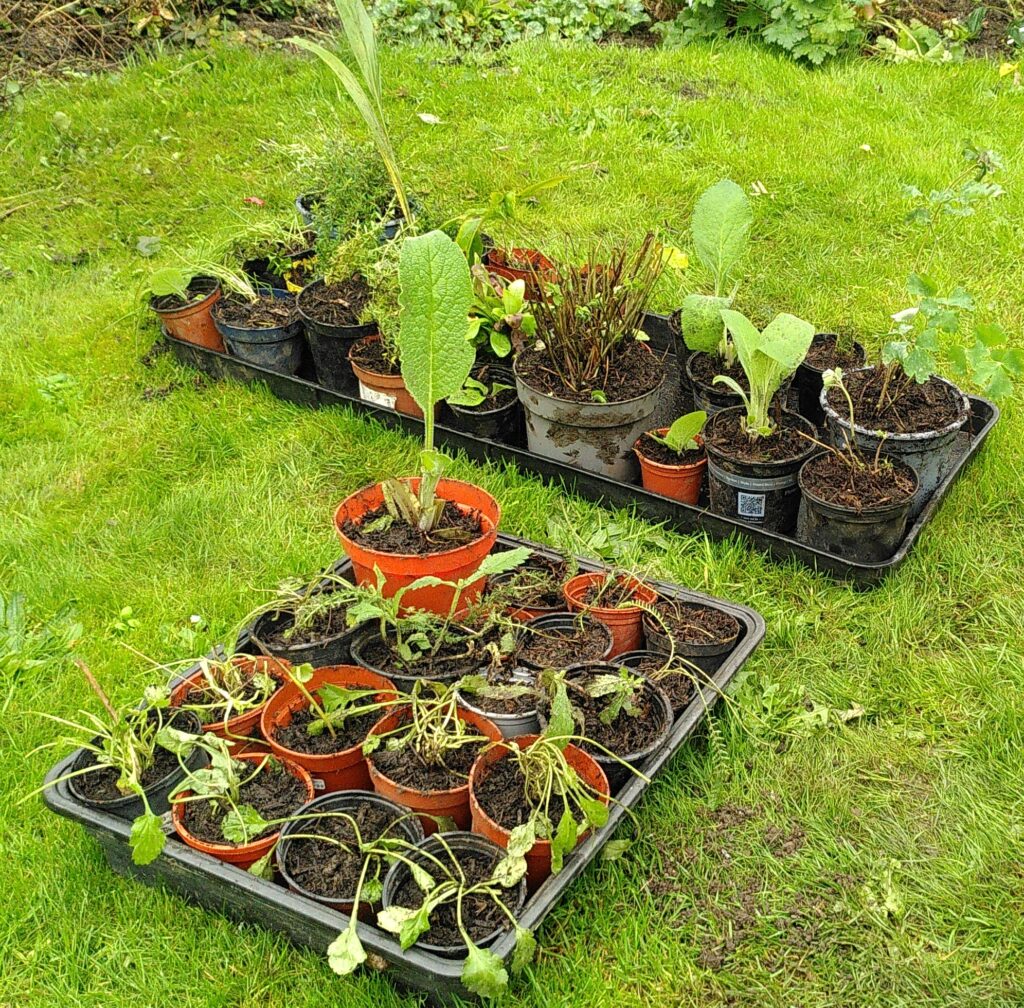
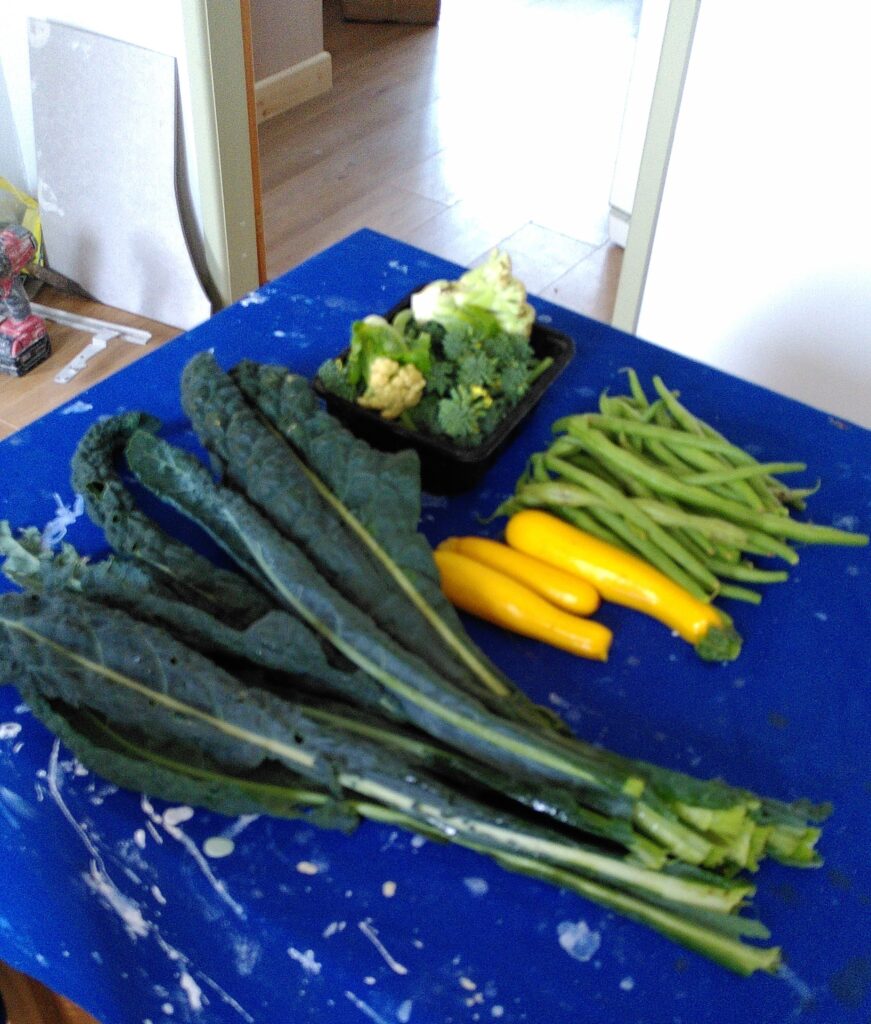
- A Two Day Summer in August
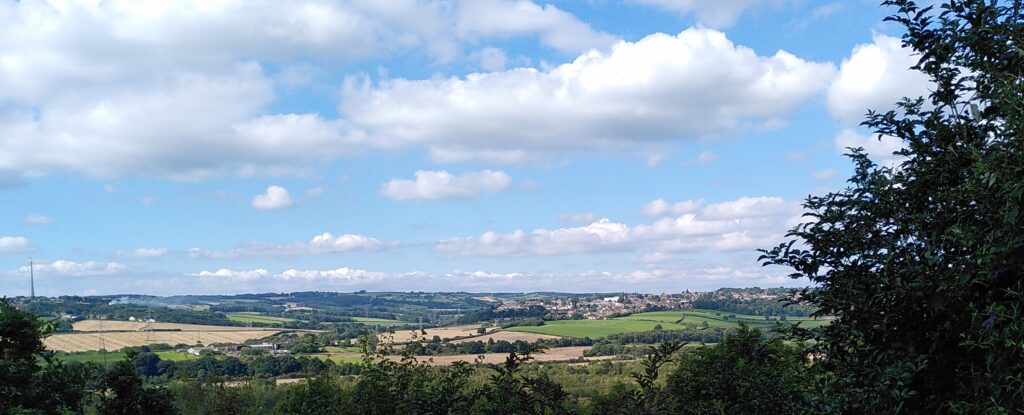
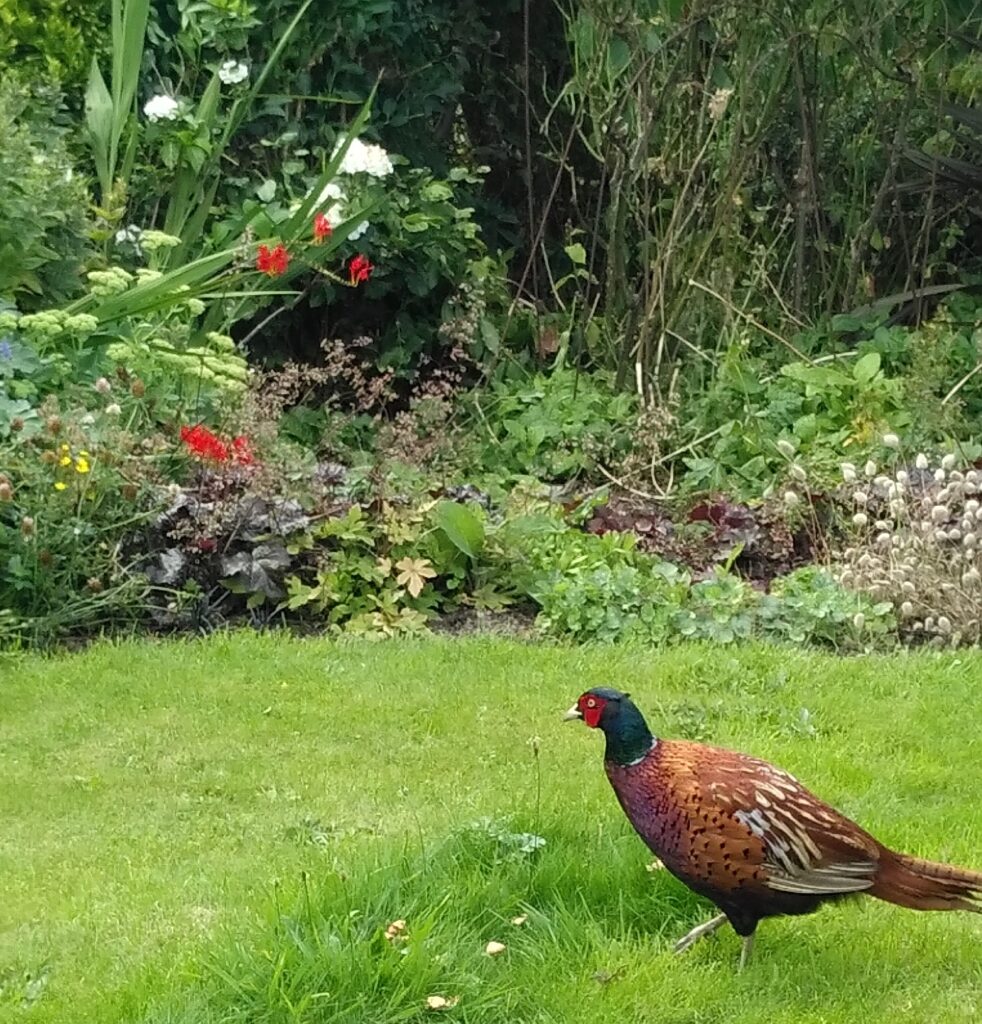
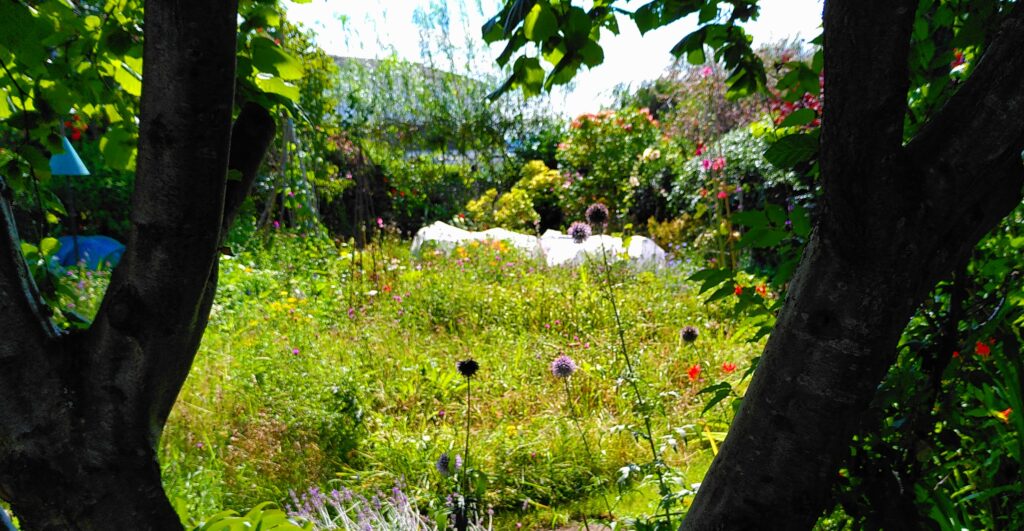
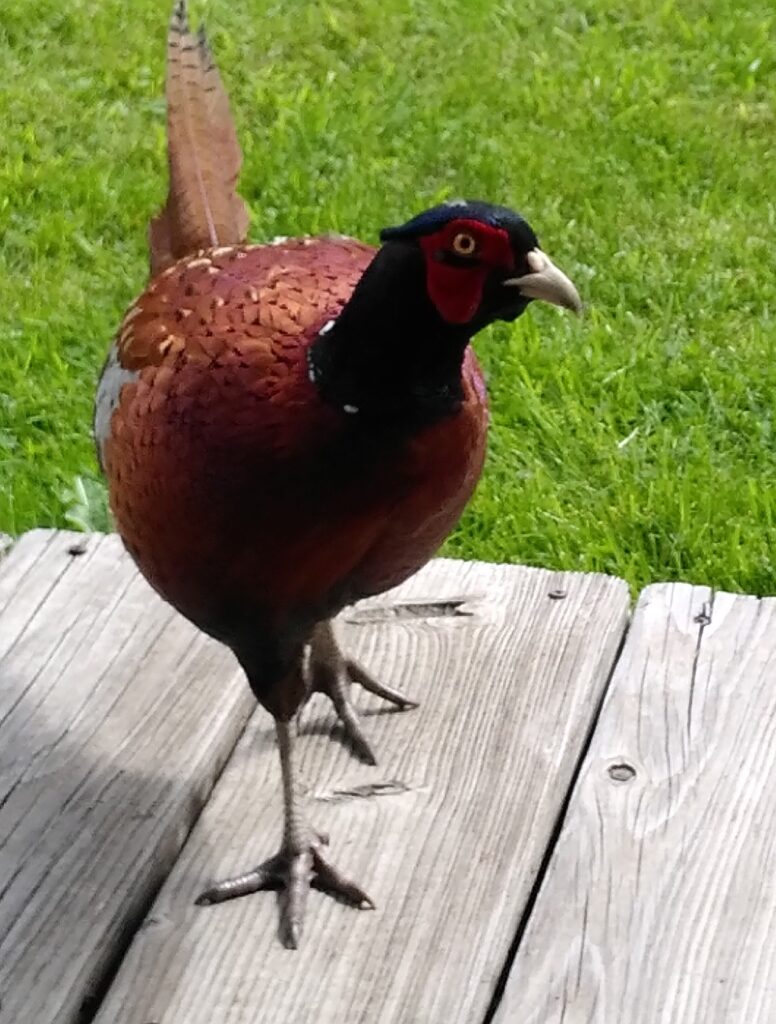
???????? 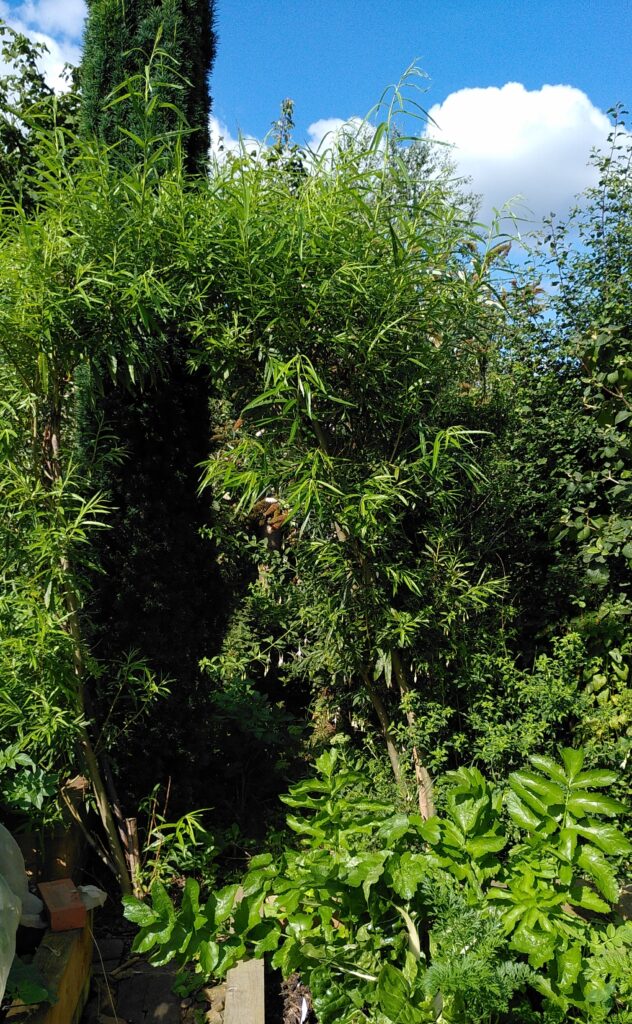
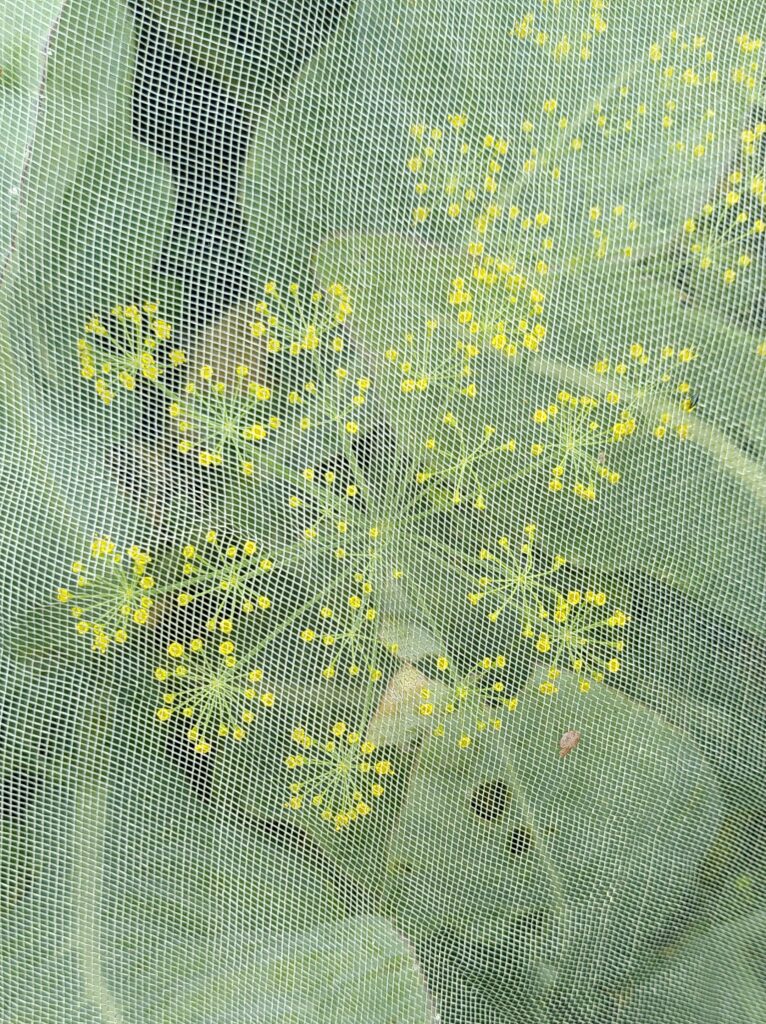
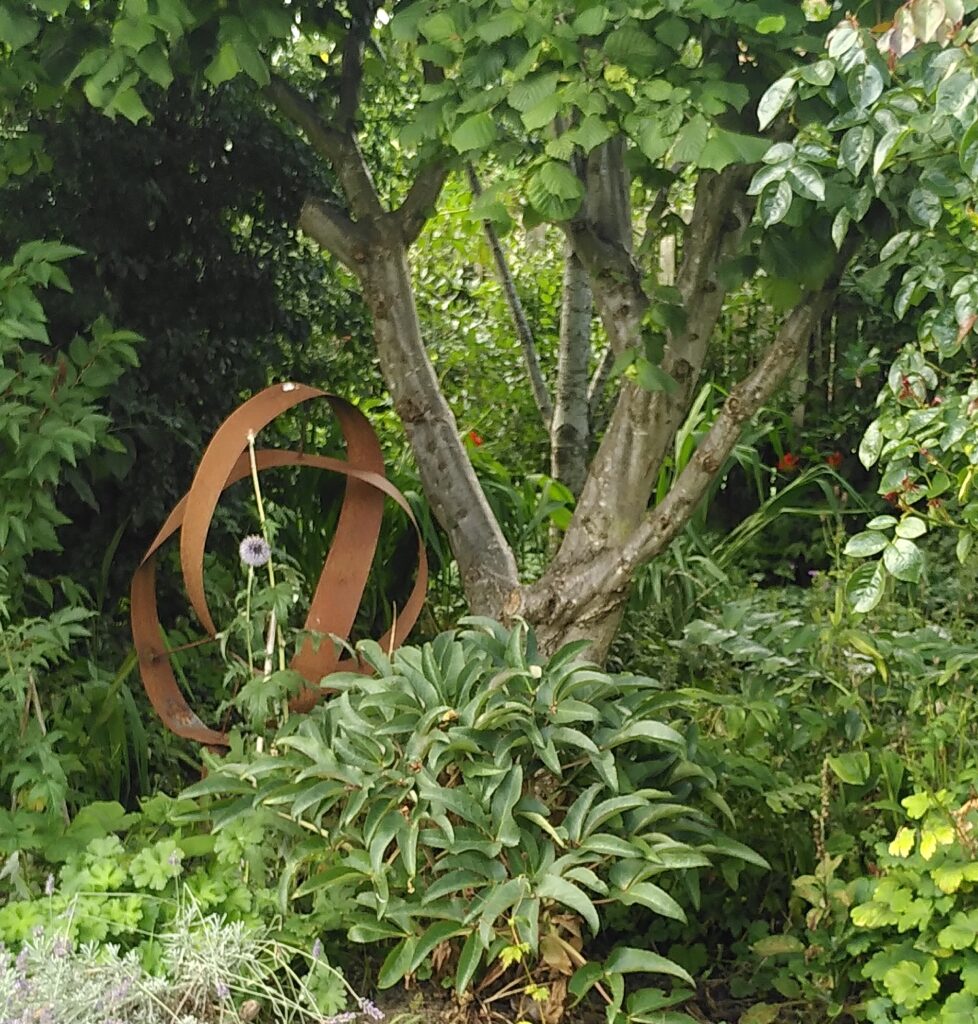
???????? 
- A Strange Year
Ruth was away for a couple of weeks, so I was in charge. These are some of the photos I sent her as updates. The weird mixture of rain and drought has led to some giant plants, virtually no apples and an absolute glut of red roses. The Heron surplanted the usual crows and magpies. The cut and come again cauliflower is very successful. A change of location and regular watering brought a smile to the face of a sad fern.
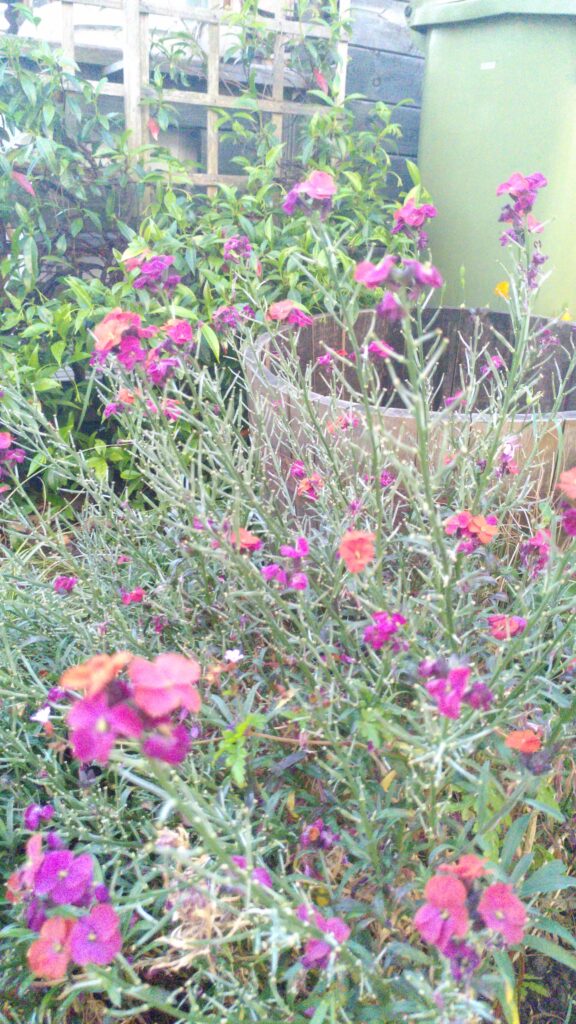
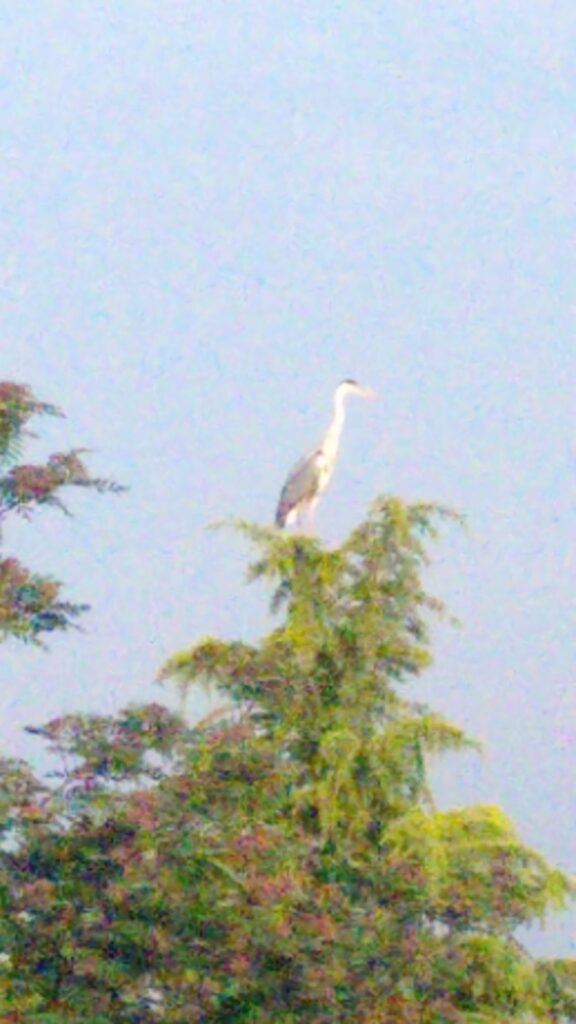

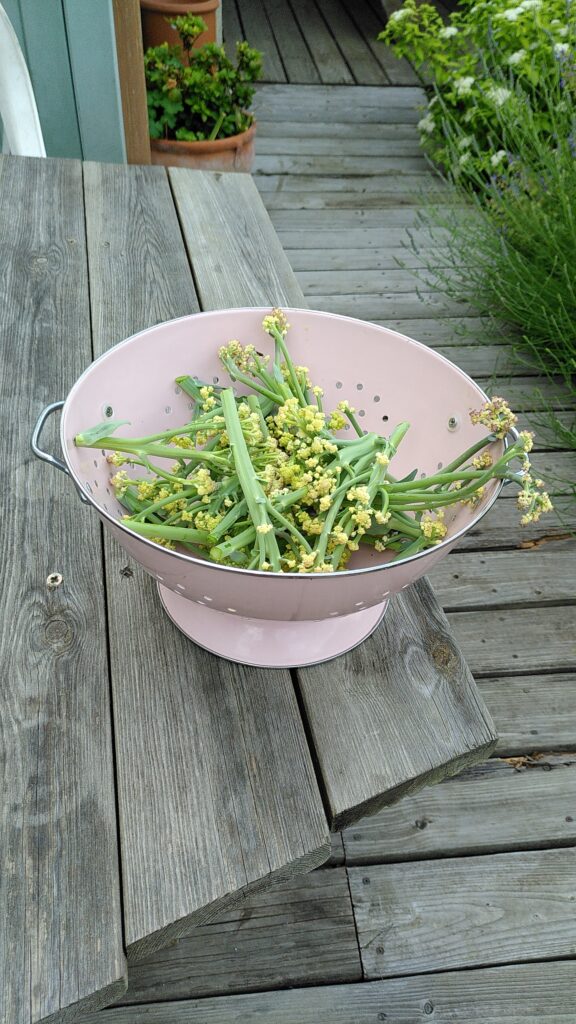
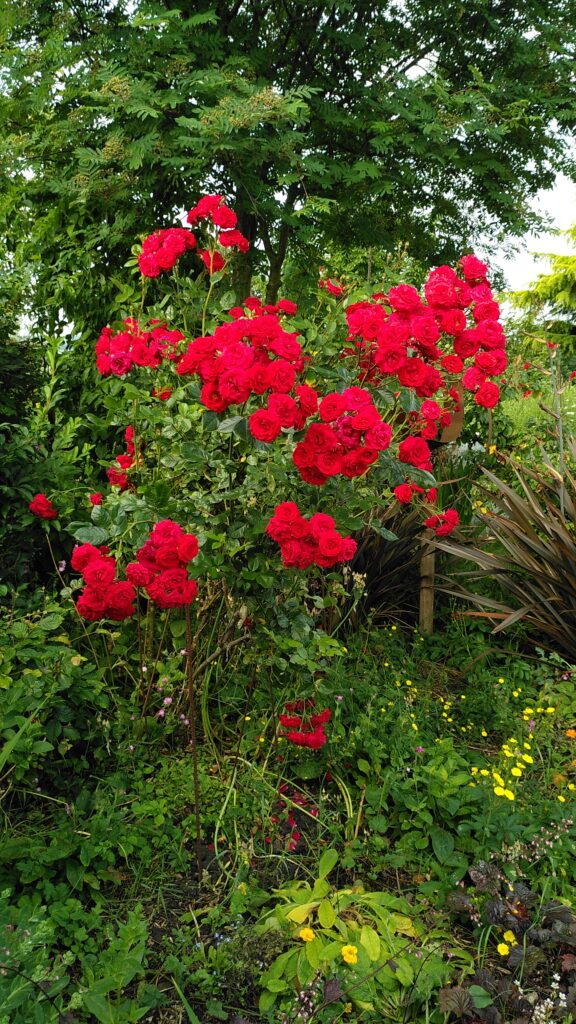

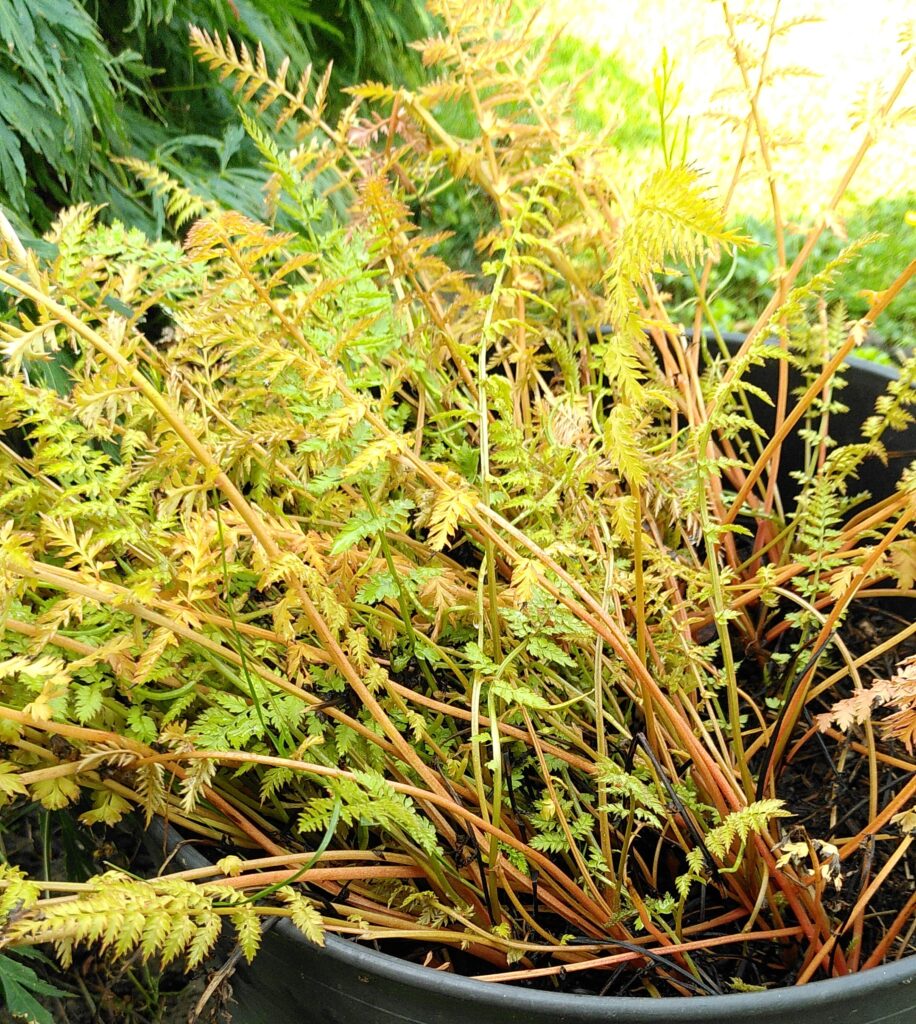
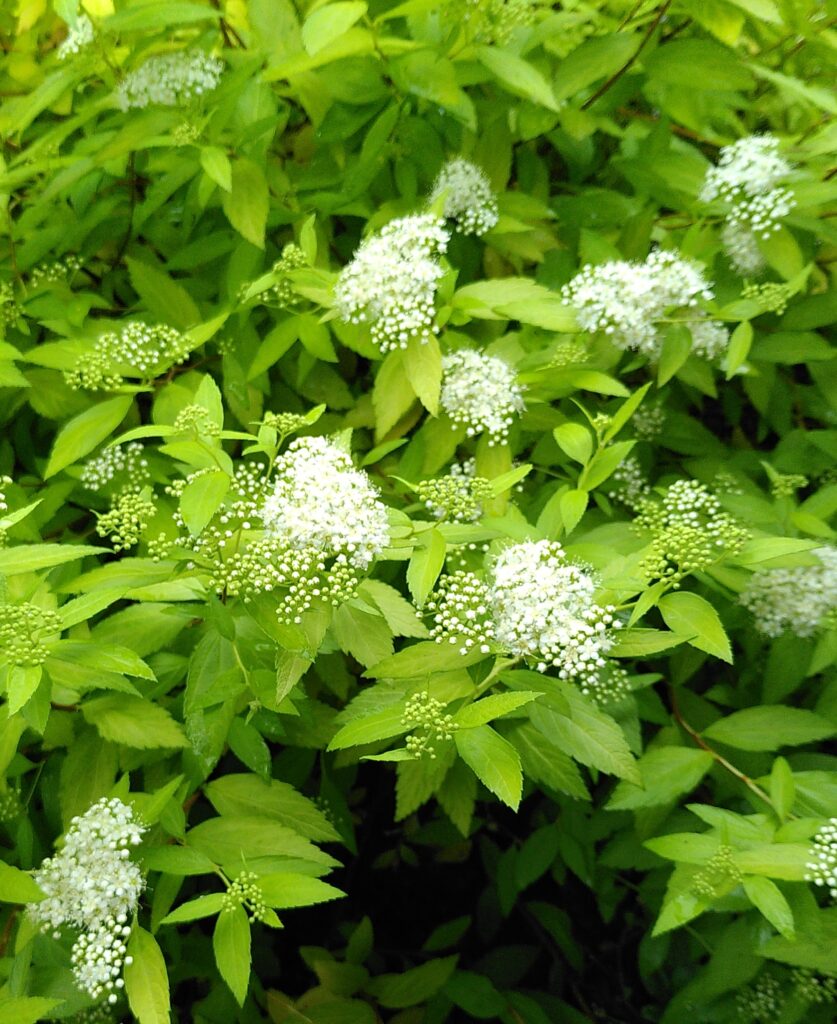
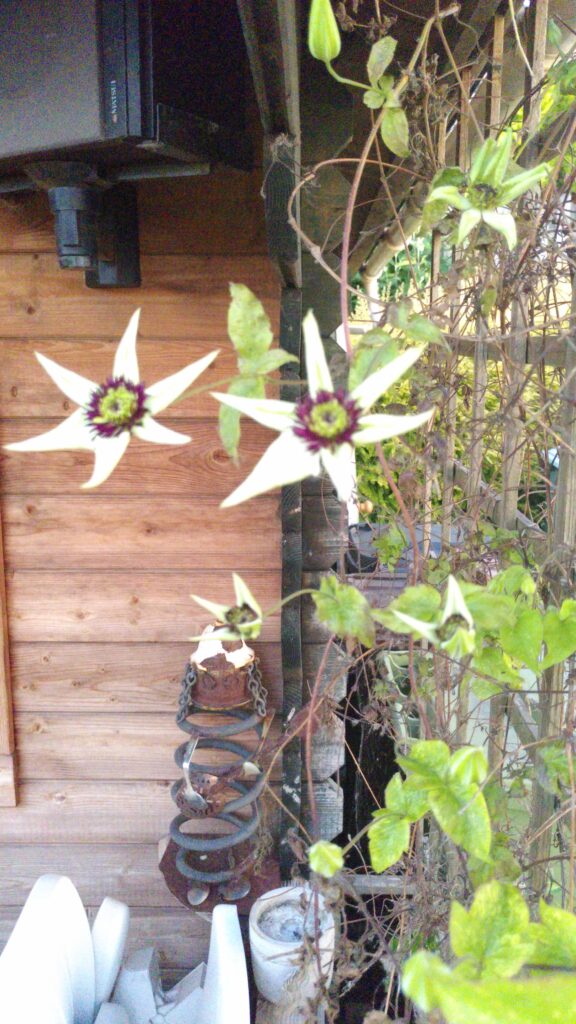
- Yorkshire Sculpture Park
In the beginning there was landscape, then came life, then life developed rituals (Dogs going round in circles before lying down, Elephants visiting the remains of dead relatives), then creatures made things and altered the landscape (nests, burrows, display sites), then humans started taking these things a lot further.
We have been altering the landscape and making art since pre-history. The sculpture park is a piece of altered landscape, that is a display site and a piece of show-off theatre, that is now also a place to see works of art.
I am just about to start giving Art and Landscape tours of the Park again. Here is the old document for the tour. A new one is on its way.
https://valleycreations.me/wp-content/uploads/2023/06/YSP-Talk.pdf
- Peebles
Thanks to Ruth, a couple of days away before an operation. For me a chance to paint and a bonus swim.




- Flowers linger into December
Although most of the leaves have now gone, some are still clinging on to green. The weather is cool and damp, rather than cold and the sun was so warm the other day that I couldn’t leave milk outside while we had a cup of coffee. There are quite a few flowers around, some early some late. There were seven female pheasants and one male in the garden at once one day.
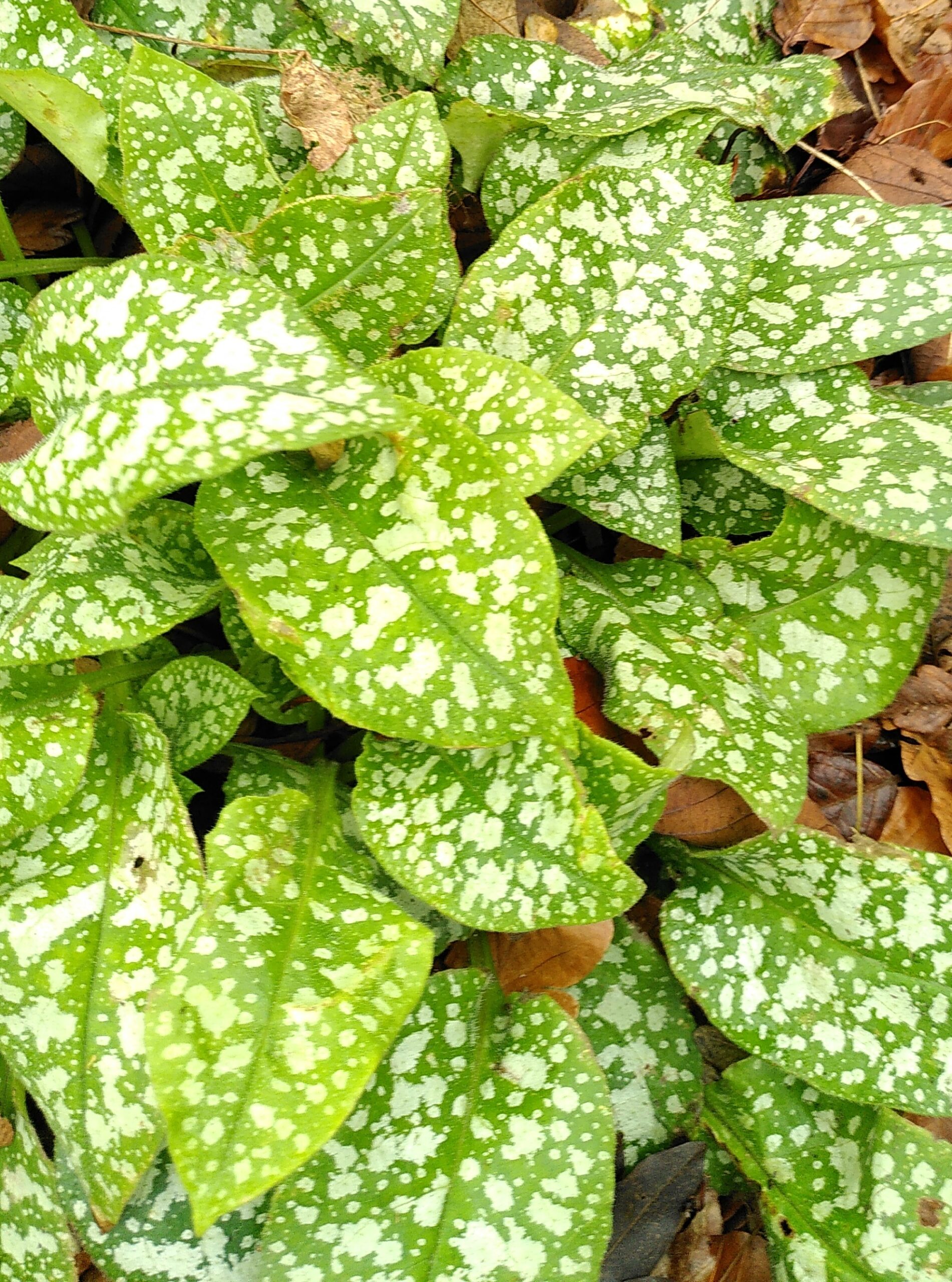
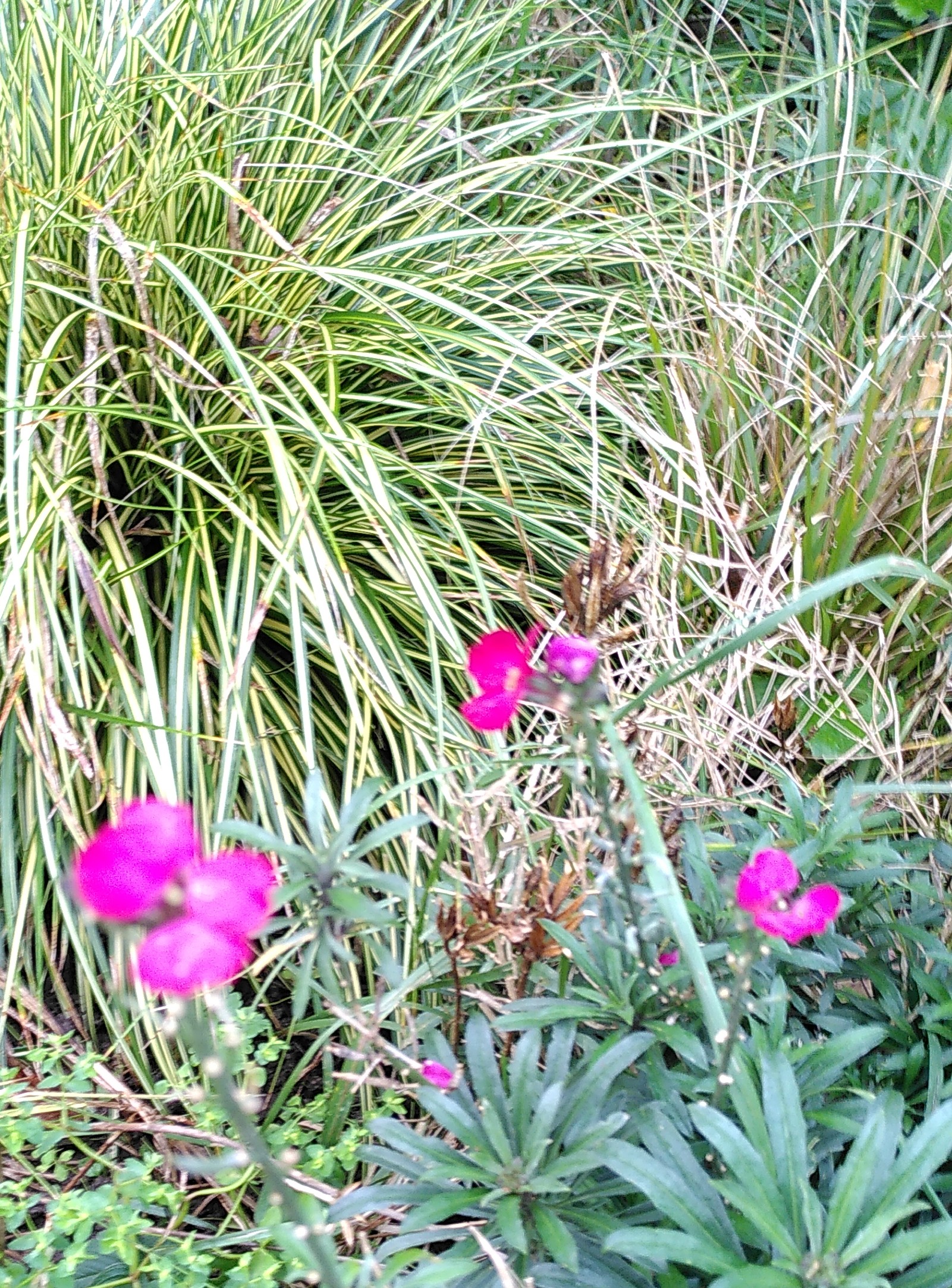
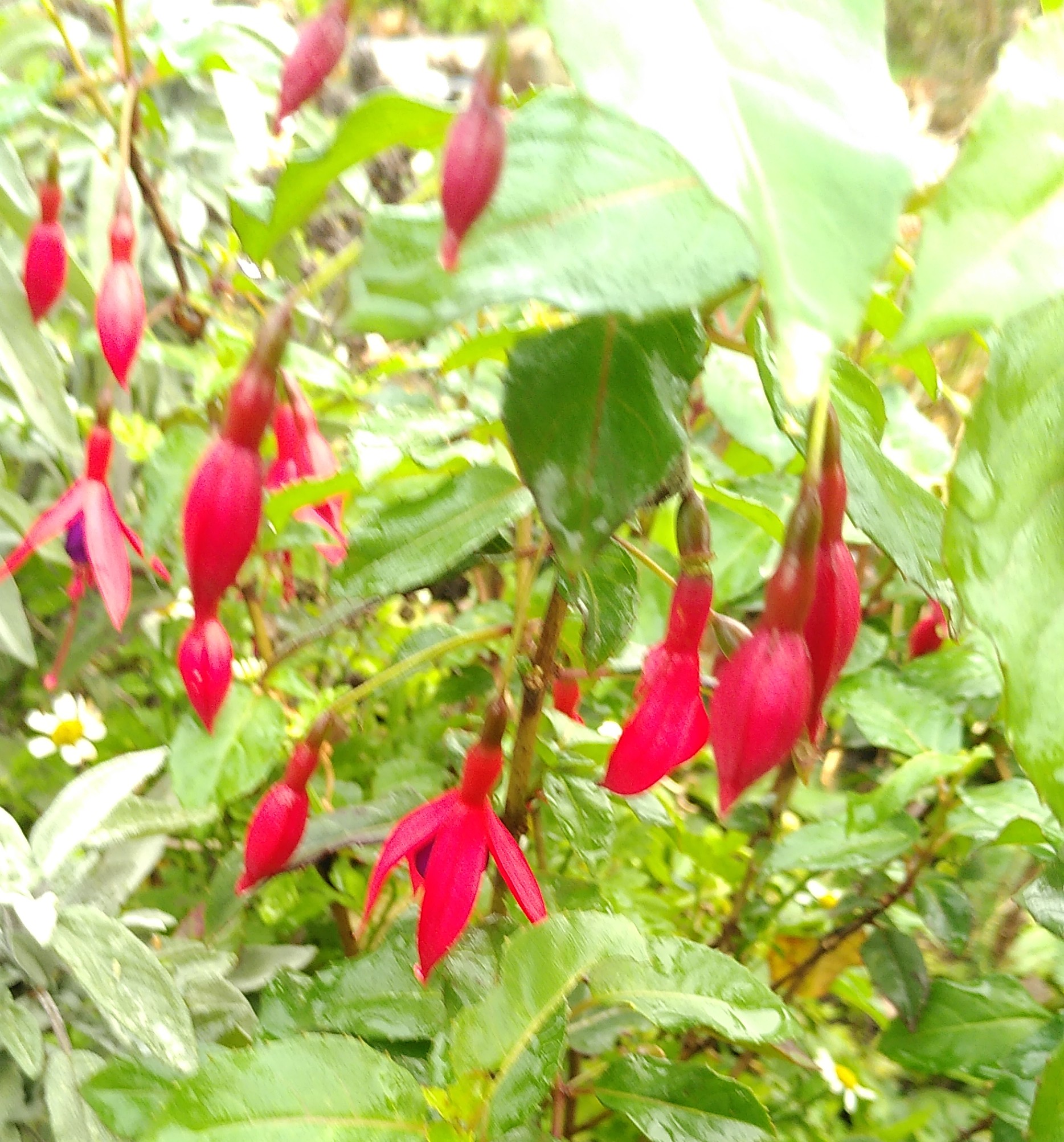
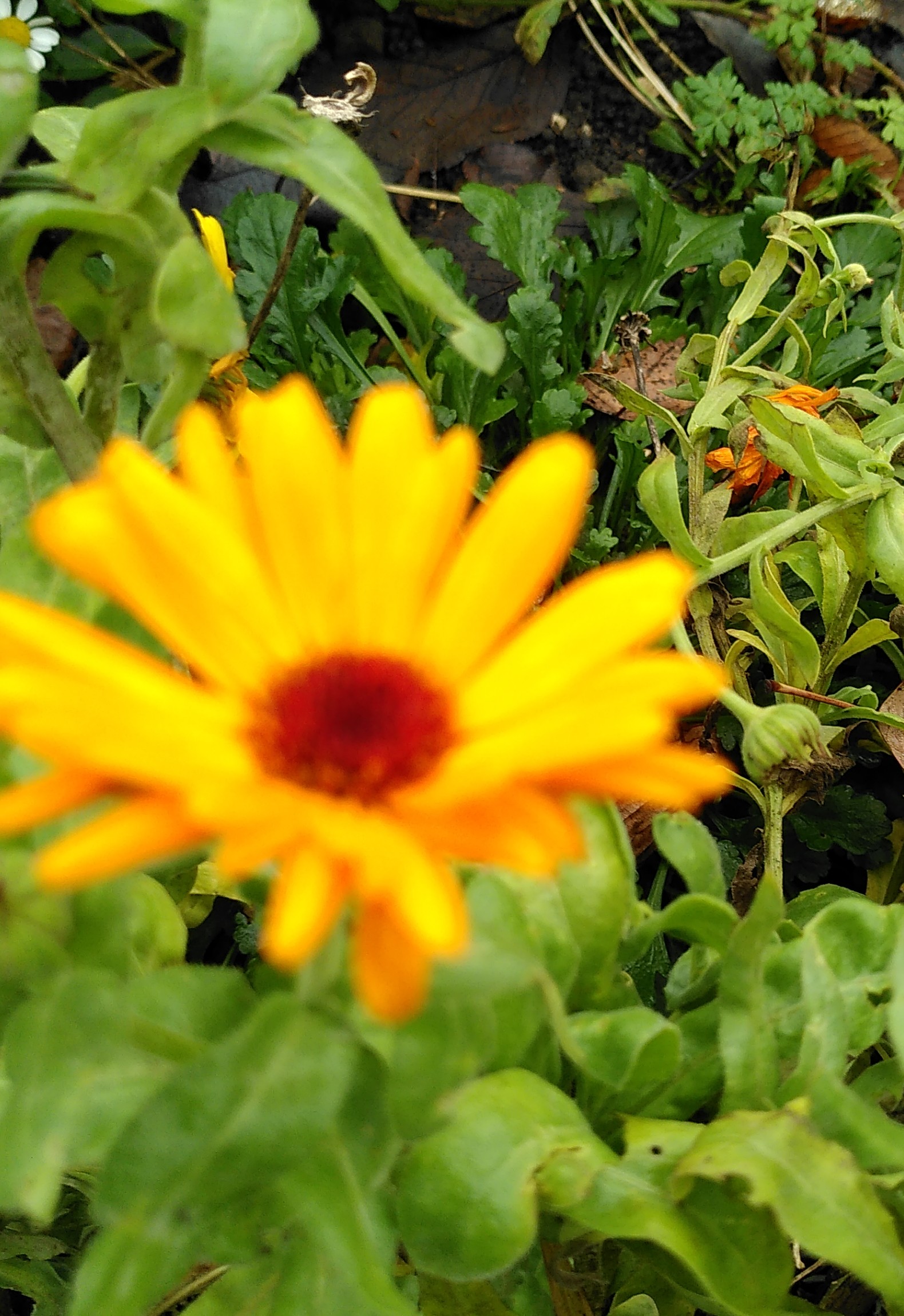
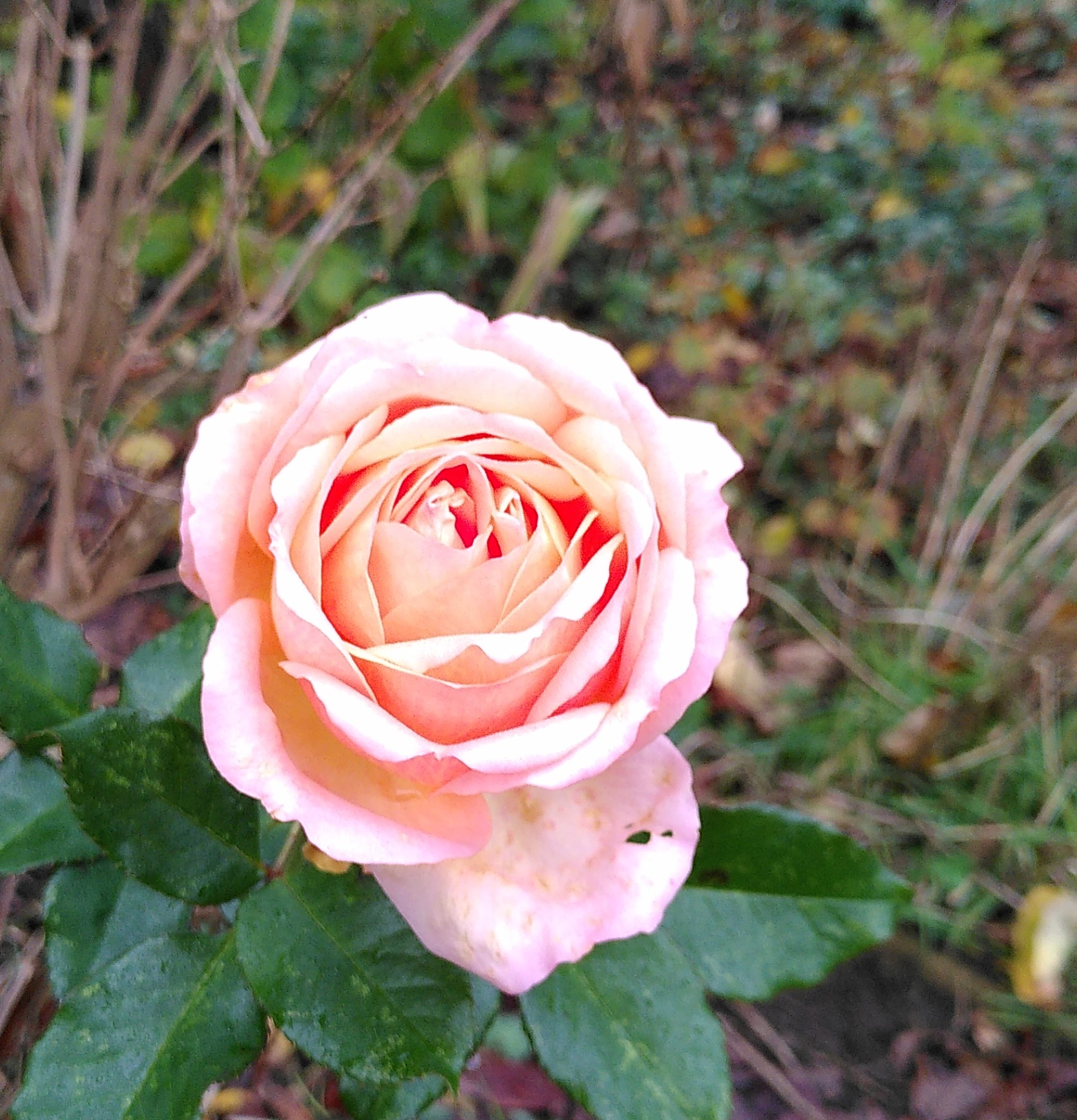
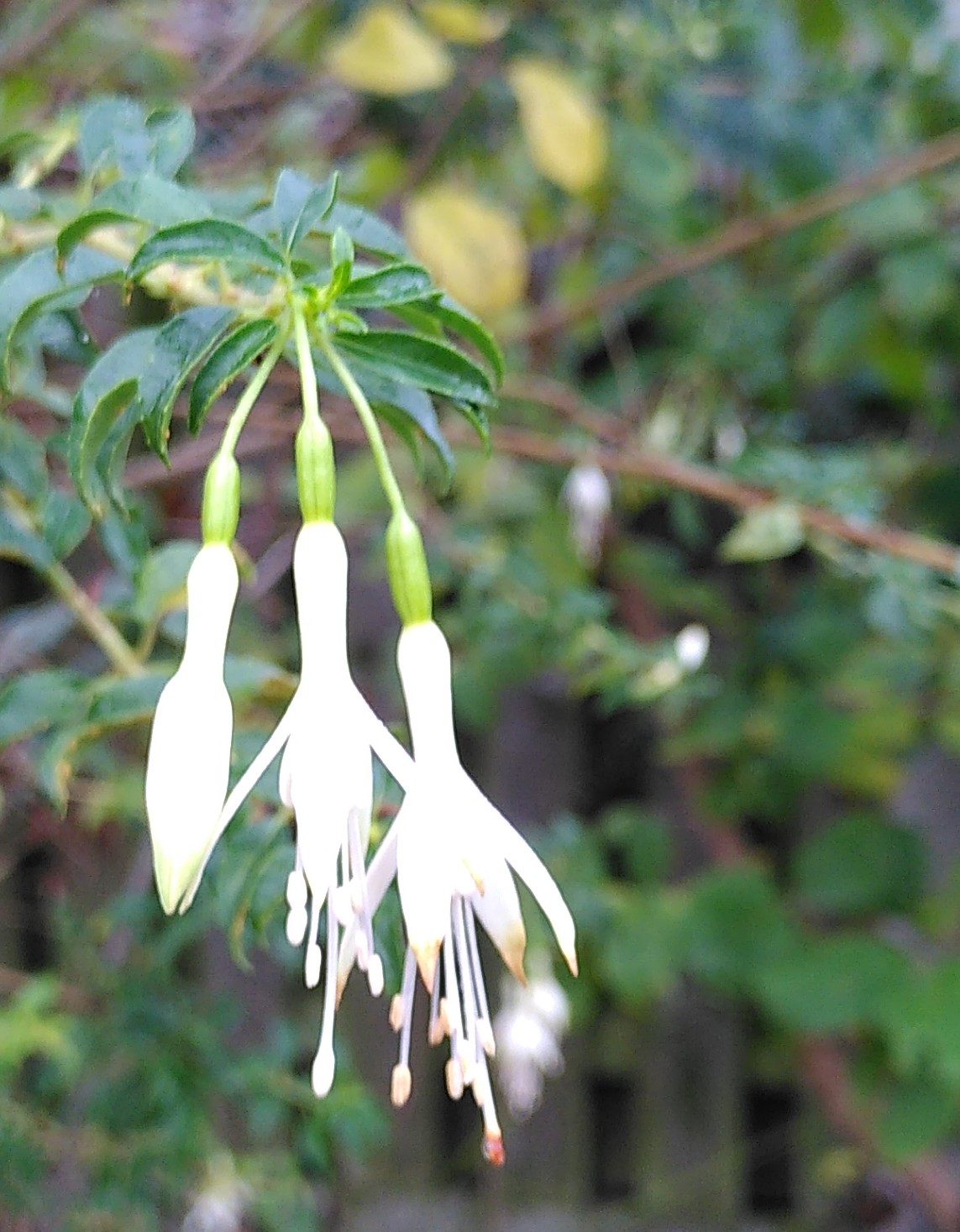
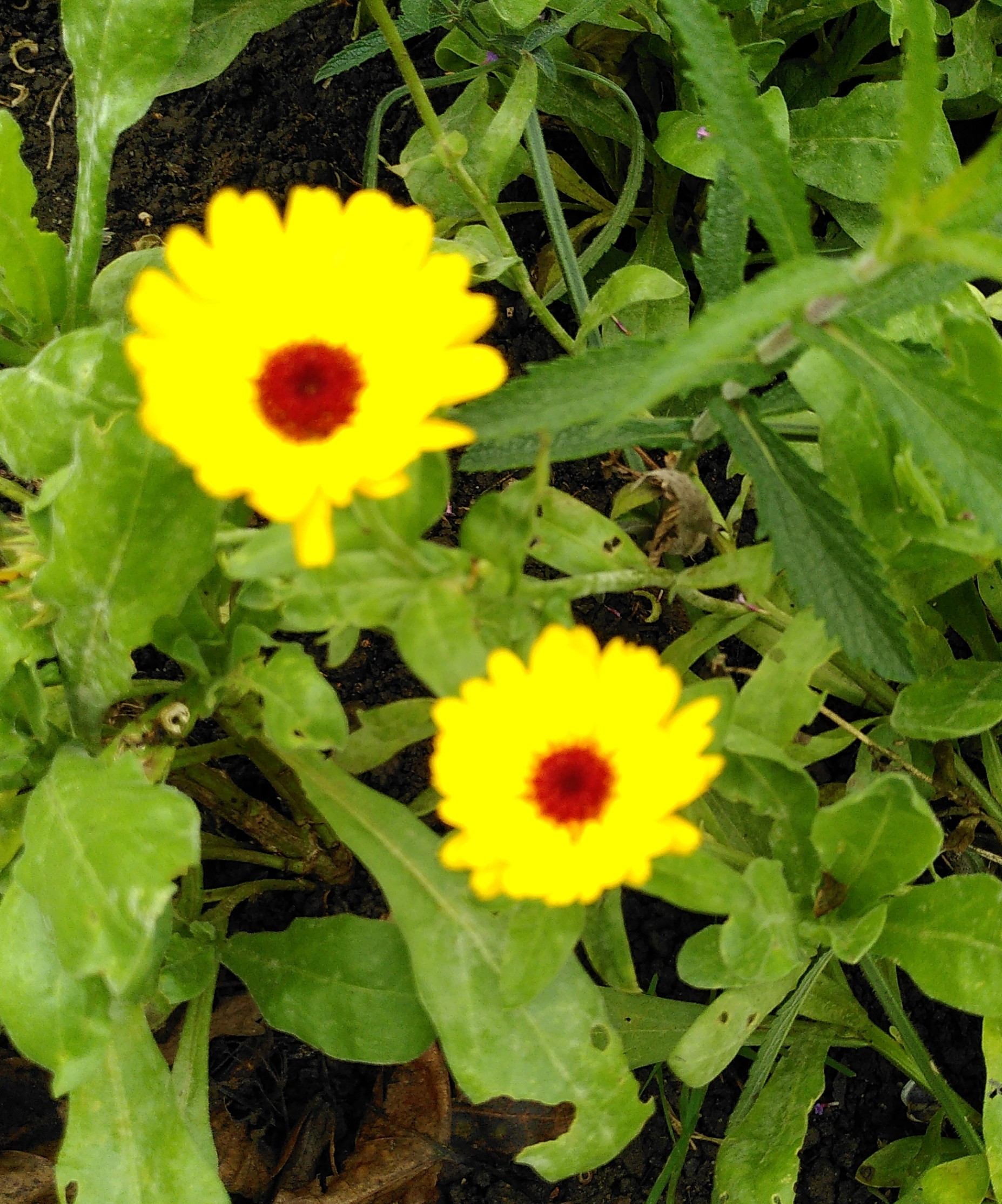
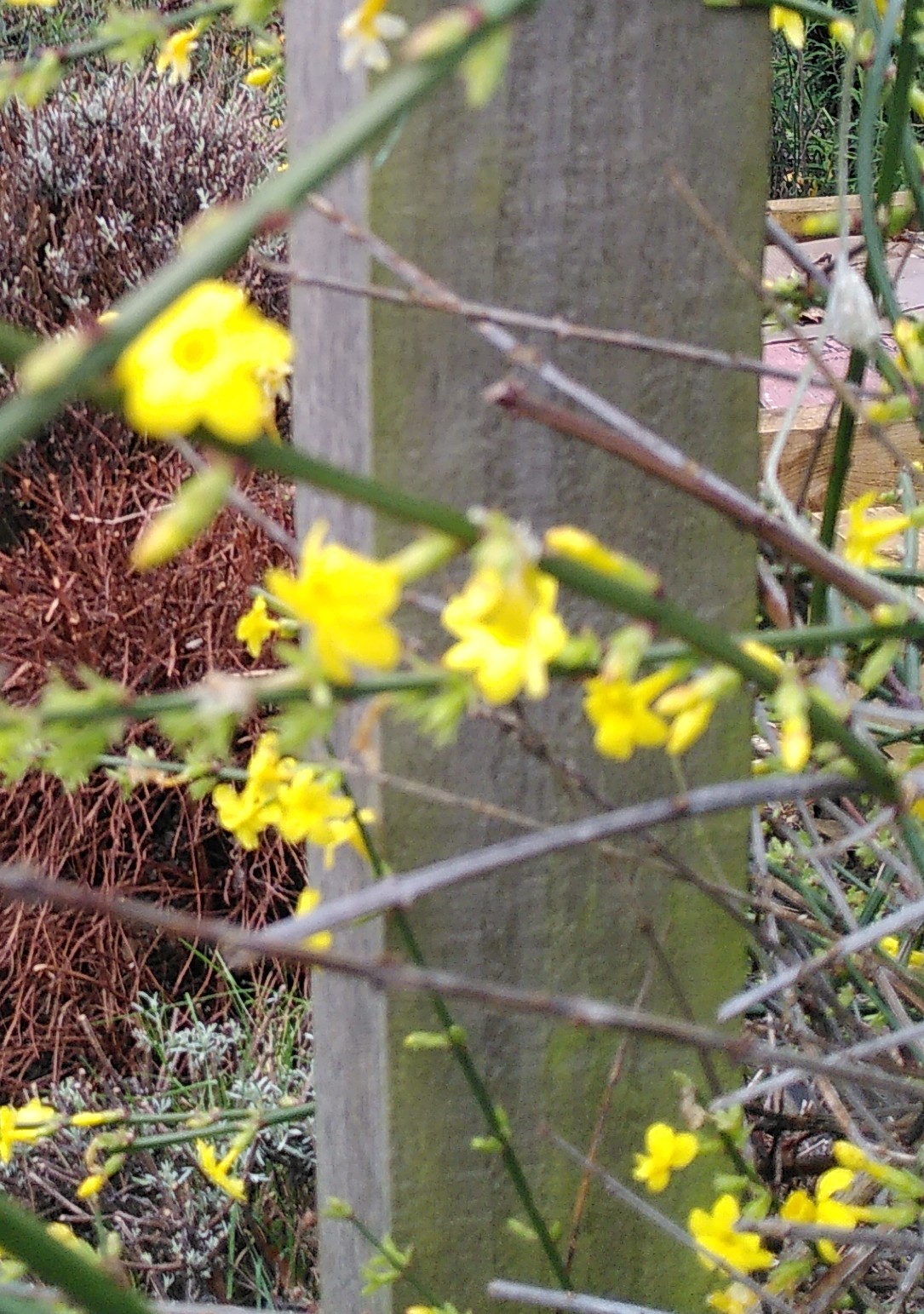
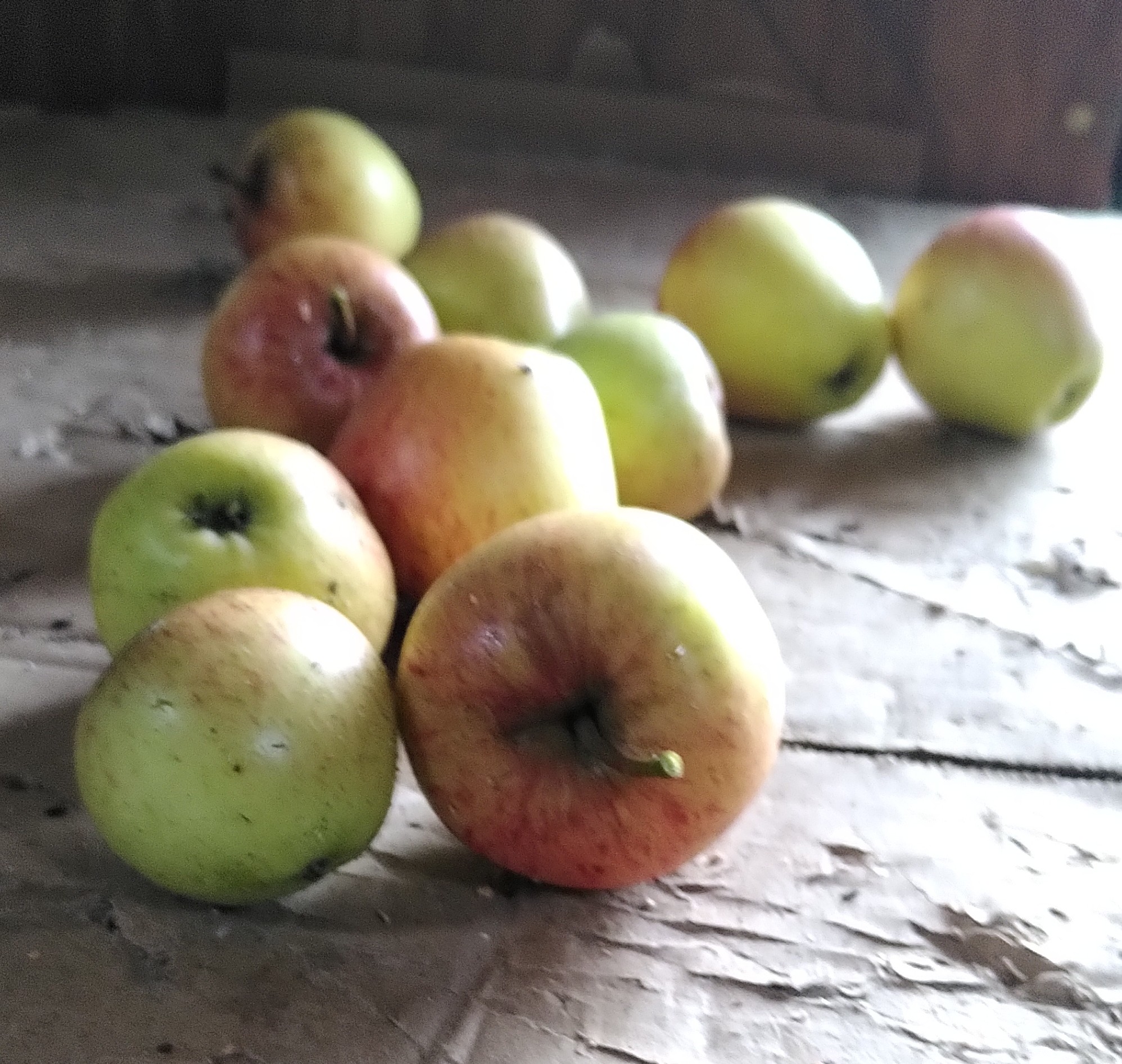
- Weird Autumn
The strange weather continues with some trees going into leaf drop routines early and others late, giving an extended display. We have a confused hazel that has green leaves and catkins, when most trees are now bare. Fungi all over the place, as usual and I improved a table top in time to match the Acers outside.
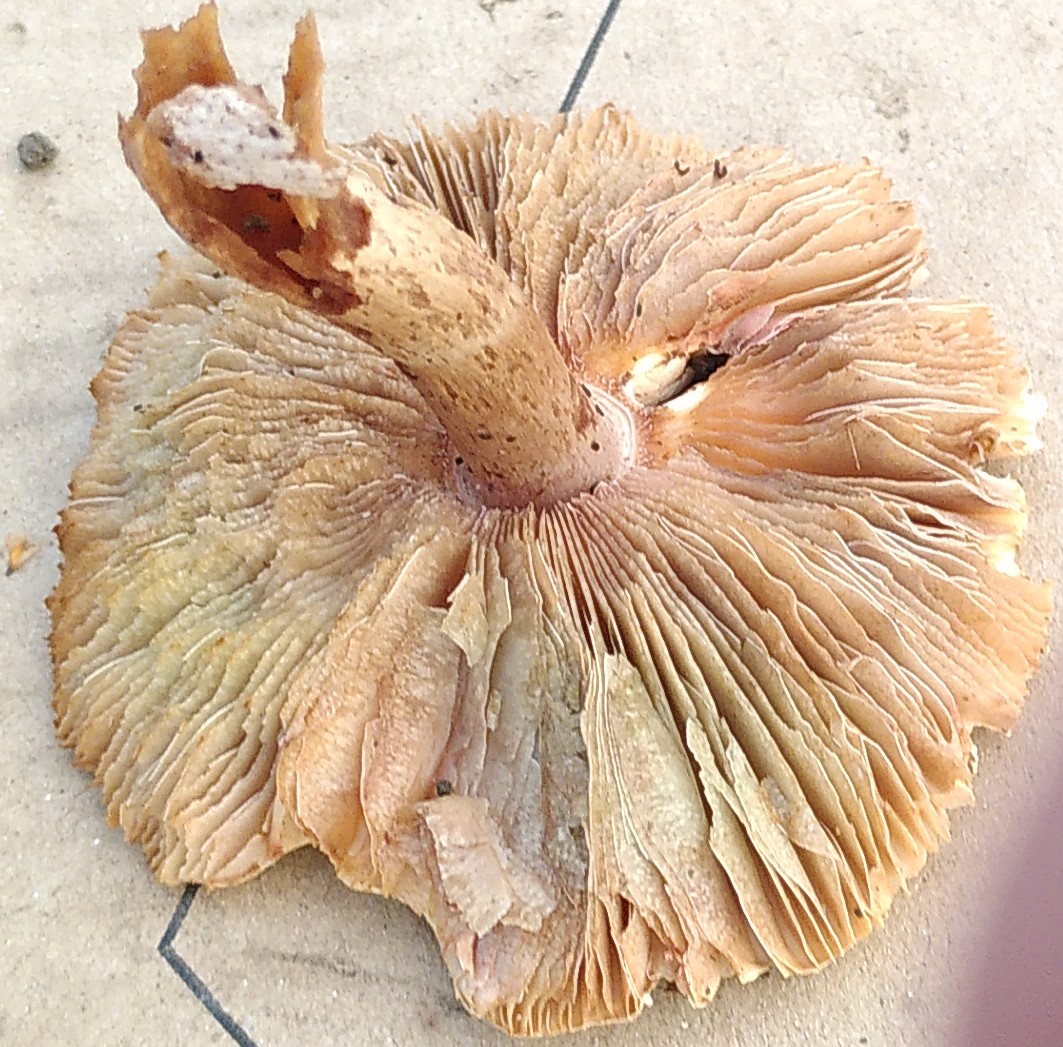
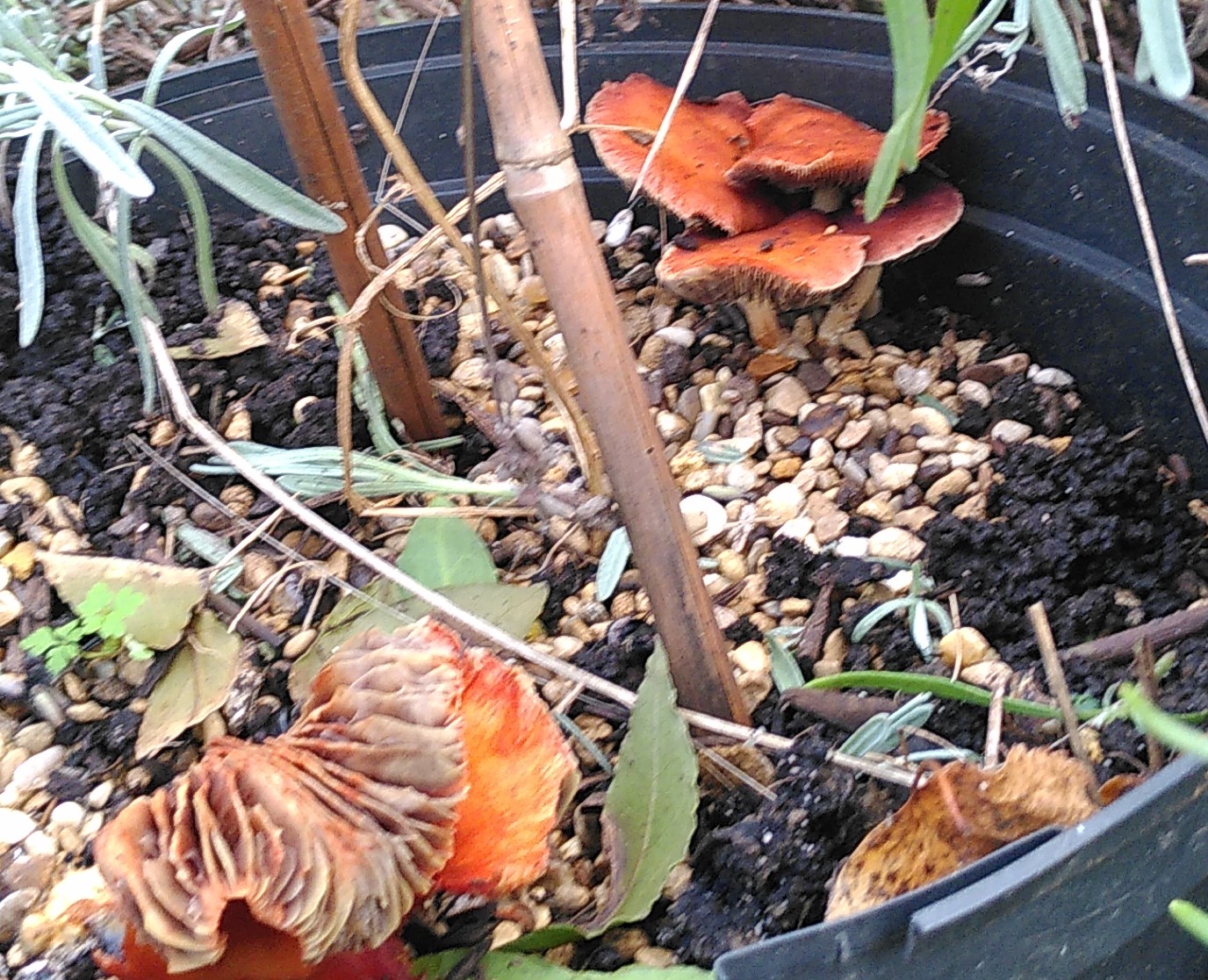
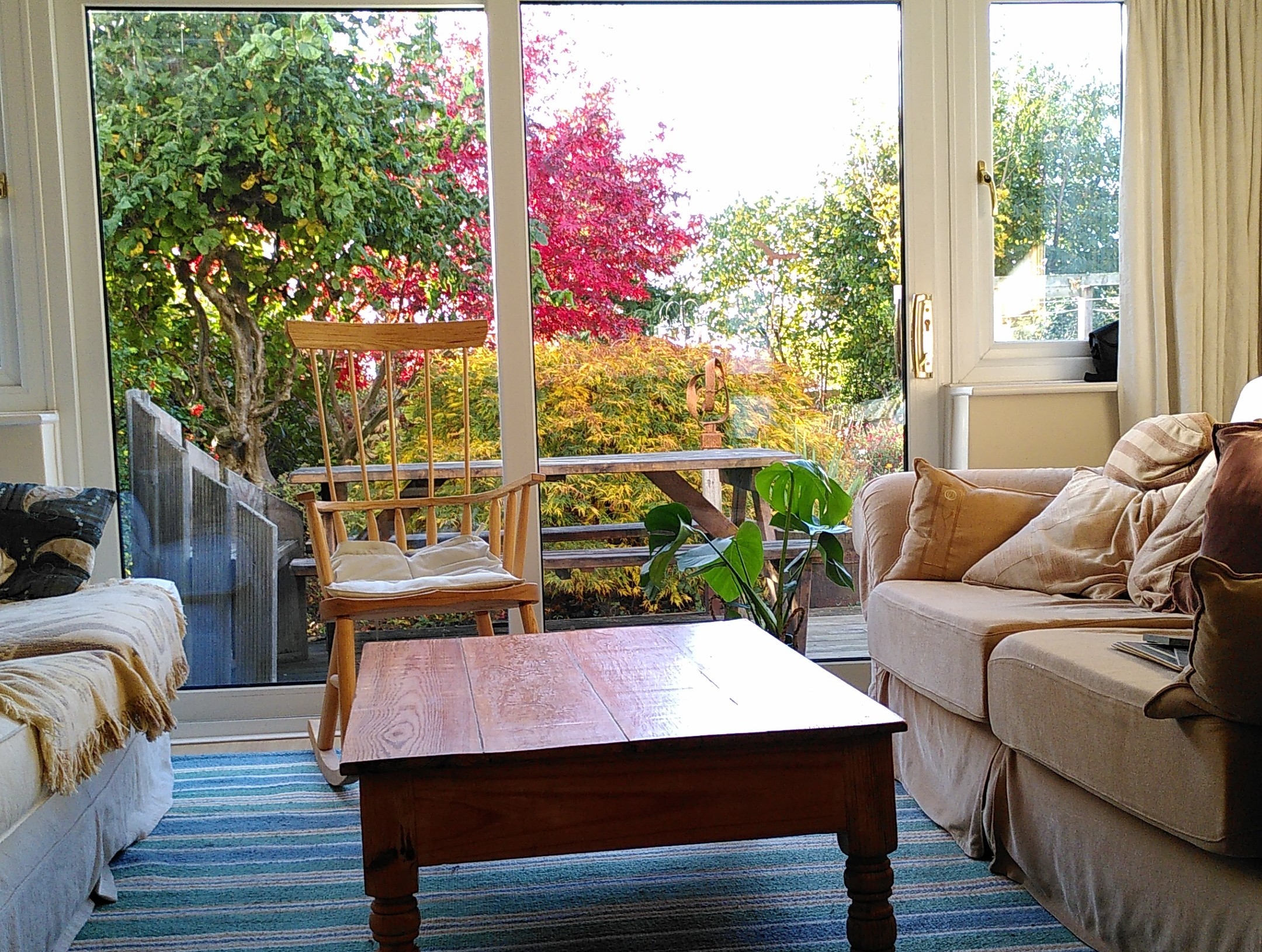
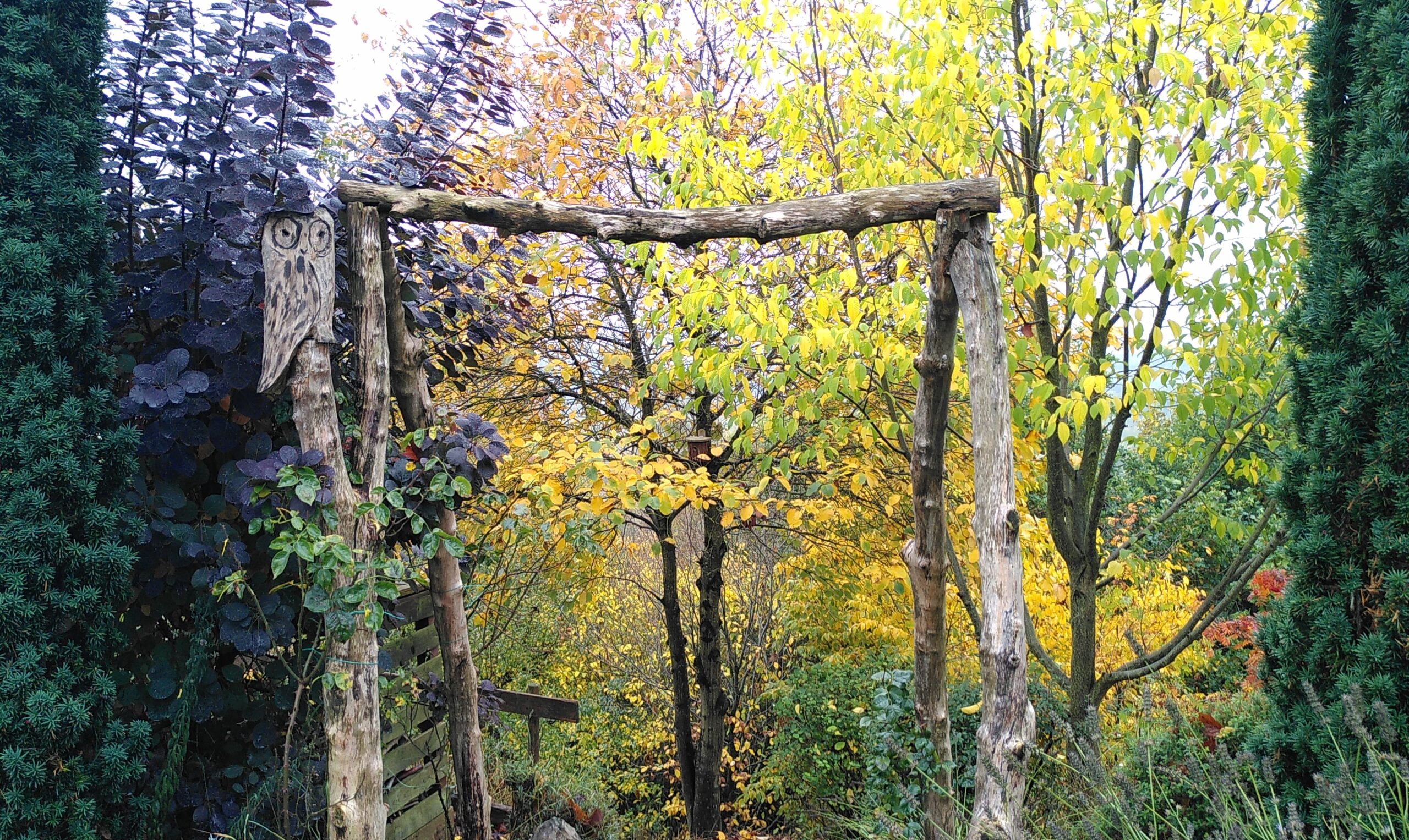
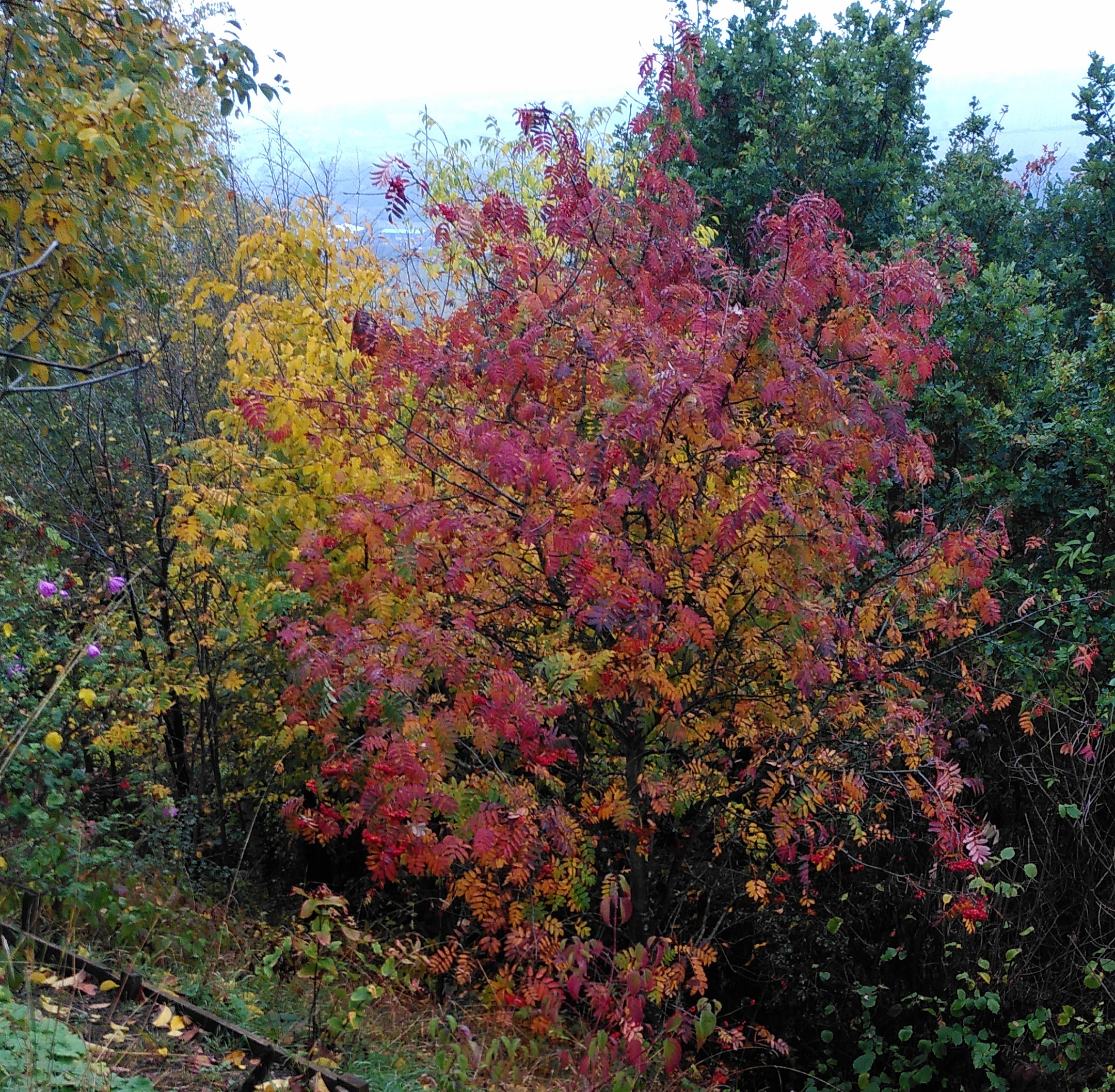
- Garden Amble
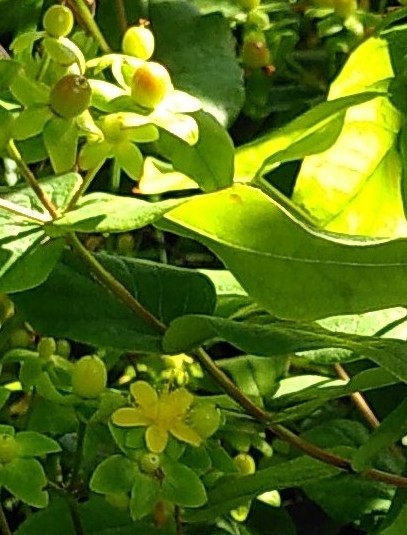

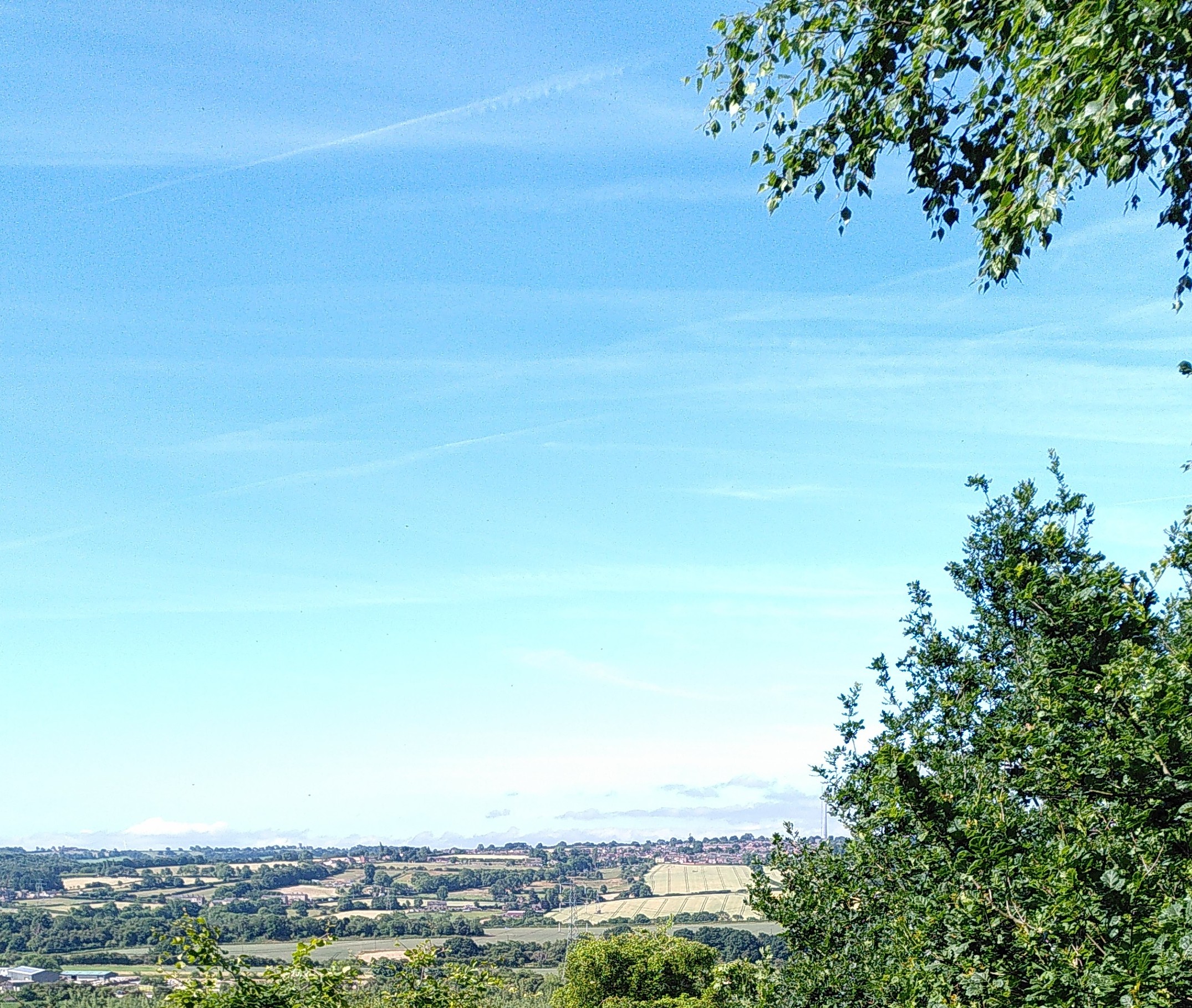
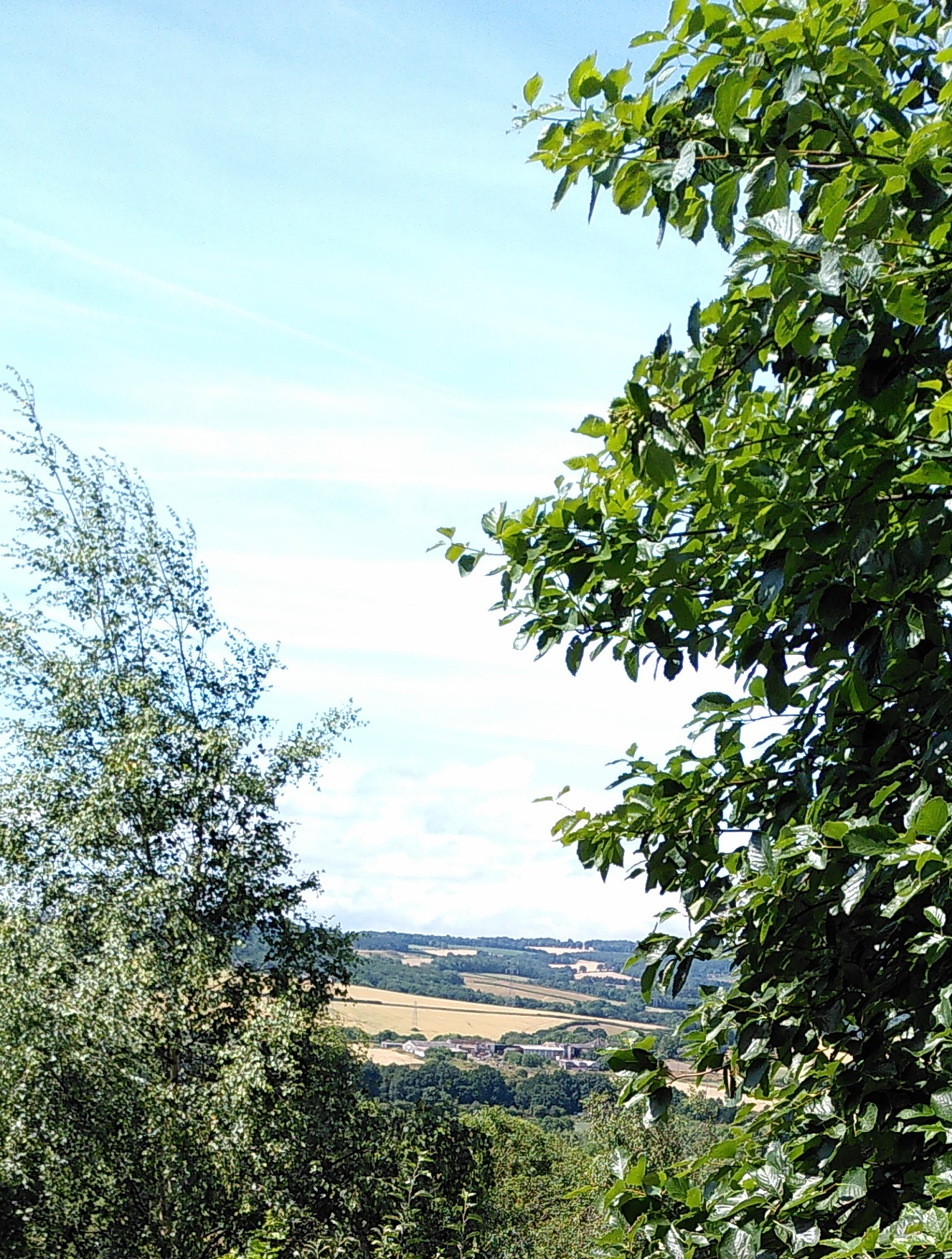

- Ambleside
A short trip to Ambleside Manor Vegetarian guest house. Some sketchesfor me, walks up big hills for Ruth and some lovely meals at Zeffirellis.
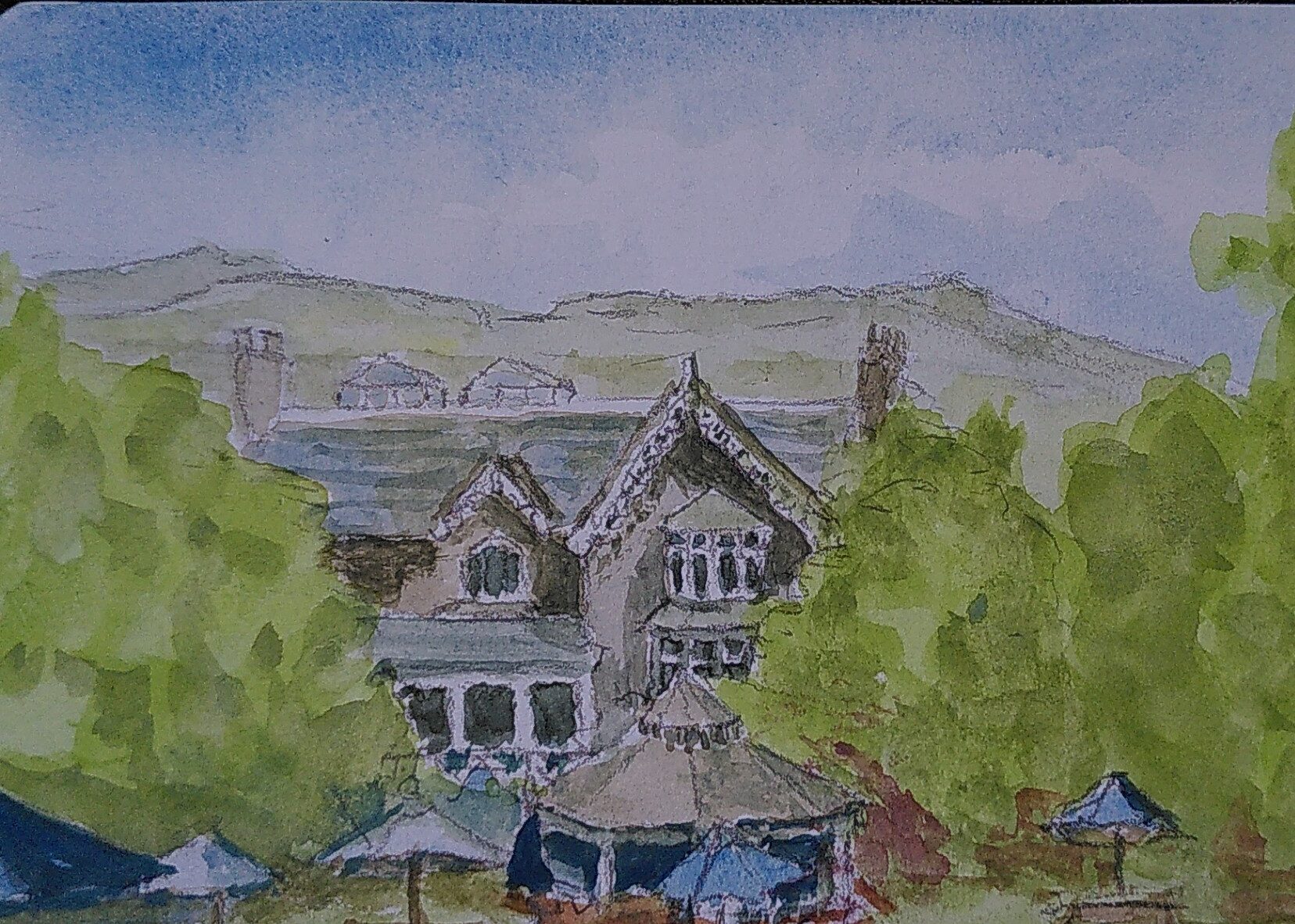
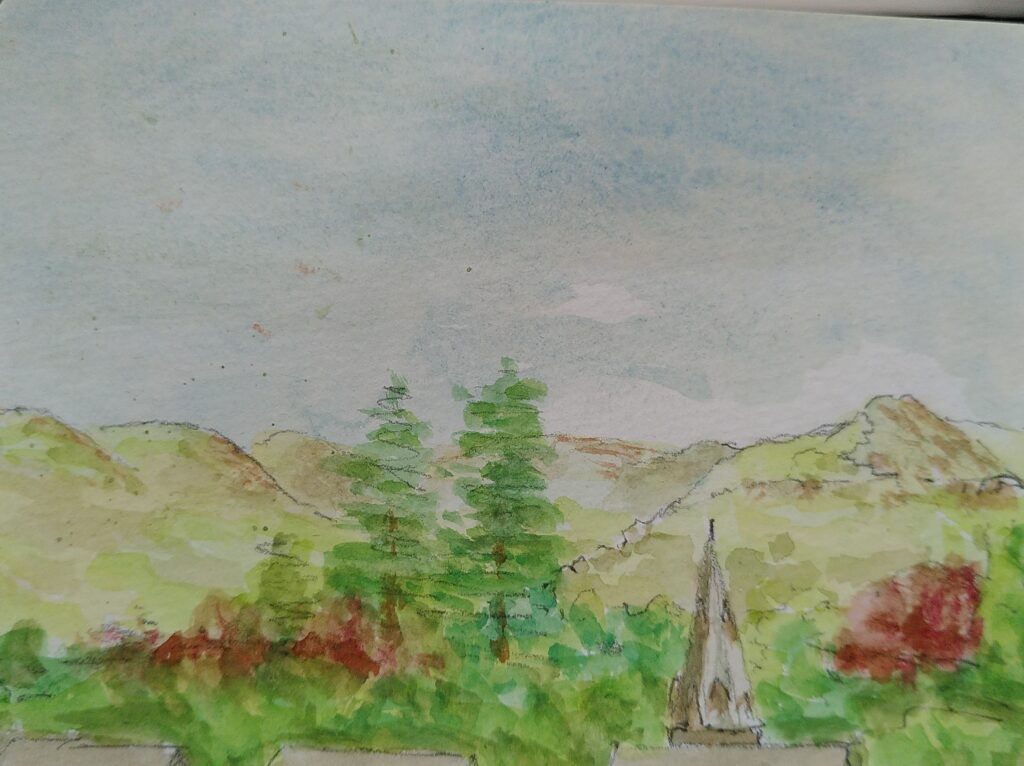

- Waiting for Rattle
I’ve been doing the equivalent of ‘no mow May’ for a very long time, by leaving patches with daffodils, snow drops, daisies and buttercups, but for the past few years Ruth has been working more seriously on meadow planting sections of the grassy areas. Yellow Rattle is one of the ingredients of this style of planting and we have had varied success, using both seed and plugs. This year it has suddenly arrived with a bang.
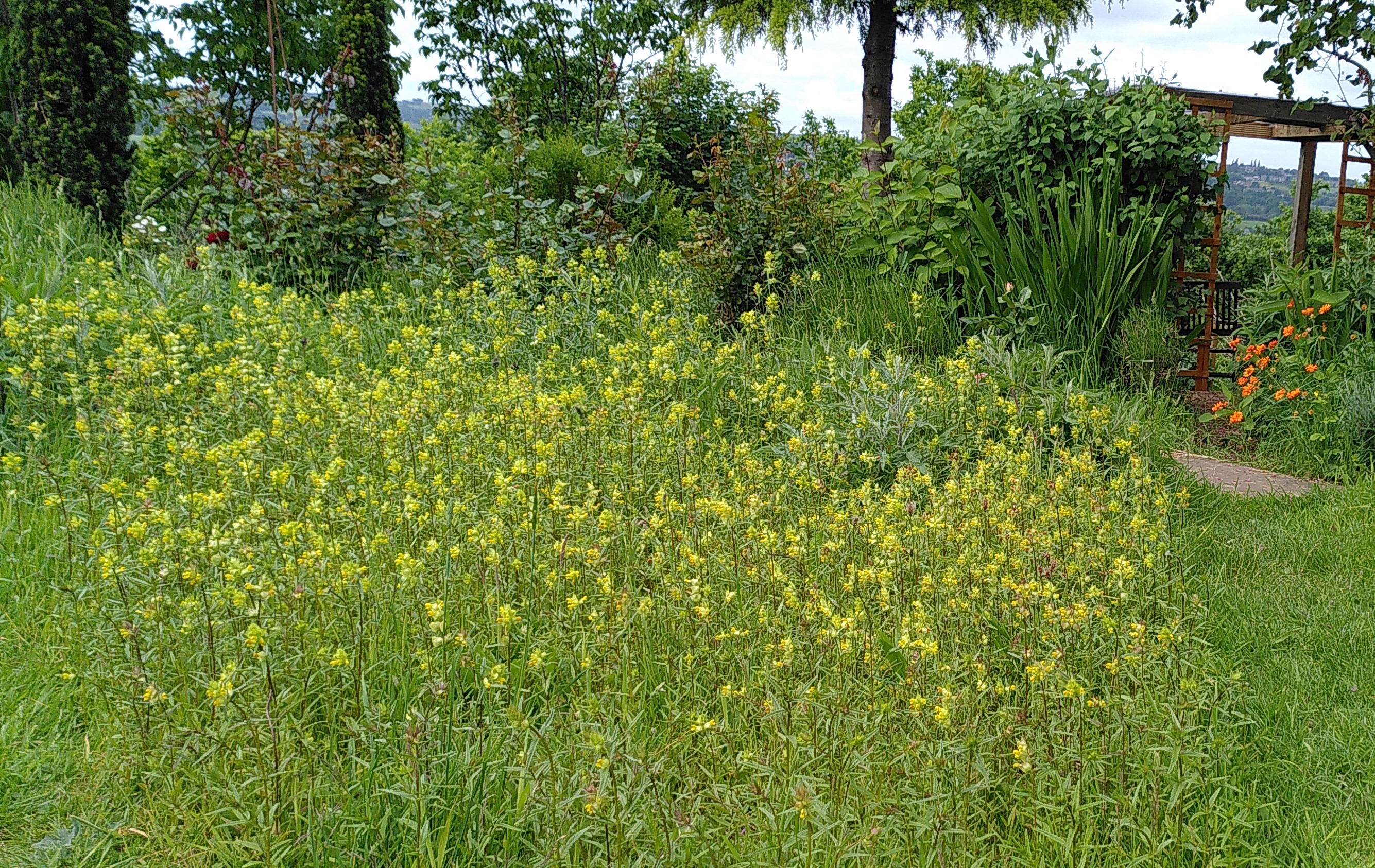
Yellow Rattle runs rife 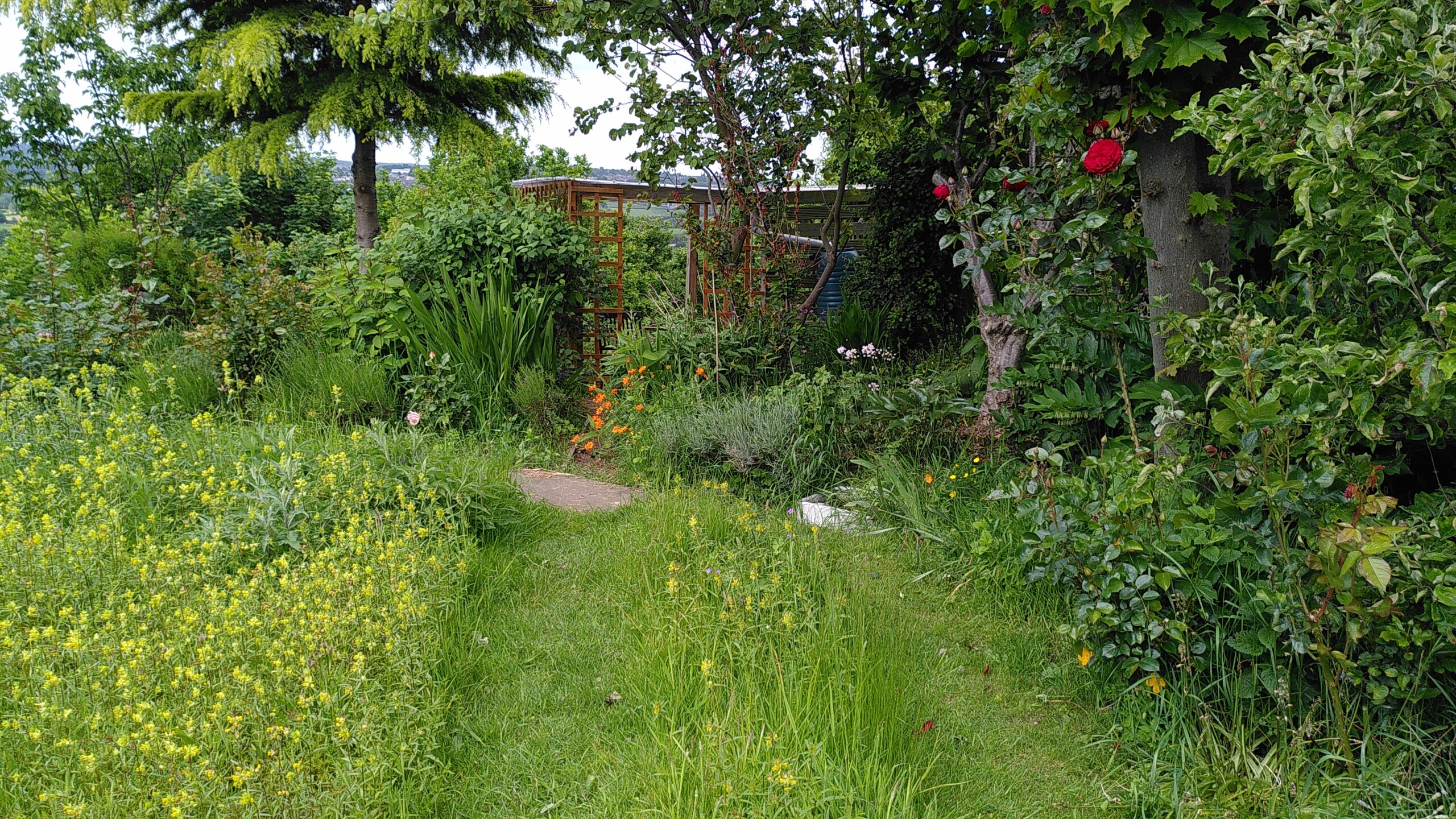
Leaving a path 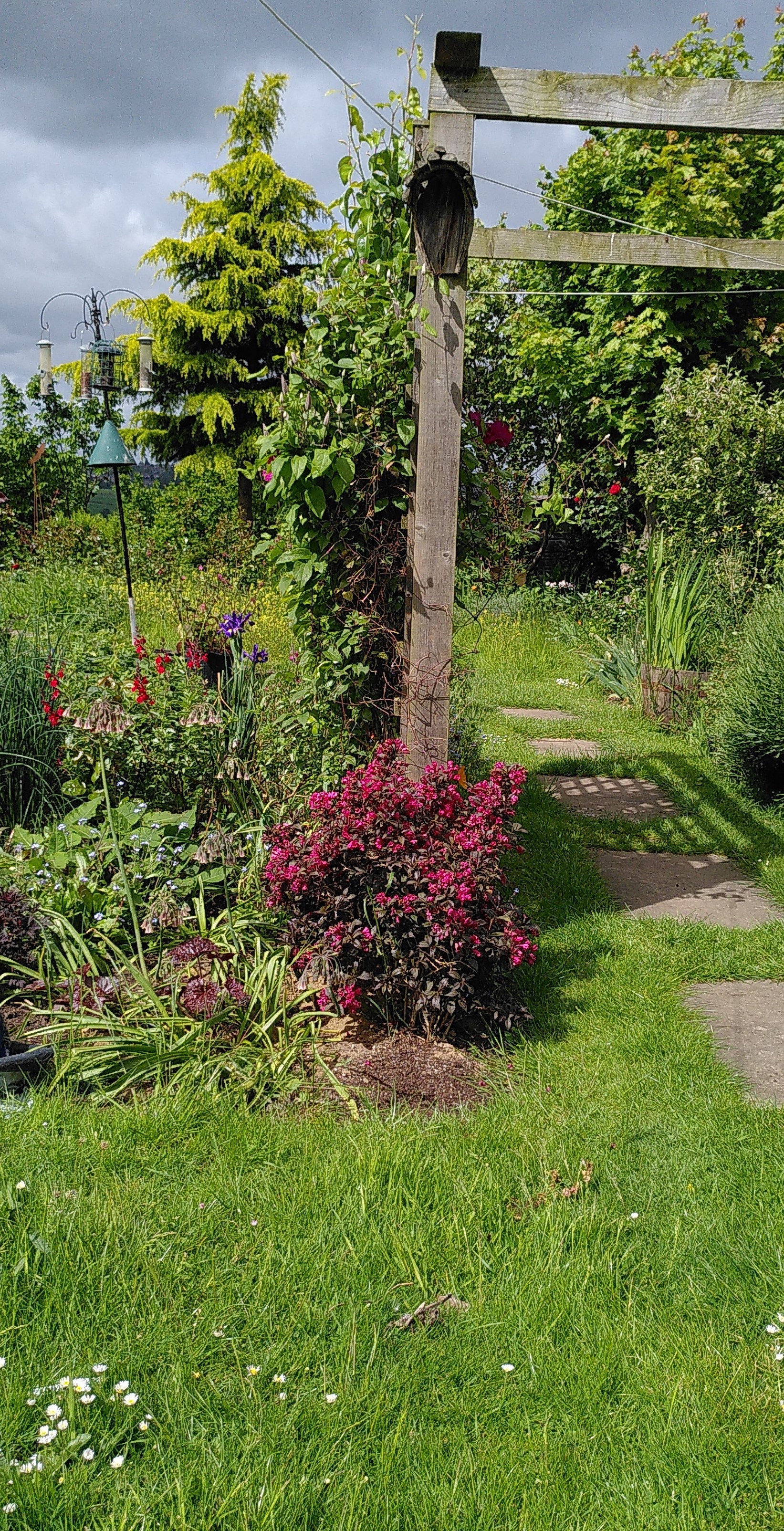
No Mow daisies 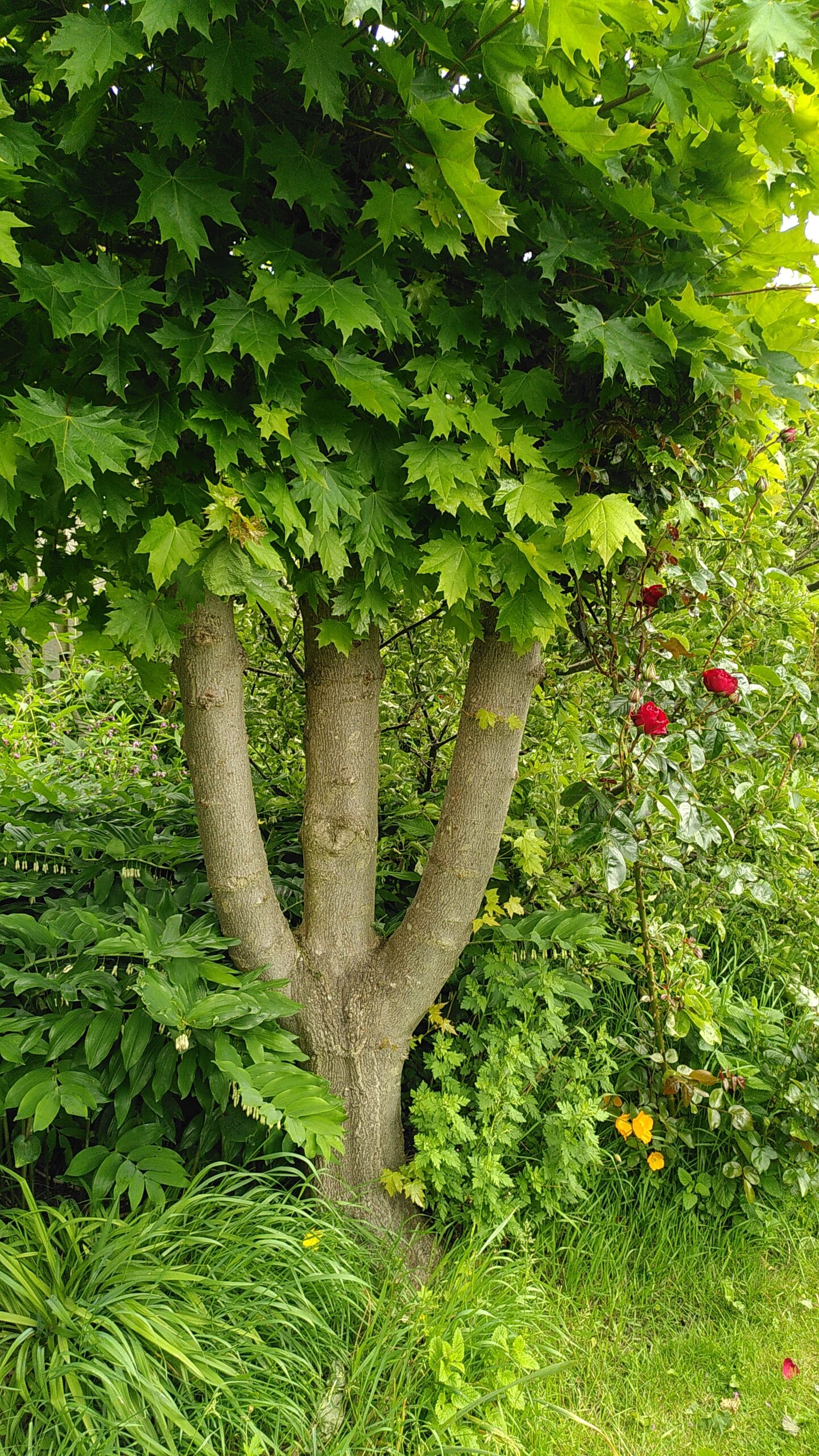
The pollarded maple looks good too 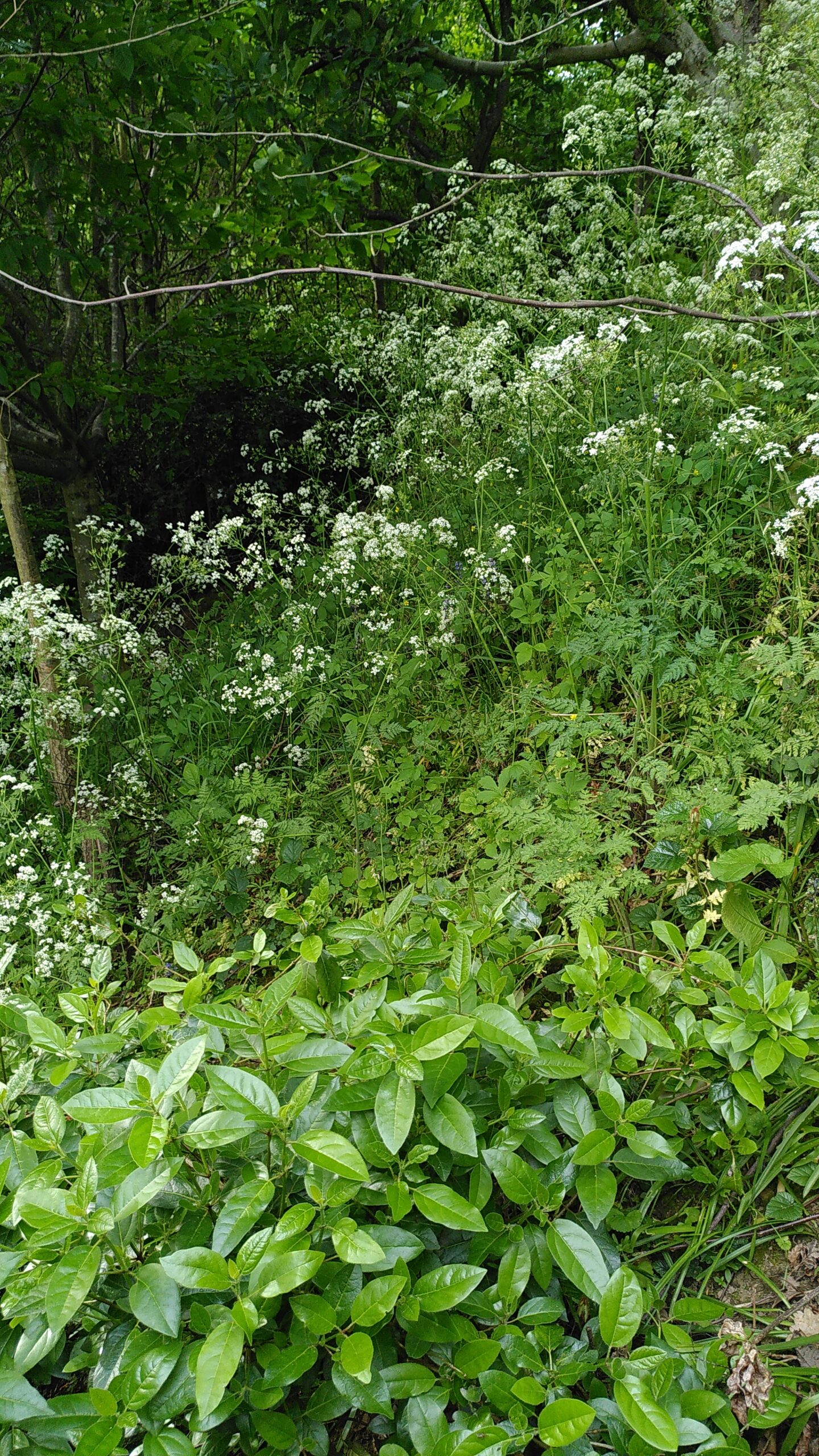
No Strim cow parsley - January Sunshine
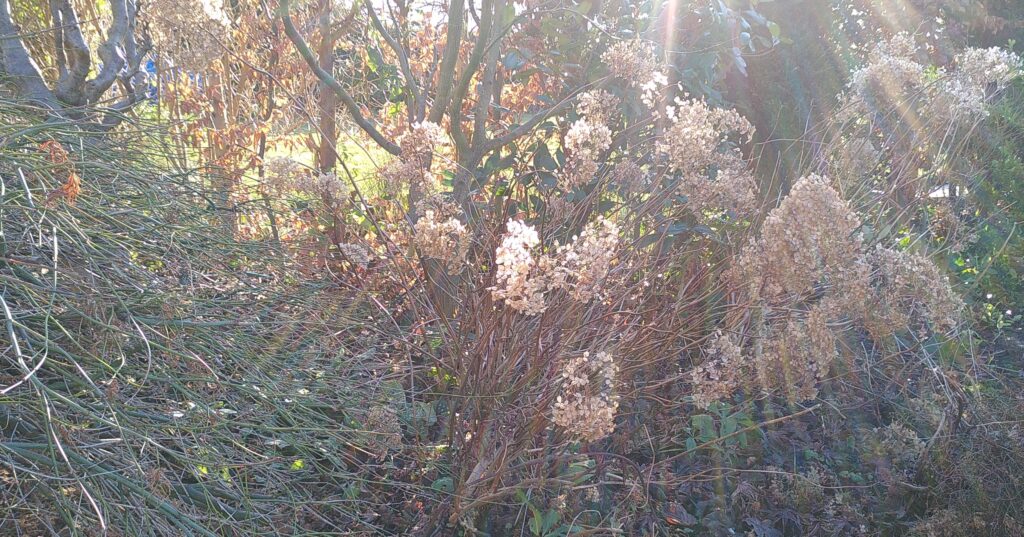
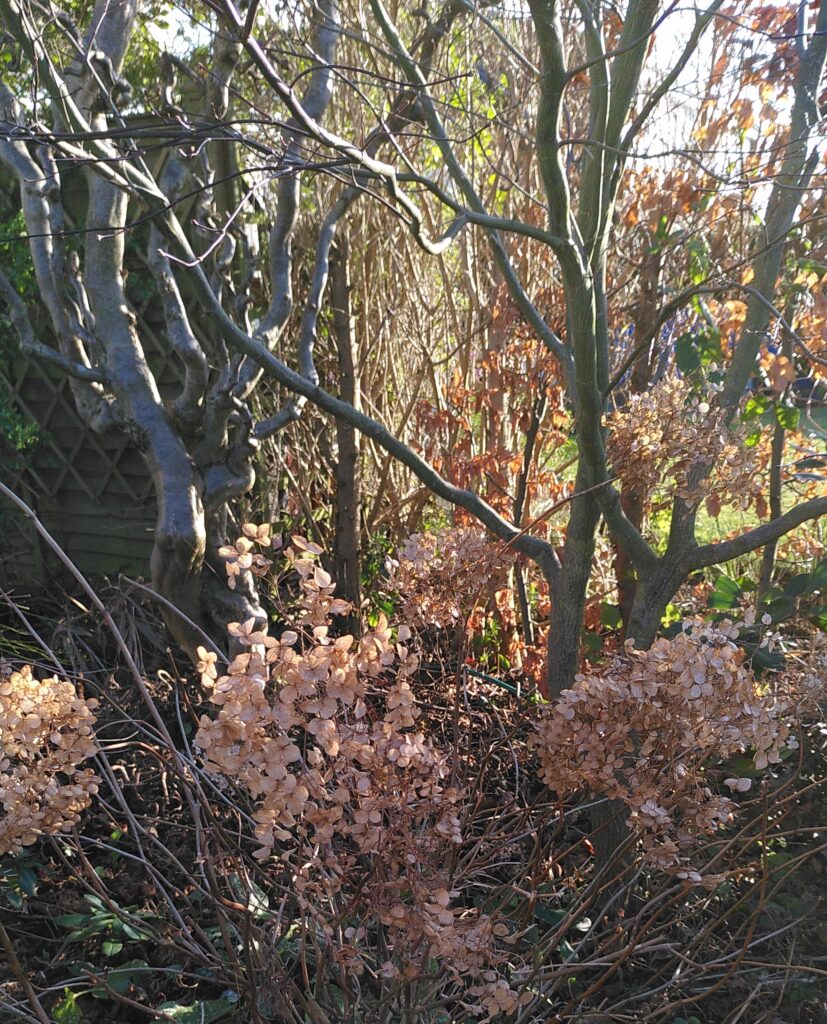

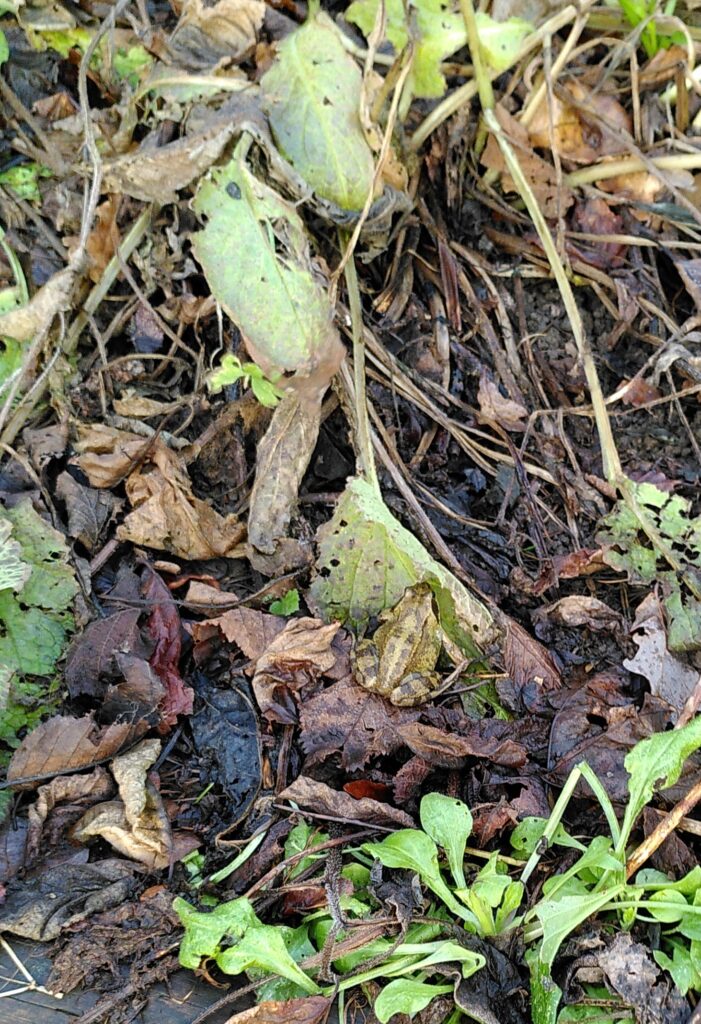
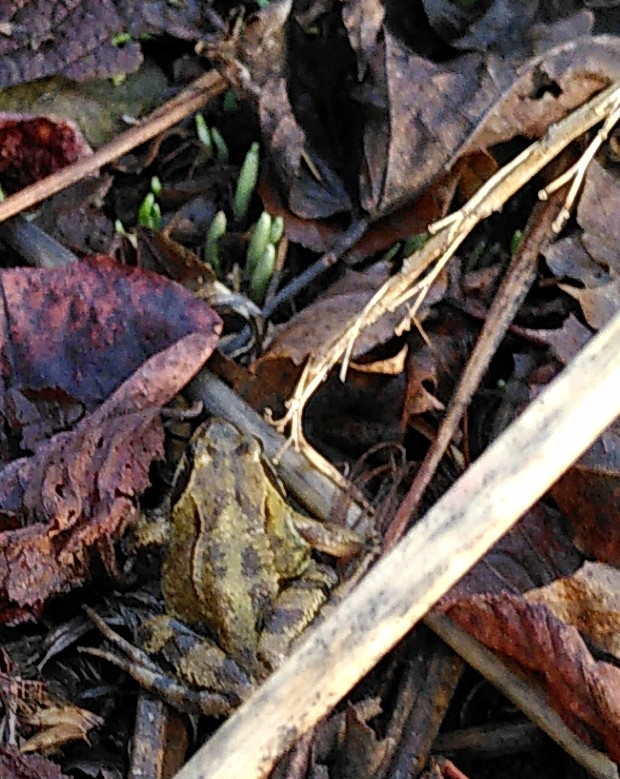
A coffee break while taking advantage of some nicer weather to harvest Sprouts and sort next year and the year after’s woodpiles. The Hydrangea, curly Hazel branches and remaining beech leaves glow in the sun, a frog is disturbed and hops away past the emerging snowdrops. - The Doings of Dull Days
Winter is here, so it’s time to sort out structures, prepare for next year and enjoy the subdued colours. The platform down the hill has a new floor and roof, the old sycamore is becoming a totem with an owl at the top. Paths and steps have been repaired, beds have been weeded and mulched. A whole raft of pruning is underway and cuttings are developing. Even when inside, you walk past a window or glass door and pause for a view that brings a smile.
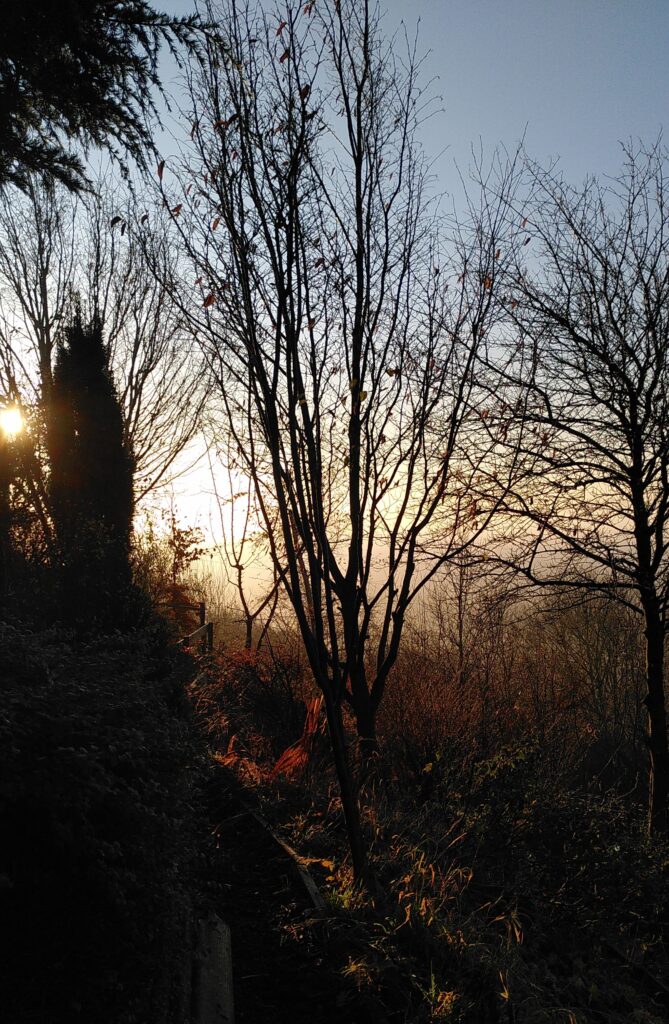
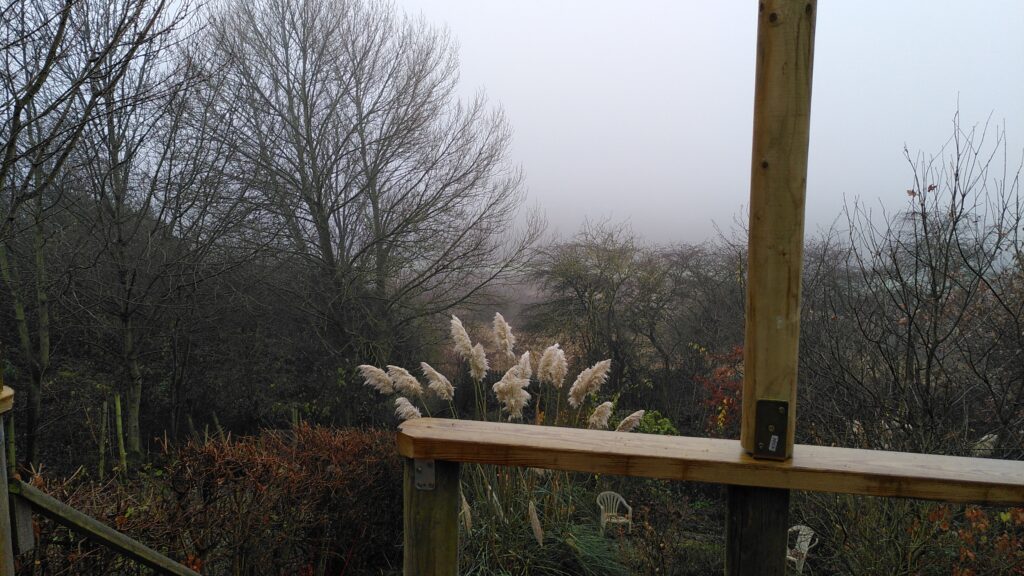
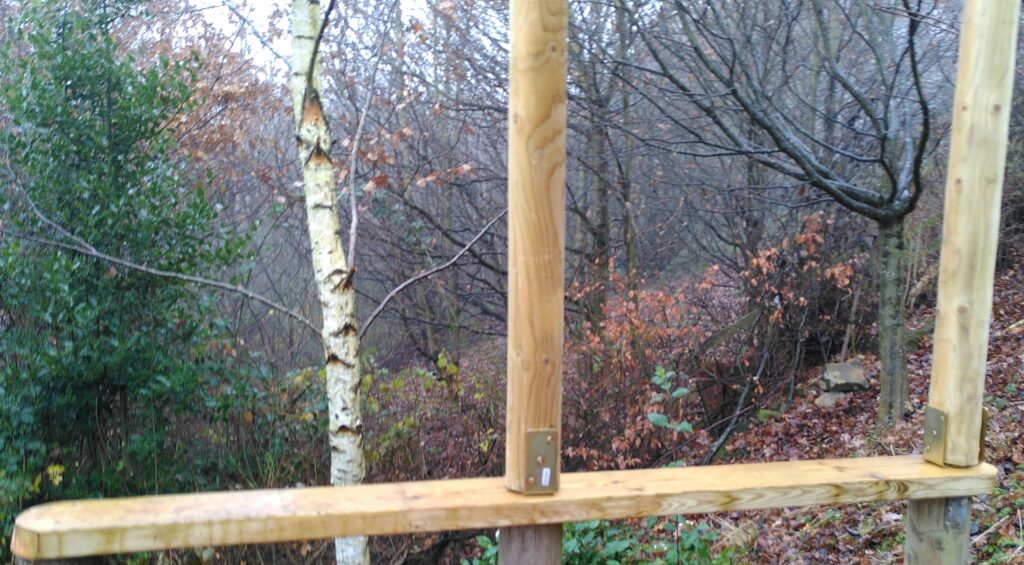
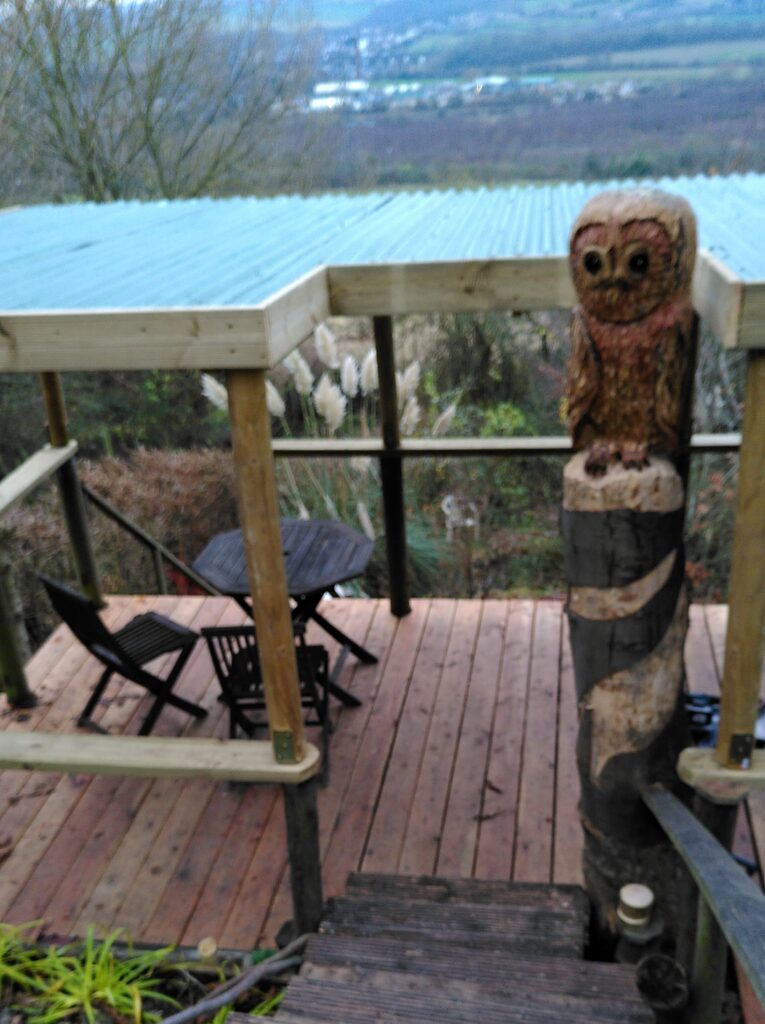
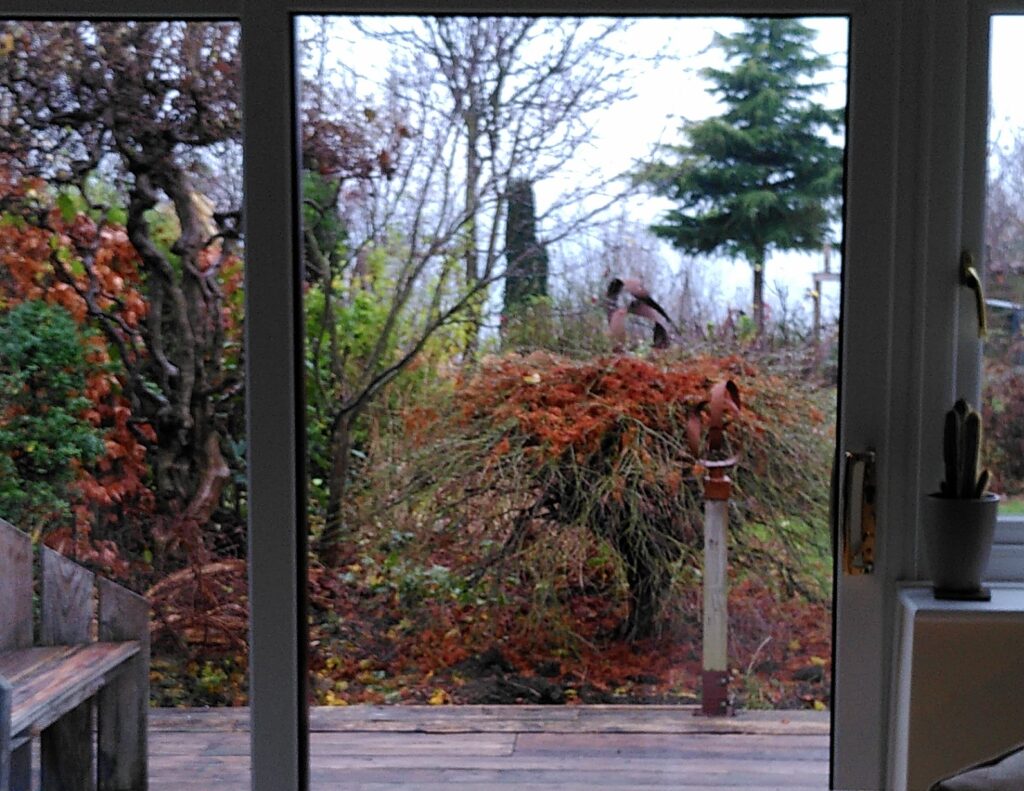
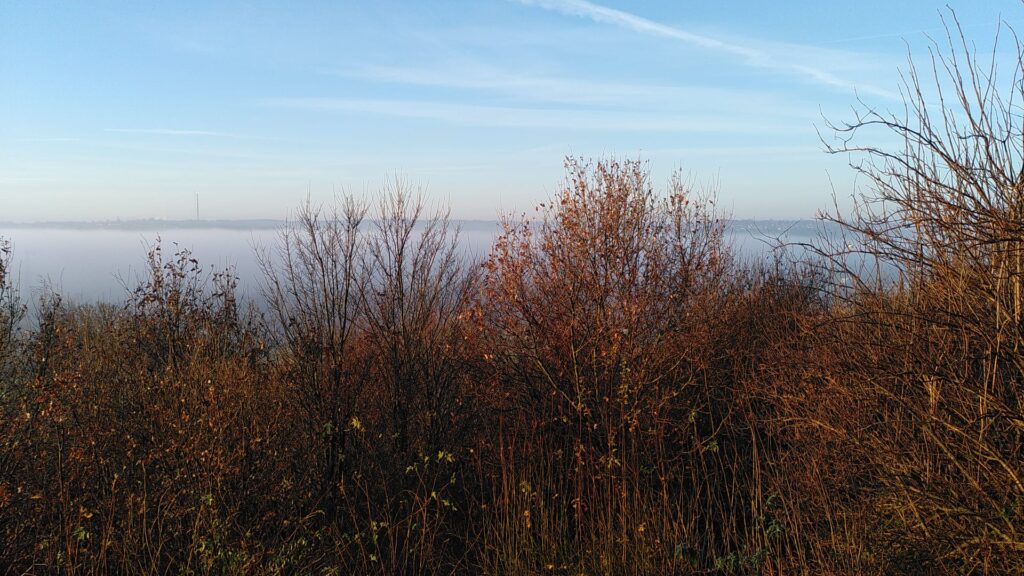
- Autumn Light and Delights
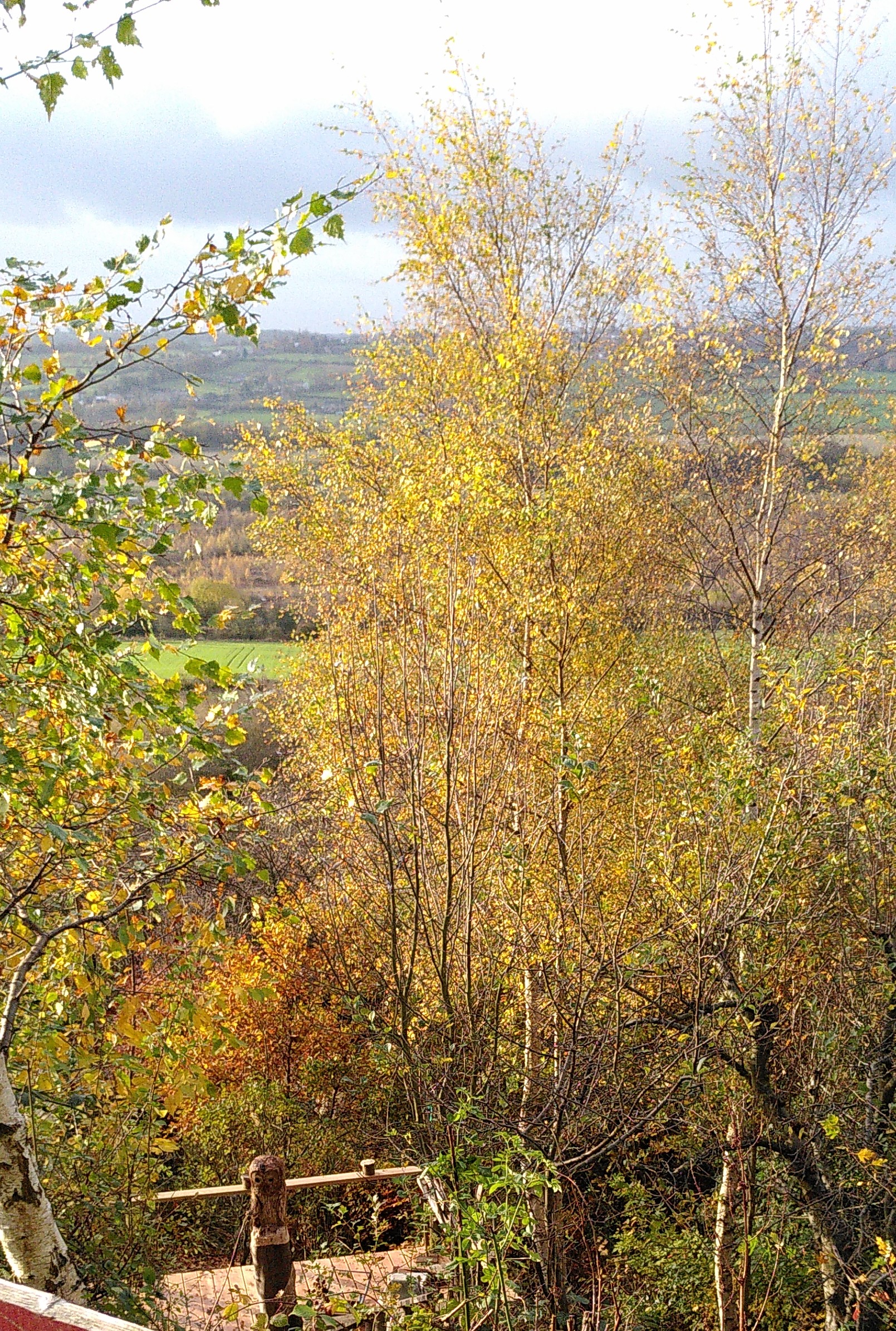
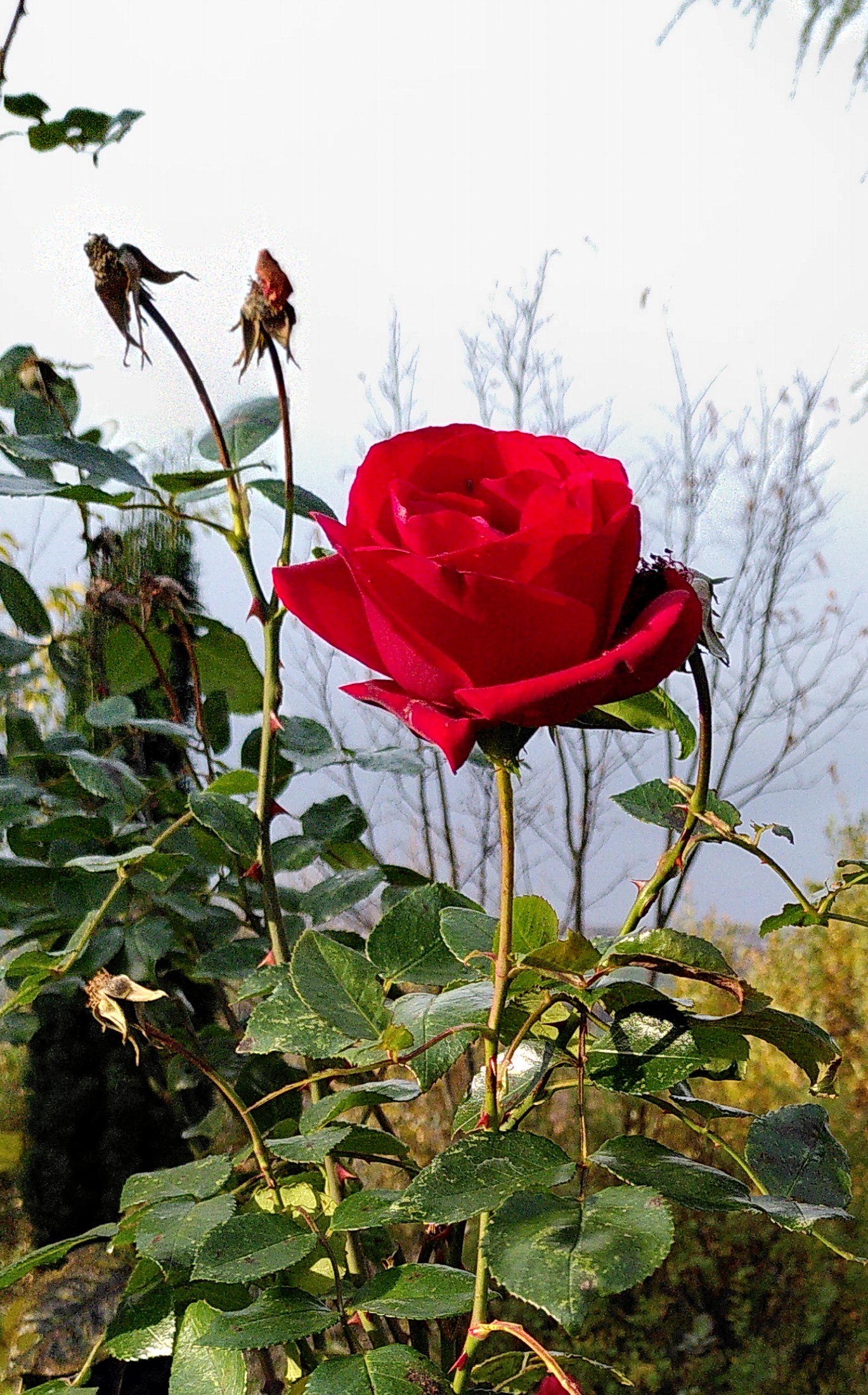
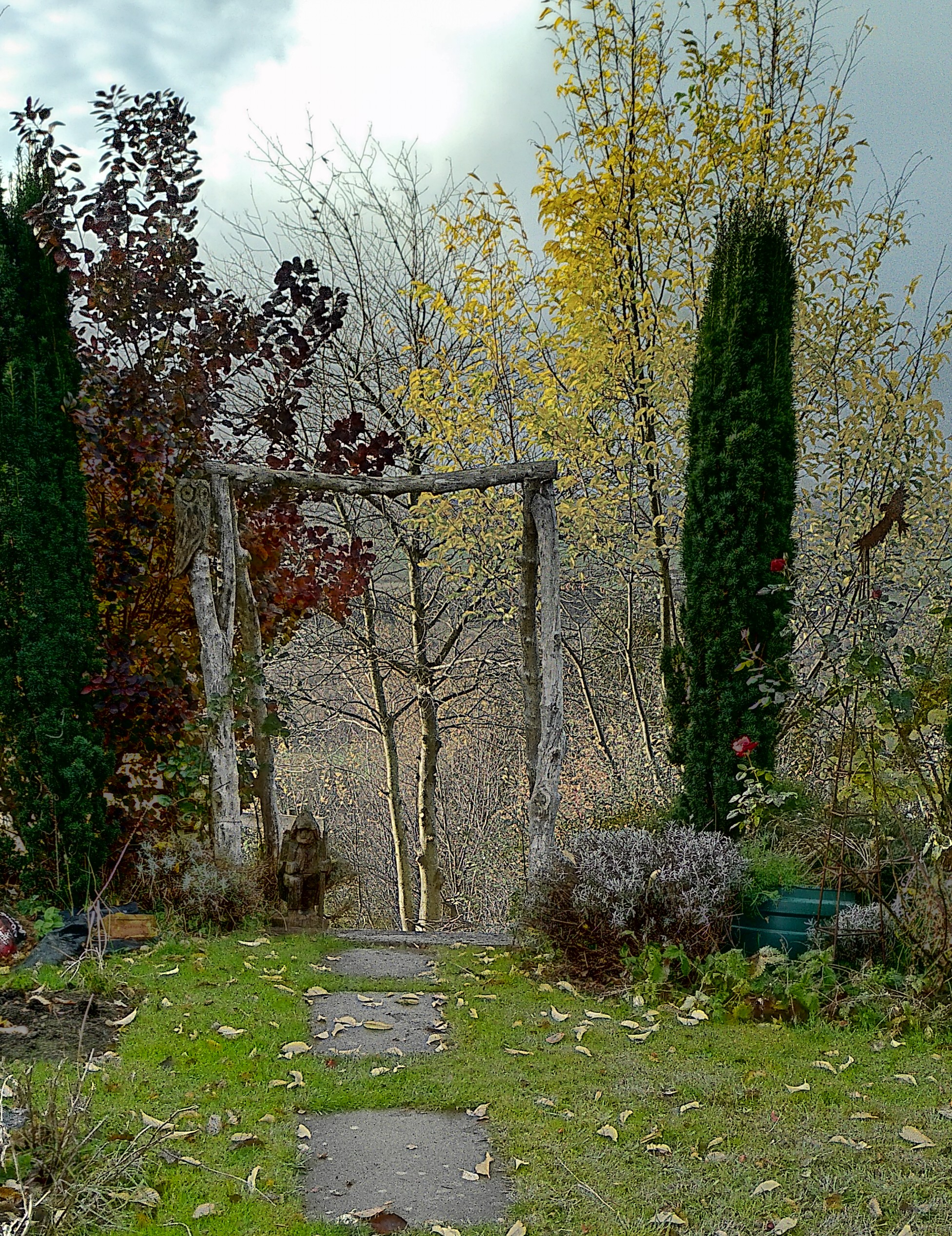
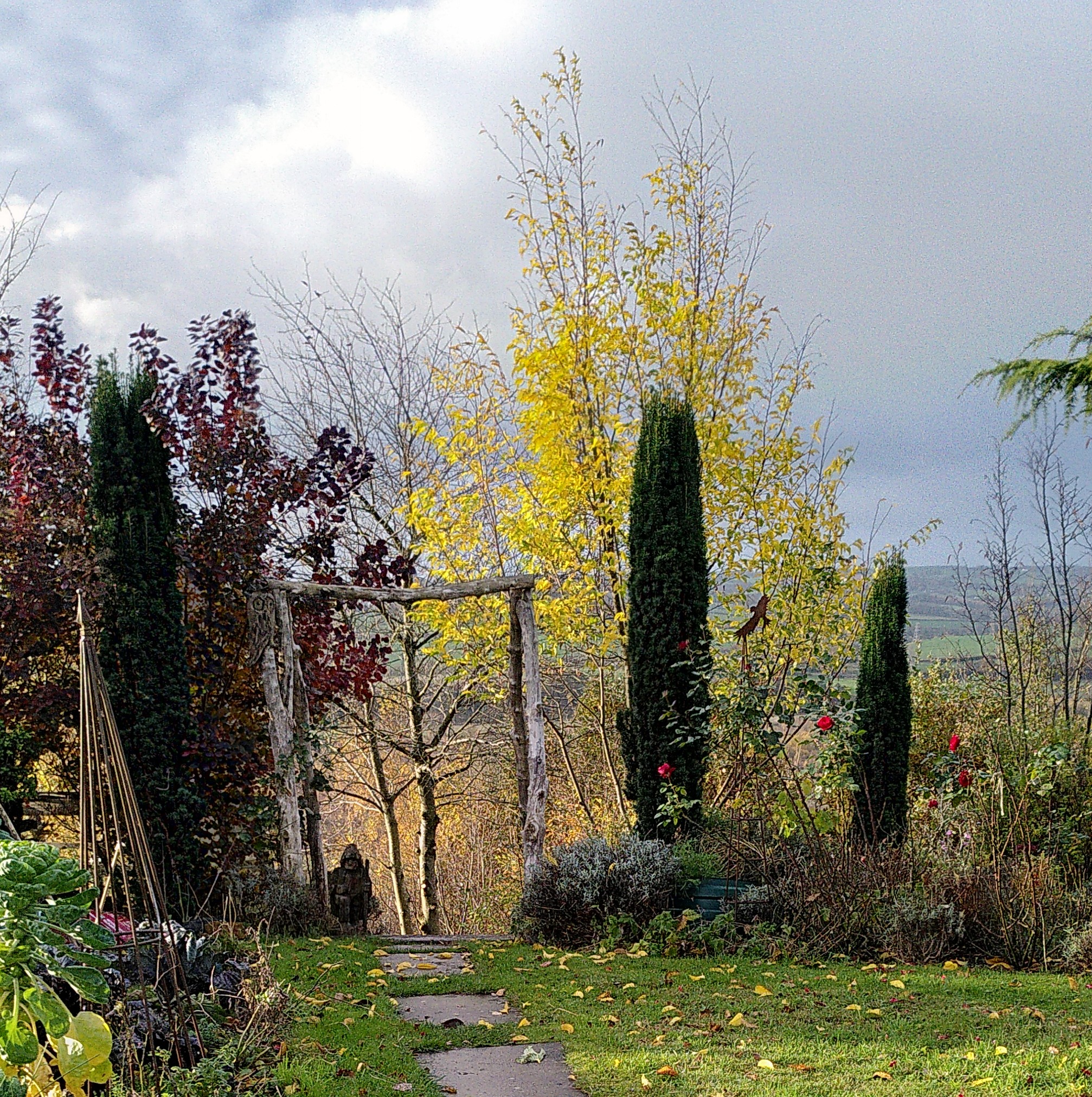
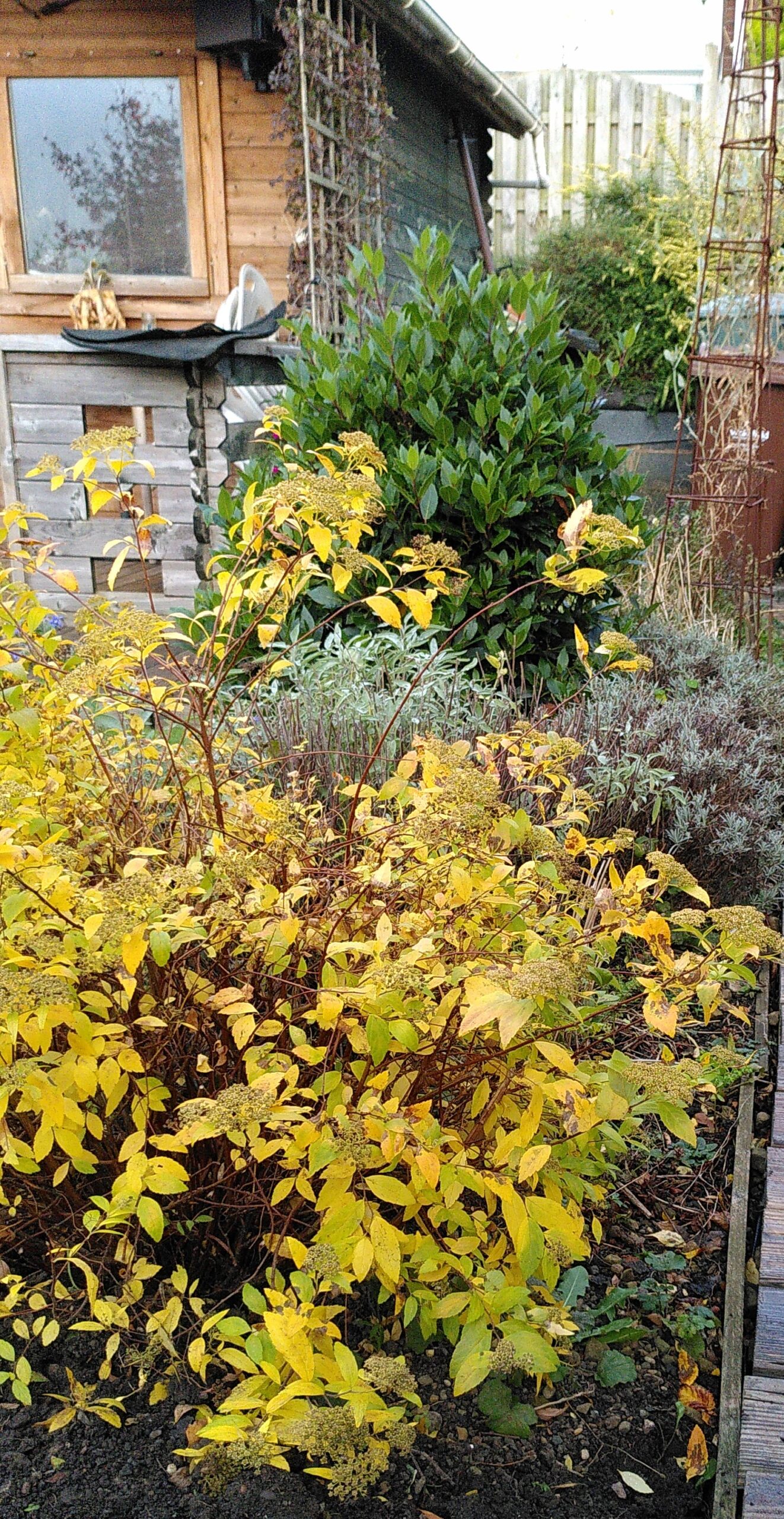

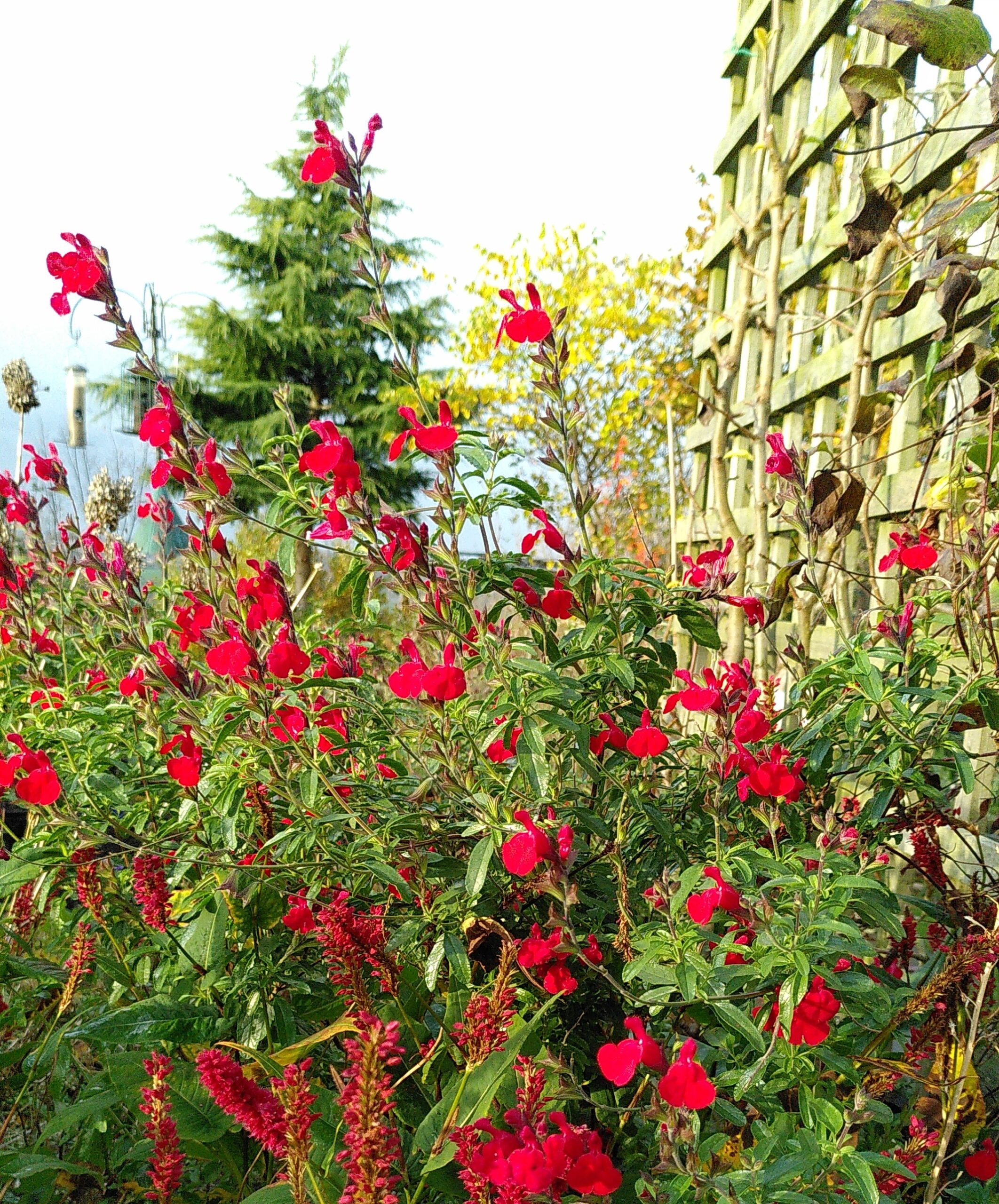
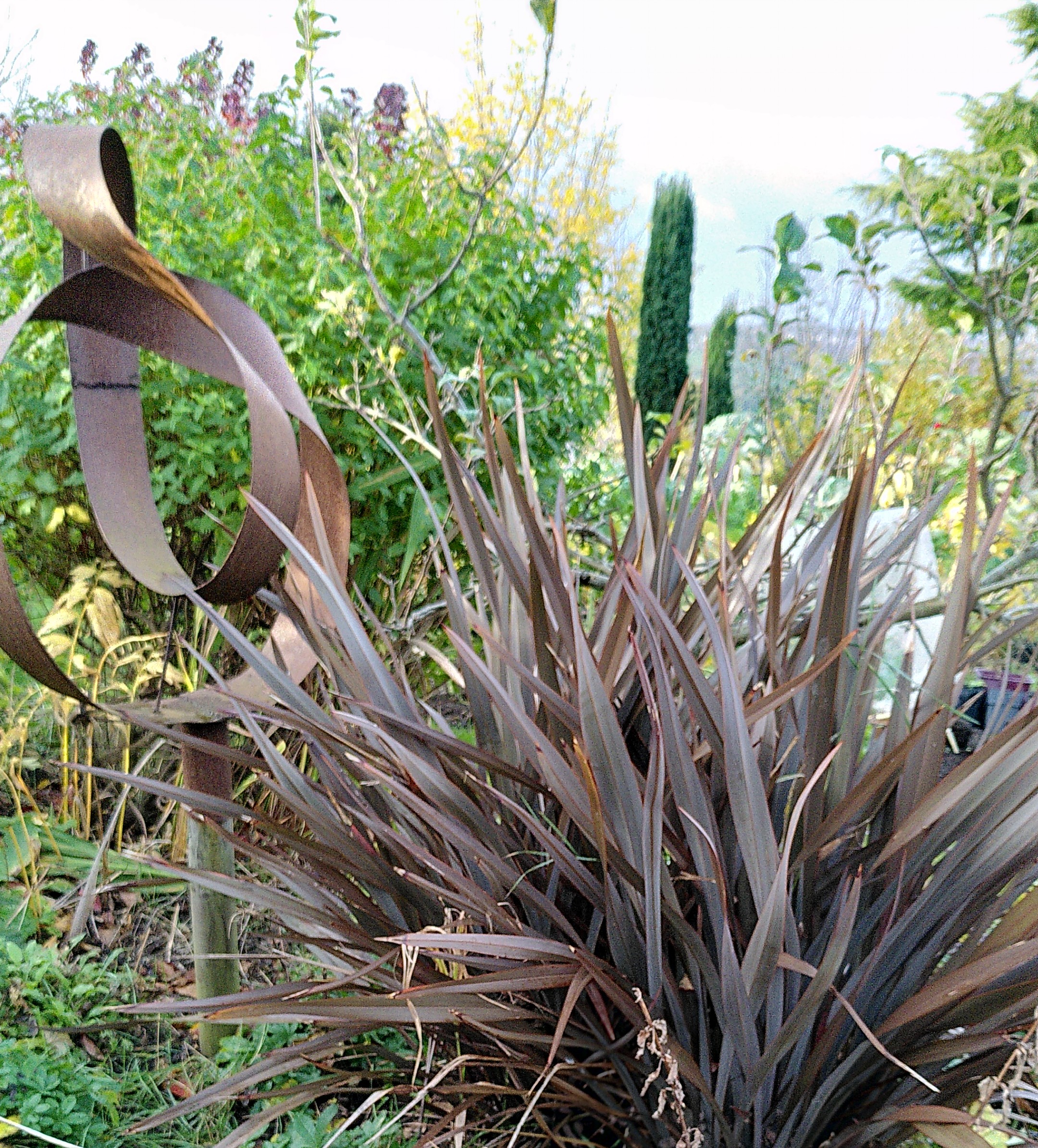
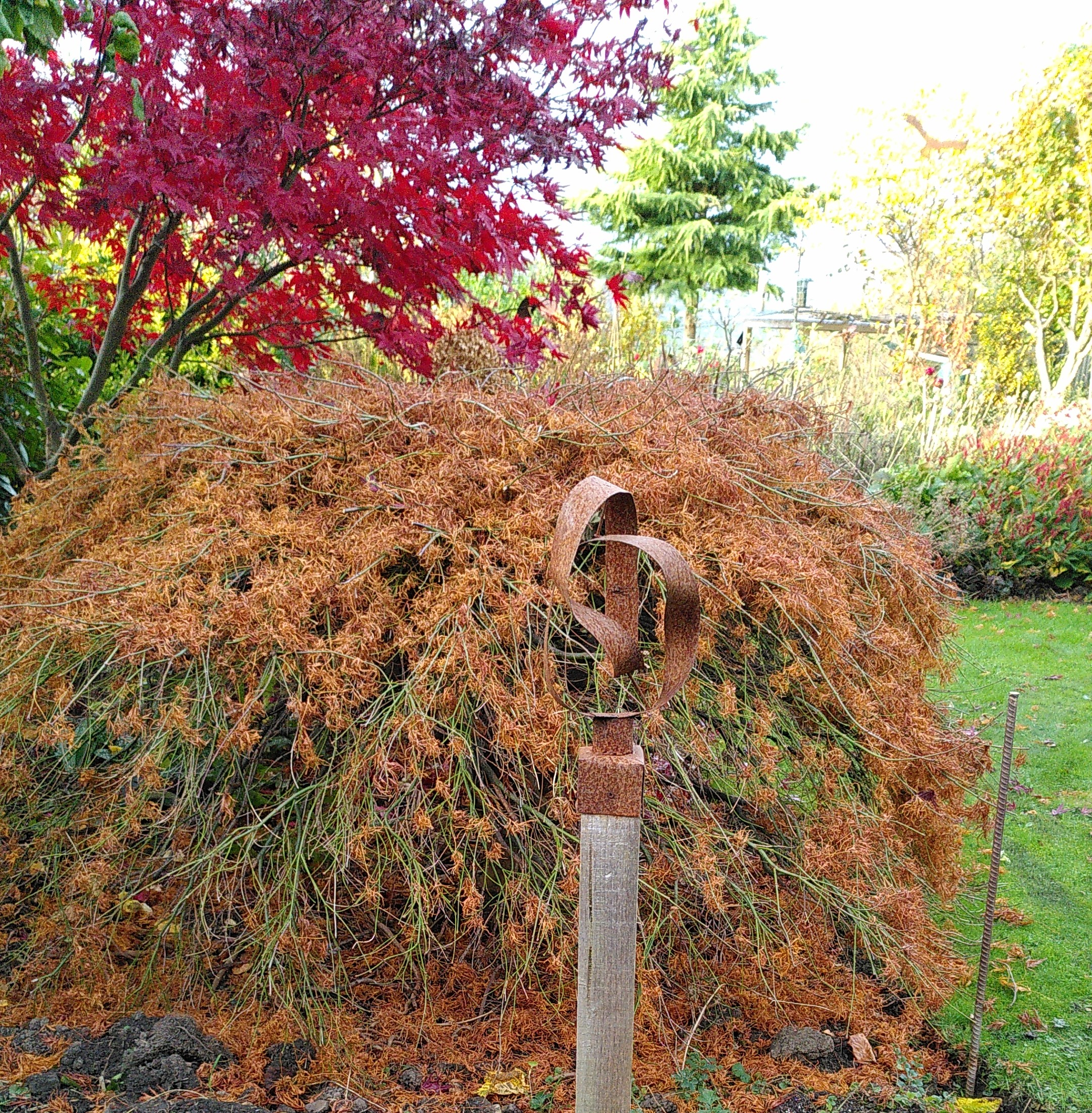
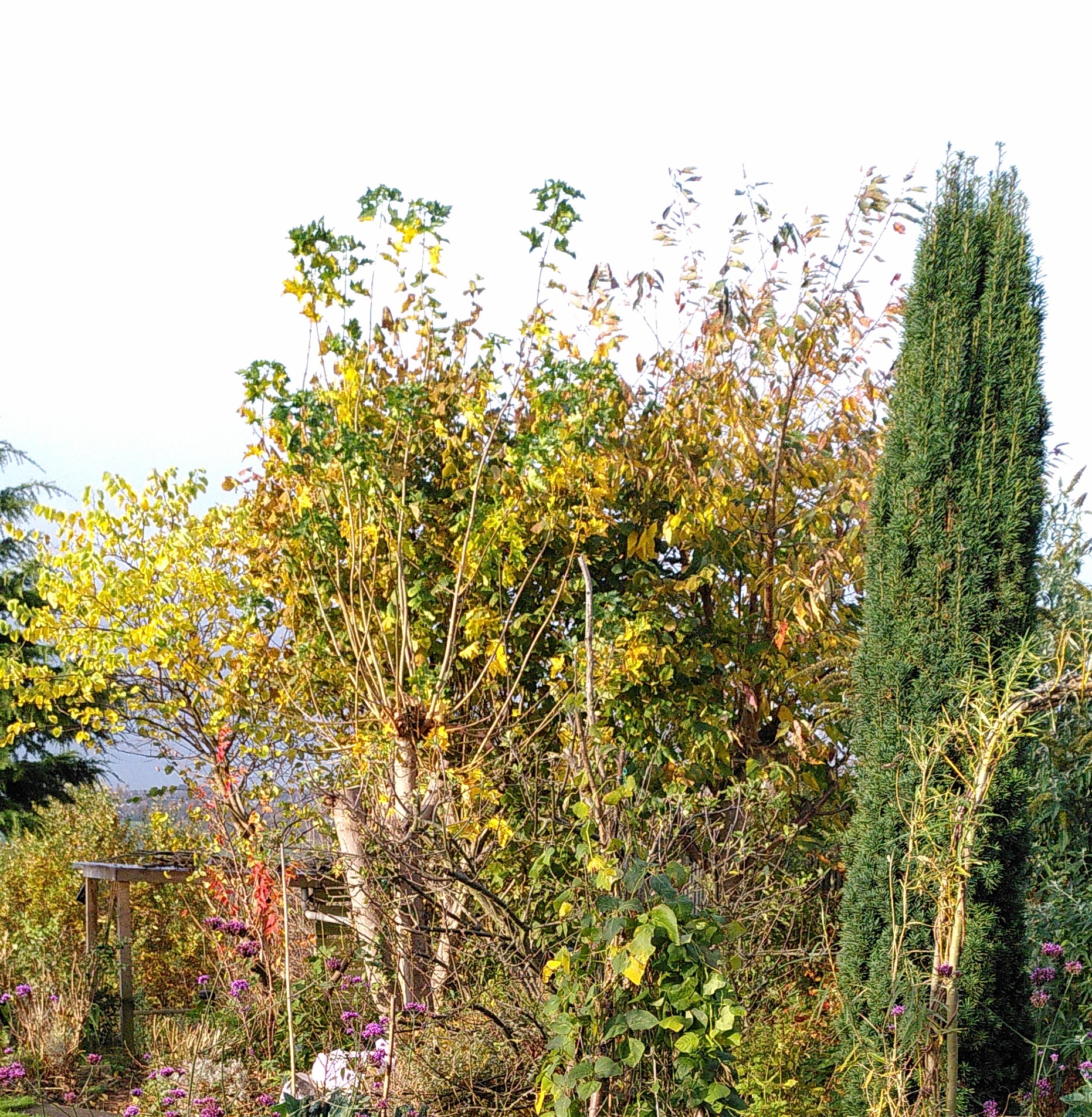
- Carving, Visitors and Sorting
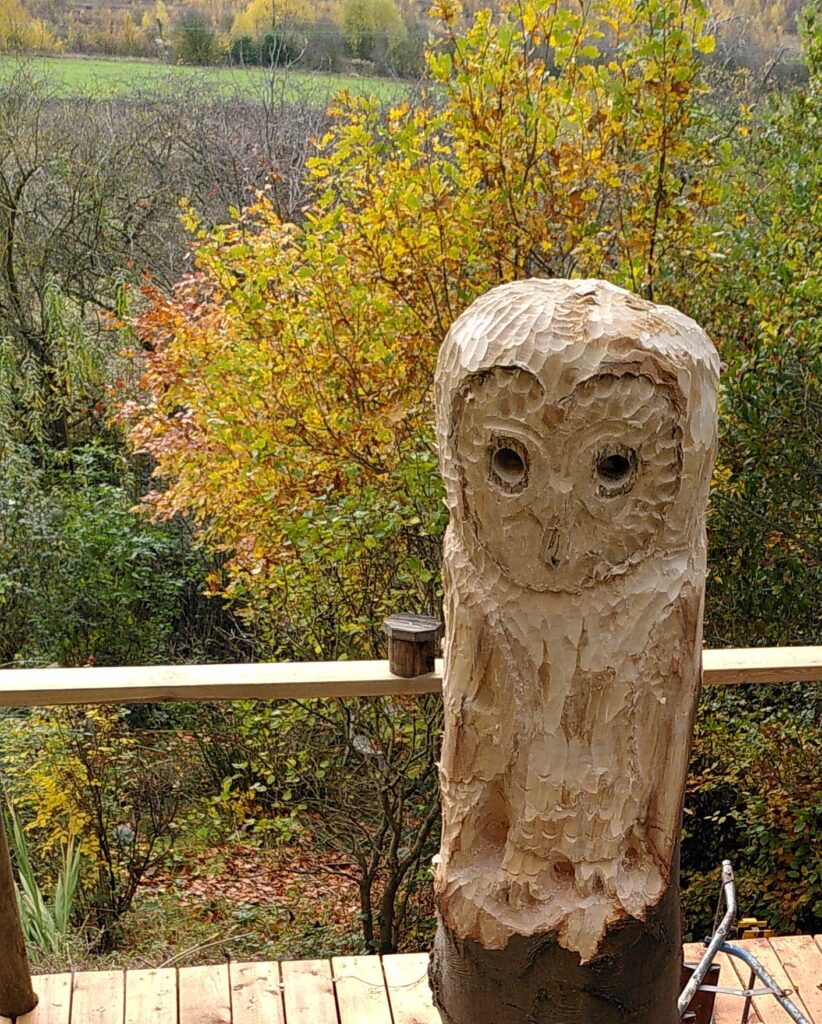
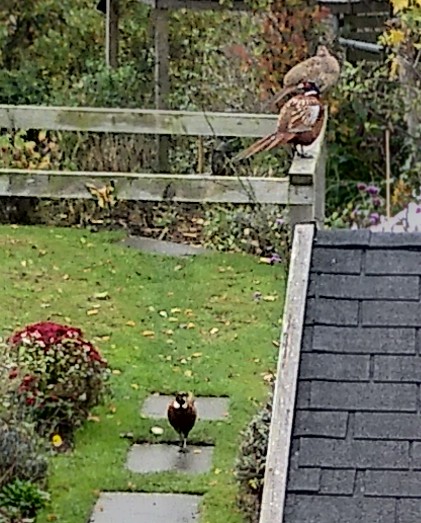
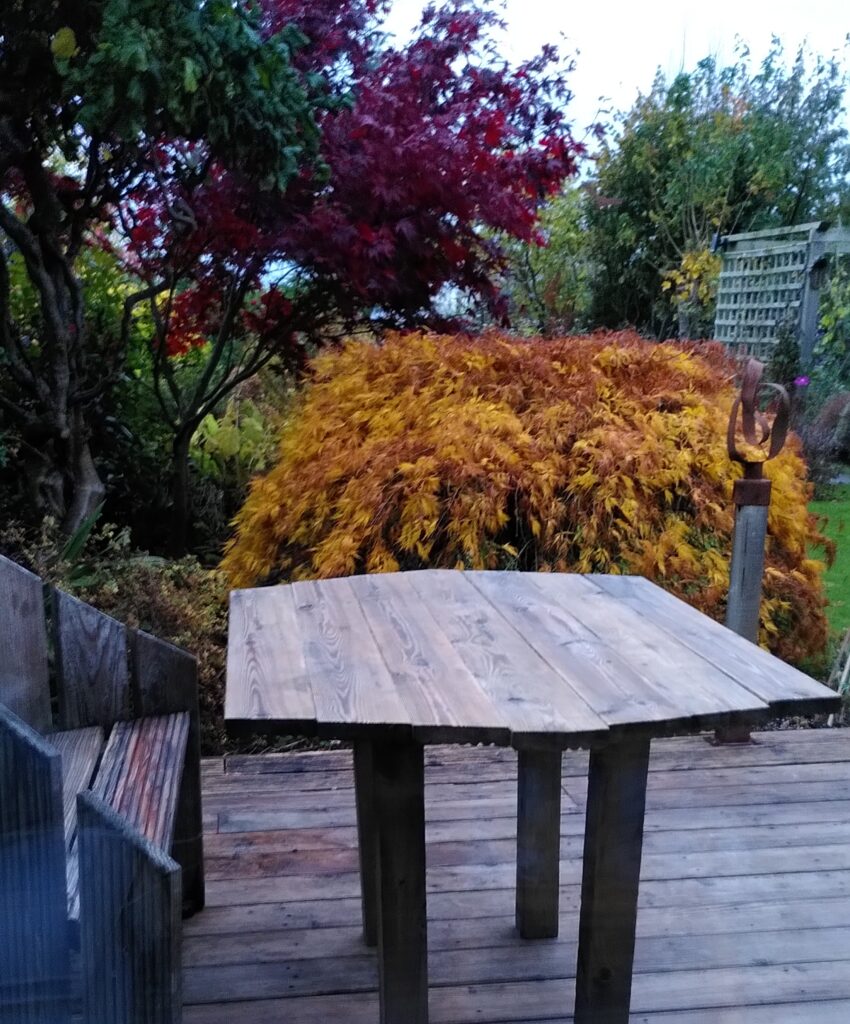
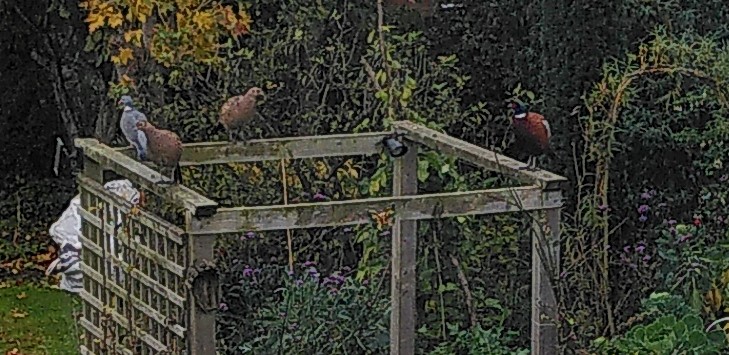
There is a sycamore tree down the garden that was built into the platform. Now we have a bigger variety of native trees, we have decided to try to stop the sycamore growing and give the others more chance. It is currently turning into a carved pole with a tawny owl at the top. Having had fewer pheasants over the summer, a family of six suddenly appeared and have been back all the time since. In such a big garden it is often hard to keep up with general maintenance, especially when health problems interfere, Now we have some help and have started to catch up again, cleaning and retreating decks steps and home made furmiture. - WorksWorth
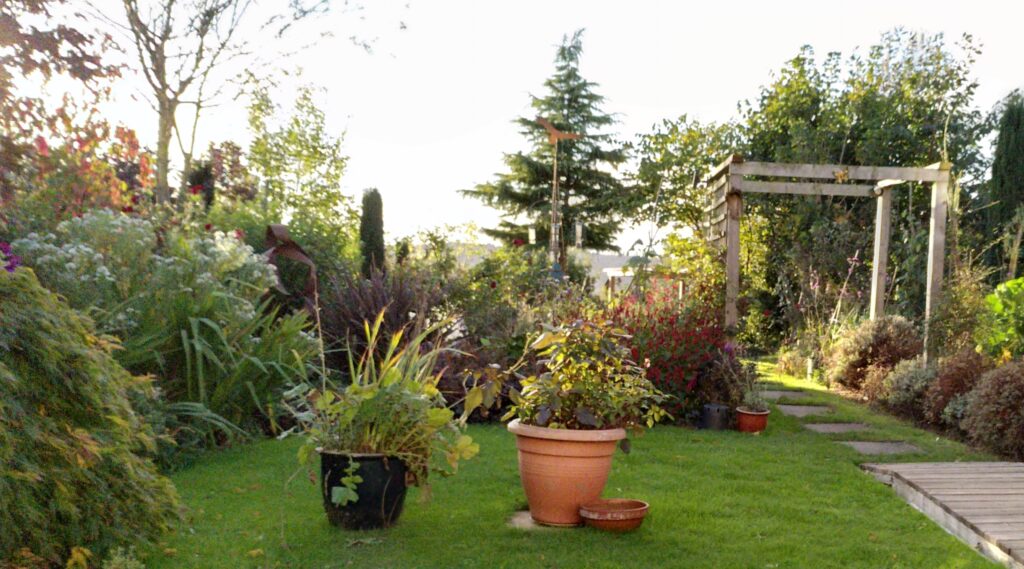
October and the garden sparkles from the house. Worth every minute. - Whitby
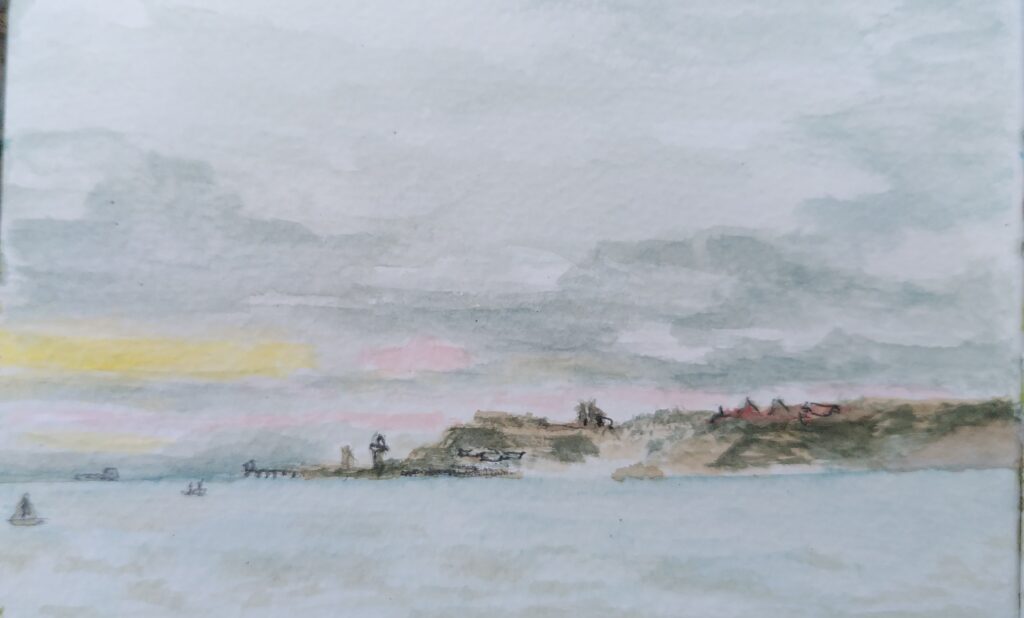
Sea Fret from Sandsend 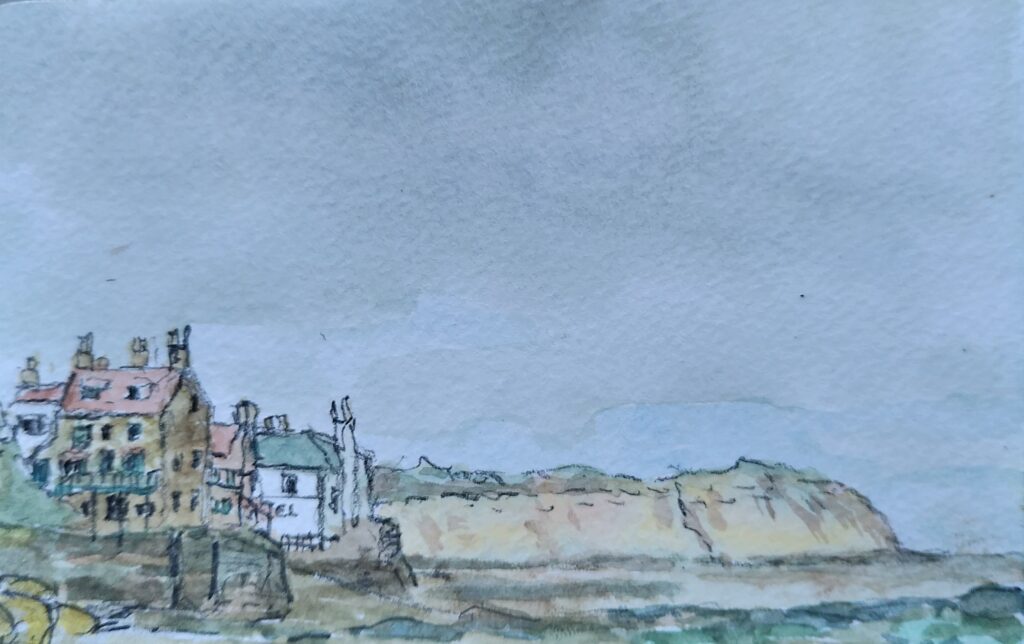
Robin Hood’s Bay A very pleasant couple of days in Whitby, catching up with friends and a bit of walking and sketching too. - Beautiful Weather for a catch-up on jobs
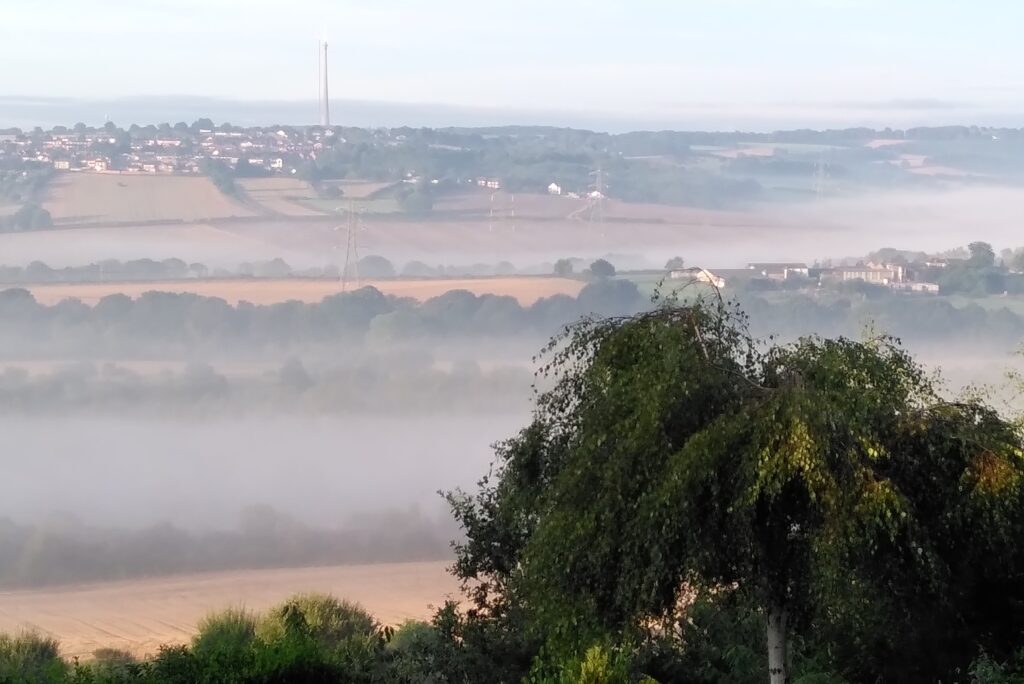
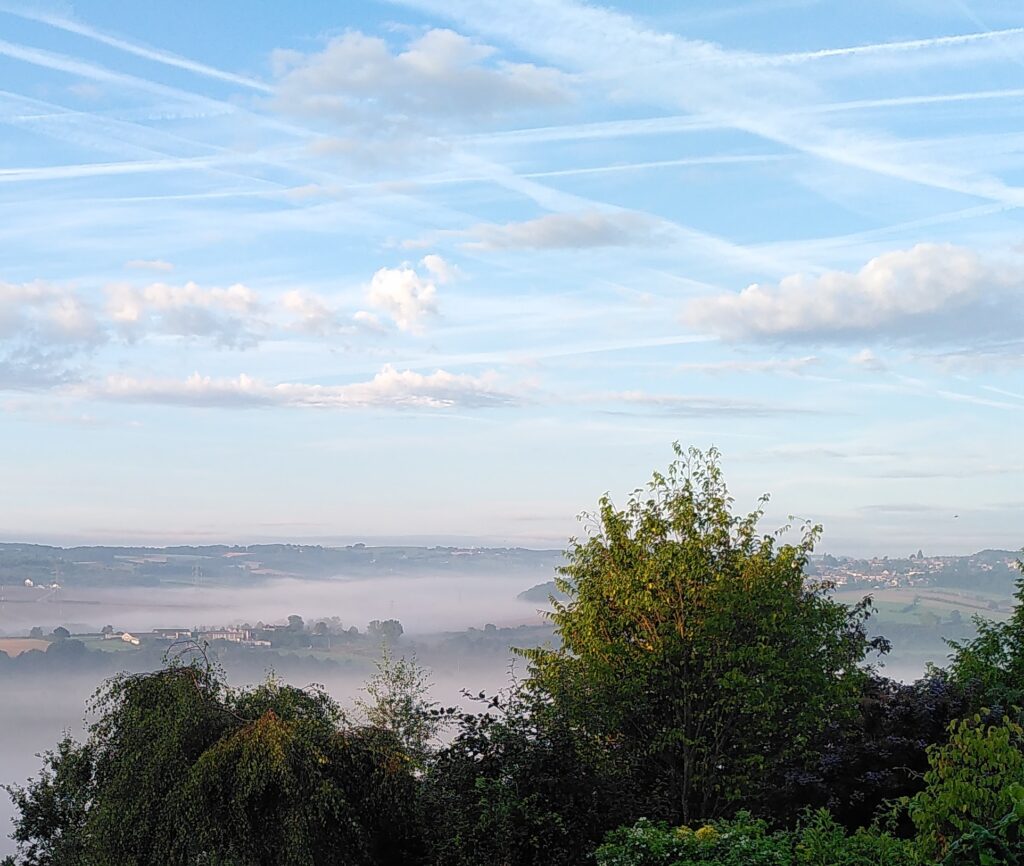
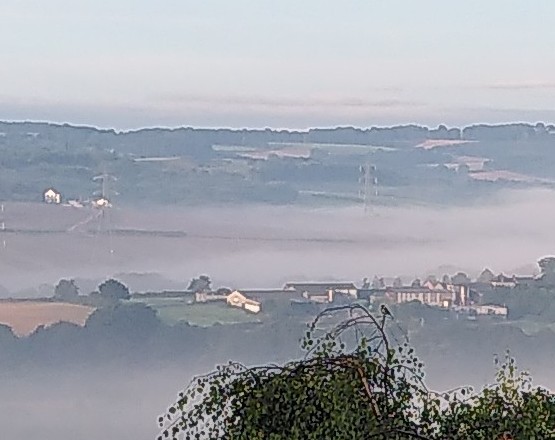
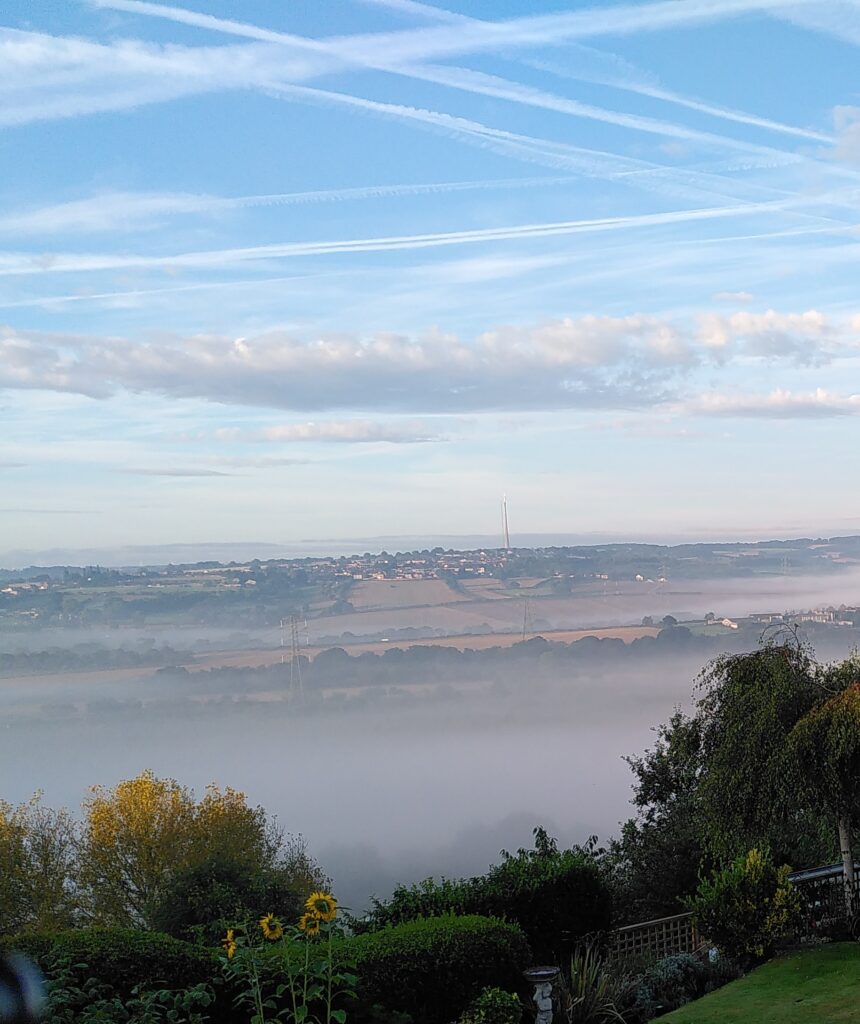

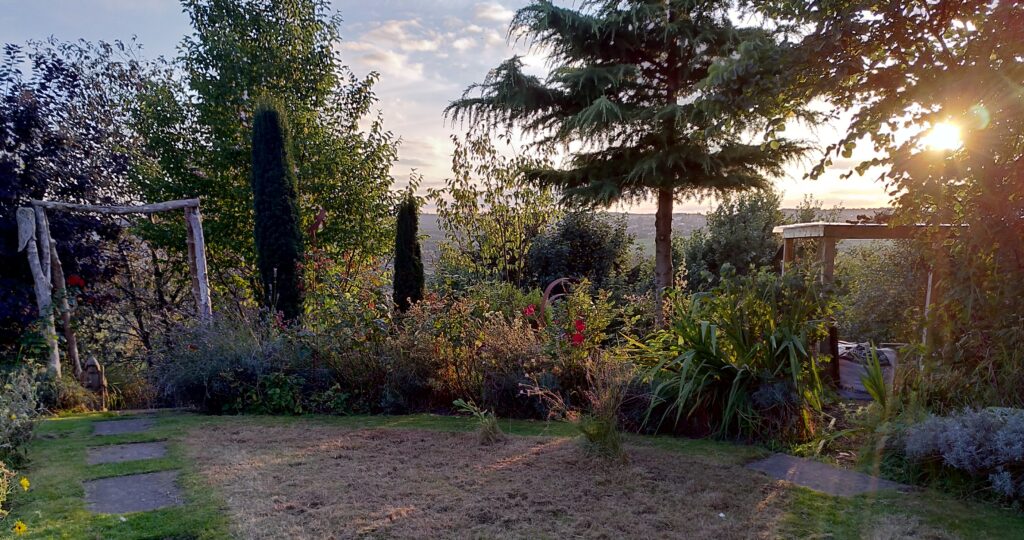
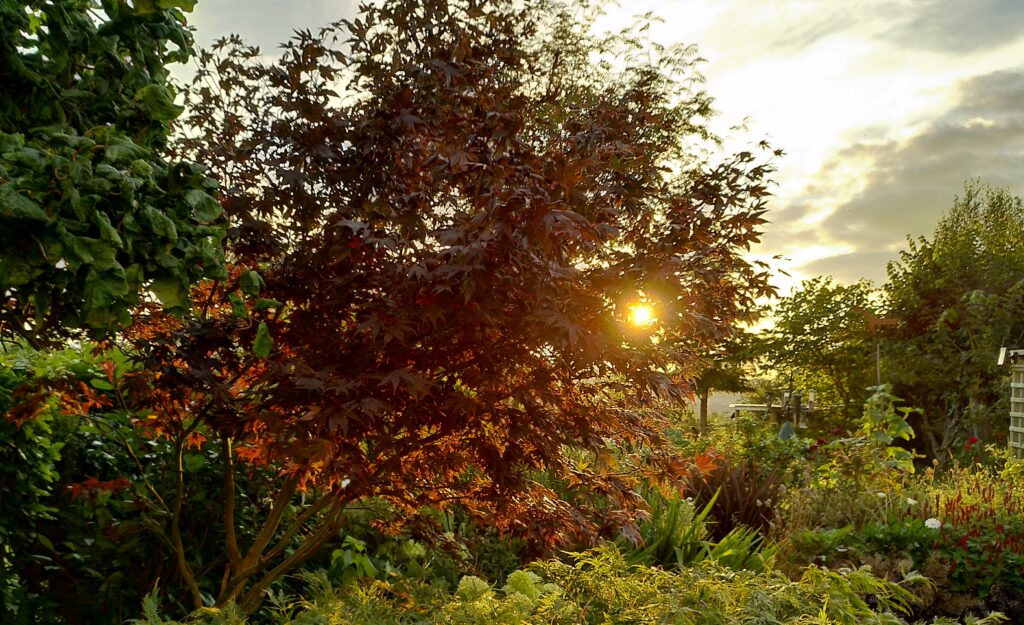
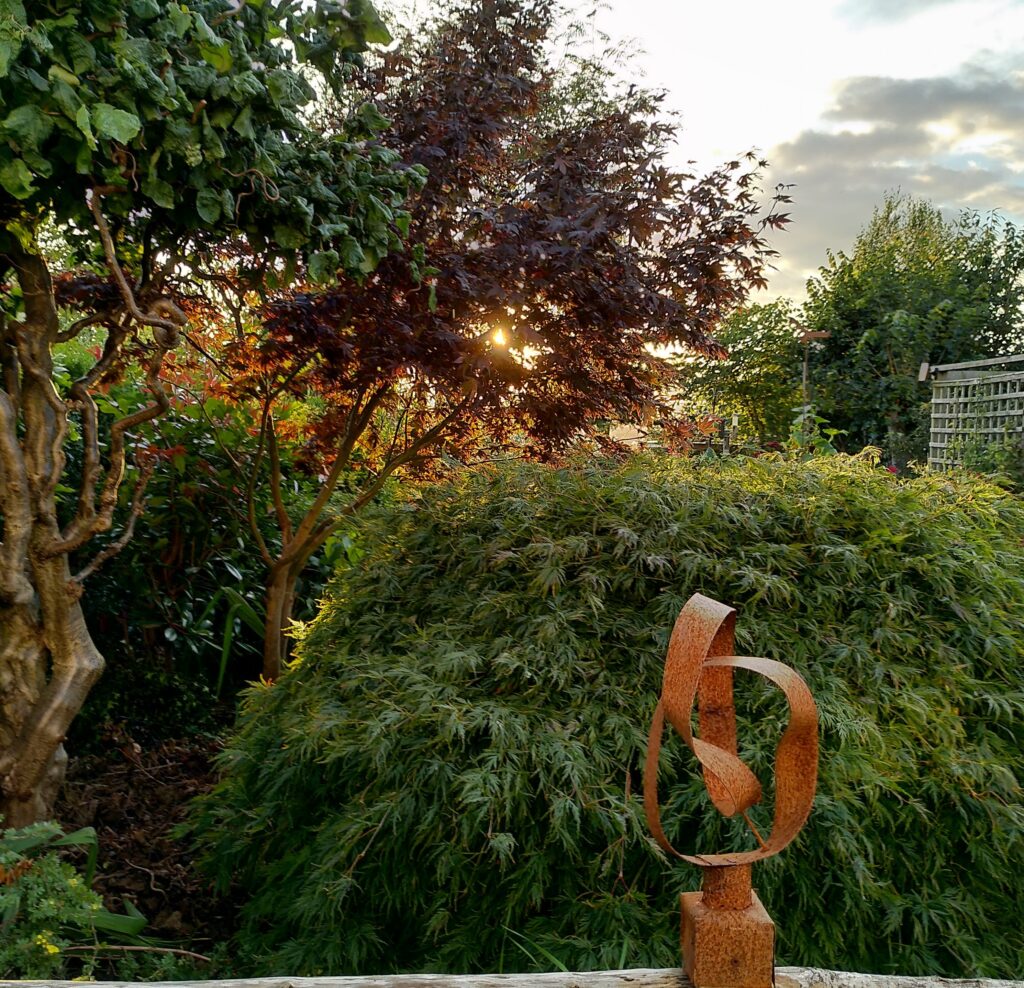
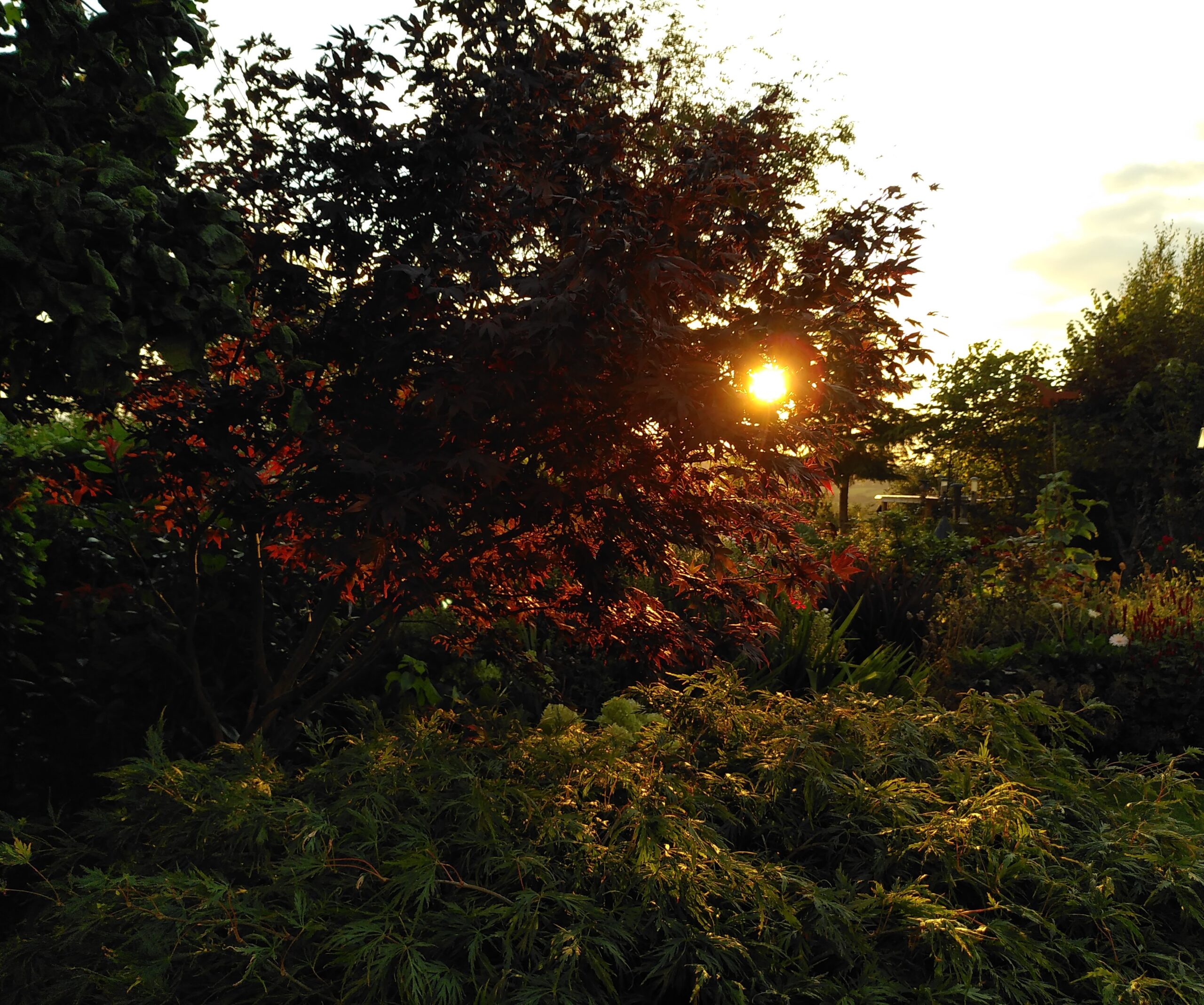
- One proud new owner
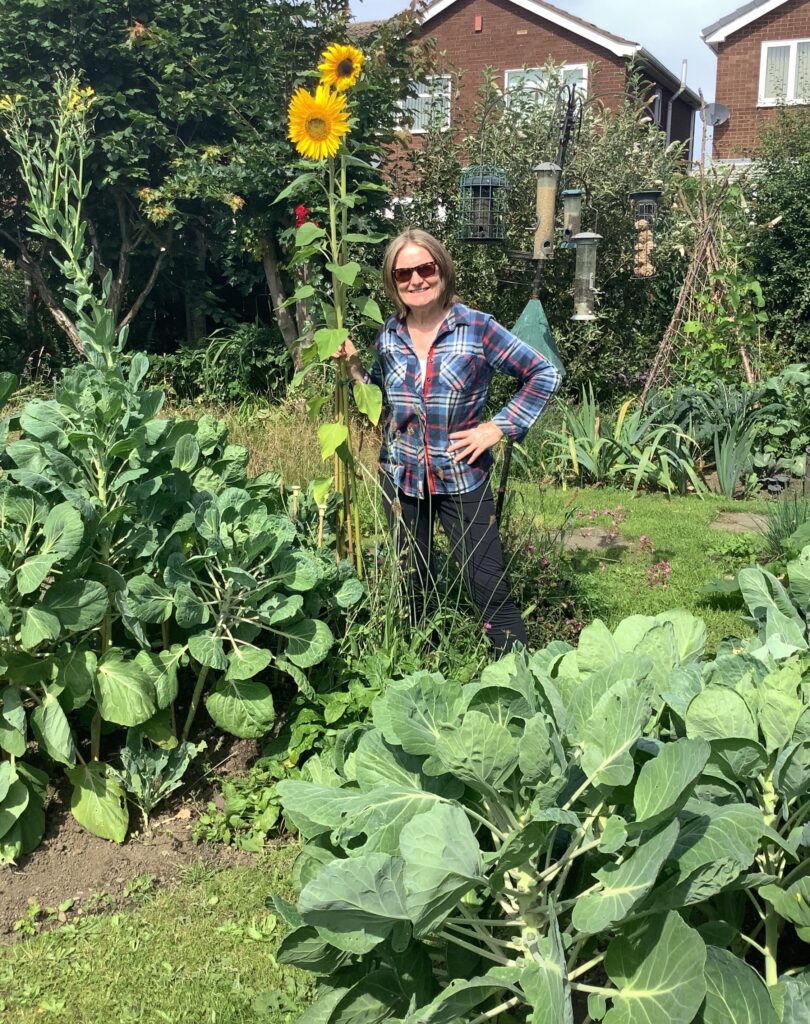
This Years Sunflowers 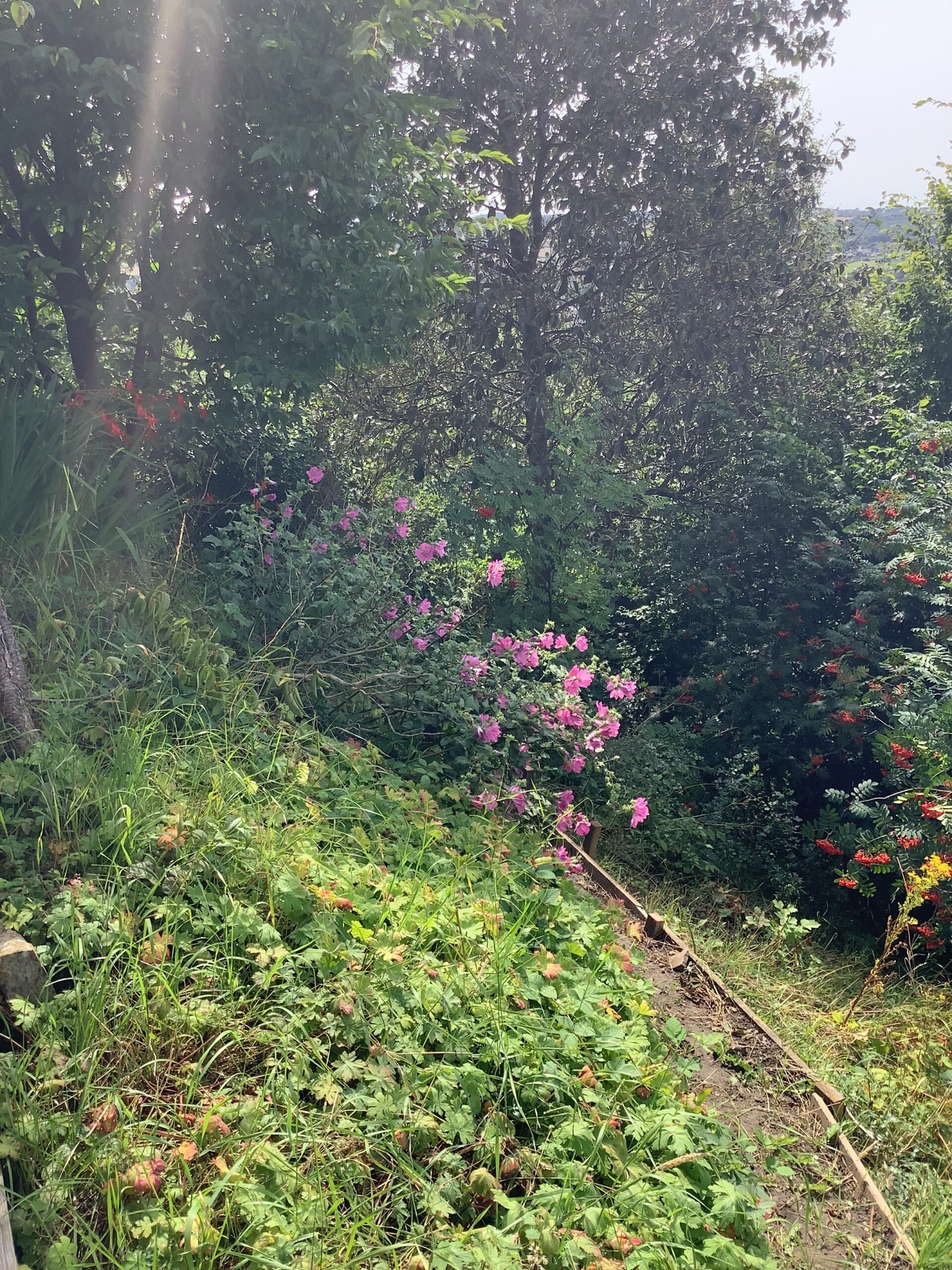
Lavatera on the banking 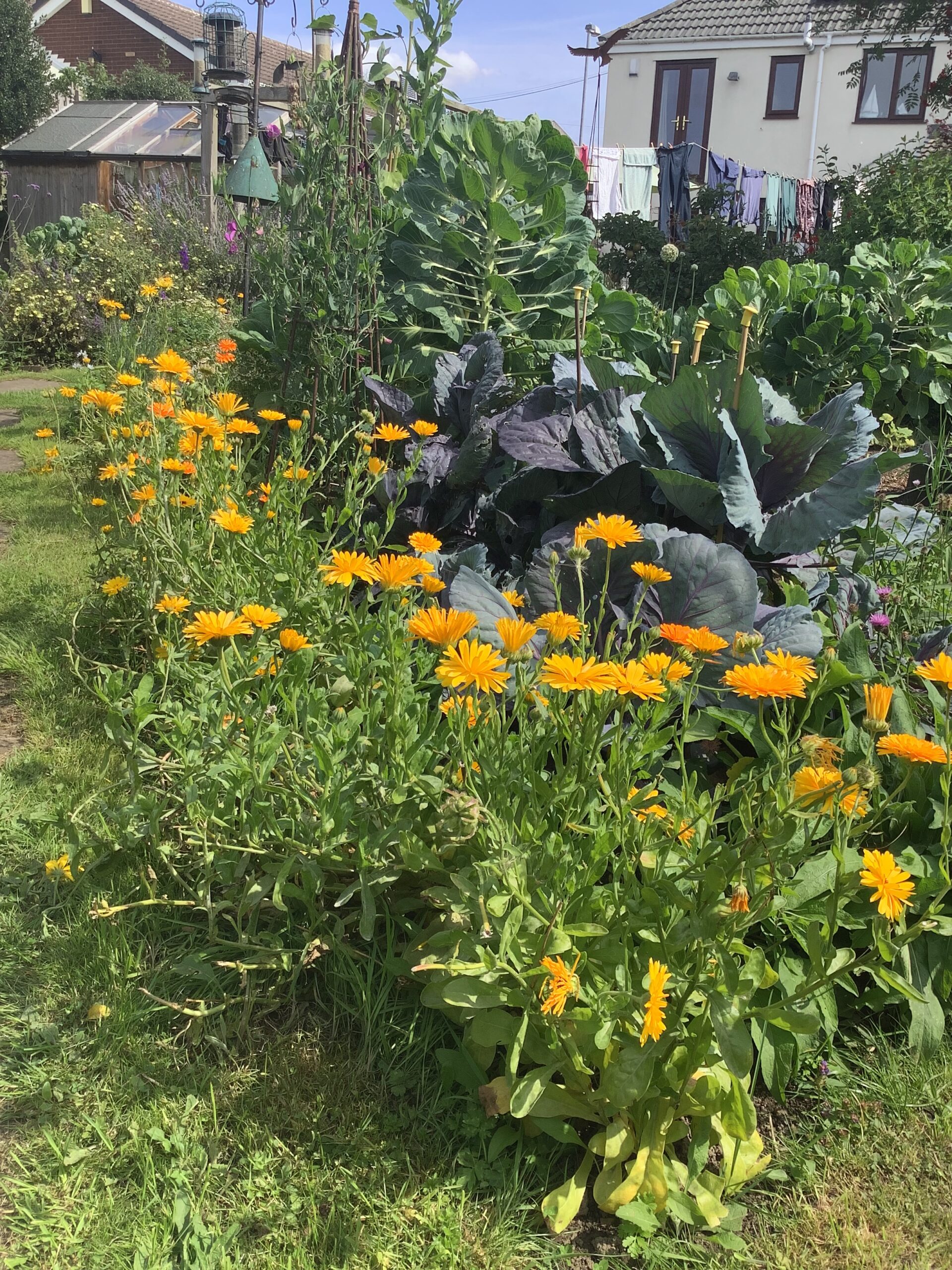
Companion planting 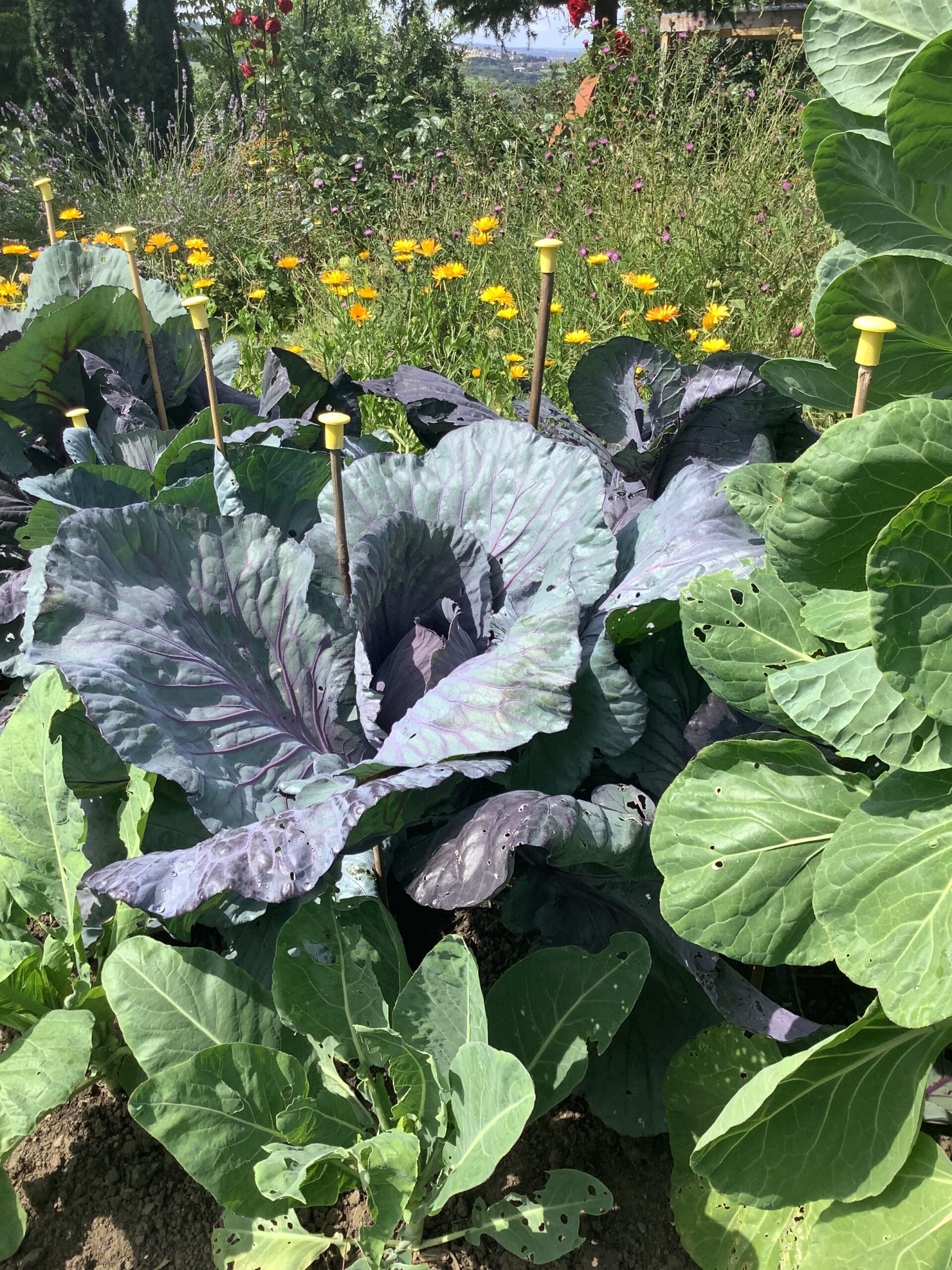
A good sized cabbage 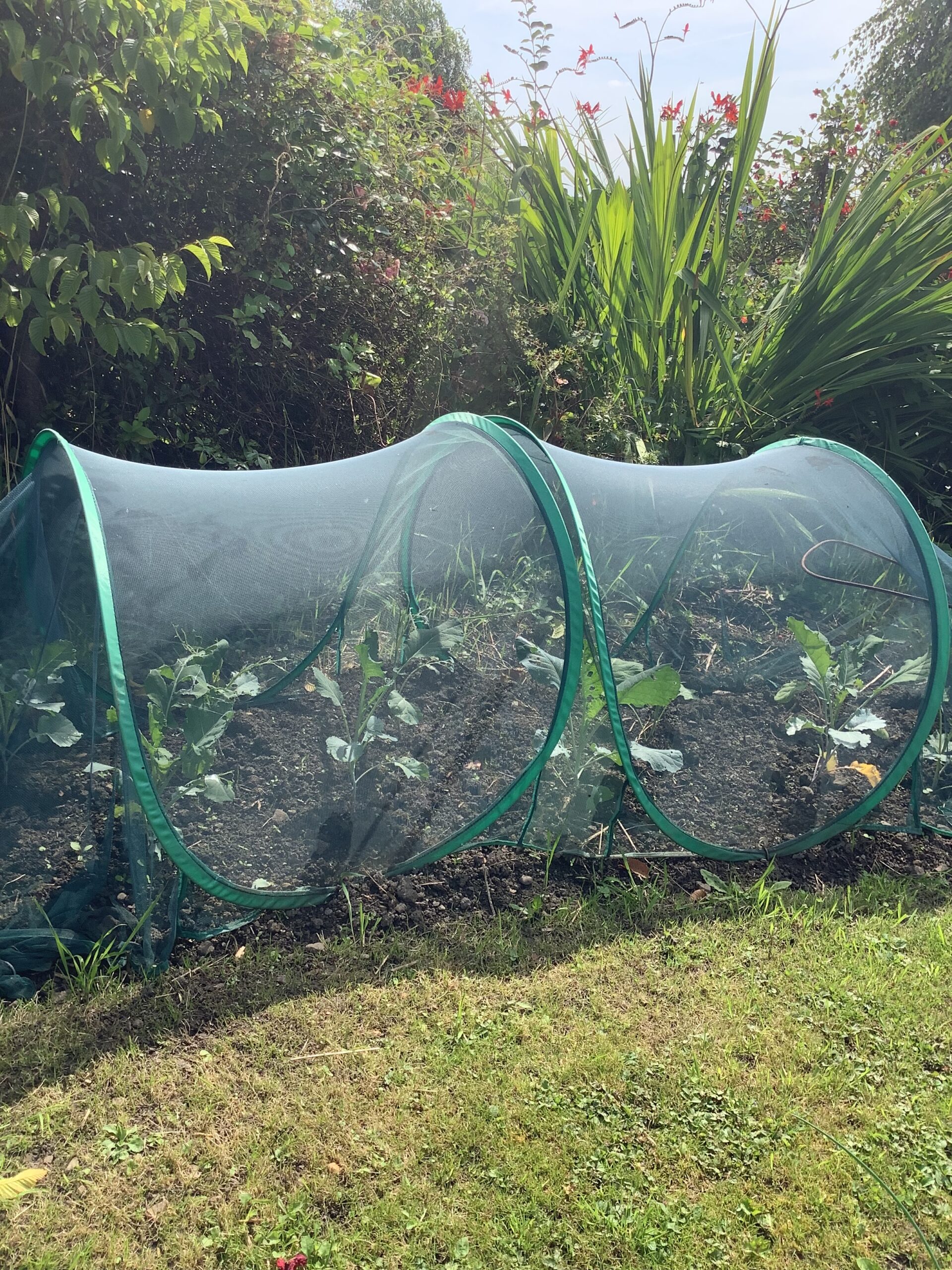
Brassicas in abundance this year 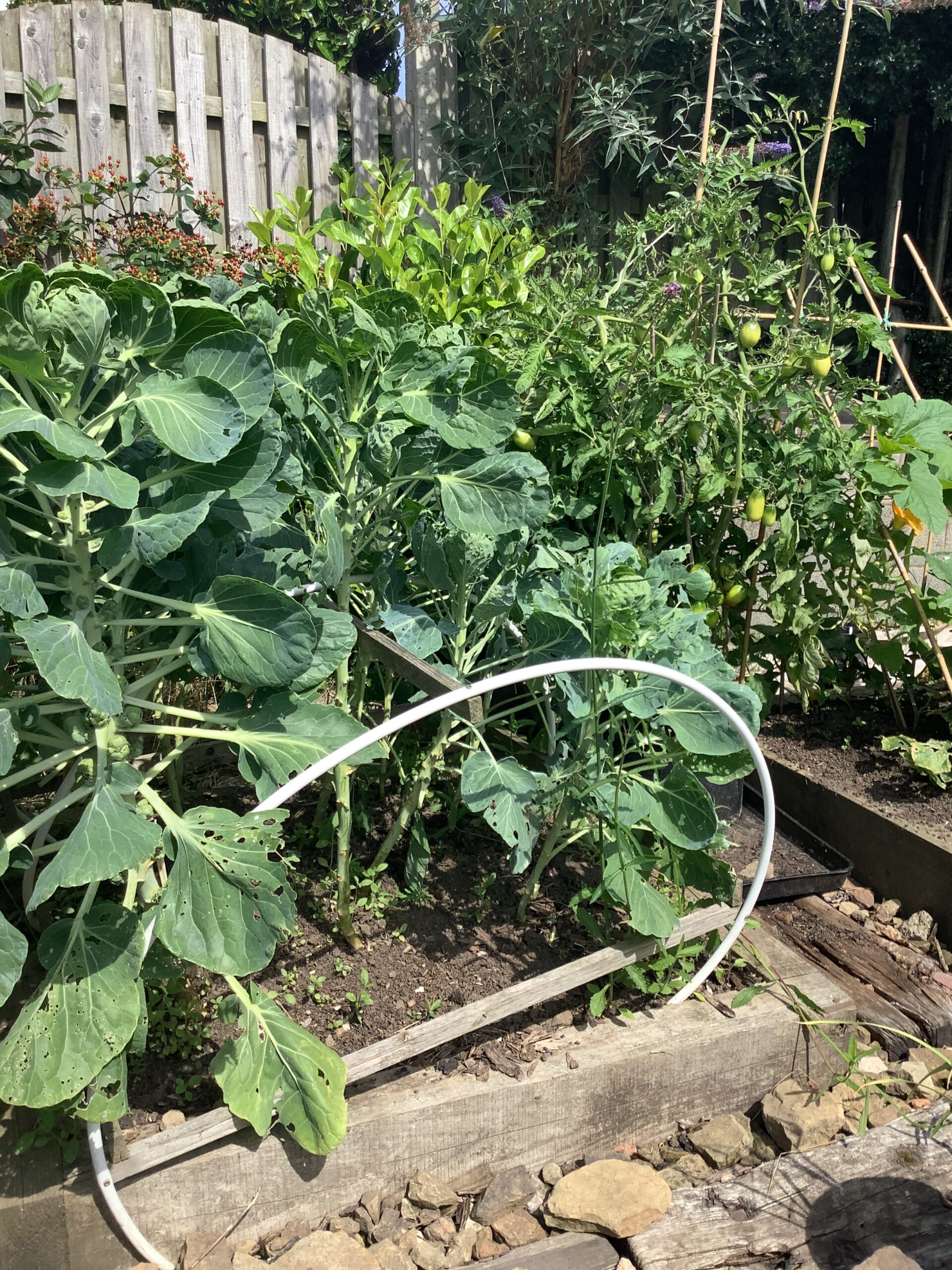
Brussels and tomatoes 
Flowers everywhere but no a courgette to eat. 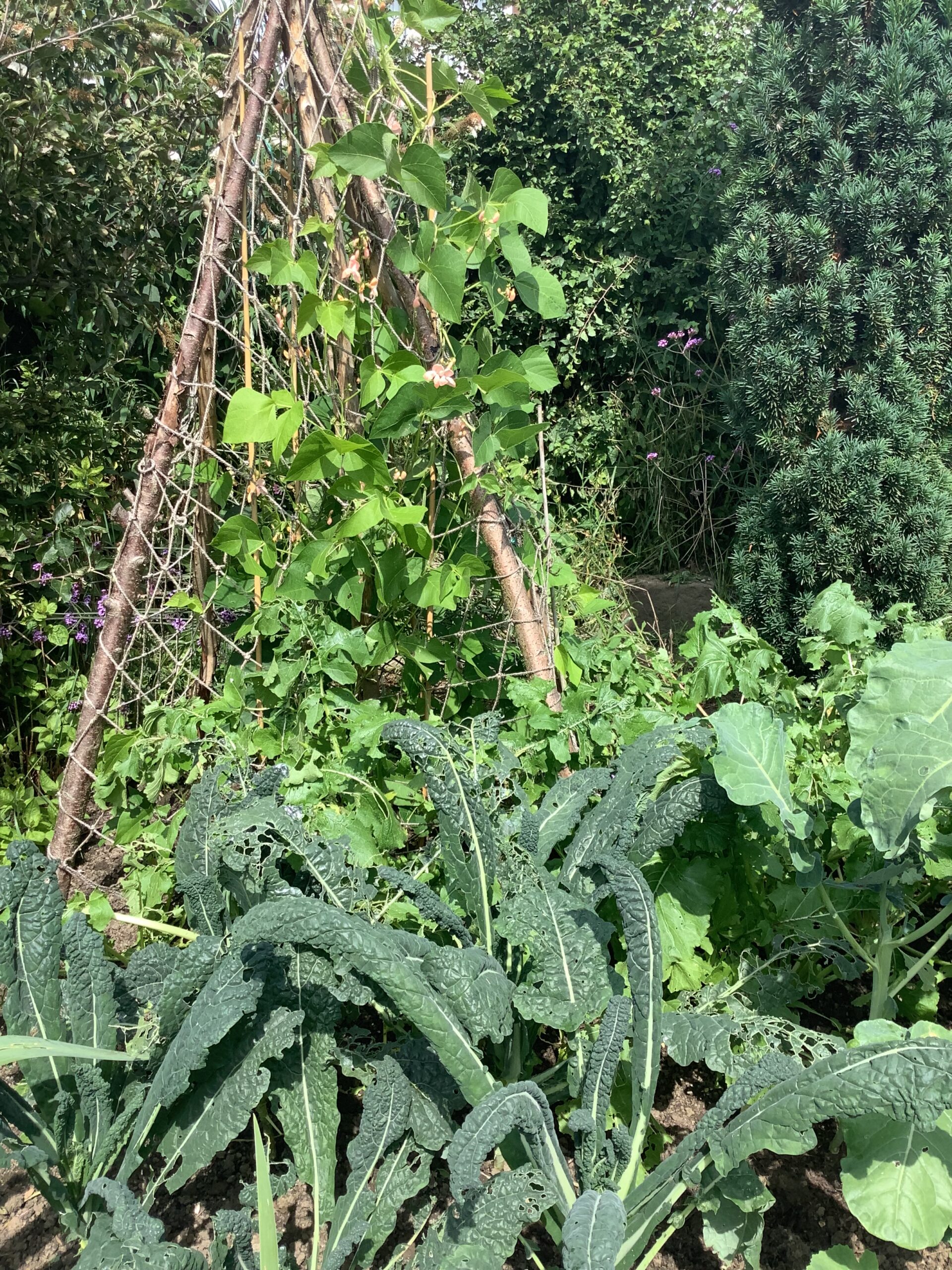
Looking forward to Kale Crisps Ruth is rightly proud of the sunflower growth, but they are being given a run for their money by the bolted brassica. - Wildlife and Sculpture
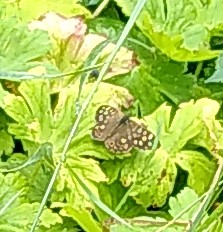
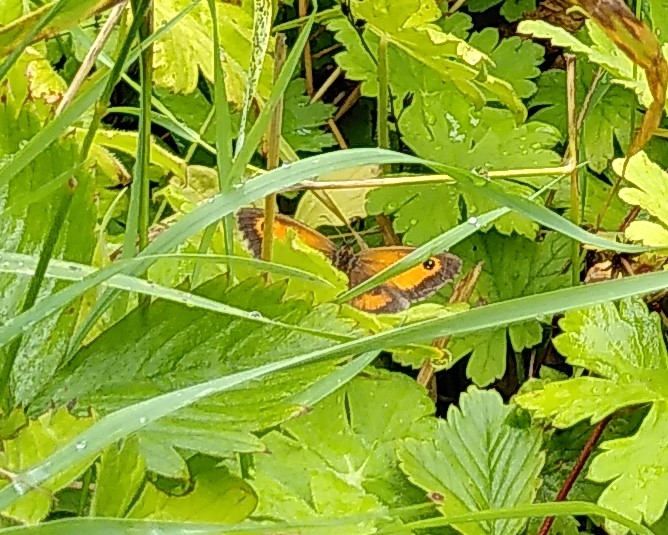
I decided that Ruth had made a nice sculpture combining a plea for peat free compost and a protest about plastic bags. - A little video Tour
- Jigsaw puzzle and no bats
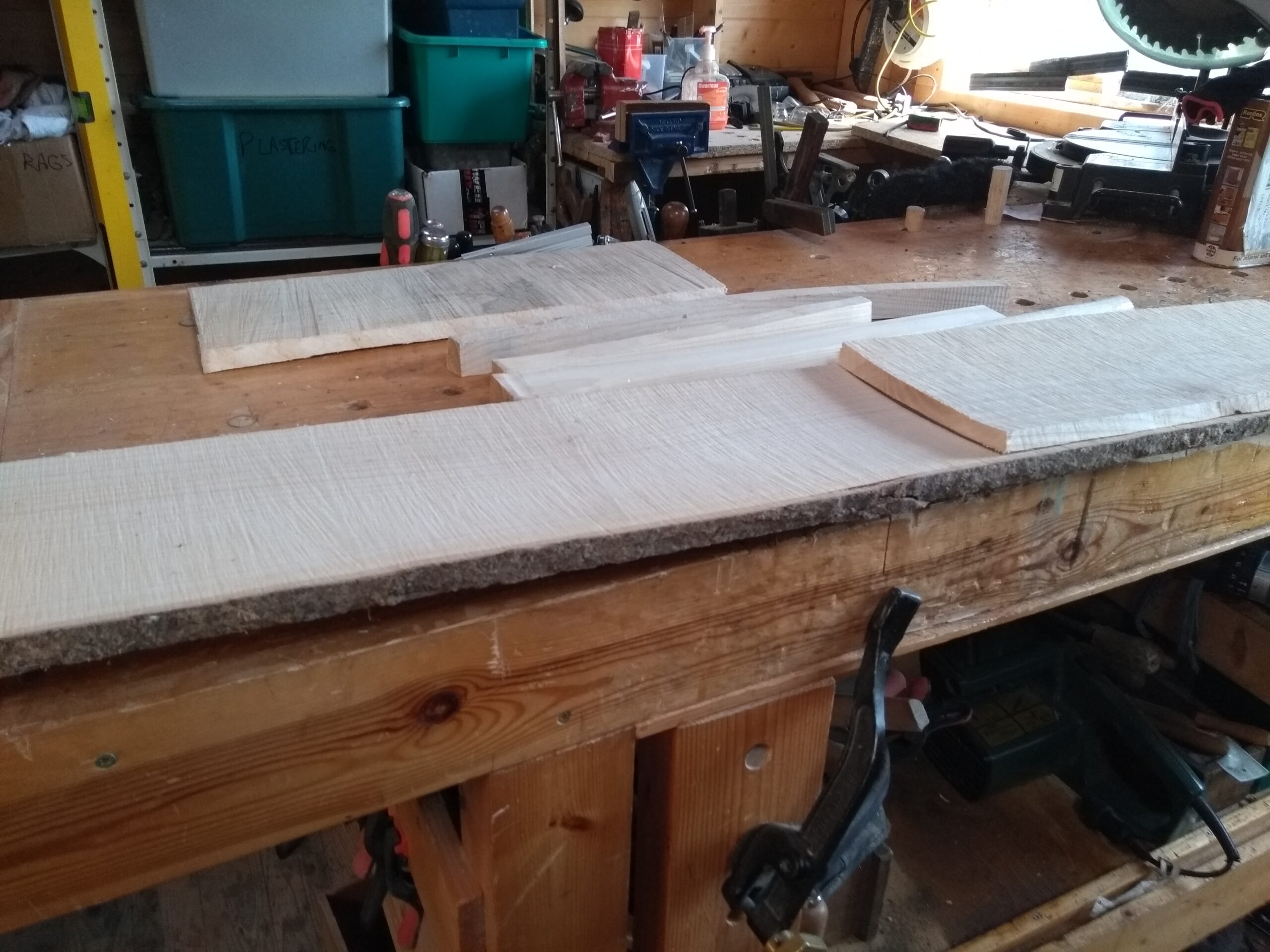
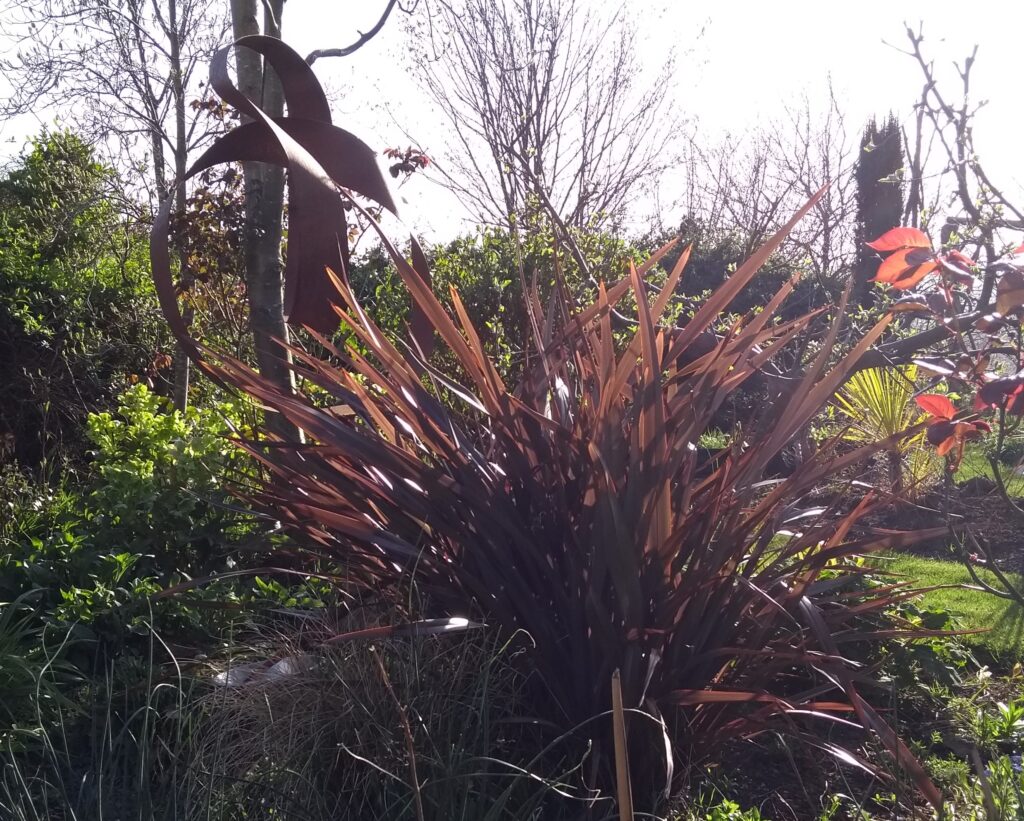
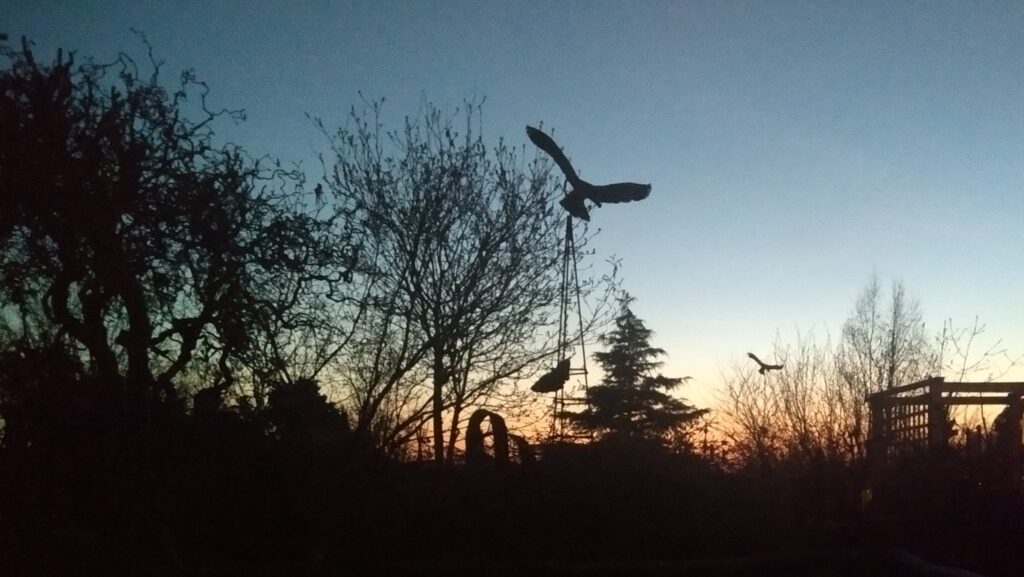
I decided to see if I could make a small bench from pieces left over from chair making, but I haven’t solved the jigsaw puzzle yet. I sat outside the shed and loved the light on the flax, roses and other plants then came inside as it got colder. Instead of closing the curtains I put off the lights and watched for bats, but there were only my own creations flying around. I’ll be generous and assume it was the cold and not the neighbour’s light polution that kept them away. - Generate your own Zoom Background
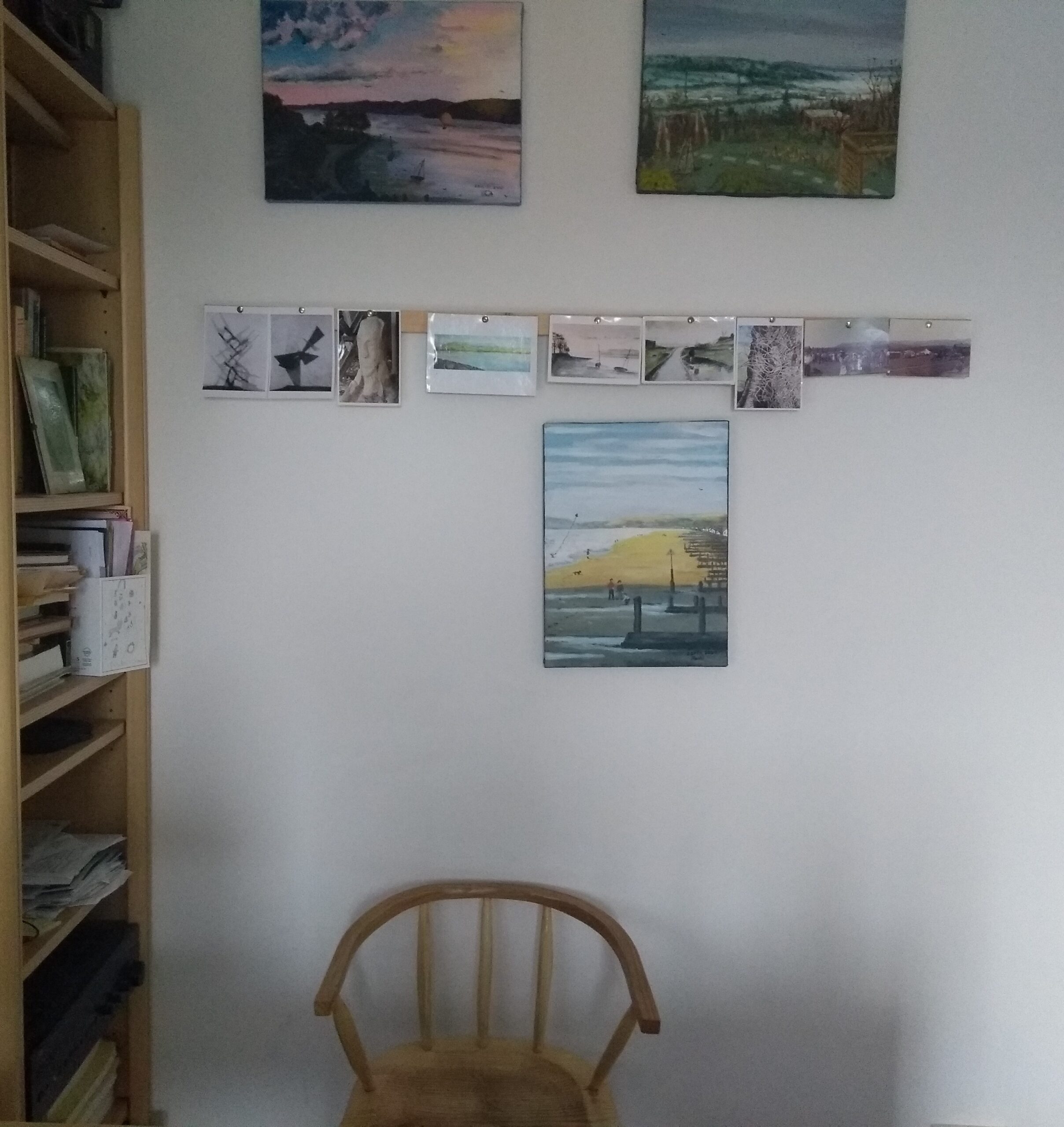

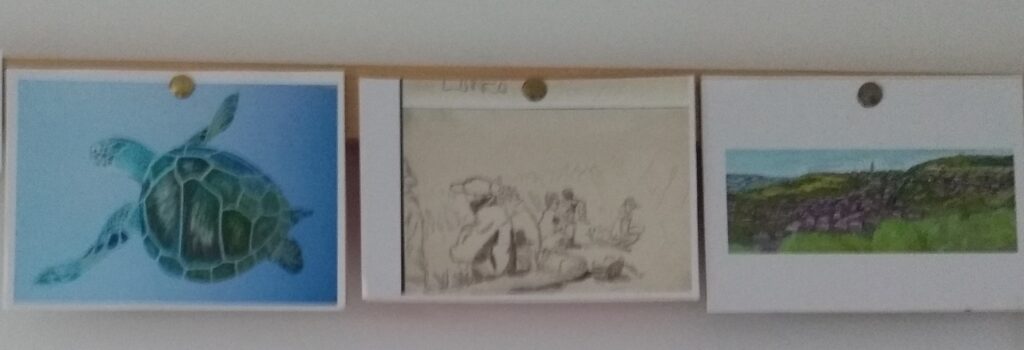
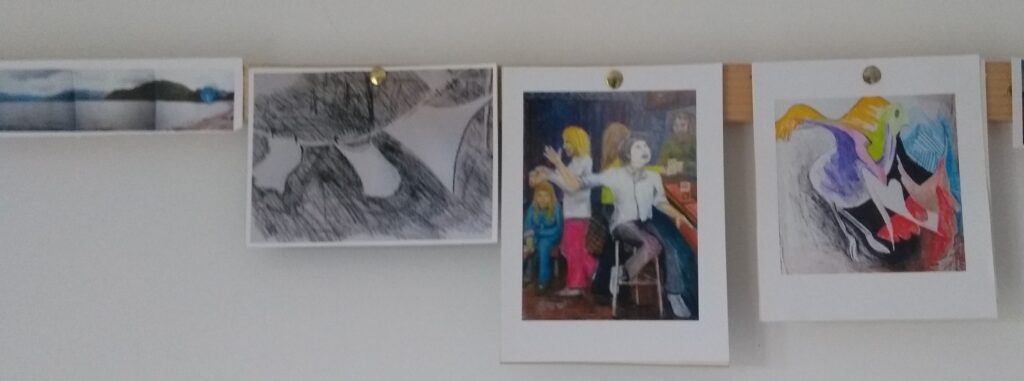
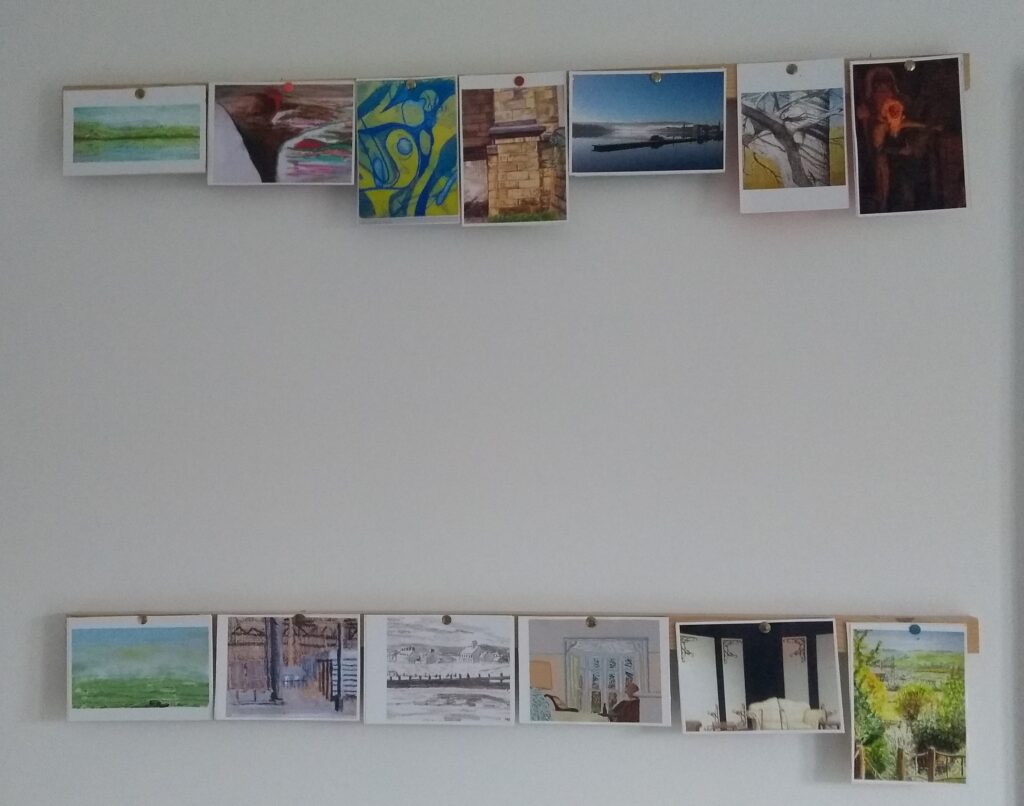
My home made office chair with spare and small copies of bits of work behind and around the walls. - Spring Sprung
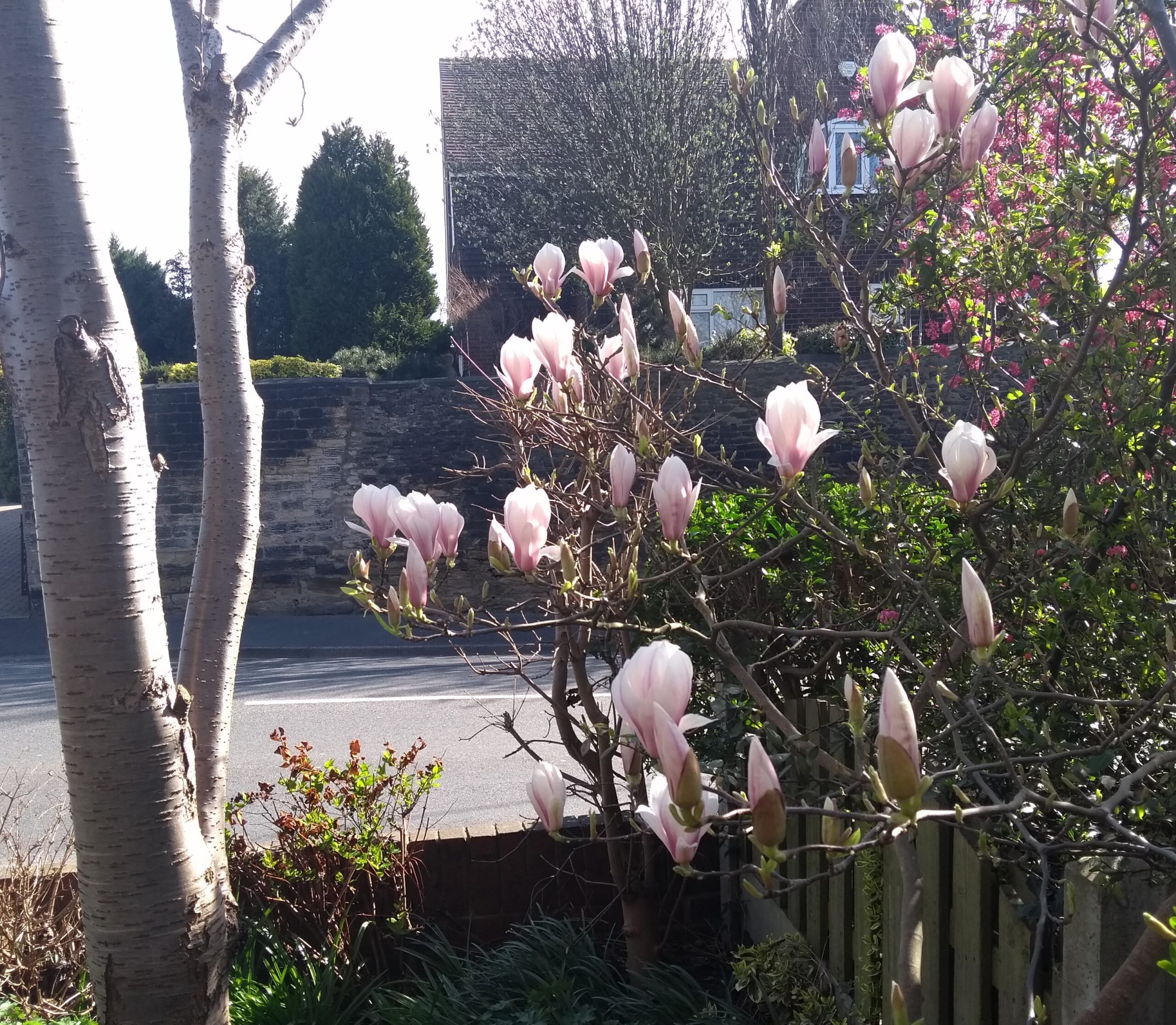
The more formal Front 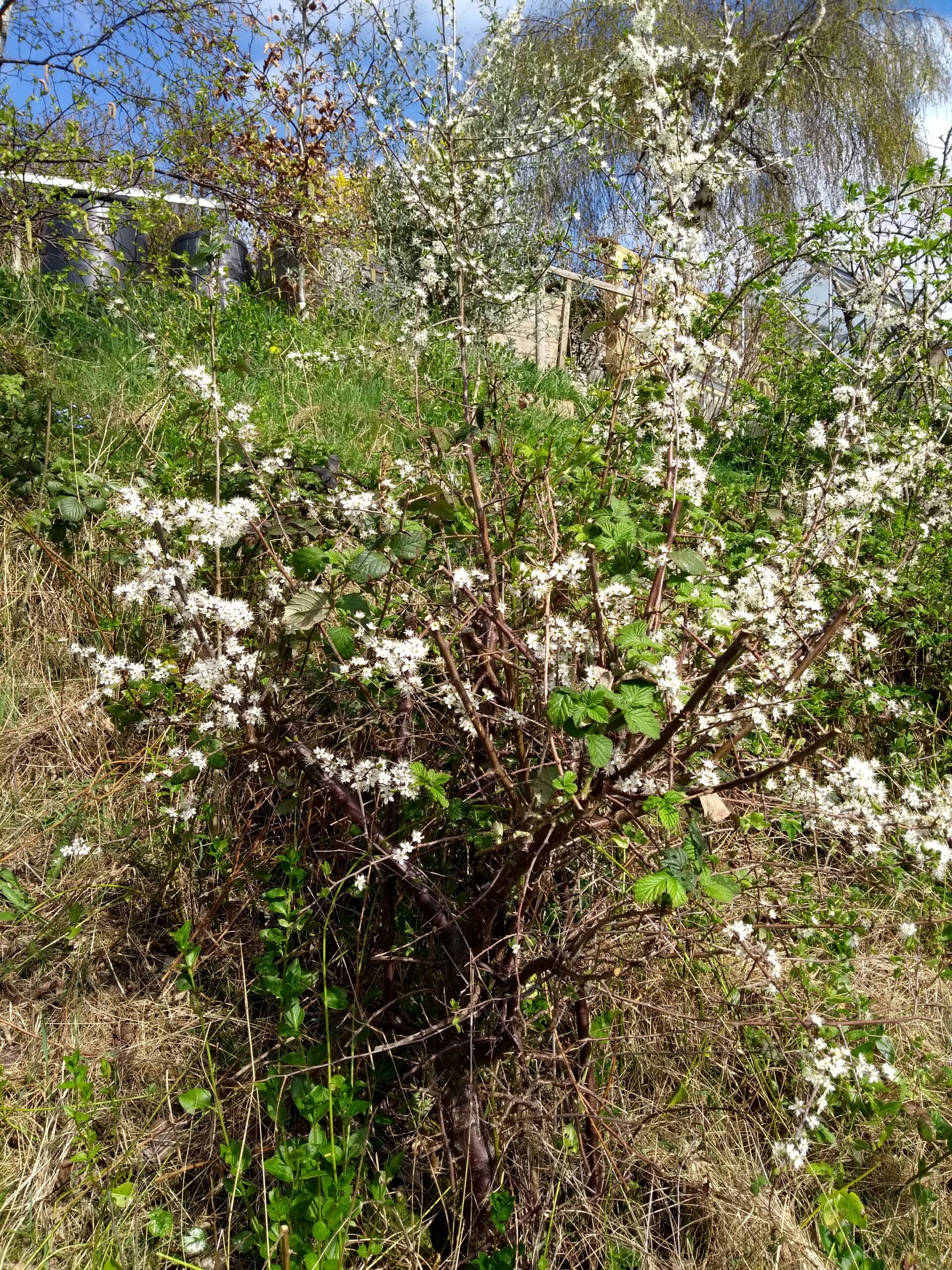
A crop of sloes Later? 
Willow shoots good or bad? It is still moving from cold to hot and back again, but the garden is giving little gifts all the time. Ruth’s much loved magnolias, wild sloes flowering and the willow arch, made over winter, showing shoots. - Nature and pottering
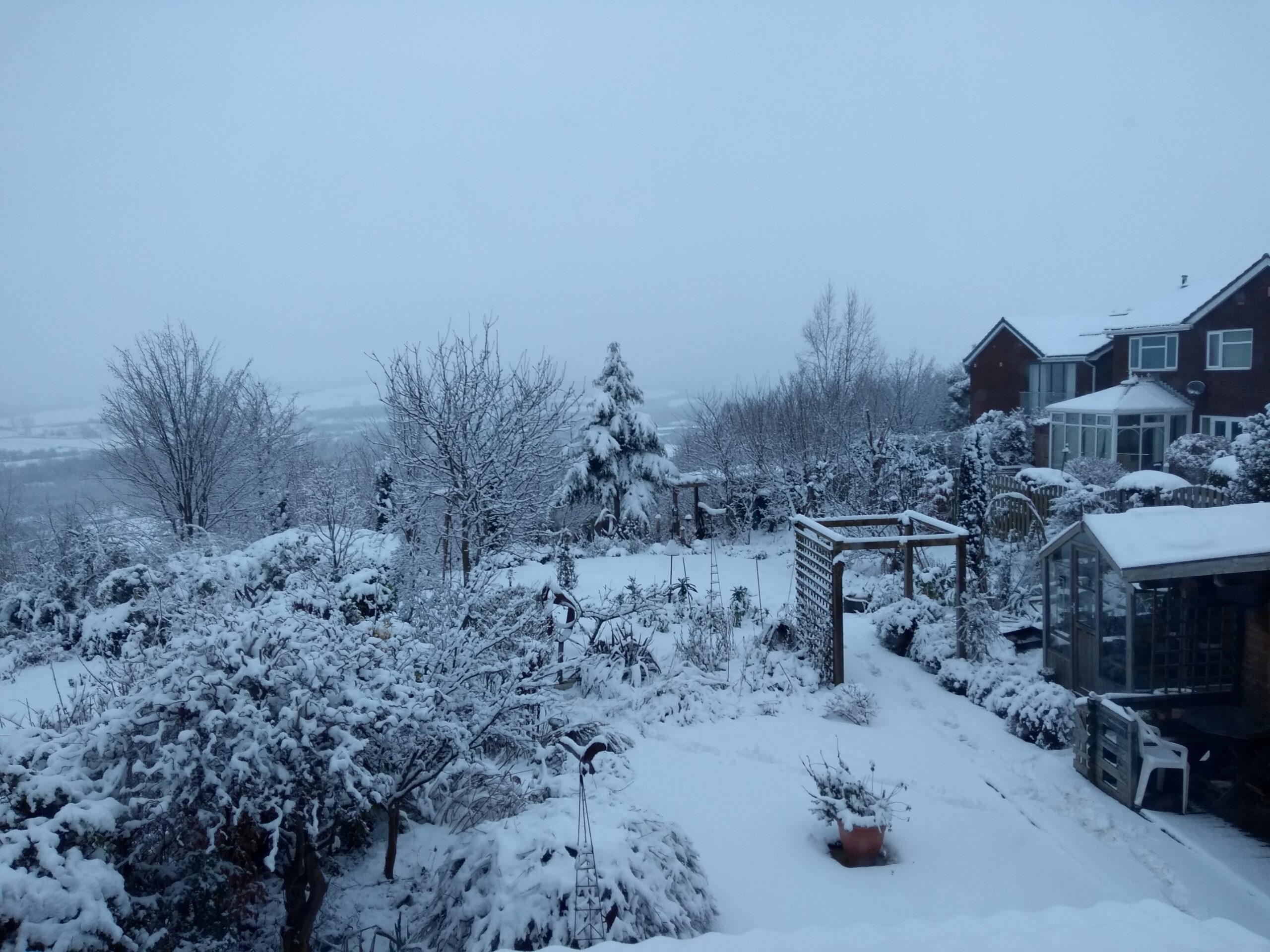
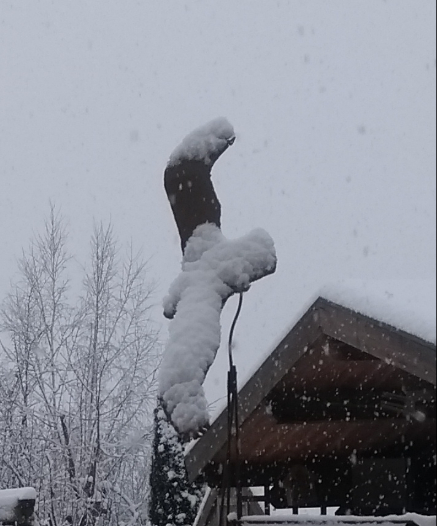
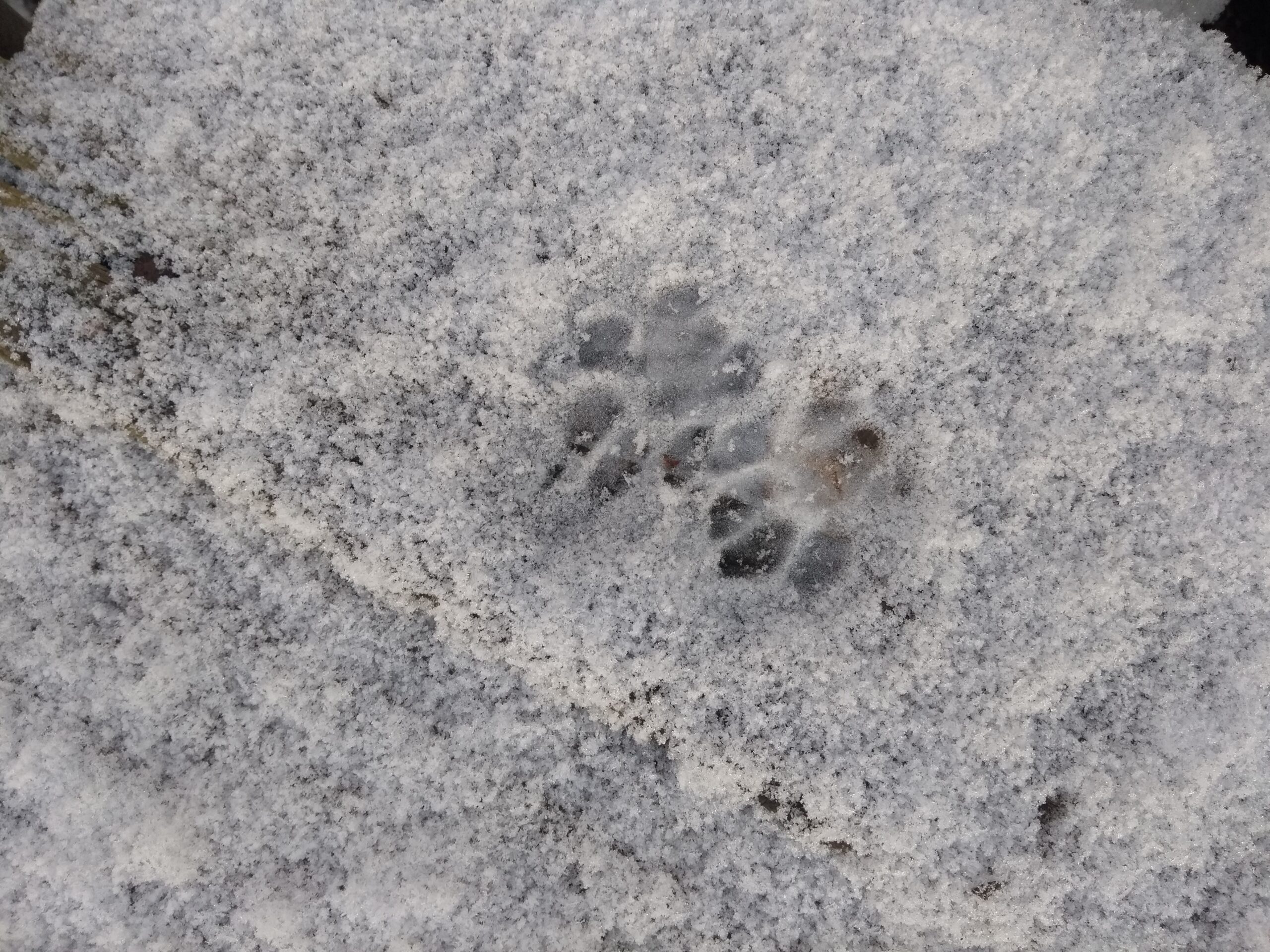
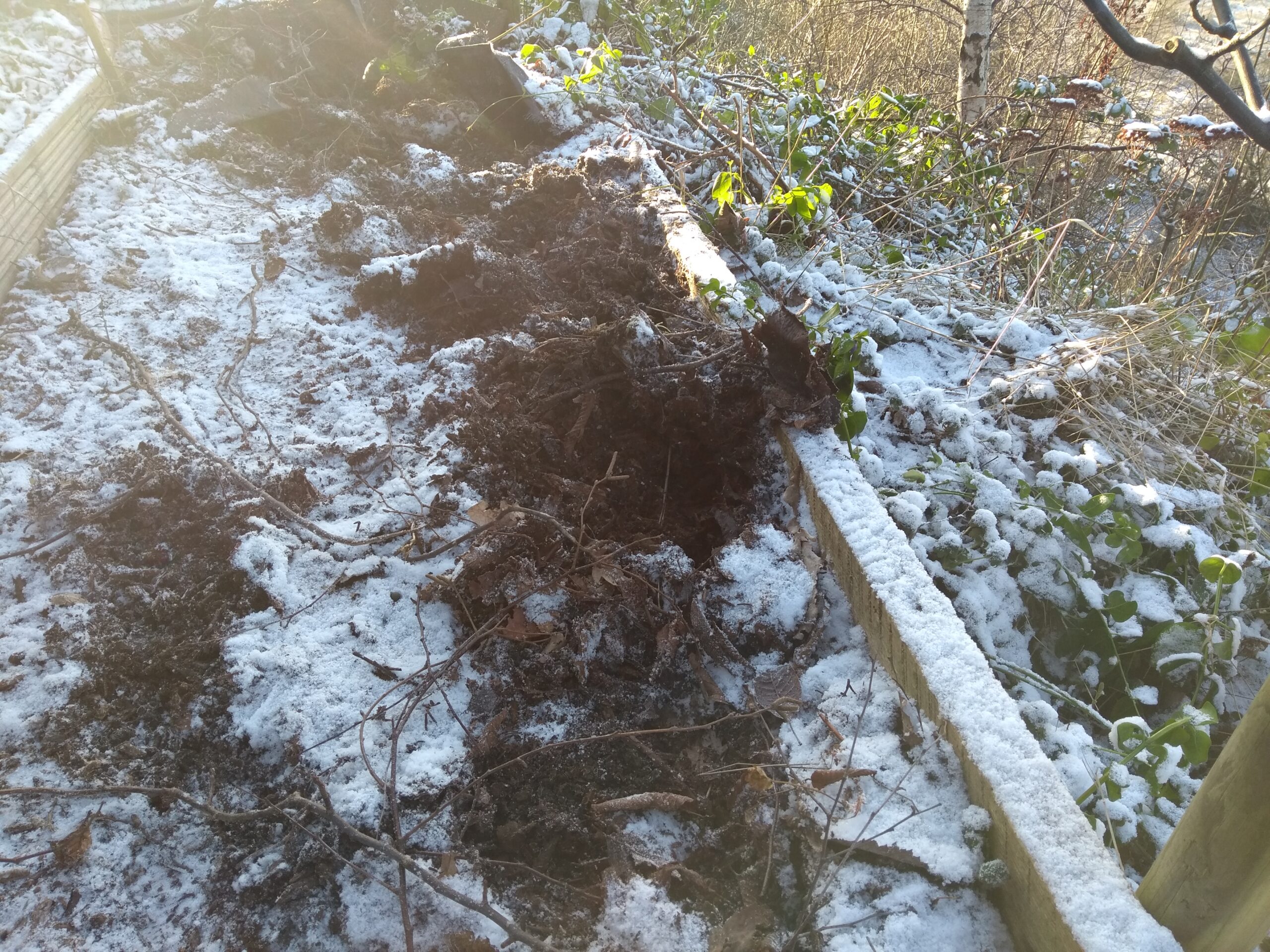
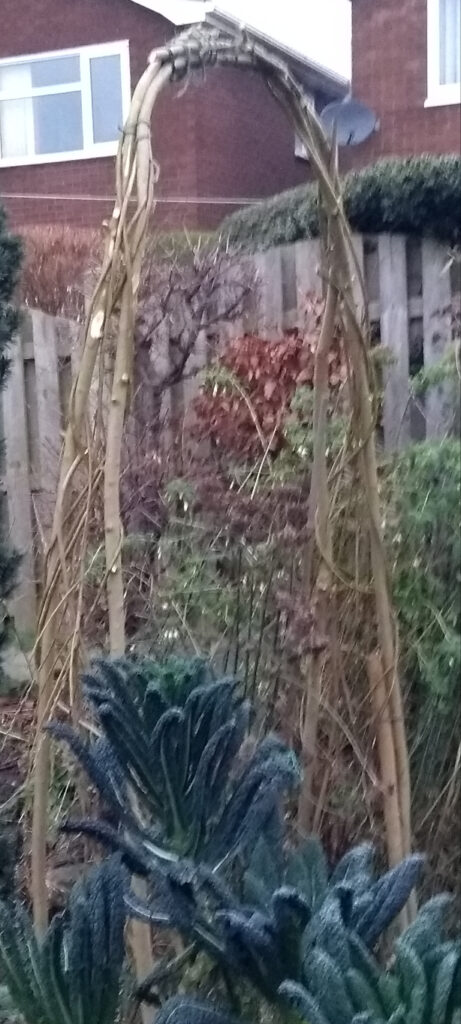
We had quite a lot of snow recently, which gave us an excuse for staying inside and watching nature. At one point we had 3 female and one male pheasants in the garden. The snow also gave the chance to spot tracks, including evidence of the supected badger that has been digging up the paths for worms. On a nice day I cut some willow from the bottom of the garden and made an arch on the entrance to one of the paths. - Build, Re-use Adapt

Some of the early furniture I made (in the spare bedroom from wood offcuts) is still in use 40+ years later. Some of it was made from wood taken from even older furniture that was just being thrown away. Some, like these, just gets re-purposed. We are decorating the hall, so adapted the old telephone table/directory store/shoe stand to be a little bench with the shoes underneath. Ruth had the idea of part painting these white and we agreed what would and wouldn’t be done. We are pleased with the result. - Getting Outdoors
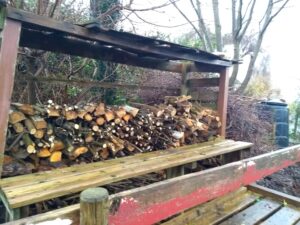
Logs for next year 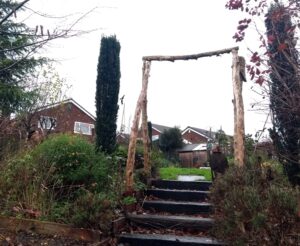
Evergreens come into their own 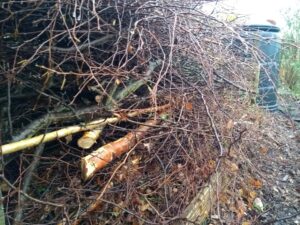
Brash pile awaiting log sorting to kindling and shredding for the paths. 
Asking to be made into cup mats Each year the garden develops a whole load of log and brash piles, as the trees get pruned. Slowly they then get brought to the top and processed. In the absence of a lot of flowers, the evergreens, skeletal trees and the colours of the logs and brash piles add a nice pictorial element to make you smile. - Keep on Trying
Addendum to the text below. Since this I have had all sorts of nuisance health problems, such as a failed hip replacement, but I now know that practice has enabled me to ensure that I generally make a better fist of painting such as this example. So the heading is even more apt four years later.
As we enter Covid Tier 3 and full England Lockdown threatens, I resolve to get back to painting, but I have hit a block. I have just decided I don’t like one I did before and taken it off the wall to redo and the sketch below is the last I did in Wales and I really dislike it.When I did it, Ruth went of for a walk and I set out on my folding bike for this spot. The gears suddenly stopped changing and the battery started threatening to run out faster than expected (I later discovered that the charger had fried three expensive batteries). As I set off it went a bit cooler and the wind really got up. By the time I got to this spot I was a bit cold. As I decided to pick an angle to sit and work from, I realised that, while the view was lovely, it was hard to capture on paper, because of the scales. Determined, I started and the water-filled brush I carry in my little travelling set decided to play up and wasn’t delivering water.I was sat on a 35cm high stool balancing a small sketchbook, a pallette, a source of water and myself as the wind increased. The sketch book kept trying to close and the tiny pallette lid kept doing the same, spilling my paint mixes into each other.Suddenly I realised that the tree I was sat under was an oak and was raining acorns down on where I was sat. and that the numbers were increasing. As I intinctively flinched when one hit me, I sent paint flying over the painting and had to rapidly find the rag to mop it up.I hastily captured some last details and fled the scene.The sad thing is that I know, even after sixty years of practice, I could neve capture that scene to my satisfaction. I am lucky that there are paintings I have done, especially little ones, that make me smile every time I see them, but there are more like this that sit there accusing me.Undaunted, I must pick up my brushes again. Maybe a cup of coffee and a few little jobs first.
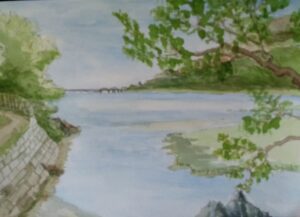
Towards Barmouth - This Year
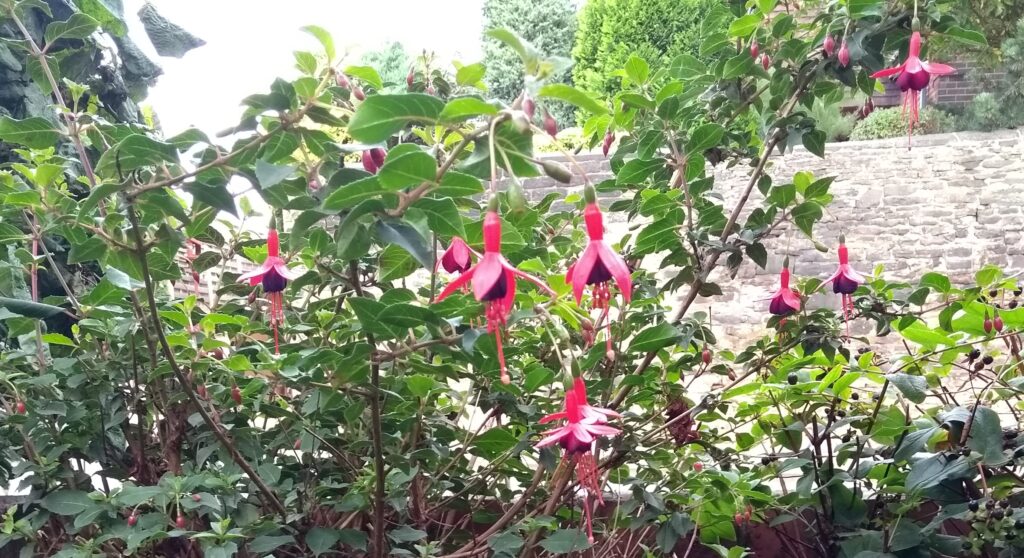
Fuchsias from cuttings 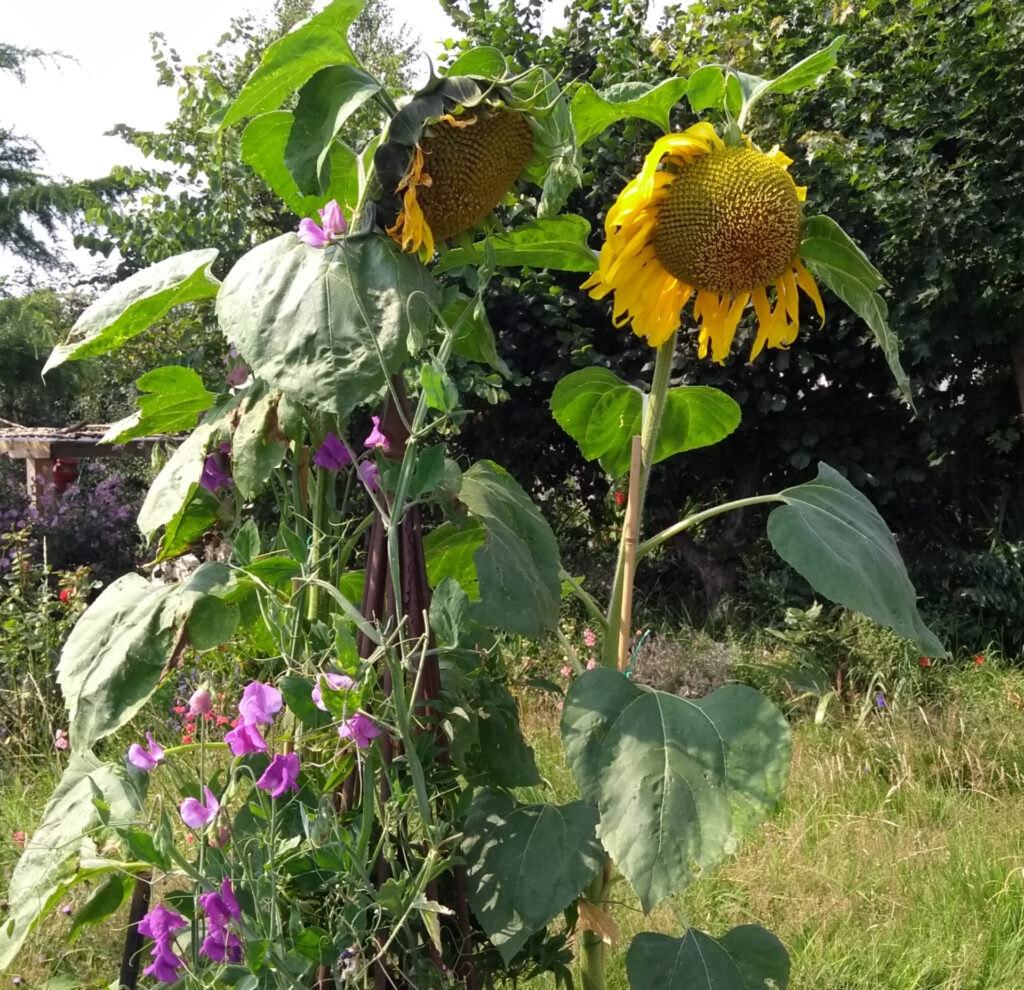
Flowerpot Sunflowers 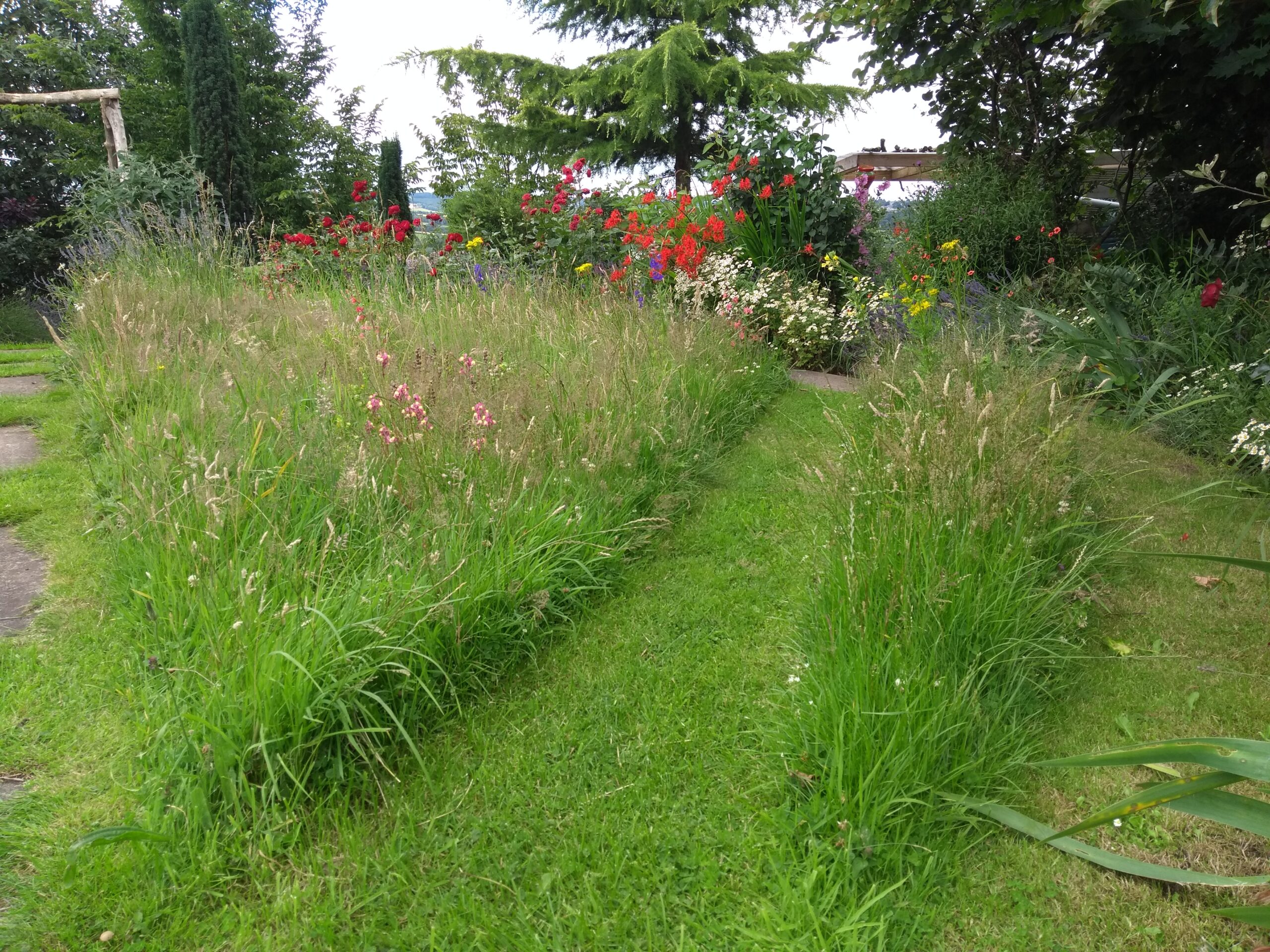
Meadow Beds It has been a funny year of course but work is well underway preparing for winter and next year. 100m of hedges cut, trees trimmed, meadow beds cut, scarified and extra perennials and seeds added, more cuttings started. Manure has been hauled and is waiting to rejuvenate beds, pumkins have been collected and stored, late vegetables are being picked and used, we have started using the wood cut and stored last year. There is always more to do but looking at the meadow bed as it is now, reminds me of its earlier glory.
- To See or not to See
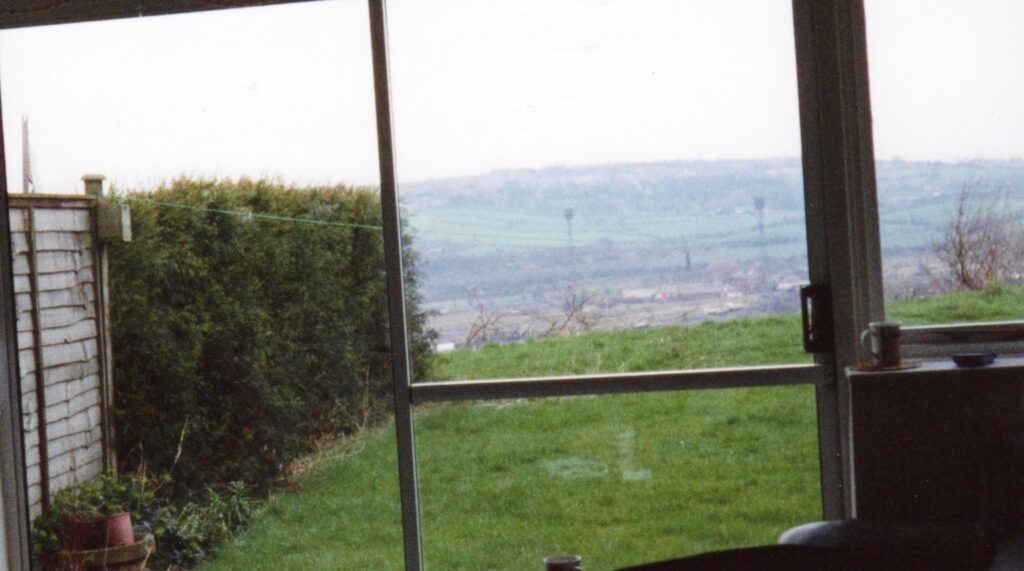
Before the gardeners arrived 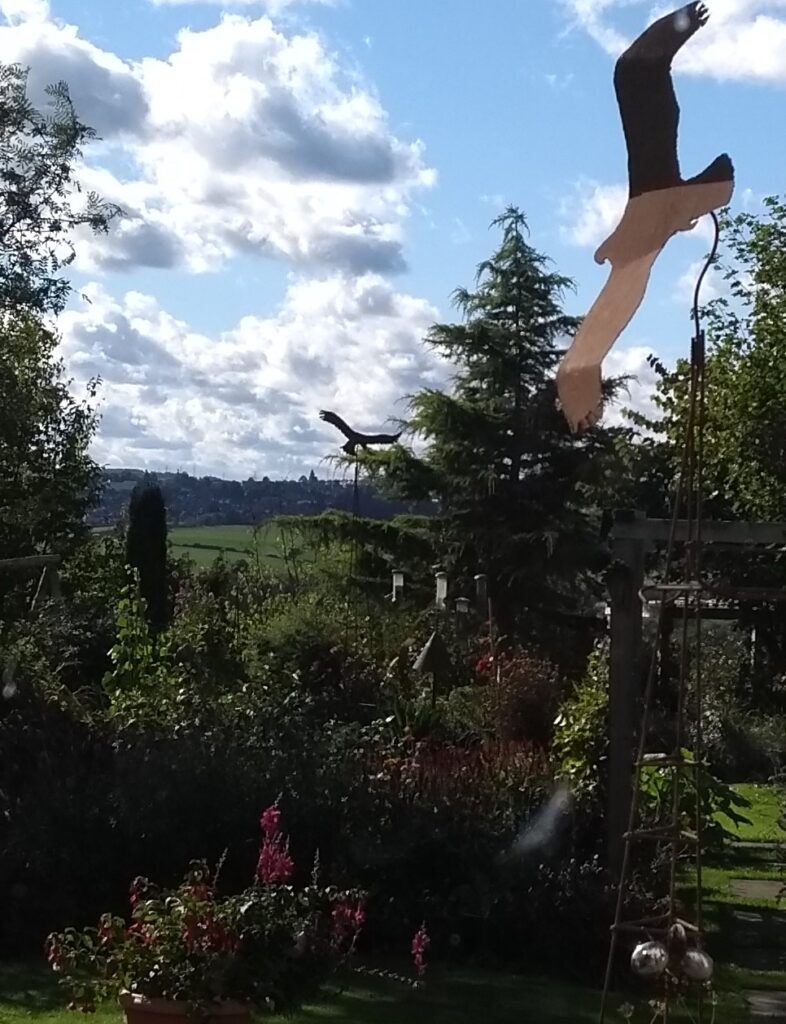
Garden September 2020 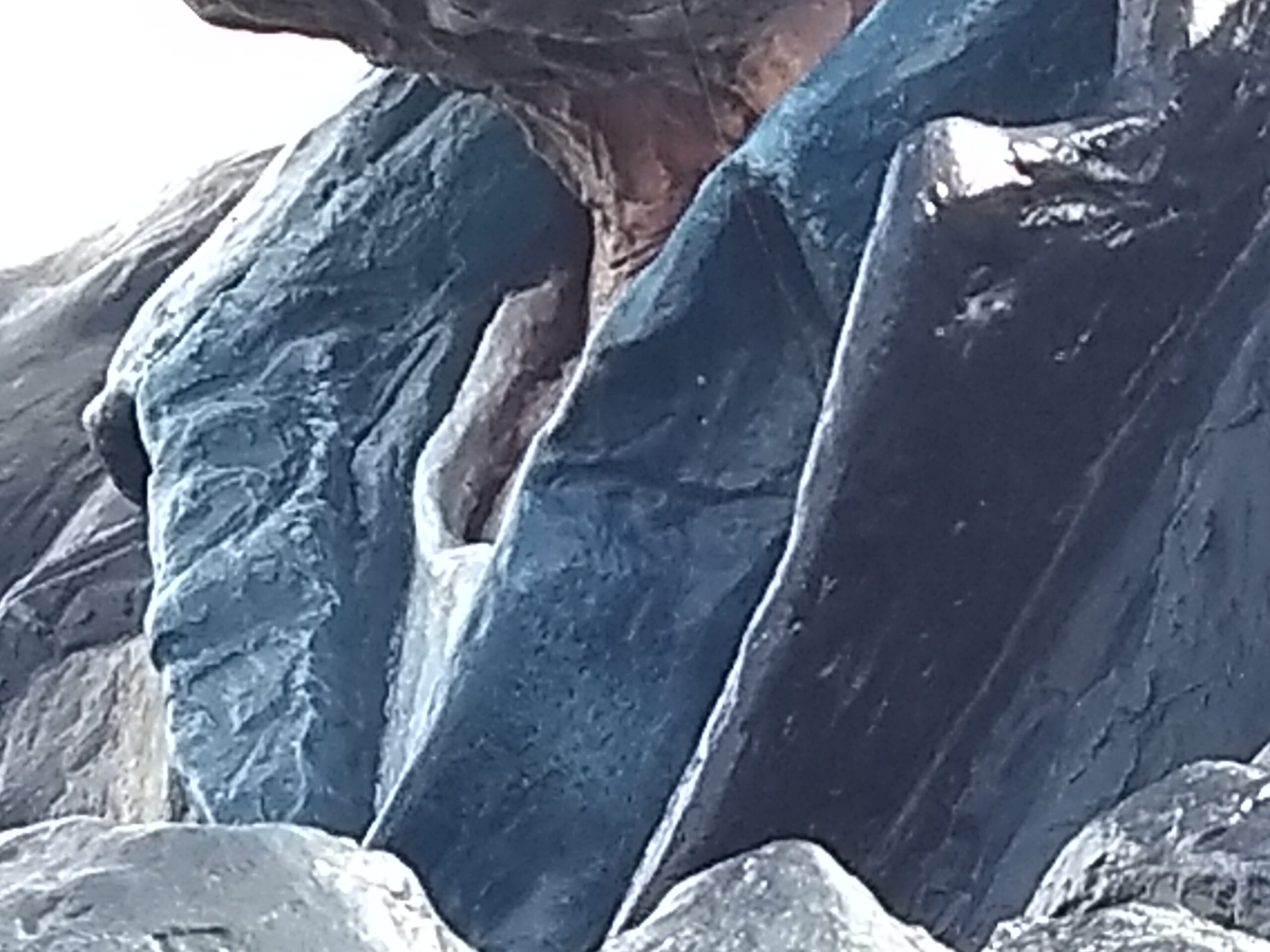
Seated Man detail 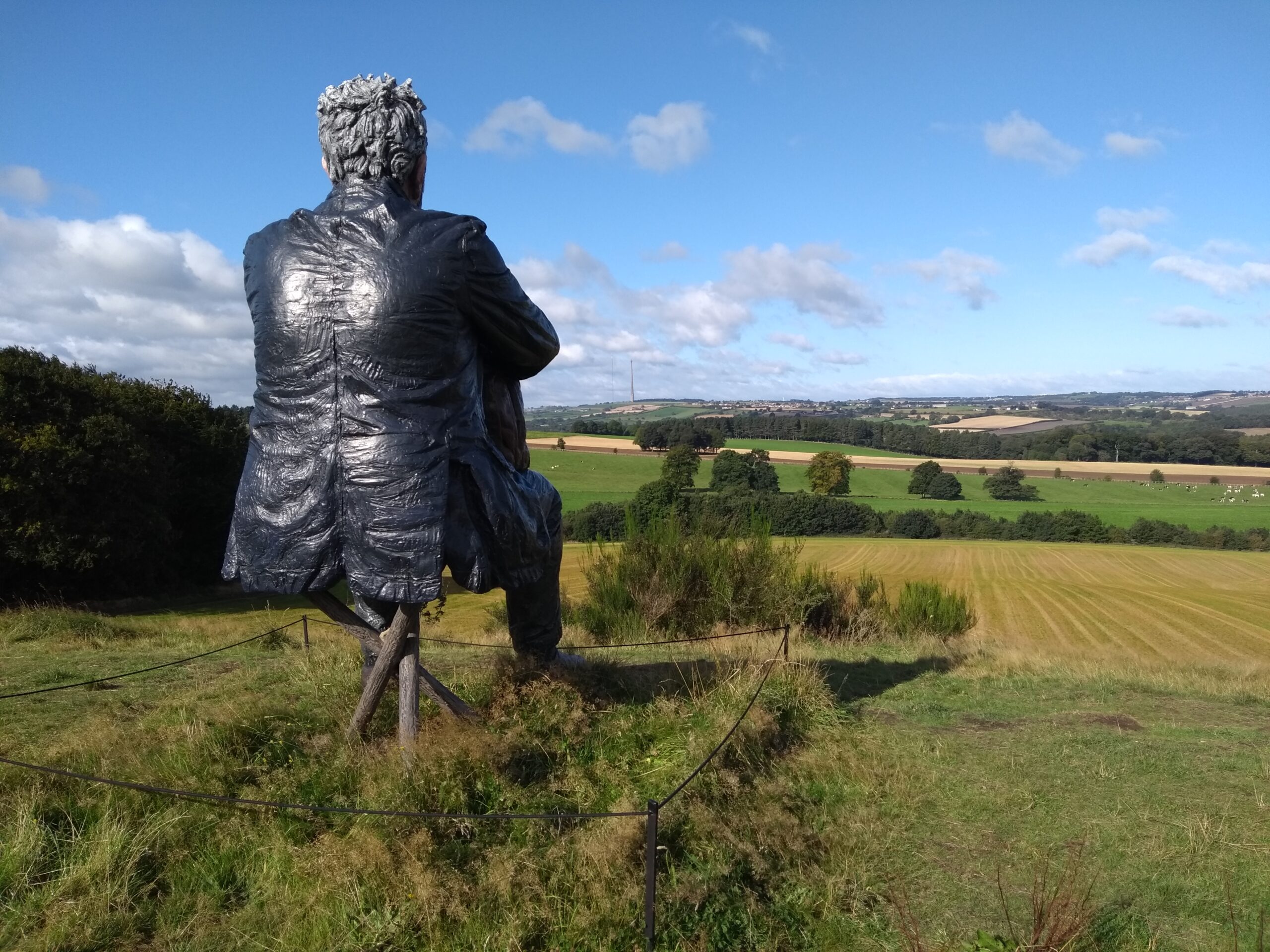
What are you looking at? Designing a garden, painting or sculpture, or even looking at one, involves choices. Do you open everything up to view straight away or do you keep some things temporarily hidden? Do you make it obvious or do people have to make an effort?
Today I had a quick wander round YSP to see some spots I haven’t visited in a while and it made me think about layers of vision.
Sometimes people ask about the views in our garden and the top two pictures here illustrate how it has changed. In the first, you can see hills beyond clearly, but there is nothing really in the foreground to hold your eye. In the second, the foreground is so complicated that it is possible not to notice the hills. The foreground now has its own layers of detail and hints of other views. To see the hills more clearly you have to walk down to the shelter that can just be seen bottom right in the second picture. The whole picture has become richer.
Similarly with the Seated Man sculpture from YSP. It is often depicted from the side or three quarter front, giving a clear view of who it is. While I was up there today. I noticed that the man is actually not looking at YSP at all, but at Emley Moor mast, which adds a new dimension to the thoughtful face on the sculpture. Similarly, if you pause and look closely, you can see the hairs on the man’s chest, which takes some doing in a huge solid object like that. The level of detail in this representational piece is there to make you think about the object in a more complex way.
The sculpture itself takes some effort to get to as well. I used to point people to a previous sculpture on this spot from right across the valley, but, despite its size, you can’t really spot this one easily from that far away. This means that like the garden and YSP itself, you have to walk around and give it time to disccover more.
- A jaunt in Wales
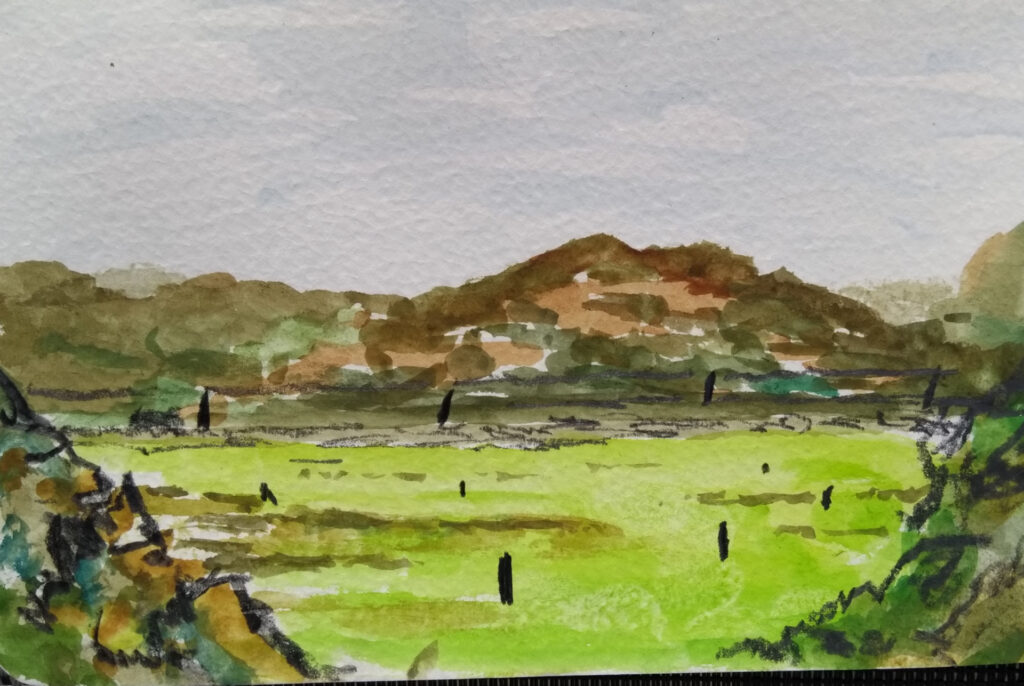
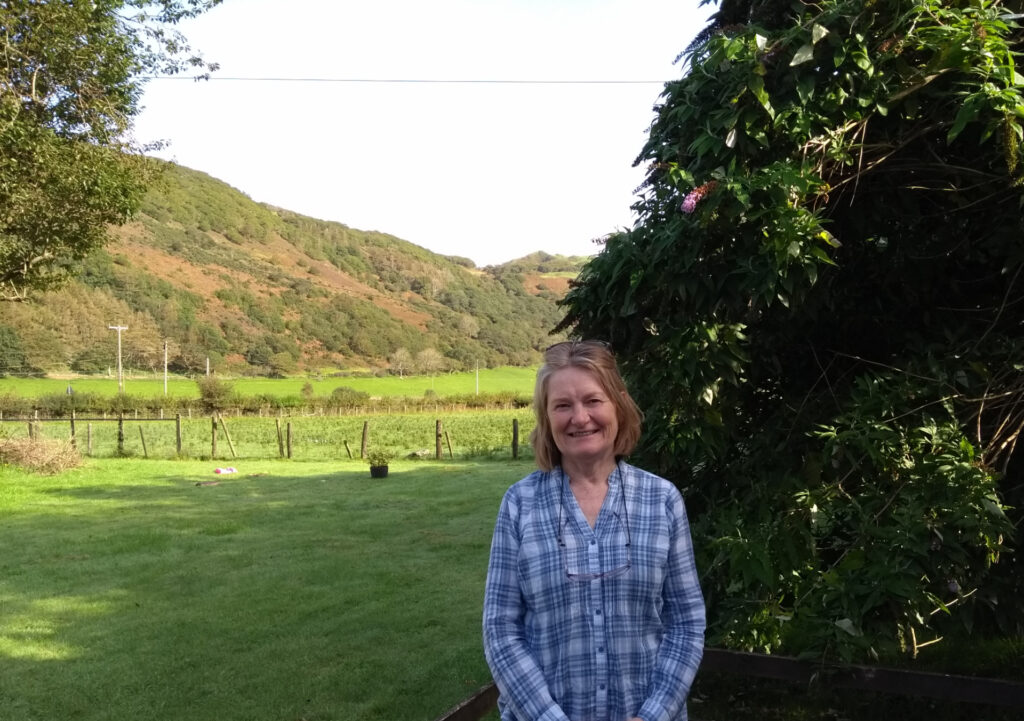
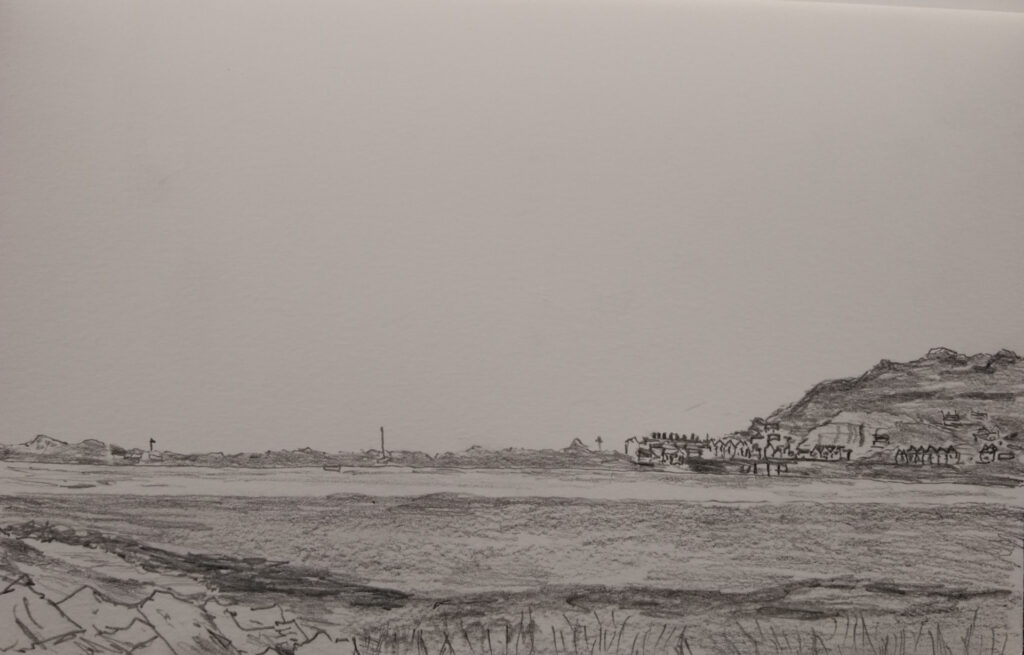
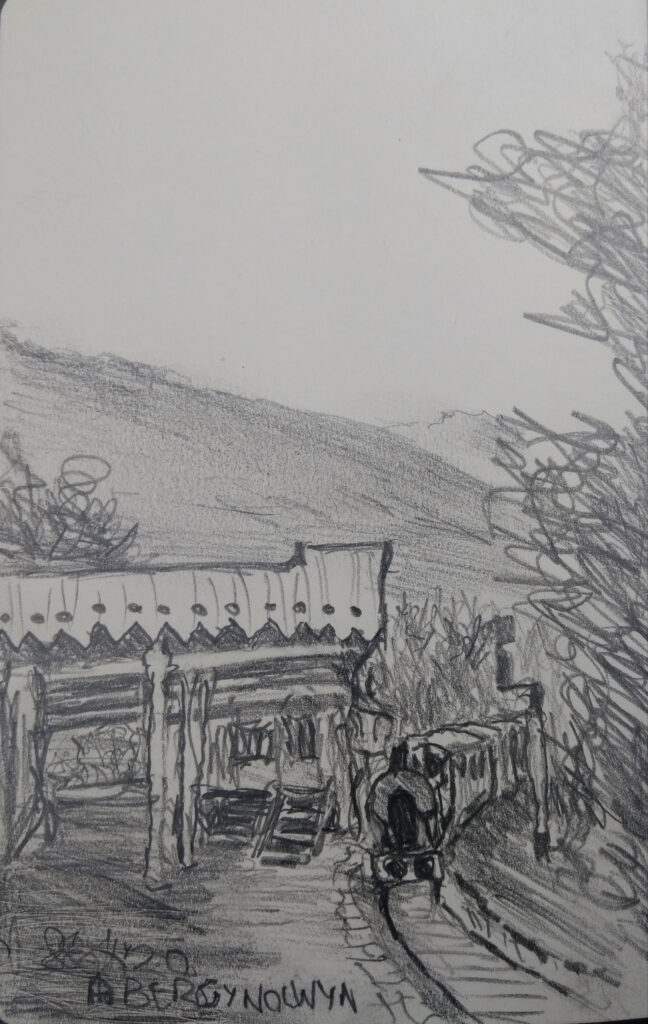
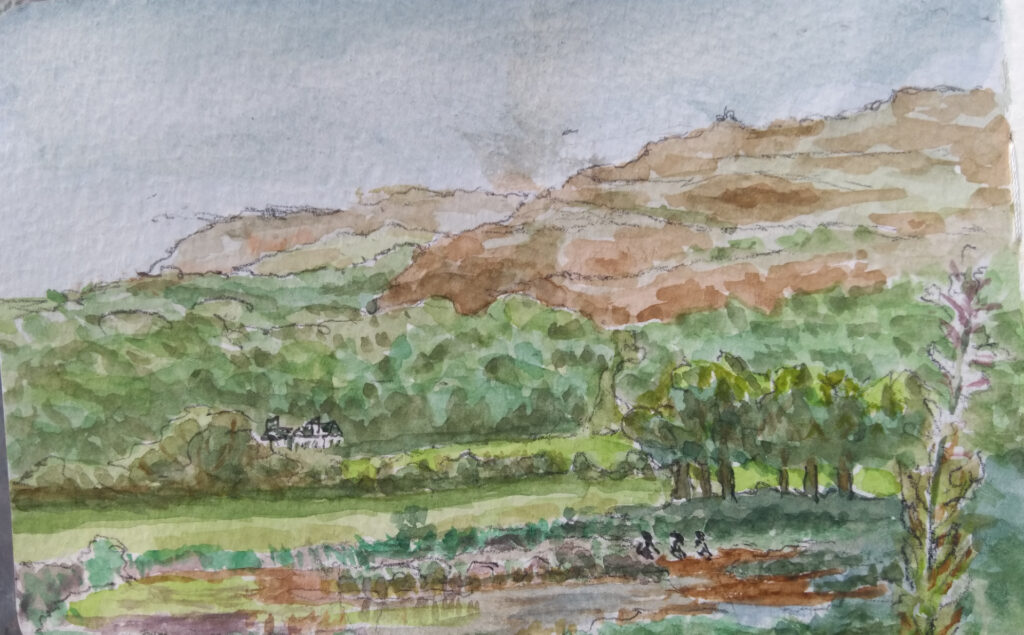
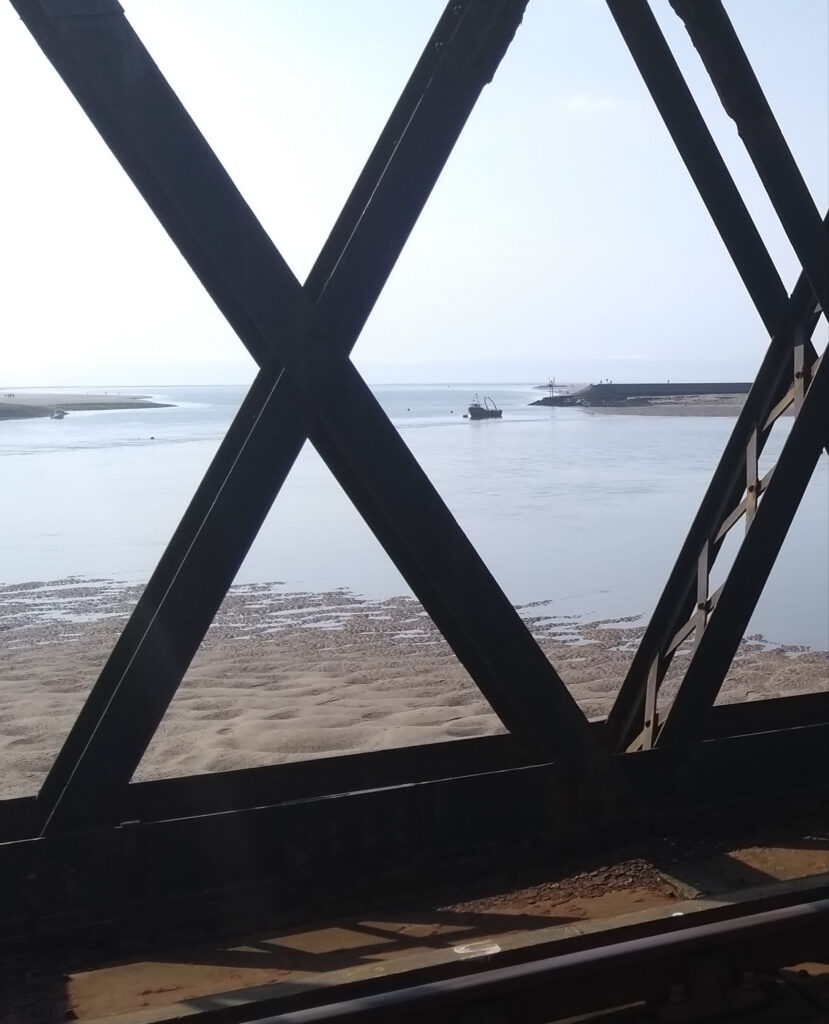
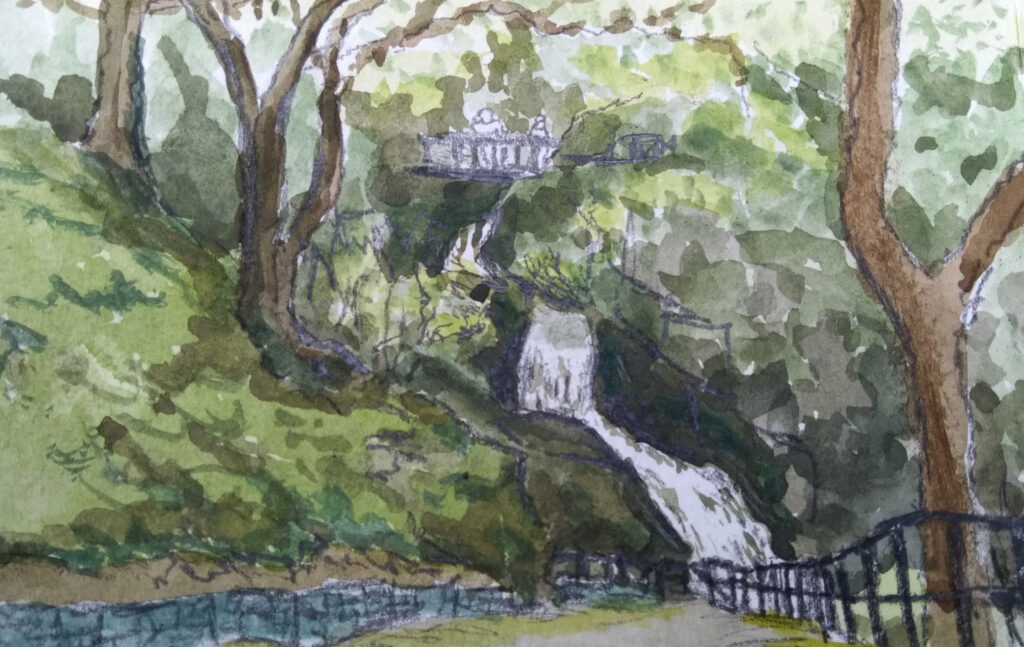
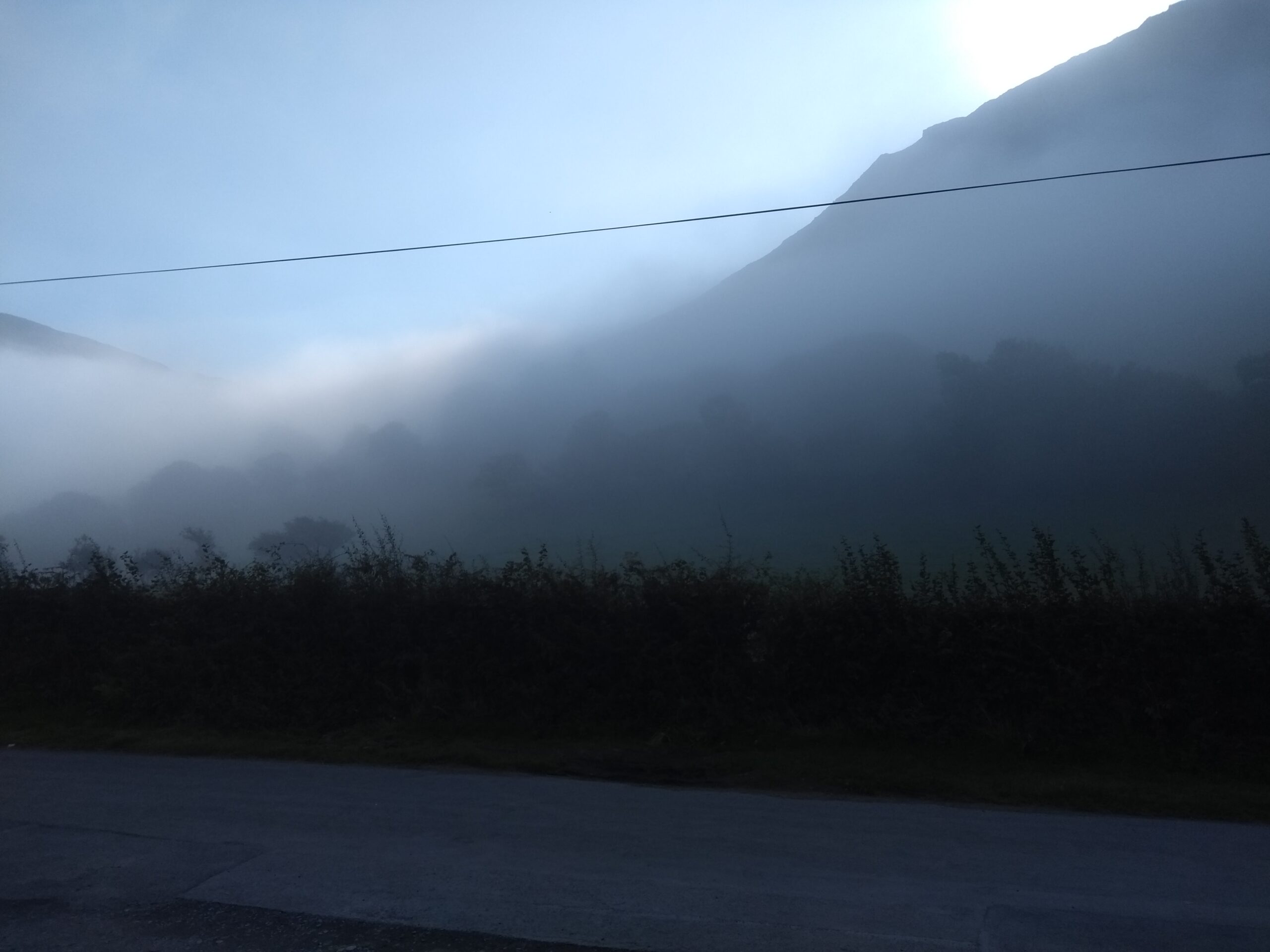
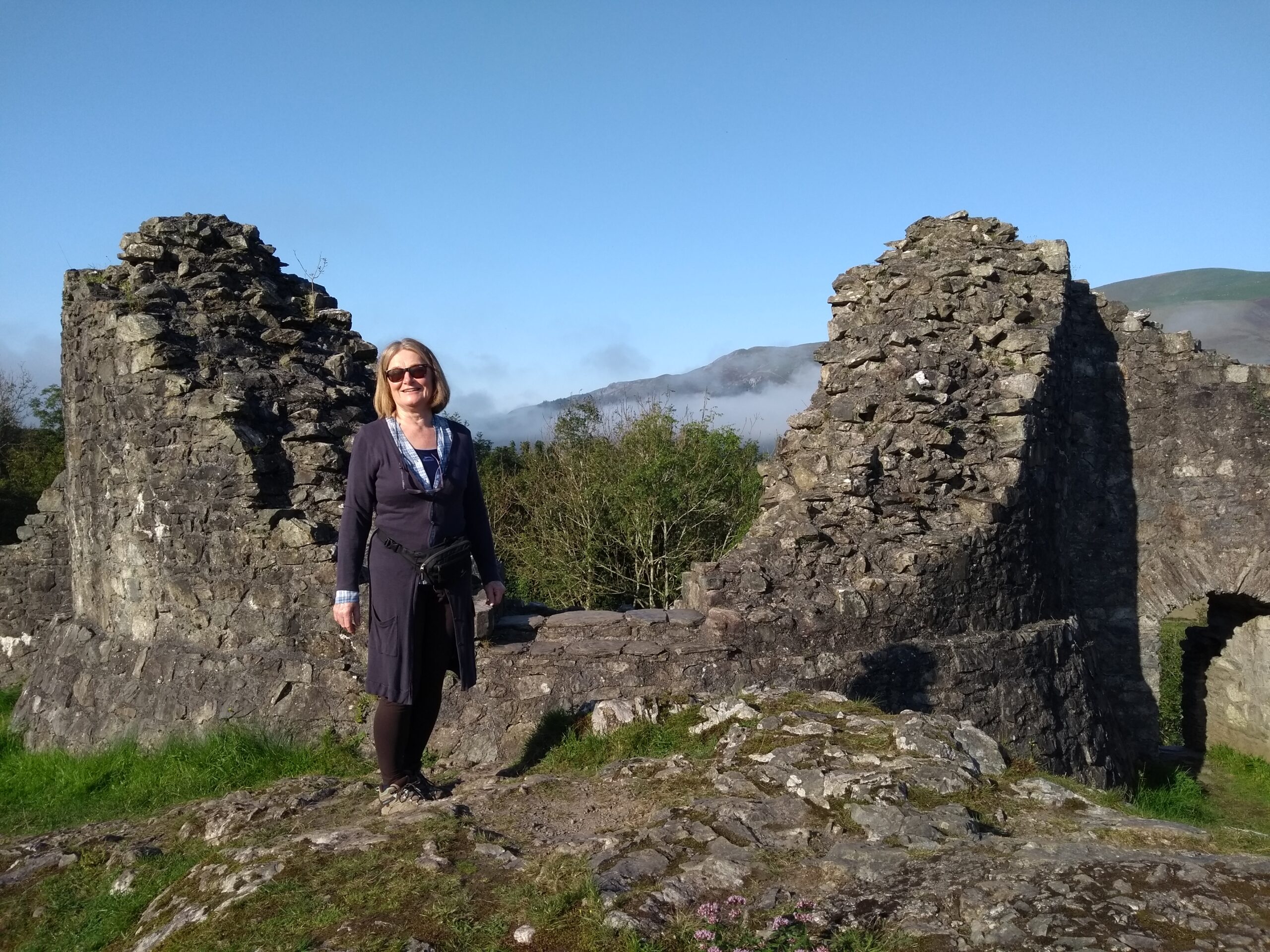
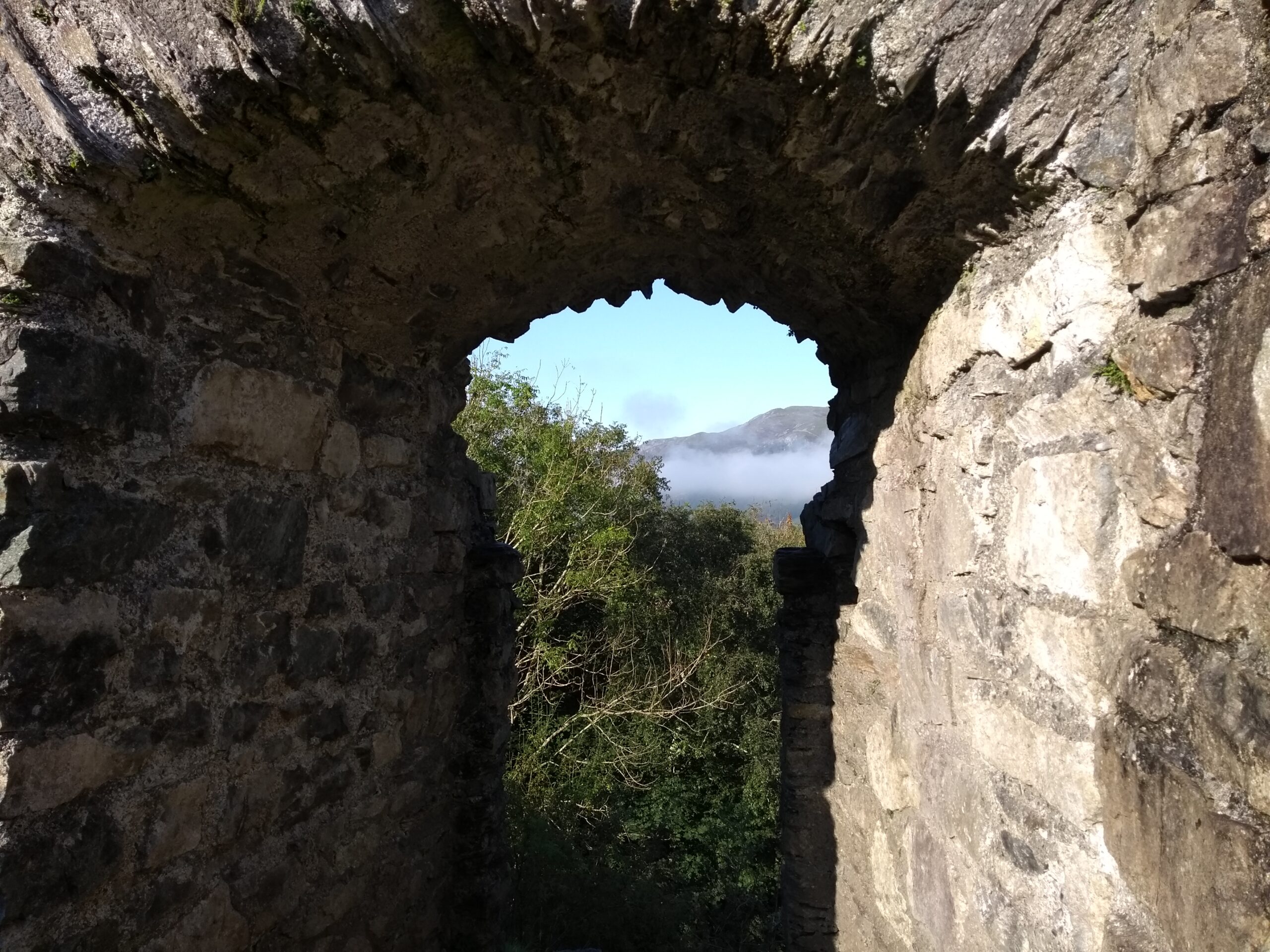
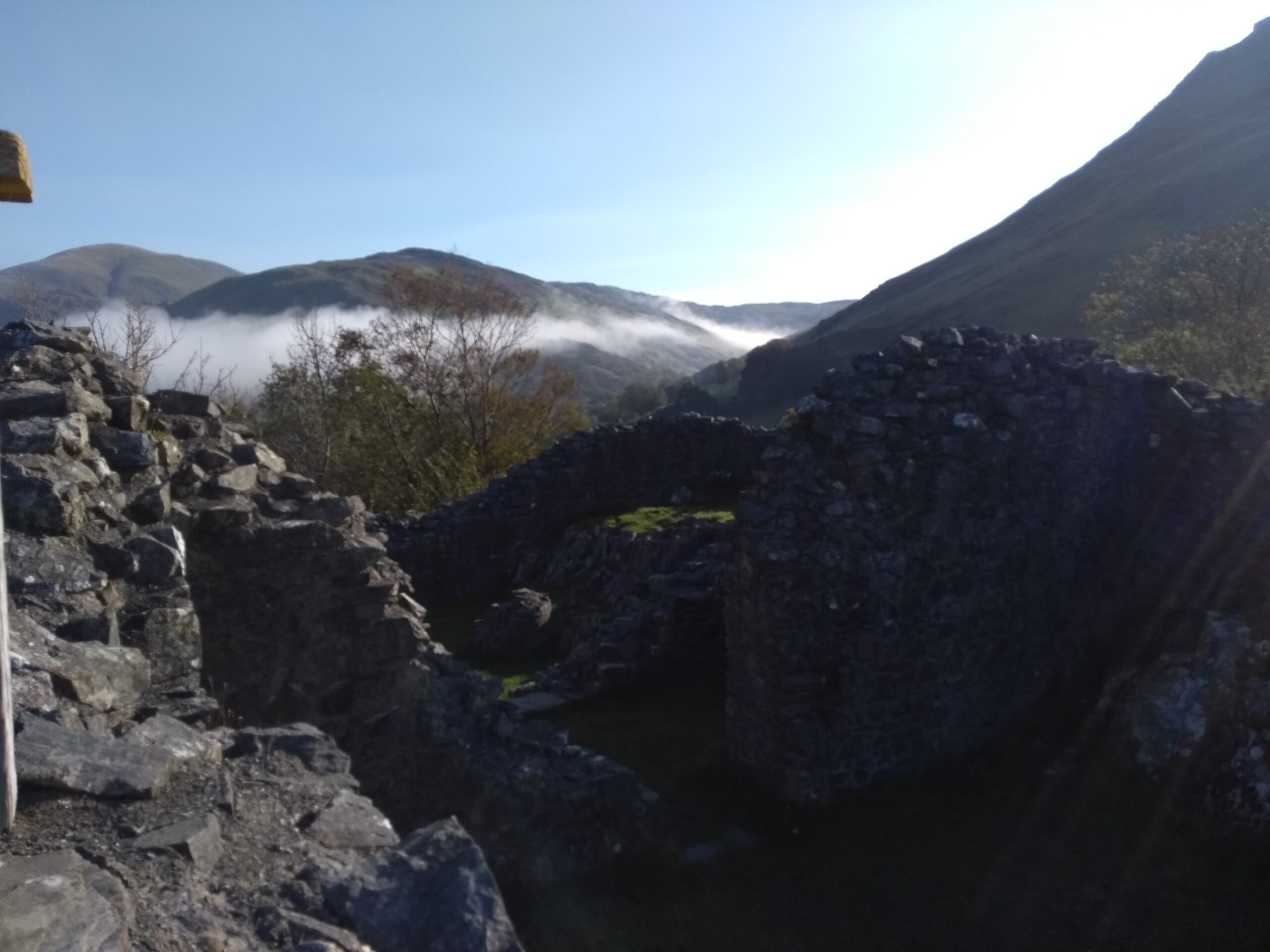
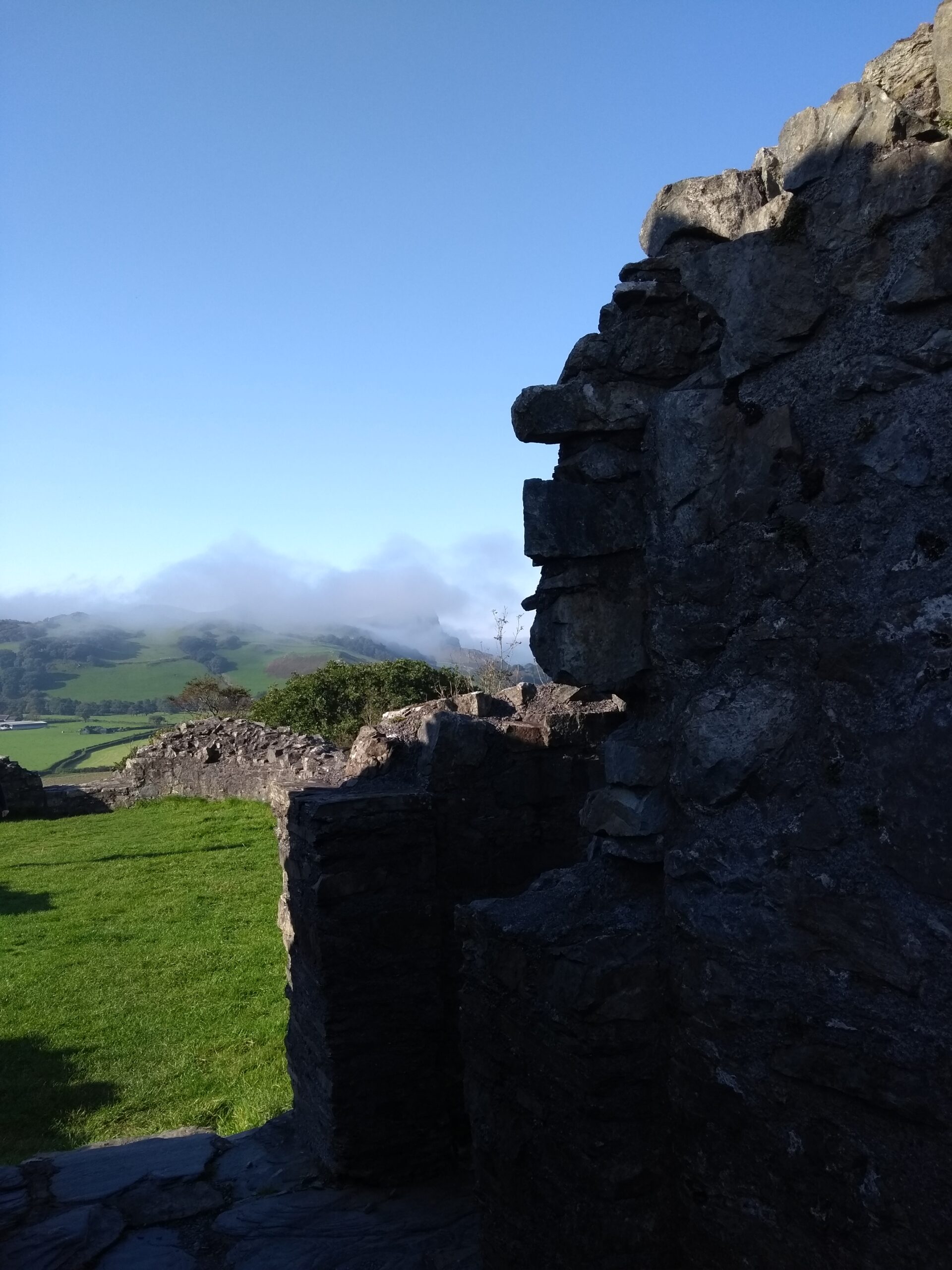
My first time away from West Yorkshire since lockdown. We were down near Aberdyfi, walking, swimming, cycling, relaxing. Ruth went up Cadyr Idris and had other adventures while I sketched. - Video Tour
Made earlier this year, before a lot of flowers came out and in low detail to get it up here, but this helps in envisaging that odd garden shape. - This one we didn’t grow

Apart from Ruth’s gardening knees and the Parasol mushroom, there is a lot in this picture. That is next door but one in the background, we planted the tree fairly recently, Ruth is actually sitting on an access path to keep this deliberate wildness controlled and we get a vast range of fungi because of the wild woodland and the cuttings ‘brash’ that we tuck around the place. We could, but didn’t eat the mushroom by the way. - Cuttings and more cuttings
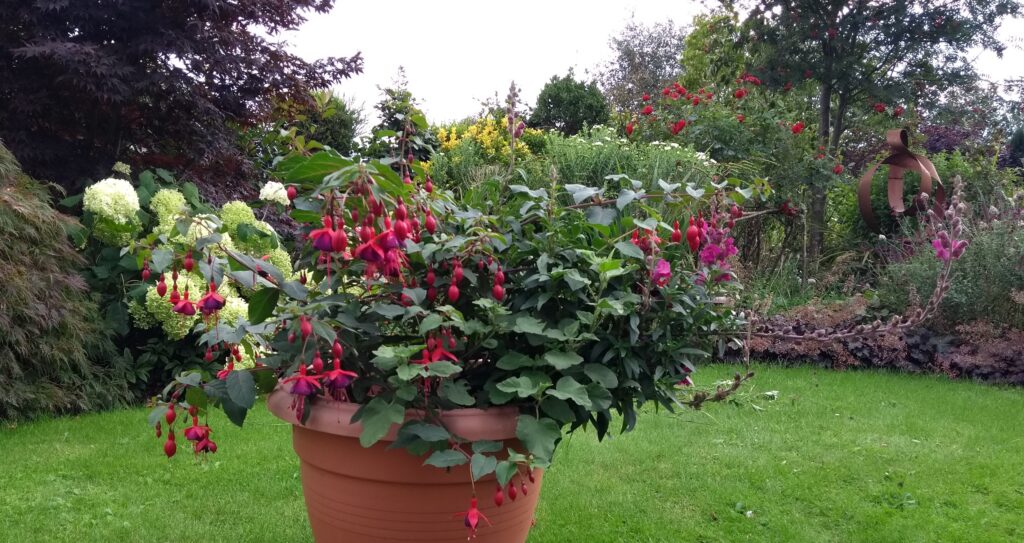
Once we were given a small fuschia in a pot. Like most other plants in the garden, its clones are now all over the place. Cuttings can be quite technical, but I always recommend that you take a lot of soft bits, medium bits and hard bits, remove most of the lower leaves and stick them in a spare bit of garden whenever you are pruning. I usually works. - Sulking Sunflowers
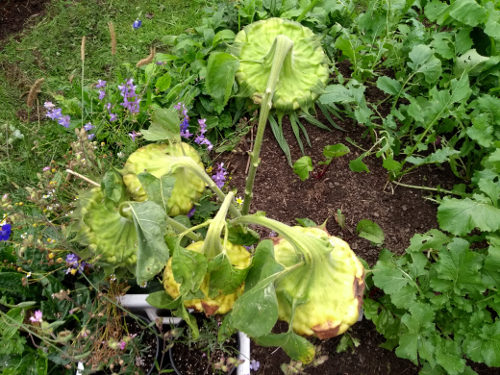
End of the season and these sunflowers have decided to hide
- Sundown September 2020
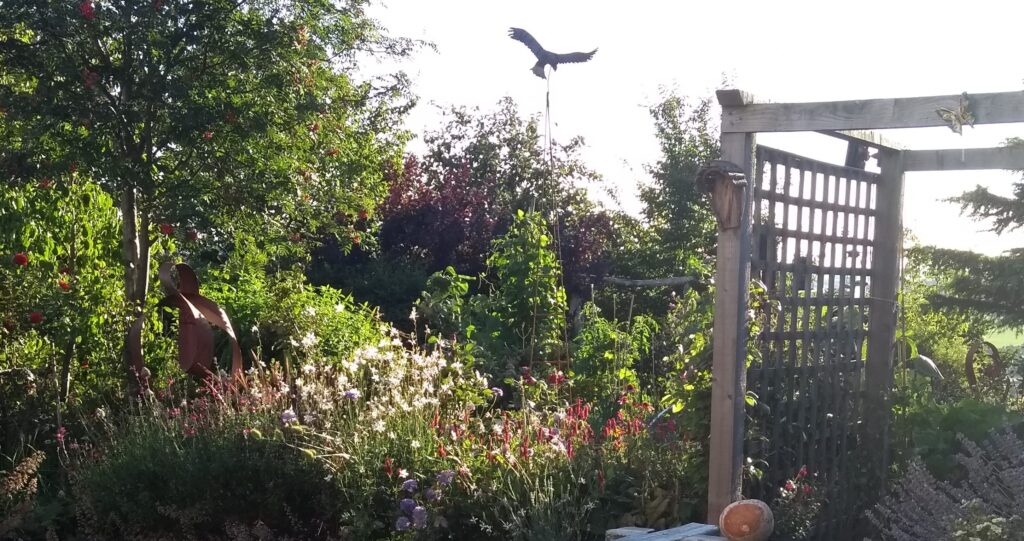
A well deserved cup of tea at the end of the day and sit and enjoy the latest version of the close view.
